

Arabic
FOR
DUMmIES
‰
by Amine Bouchentouf
01_772704 ffirs.qxp 3/23/06 9:34 PM Page i

Arabic For Dummies
®
Published by
Wiley Publishing, Inc.
111 River St.
Hoboken, NJ 07030-5774
Copyright © 2006 by Wiley Publishing, Inc., Indianapolis, Indiana
Published by Wiley Publishing, Inc., Indianapolis, Indiana
Published simultaneously in Canada
No part of this publication may be reproduced, stored in a retrieval system, or transmitted in any form or
by any means, electronic, mechanical, photocopying, recording, scanning, or otherwise, except as permit-
ted under Sections 107 or 108 of the 1976 United States Copyright Act, without either the prior written
permission of the Publisher, or authorization through payment of the appropriate per-copy fee to the
Copyright Clearance Center, 222 Rosewood Drive, Danvers, MA 01923, 978-750-8400, fax 978-646-8600.
Requests to the Publisher for permission should be addressed to the Legal Department, Wiley Publishing,
Inc., 10475 Crosspoint Blvd., Indianapolis, IN 46256, 317-572-3447, fax 317-572-4355, or online at
http://
www.wiley.com/go/permissions
.
Trademarks: Wiley, the Wiley Publishing logo, For Dummies, the Dummies Man logo, A Reference for the
Rest of Us!, The Dummies Way, Dummies Daily, The Fun and Easy Way, Dummies.com and related trade
dress are trademarks or registered trademarks of John Wiley & Sons, Inc. and/or its affiliates in the United
States and other countries, and may not be used without written permission. All other trademarks are the
property of their respective owners. Wiley Publishing, Inc., is not associated with any product or vendor
mentioned in this book.
LIMIT OF LIABILITY/DISCLAIMER OF WARRANTY: THE PUBLISHER AND THE AUTHOR MAKE NO REP-
RESENTATIONS OR WARRANTIES WITH RESPECT TO THE ACCURACY OR COMPLETENESS OF THE
CONTENTS OF THIS WORK AND SPECIFICALLY DISCLAIM ALL WARRANTIES, INCLUDING WITHOUT
LIMITATION WARRANTIES OF FITNESS FOR A PARTICULAR PURPOSE. NO WARRANTY MAY BE CRE-
ATED OR EXTENDED BY SALES OR PROMOTIONAL MATERIALS. THE ADVICE AND STRATEGIES CON-
TAINED HEREIN MAY NOT BE SUITABLE FOR EVERY SITUATION. THIS WORK IS SOLD WITH THE
UNDERSTANDING THAT THE PUBLISHER IS NOT ENGAGED IN RENDERING LEGAL, ACCOUNTING, OR
OTHER PROFESSIONAL SERVICES. IF PROFESSIONAL ASSISTANCE IS REQUIRED, THE SERVICES OF A
COMPETENT PROFESSIONAL PERSON SHOULD BE SOUGHT. NEITHER THE PUBLISHER NOR THE
AUTHOR SHALL BE LIABLE FOR DAMAGES ARISING HEREFROM. THE FACT THAT AN ORGANIZATION
OR WEBSITE IS REFERRED TO IN THIS WORK AS A CITATION AND/OR A POTENTIAL SOURCE OF FUR-
THER INFORMATION DOES NOT MEAN THAT THE AUTHOR OR THE PUBLISHER ENDORSES THE
INFORMATION THE ORGANIZATION OR WEBSITE MAY PROVIDE OR RECOMMENDATIONS IT MAY
MAKE. FURTHER, READERS SHOULD BE AWARE THAT INTERNET WEBSITES LISTED IN THIS WORK
MAY HAVE CHANGED OR DISAPPEARED BETWEEN WHEN THIS WORK WAS WRITTEN AND WHEN IT
IS READ.
For general information on our other products and services, please contact our Customer Care
Department within the U.S. at 800-762-2974, outside the U.S. at 317-572-3993, or fax 317-572-4002.
For technical support, please visit
www.wiley.com/techsupport
.
Wiley also publishes its books in a variety of electronic formats. Some content that appears in print may
not be available in electronic books.
Library of Congress Control Number: 2006920607
ISBN-13: 978-0-471-77270-5
ISBN-10: 0-471-77270-4
Manufactured in the United States of America
10 9 8 7 6 5 4 3 2 1
1B/RT/QU/QW/IN
01_772704 ffirs.qxp 3/23/06 9:34 PM Page ii

About the Author
Amine Bouchentouf is a native English, Arabic, and French speaker born and
raised in Casablanca, Morocco. Amine has been teaching Arabic and lectur-
ing about relations between America and the Arab world in his spare time for
over 4 years and has offered classes and seminars for students at Middlebury
College, the Council on Foreign Relations, and various schools across the
United States. He runs and maintains the Web site www.al-baab.com
(which means “gateway” in Arabic).
Amine graduated from Middlebury College and has always been interested
in promoting better relations between the West and the Middle East through
dialogue and mutual understanding. Amine published his first book, Arabic:
A Complete Course (Random House), soon after graduating college in order
to help Americans understand Arabic language and culture. He has written
Arabic For Dummies in an attempt to reach an even wider audience with the
aim of fostering better relations through education.
He holds a degree in Economics from Middlebury and has extensive experi-
ence in the arena of international investing. He is a registered investment
advisor and is a member of the National Association of Securities Dealers.
Amine is currently working on his third book, Investing in Commodities For
Dummies (Wiley Publishing).
Amine is an avid traveler and has visited over 15 countries across the Middle
East, Europe, and North and South America. Aside from his interest in lan-
guages, business, and travel, Amine enjoys biking, rollerblading, playing
guitar, chess, and golf. He lives in New York City.
01_772704 ffirs.qxp 3/23/06 9:34 PM Page iii

01_772704 ffirs.qxp 3/23/06 9:34 PM Page iv

Dedication
This book is dedicated to my greatest and most steadfast supporters — my
family. To my mother for her infinite and unwavering support, and to my
sister, Myriam, for her enthusiasm and passion — you are my greatest
inspirations.
To my father and grandfather, may you rest in peace, thank you for instilling
in me such a deep respect and awareness of my roots and culture. I am hon-
ored to be part of the Bouchentouf family.
And to my grandmother, who recently passed away, thanks for always believ-
ing in me.
Author’s Acknowledgments
This book would not have been possible without the guidance and input from
the wonderful folks at Wiley Publishing. It has been an honor to work with a
team that adheres to the highest standards of professionalism.
First, I would like to thank Kathy Cox, my acquisitions editor, whose insight
into the Dummies methodology has been invaluable to me, and for her tire-
less dedication to this book. To Tim Gallan, my project editor, for his patient,
thorough and insightful guidance. And to my copy editor, Elizabeth Rea, for
her detailed and meticulous review of the manuscript. Also, thanks to
Courtney Allen who helped us get the ball rolling in the early stages of the
project. I have thoroughly enjoyed working with such a wonderful team.
Special thanks to Ben Smith from Harvard University’s Center for Middle
Eastern Studies for agreeing to serve as technical reviewer of the text. His
comments have ensured that the translation of the text adhered to the high-
est degree of linguistic accuracy.
I would also like to extend a special thanks to my agent, Mark Sullivan, whose
dedication and hard work is exemplary. I’m proud to have someone so dili-
gent and persistent representing me. Merci.
Also, thanks to my wonderful Arabic students at the Council on Foreign
Relations: Mehlaqa, Danna, Mary, Mark, and Evan who helped me challenge
myself and become a better communicator. And a special thanks to the hard-
working folks at the ABC Language Exchange and to everyone at my alma
mater, Middlebury College, for their enthusiasm and support of this project.
Finally, thank you to everyone who has supported me throughout this writing
period. I would not have been able to do this without your precious support.
01_772704 ffirs.qxp 3/23/06 9:34 PM Page v

Publisher’s Acknowledgments
We’re proud of this book; please send us your comments through our Dummies online registration
form located at www.dummies.com/register/.
Some of the people who helped bring this book to market include the following:
Acquisitions, Editorial, and
Media Development
Senior Project Editor: Tim Gallan
Acquisitions Editor: Kathleen M. Cox
Copy Editor: Elizabeth Rea
Editorial Program Coordinator: Hanna K. Scott
Technical Editor: Benjamin Smith
Editorial Manager: Christine Meloy Beck
Editorial Assistants: Nadine Bell, Erin Calligan,
David Lutton
Cartoons: Rich Tennant (www.the5thwave.com)
Composition Services
Project Coordinator: Adrienne Martinez
Layout and Graphics: Mary J. Gillot,
Joyce Haughey, Stephanie D. Jumper,
Melanee Prendergast, Julie Trippetti,
Erin Zeltner
Proofreaders: Henry Lazarek, Joe Niesen,
Christine Pingleton
Indexer: Steve Rath
Publishing and Editorial for Consumer Dummies
Diane Graves Steele, Vice President and Publisher, Consumer Dummies
Joyce Pepple, Acquisitions Director, Consumer Dummies
Kristin A. Cocks, Product Development Director, Consumer Dummies
Michael Spring, Vice President and Publisher, Travel
Kelly Regan, Editorial Director, Travel
Publishing for Technology Dummies
Andy Cummings, Vice President and Publisher, Dummies Technology/General User
Composition Services
Gerry Fahey, Vice President of Production Services
Debbie Stailey, Director of Composition Services
01_772704 ffirs.qxp 3/23/06 9:34 PM Page vi

Contents at a Glance
Introduction .................................................................1
Part I: Getting Started ..................................................7
Chapter 1: You Already Know a Little Arabic .................................................................9
Chapter 2: The Nitty-Gritty: Basic Arabic Grammar ....................................................19
Chapter 3: ‘as-salaamu ‘alaykum!: Greetings and Introductions ................................49
Part II: Arabic in Action..............................................59
Chapter 4: Getting to Know You: Making Small Talk ....................................................61
Chapter 5: This Is Delicious! Eating In and Dining Out ................................................81
Chapter 6: Going Shopping .............................................................................................99
Chapter 7: Around Town ...............................................................................................121
Chapter 8: Enjoying Yourself: Recreation....................................................................143
Chapter 9: Talking on the Phone ..................................................................................155
Chapter 10: At the Office and Around the House .......................................................167
Part III: Arabic on the Go..........................................187
Chapter 11: Money, Money, Money ..............................................................................189
Chapter 12: Asking for Directions ................................................................................205
Chapter 13: Staying at a Hotel.......................................................................................217
Chapter 14: Getting from Here to There: Transportation .........................................239
Chapter 15: Planning a Trip...........................................................................................261
Chapter 16: Handling an Emergency ............................................................................281
Part IV: The Part of Tens ...........................................293
Chapter 17: Ten Ways to Pick Up Arabic Quickly.......................................................295
Chapter 18: Ten Things You Should Never Do in an Arab Country .........................299
Chapter 19: Ten Favorite Arabic Expressions.............................................................305
Chapter 20: Ten Great Arabic Proverbs.......................................................................311
Part V: Appendixes ...................................................315
Appendix A: Verb Tables ...............................................................................................317
Appendix B: Arabic-English Mini-Dictionary ..............................................................331
Appendix C: Answer Key ...............................................................................................345
Appendix D: About the CD ............................................................................................351
Index .......................................................................353
02_772704 ftoc.qxp 3/23/06 9:31 PM Page vii

02_772704 ftoc.qxp 3/23/06 9:31 PM Page viii

Table of Contents
Introduction..................................................................1
About This Book...............................................................................................1
Conventions Used in This Book .....................................................................2
What I Assume About You...............................................................................3
How This Book Is Organized...........................................................................3
Part I: Getting Started ............................................................................3
Part II: Arabic in Action .........................................................................4
Part III: Arabic on the Go .......................................................................4
Part IV: The Part of Tens........................................................................4
Part V: Appendixes.................................................................................4
Icons Used in This Book..................................................................................4
Where to Go from Here....................................................................................5
Part I: Getting Started ...................................................7
Chapter 1: You Already Know a Little Arabic . . . . . . . . . . . . . . . . . . . . . .9
Taking Stock of What’s Familiar .....................................................................9
Discovering the Arabic Alphabet .................................................................11
All about vowels ...................................................................................11
All about consonants ...........................................................................14
Speaking Arabic Like a Native ......................................................................18
Addressing Arabic Transcription.................................................................18
Chapter 2: The Nitty-Gritty: Basic Arabic Grammar . . . . . . . . . . . . . . .19
Introducing Nouns, Adjectives, and Articles ..............................................19
Getting a grip on nouns .......................................................................20
Identifying adjectives...........................................................................21
Discovering definite and indefinite articles
(and the sun and moon) ..................................................................24
Understanding the interaction between nouns and adjectives .....26
Creating Simple, Verb-Free Sentences .........................................................28
To be or not to be: Sentences without verbs....................................28
Building sentences with common prepositions ...............................30
Using demonstratives and forming sentences .................................32
Forming “to be” sentences using personal pronouns .....................34
Creating negative “to be” sentences ..................................................36
“To be” in the past tense .....................................................................37
Working with Verbs ........................................................................................38
Digging up the past tense ....................................................................38
Examining the present tense...............................................................41
02_772704 ftoc.qxp 3/23/06 9:31 PM Page ix

Arabic For Dummies
x
Peeking into the future tense ..............................................................44
Examining irregular verb forms..........................................................45
Chapter 3: ‘as-salaamu ‘alaykum!: Greetings and Introductions . . . .49
Greetings! ........................................................................................................49
You say hello . . . ...................................................................................50
. . . I say goodbye ..................................................................................51
How are you doing?..............................................................................51
I’m doing well! .......................................................................................52
Making Introductions.....................................................................................53
Asking “What’s your name?” ...............................................................54
Responding with the possessive “My name is . . .” ..........................54
Saying “It’s a pleasure to meet you!”..................................................54
Talking About Countries and Nationalities .................................................55
Asking “Where are you from?” ............................................................55
Telling where “I am from . . .” ..............................................................55
Part II: Arabic in Action ..............................................59
Chapter 4: Getting to Know You: Making Small Talk . . . . . . . . . . . . . .61
Asking Key Questions ....................................................................................62
Talking About Yourself and Your Family .....................................................64
Making Small Talk on the Job .......................................................................68
Talking About Hobbies ..................................................................................70
Shooting the Breeze: Talking About the Weather ......................................71
Talking Numbers ............................................................................................74
Referring to Days and Months......................................................................76
Chapter 5: This Is Delicious! Eating In and Dining Out . . . . . . . . . . . .81
All About Meals ..............................................................................................81
Breakfast................................................................................................82
Lunch .....................................................................................................87
Dinner ....................................................................................................92
Enjoying a Meal at Home...............................................................................92
Dining Out .......................................................................................................93
Perusing the menu ...............................................................................93
Placing your order................................................................................95
Finishing your meal and paying the bill ............................................97
Chapter 6: Going Shopping . . . . . . . . . . . . . . . . . . . . . . . . . . . . . . . . . . . .99
Going to the Store ..........................................................................................99
Browsing the merchandise................................................................100
Getting around the store ...................................................................101
Getting to know the verb “to search” ..............................................104
02_772704 ftoc.qxp 3/23/06 9:31 PM Page x

Asking for a Particular Item ........................................................................105
Comparing Merchandise .............................................................................109
Comparing two or more items ..........................................................109
Picking out the best item...................................................................111
More Than a Few Words About Buying and Selling .................................114
Shopping for Clothes ...................................................................................116
Chapter 7: Around Town . . . . . . . . . . . . . . . . . . . . . . . . . . . . . . . . . . . . . .121
Telling Time in Arabic..................................................................................121
Specifying the time of day .................................................................123
Specifying minutes .............................................................................124
Visiting Museums .........................................................................................128
Going to the Movies .....................................................................................135
Touring Religious Sites ................................................................................138
A few rules to keep in mind...............................................................138
The Hajj................................................................................................139
Chapter 8: Enjoying Yourself: Recreation . . . . . . . . . . . . . . . . . . . . . . .143
Starting Out with the Verbs fa’ala (Did) and yaf’alu (To Do)..................143
Sporting an Athletic Side.............................................................................145
Going to the Beach.......................................................................................149
Playing Musical Instruments ......................................................................151
Popular Hobbies...........................................................................................152
Chapter 9: Talking on the Phone . . . . . . . . . . . . . . . . . . . . . . . . . . . . . . .155
Dialing Up the Basics ...................................................................................155
Beginning a phone conversation ......................................................156
Asking to speak to someone .............................................................157
Making Plans Over the Phone.....................................................................158
Making social plans ............................................................................158
Making business appointments ........................................................160
Leaving a Message .......................................................................................162
Dealing with voice mail......................................................................162
Leaving a message with a person.....................................................163
Chapter 10: At the Office and Around the House . . . . . . . . . . . . . . . . .167
Landing the Perfect Job...............................................................................167
Managing the Office Environment..............................................................170
Interacting with your colleagues ......................................................172
Giving orders.......................................................................................177
Supplying your office .........................................................................178
Life at Home ..................................................................................................181
xi
Table of Contents
02_772704 ftoc.qxp 3/23/06 9:31 PM Page xi

Arabic For Dummies
xii
Part III: Arabic on the Go ..........................................187
Chapter 11: Money, Money, Money . . . . . . . . . . . . . . . . . . . . . . . . . . . .189
At the Bank....................................................................................................189
Opening a bank account ....................................................................190
Making deposits and withdrawals....................................................198
Using the ATM...............................................................................................198
Exchanging Currency...................................................................................199
Getting to know the currencies around the world .........................199
Making exchanges ..............................................................................200
Chapter 12: Asking for Directions . . . . . . . . . . . . . . . . . . . . . . . . . . . . . .205
Focusing on the “Where”.............................................................................205
Asking “where” questions .................................................................205
Answering “where” questions...........................................................206
Getting Direction About Directions ...........................................................207
Asking for directions..........................................................................207
Could you repeat that? ......................................................................209
Using command forms .......................................................................212
Discovering Ordinal Numbers ....................................................................214
Chapter 13: Staying at a Hotel . . . . . . . . . . . . . . . . . . . . . . . . . . . . . . . . .217
Choosing the Right Accommodation.........................................................217
Discussing minor room details .........................................................220
Getting to know direct object pronouns .........................................223
Making a Reservation ..................................................................................224
Figuring out the price ........................................................................224
Indicating the length of your stay ....................................................228
Subjecting you to subjunctive verbs ...............................................230
Checking in to the Hotel..............................................................................232
Checking Out of the Hotel ...........................................................................235
Chapter 14: Getting from Here to There: Transportation . . . . . . . . . . .239
Traveling by Plane .......................................................................................239
Making reservations...........................................................................240
Getting some legwork out of the verb “to travel” ..........................243
Registering at the airport ..................................................................244
Boarding the plane .............................................................................246
A brief departure on the verb “to arrive”........................................248
Going through immigration and customs .......................................249
Getting Around on Land ..............................................................................253
Hailing a taxi........................................................................................254
Taking a bus ........................................................................................255
Boarding a train ..................................................................................257
02_772704 ftoc.qxp 3/23/06 9:31 PM Page xii

Chapter 15: Planning a Trip . . . . . . . . . . . . . . . . . . . . . . . . . . . . . . . . . . .261
Choosing Your Destination .........................................................................261
Picking the Right Time for Your Trip .........................................................269
The months of the year .....................................................................269
Dates and ordinal numbers...............................................................270
Tackling Packing...........................................................................................273
Preparing Your Travel Documents.............................................................274
Using a Travel Agency .................................................................................278
Chapter 16: Handling an Emergency . . . . . . . . . . . . . . . . . . . . . . . . . . .281
Shouting Out for Help ..................................................................................281
A little help with the verb “to help” .................................................283
Lending a hand ...................................................................................284
Getting Medical Help ...................................................................................286
Locating the appropriate doctor ......................................................286
Talking about your body ...................................................................286
Explaining your symptoms ...............................................................287
Getting treatment ...............................................................................288
Acquiring Legal Help....................................................................................290
Part IV: The Part of Tens ............................................293
Chapter 17: Ten Ways to Pick Up Arabic Quickly . . . . . . . . . . . . . . . .295
Watch Arabic Television..............................................................................295
Use the Dictionary .......................................................................................296
Read Arabic Newspapers ............................................................................296
Surf the Internet ...........................................................................................297
Use a Language Tape or CD ........................................................................297
Listen to Arabic Music.................................................................................297
Make Arabic-Speaking Friends ...................................................................298
Watch Arabic Movies ...................................................................................298
Eat at a Middle Eastern Restaurant ...........................................................298
Sing Arabic Songs.........................................................................................298
Chapter 18: Ten Things You Should Never Do
in an Arab Country . . . . . . . . . . . . . . . . . . . . . . . . . . . . . . . . . . . . . . . . . . .299
Don’t Shake Hands with a Firm Grip..........................................................299
Don’t Enter a Room Full of People Without Saying
“‘as-salaamu ‘alaykum” ............................................................................300
Don’t Start Eating Before Saying “bismi allah” .........................................300
If You’re Not Muslim, Don’t Enter a Mosque Without Explicit
Authorization ............................................................................................300
Don’t Enter a Mosque with Your Shoes On...............................................301
Don’t Eat or Drink During Ramadan ..........................................................301
xiii
Table of Contents
02_772704 ftoc.qxp 3/23/06 9:31 PM Page xiii

Arabic For Dummies
xiv
Don’t Drink Alcohol During Ramadan .......................................................302
Don’t Drink Alcohol in Public .....................................................................302
Don’t Engage in Public Displays of Affection............................................302
Don’t Refuse a Gift If One Is Offered to You ..............................................303
Chapter 19: Ten Favorite Arabic Expressions . . . . . . . . . . . . . . . . . . . .305
marHaba bikum! ...........................................................................................305
mumtaaz! .......................................................................................................306
al-Hamdu li-llah.............................................................................................306
inshaa’ allah ..................................................................................................307
mabruk!..........................................................................................................308
bi ‘idni allah ..................................................................................................308
bi SaHHa ........................................................................................................308
taHiyyaat .......................................................................................................309
muballagh......................................................................................................309
tabaaraka allah .............................................................................................309
Chapter 20: Ten Great Arabic Proverbs . . . . . . . . . . . . . . . . . . . . . . . . .311
al-’amthaal noor al-kalaam. .........................................................................311
‘a’mal khayr wa ‘ilqahu fii al-baHr. .............................................................311
‘uTlubuu al-’ilm min al-mahd ‘ilaa al-laHd.................................................312
yad waaHida maa tusaffiq. ..........................................................................312
al-Harbaa’ laa Yughaadir shajaratuh hattaa yakun mu’akkid
‘an shajara ‘ukhraa. ..................................................................................312
khaTa’ ma’roof ‘aHsan min Haqiiqa ghayr ma’roofa................................312
as-sirr mithel al-Hamaama: ‘indamaa yughaadir yadii yaTiir. ................313
al-’aql li an-niDHaar wa al-kalb li as-simaa’. ..............................................313
kul yawm min Hayaatuk SafHa min taariikhuk. ........................................313
li faatik bi liila faatik bi Hiila........................................................................314
Part V: Appendixes ....................................................315
Appendix A: Verb Tables . . . . . . . . . . . . . . . . . . . . . . . . . . . . . . . . . . . . .317
Appendix B: Mini-Dictionary . . . . . . . . . . . . . . . . . . . . . . . . . . . . . . . . .331
Appendix C: Answer Key . . . . . . . . . . . . . . . . . . . . . . . . . . . . . . . . . . . . .345
Appendix D: About the CD . . . . . . . . . . . . . . . . . . . . . . . . . . . . . . . . . . . .351
Index........................................................................353
02_772704 ftoc.qxp 3/23/06 9:31 PM Page xiv

Introduction
A
rabic, the official language of over 20 countries, is the mother tongue of
over 300 million people. It’s spoken throughout the Middle East, from
Morocco to Iraq. Additionally, because Arabic is the language of the Koran
and Islam, it’s understood by more than 1.2 billion people across the world.
Due to recent geopolitical events, Arabic has catapulted to the top of the list
of important world languages. Even in countries where Arabic isn’t the offi-
cial language, people are scrambling to master this important and vital global
language.
For people in North America and Europe, at first glance Arabic seems like a
difficult language to master; after all, it isn’t a Romance language and doesn’t
use the Latin alphabet. However, like any other language, Arabic is governed
by a set of rules, and when you master these rules, you’re able to speak
Arabic like a native speaker!
Arabic For Dummies is designed to identify and explain the rules that govern
the Arabic language in the easiest and most interactive way possible. I orga-
nize each chapter in a straightforward and coherent manner and present the
material in an interactive and engaging way.
About This Book
Unlike most books on the Arabic language, Arabic For Dummies is designed in a
way that gives you the most accurate and in-depth information available on the
composition of the language. The book is modular in nature; every chapter is
organized in such a way that you don’t have to read the whole book in order to
understand the topic that’s discussed. Feel free to jump through chapters and
sections to suit your specific needs. Also, every grammatical and linguistic
point is explained in plain English so that you can incorporate the concept
immediately. I took great care to explain every concept clearly and succinctly.
To provide the best foundation and the widest usage for students of Arabic,
Arabic For Dummies focuses on Modern Standard Arabic (MSA), which is the
most widely used form of Arabic in the world. There are basically three differ-
ent types of Arabic: Koranic Arabic, local dialects, and MSA.
03_772704 intro.qxp 3/23/06 9:32 PM Page 1

⻬ Koranic Arabic is the Arabic used to write the Koran, the holy book for
Muslims. This form of Arabic is very rigid and hasn’t changed much since
the Koran was written approximately 1,500 years ago. Koranic Arabic is
widely used in religious circles for prayer, discussions of Islamic issues,
and serious deliberations. Its usage is limited primarily within a strict
religious context. It’s the equivalent of Biblical English.
⻬ The regional dialects are the most informal type of Arabic. They tend
to fall into three geographical categories: the North African dialect
(Morocco, Algeria, Tunisia, and Libya); the Egyptian dialect (Egypt, parts
of Syria, Palestine, and Jordan); and Gulf Arabic (Saudi Arabia, Kuwait,
Iraq, Qatar, and the United Arab Emirates). Even though the words are
pronounced differently and some of the everyday expressions differ
dramatically from region to region, speakers from different regions can
understand each other. The common denominator for the regional
dialects is that they’re all based on MSA.
⻬ Modern Standard Arabic (MSA) is the most widely used and under-
stood form of Arabic in the world. It’s less rigid than Koranic Arabic
but a bit more formal than the local dialects. MSA is the language that
Arabic anchors use to present the news, professionals use to discuss
business and technical issues, and friends and families use to socialize
with one another.
Conventions Used in This Book
Throughout the book, each new Arabic word appears in boldface, followed
by its proper pronunciation and its English equivalent in parentheses.
Because this is a language book, I include some sections to help you master
the linguistic concepts with greater ease. Here’s a description of the specialty
sections you find in each chapter:
⻬ Talkin’ the Talk dialogues: Here’s where you get to see Arabic in action.
These common Arabic dialogues show you how to use important vocab-
ulary words and terms you should be aware of. Select Talkin’ the Talk
dialogues have accompanying audio versions on the book’s CD.
⻬ Words to Know blackboards: An important part of mastering a new
language is becoming familiar with important words and phrases. Key
terms that I recommend you memorize are included in these sections,
which present the transcription of the Arabic word, the pronunciation,
and the translation.
⻬ Fun & Games activities: The aim of Arabic For Dummies is to help you
master the Arabic language in an interactive and engaging way. With that
in mind, each chapter ends with a Fun & Games that lets you review the
key concept covered in the chapter in a fun but effective way.
2
Arabic For Dummies
03_772704 intro.qxp 3/23/06 9:32 PM Page 2

What I Assume About You
In writing Arabic For Dummies, I made the following assumptions about my
likely readers:
⻬ You’ve had very little exposure (or none at all) to the Arabic language.
⻬ You’re interested in mastering Arabic for either personal or professional
reasons.
⻬ You want to be able to speak a few words and phrases so that you can
communicate basic information in Arabic.
⻬ You’ve been exposed to Arabic but are interested in brushing up on your
language skills.
⻬ You’re not looking for a dry book on Arabic grammar; you want to dis-
cover Arabic in a fun and engaging manner.
⻬ You’re looking for a practical course that will have you speaking basic
Arabic in no time!
How This Book Is Organized
Arabic For Dummies is organized into five different parts, with each part
divided into chapters. The following part descriptions give you a heads-up on
what to expect in each part.
Part I: Getting Started
The first part of Arabic For Dummies is a must-read if you’ve never been
exposed to Arabic. I introduce the Arabic script and present the 28 letters of
the Arabic alphabet before explaining the difference between consonants and
vowels, which have a very peculiar relationship in Arabic. In addition, in this
part you get a detailed and thorough overview of Arabic grammatical and lin-
guistic constructs; for instance, you find out how nouns, verbs, and adjec-
tives interact with each other to create phrases and sentences. Finally, you
discover some of the most basic forms of greetings and are introduced to
basic words and phrases.
Part II: Arabic in Action
This part exposes you to key words and phrases that allow you to interact
with Arabic-speaking folks in a variety of different settings (such as in a
3
Introduction
03_772704 intro.qxp 3/23/06 9:32 PM Page 3

restaurant, around town, at the office, or even at the mall). You discover how
to make small talk and how to ask for basic information about people you
speak to, such as their names, where they’re from, and their occupations.
Part III: Arabic on the Go
This part gives you the tools you need to take Arabic on the road with you.
Find out how to open a bank account, how to plan a trip, how to make a
reservation at a hotel, and how to ask for directions.
Part IV: The Part of Tens
The chapters in this part share some of the nonverbal methods of communica-
tion that help you to better interact with Arabic-speaking people. For example,
you discover ten of the greatest Arabic proverbs, and you find out proper ways
to interact with people if you’re in an Arabic-speaking country. I also share my
recommendations on the best ways to acquire Arabic as quickly as possible.
Part V: Appendixes
This part is a useful reference if you need information quickly. One of the
appendixes in this part is a detailed list of regular and irregular verbs to help
you conjugate verbs in the past, present, and future tenses. I also include a
mini-dictionary in both Arabic–English and English–Arabic formats for quick
reference. Finally, you find an appendix that guides you through the audio
tracks on the CD.
Icons Used in This Book
In order to help you get in and get out of this book easily and efficiently, I use
icons (little pictures) that identify important pieces of information by cate-
gory. The following icons appear in this book:
When you see this icon, make sure you read carefully. It points to information
that will directly improve your Arabic language skills.
I use this icon to bring to your attention to information that you definitely
want to keep in mind when studying and practicing Arabic.
4
Arabic For Dummies
03_772704 intro.qxp 3/23/06 9:32 PM Page 4

Discovering a new language can be a wonderful experience. However, there
are always potential pitfalls to avoid, whether grammatical, linguistic, or
cultural. This icon points out important notions about Arabic that may trip
you up.
Grammar is the glue that binds a language together. Even though this isn’t a
grammar book, it does include important grammar lessons you need to be
aware of. This icon is attached to major grammar points that will help you
master the Arabic language.
This icon points out nonverbal methods of communication common in
Arabic-speaking countries and among Arabic speakers. I use this icon to fill
the gap between language and culture so that you know the cultural contexts
in which you can use newly discovered words and phrases.
Just about every chapter of this book contains Talkin’ the Talk sections with
real-world conversations and dialogues. Some of these dialogues are included
as audio tracks on the CD that accompanies the book. When you come across
this icon, pop in your CD and listen to the conversation as you read along.
Where to Go from Here
This book is organized so that you can jump around from topic to topic. You
don’t have to read the whole thing. Want to know how to ask for directions in
Arabic? Jump to Chapter 12. Need to exchange money in an Arabic country?
Check out Chapter 11. Care to venture into the realm of Arabic grammar?
Chapter 2 is for you.
5
Introduction
03_772704 intro.qxp 3/23/06 9:32 PM Page 5

6
Arabic For Dummies
03_772704 intro.qxp 3/23/06 9:32 PM Page 6

Part I
Getting Started
04_772704 pt01.qxp 3/23/06 9:28 PM Page 7

In this part . . .
I
introduce the Arabic script and present the 28 letters
of the Arabic alphabet before explaining the difference
between consonants and vowels, which have a very pecu-
liar relationship in Arabic. In addition, in this part you get a
detailed and thorough overview of Arabic grammatical and
linguistic constructs. You find out how nouns, verbs, and
adjectives interact with each other to create phrases and
sentences. Finally, you discover some of the most basic
forms of greetings and are introduced to basic words and
phrases.
04_772704 pt01.qxp 3/23/06 9:28 PM Page 8

Chapter 1
You Already Know a Little Arabic
In This Chapter
䊳
Discovering English words that come from Arabic
䊳
Figuring out the Arabic alphabet
䊳
Sounding like a native speaker
m
arHaba (mahr-hah-bah; welcome) to the wonderful world of Arabic!
Arabic is the official language of over 20 countries and is spoken by
more than 300 million people across the globe! It’s the language in which the
Koran, the Holy Book in Islam, was revealed and written, and a large majority
of the over 1.3 billion Muslims across the world study Arabic in order to read
the Koran and to fulfill their religious duties. By speaking Arabic, you get
access to people and places from Morocco to Indonesia. (For more on
Arabic’s role in history, see the sidebar “Arabic’s historical importance.”)
In this chapter, I ease you into Arabic by showing you some familiar English
words that trace their roots to Arabic. You discover the Arabic alphabet and
its beautiful letters, and I give you tips on how to pronounce those letters so
that you can sound like a native speaker! Part of exploring a new language is
discovering a new culture and a new way of looking at things, so in this first
chapter of Arabic For Dummies, you begin your discovery of Arabic and its
unique characteristics.
Taking Stock of What’s Familiar
If English is your primary language, part of grasping a new lougha (loo-rah;
language) is creating connections between the kalimaat (kah-lee-maht; words)
of the lougha, in this case Arabic, and English. You may be surprised to hear
that quite a few English words trace their origins to Arabic. For example, did
you know that “magazine,” “candy,” and “coffee” are actually Arabic words?
Table 1-1 lists some familiar English words with Arabic origins.
05_772704 ch01.qxp 3/23/06 9:28 PM Page 9

Table 1-1
Arabic Origins of English Words
English
Arabic Origin
Arabic Meaning
admiral
amir al-baHr
Ruler of the Sea
alcohol
al-kuHul
a mixture of powdered antimony
alcove
al-qubba
a dome or arch
algebra
al-jabr
to reduce or consolidate
almanac
al-manakh
a calendar
arsenal
daar As-SinaaH
house of manufacture
azure
al-azward
lapis lazuli
candy
qand
cane sugar
coffee
qahwa
coffee
cotton
quTun
cotton
elixir
al-iksiir
philosopher’s stone
gazelle
ghazaal
gazelle
hazard
az-zahr
dice
magazine
al-makhzan
a storehouse; a place of storage
mattress
matraH
a place where things are thrown
ream
rizma
a bundle
saffron
za’fran
saffron
Sahara
SaHraa’
desert
satin
zaytuun
Arabic name for a Chinese city
10
Part I: Getting Started
Arabic’s historical importance
During the Middle Ages, when Europe was
plunged into the Dark Ages, Arab scholars and
historians translated and preserved most of the
works of the Greek scholars, thereby preserving
some of the greatest intellectual achievements
that are the cornerstone of Western civilization!
05_772704 ch01.qxp 3/23/06 9:28 PM Page 10

English
Arabic Origin
Arabic Meaning
sherbet
sharaba
to drink
sofa
Sofaa
a cushion
sugar
sukkar
sugar
zero
Sifr
zero
As you can see from the table, Arabic has had a major influence on the English
language. Some English words such as “admiral” and “arsenal” have an indirect
Arabic origin, whereas others, such as “coffee” and “cotton,” are exact
matches! The influence runs the other way, too, especially when it comes to
relatively contemporary terms. For example, the word tilifizyuun (tee-lee-fee-
zee-yoon; television) comes straight from the word “television.” As is often the
case with languages, Arabic and English tend to influence each other, and that’s
what makes studying them so much fun!
Discovering the Arabic Alphabet
Unlike English and other Romance languages, you write and read Arabic from
right to left. Like English, Arabic has both vowels and consonants, but the
vowels in Arabic aren’t actual letters. Rather, Arabic vowels are symbols that
you place on top of or below consonants to create certain sounds. As for con-
sonants, Arabic has 28 different consonants, and each one is represented by
a letter. In order to vocalize these letters, you place a vowel above or below
the particular consonant. For example, when you put a fatHa, a vowel repre-
senting the “ah” sound, above the consonant representing the letter “b,” you
get the sound “bah.” When you take the same consonant and use a kasra,
which represents the “ee” sound, you get the sound “bee.”
All about vowels
Arabic has three main vowels. Luckily, they’re very simple to pronounce
because they’re similar to English vowels. However, it’s important to realize
that Arabic also has vowel derivatives that are as important as the main
vowels. These vowel derivatives fall into three categories: double vowels, long
vowels, and diphthongs. In this section, I walk you through all the different
vowels, vowel derivatives, and vowel combinations.
11
Chapter 1: You Already Know a Little Arabic
05_772704 ch01.qxp 3/23/06 9:28 PM Page 11

Main vowels
The three main Arabic vowels are:
⻬ fatHah: The first main vowel in Arabic is called a fatHa (feht-hah). A fatHa
is the equivalent of the short “a” in “hat” or “cat.” Occasionally, a fatHa
also sounds like the short “e” in “bet” or “set.” Much like the other vowels,
the way you pronounce a fatHa depends on what consonants come before
or after it. In Arabic script, the fatHa is written as a small horizontal line
above a consonant. In English transcription, which I use in this book, it’s
simply represented by the letter “a,” as in the words kalb (kah-leb; dog) or
walad (wah-lahd; boy).
⻬ damma: The second main Arabic vowel is the damma (dah-mah). A
damma sounds like the “uh” in “foot” or “book.” In Arabic script, it’s
written like a tiny backward “e” above a particular consonant. In English
transcription, it’s represented by the letter “u,” as in funduq (foon-dook;
hotel) or suHub (soo-hoob; clouds).
⻬ kasra: The third main vowel in Arabic is the kasra (kahs-rah), which
sounds like the long “e” in “feet” or “treat.” The kasra is written the
same way as a fatHa — as a small horizontal line — except that it goes
underneath the consonant. In English transcription, it’s written as an “i,”
as in bint (bee-neht; girl) or ‘islaam (ees-lahm; Islam).
Double vowels
One type of vowel derivative is the double vowel, which is known in Arabic as
tanwiin (tahn-ween). The process of tanwiin is a fairly simple one: Basically,
you take a main vowel and place the same vowel right next to it, thus creating
two vowels, or a double vowel. The sound that the double vowel makes
depends on the main vowel that’s doubled. Here are all possible combina-
tions of double vowels:
⻬ Double fatHa: tanwiin with fatHa creates the “an” sound, as in ‘ahlan
wa sahlan (ahel-an wah sahel-an; Hi).
⻬ Double damma: tanwiin with damma creates the “oun” sound. For
example, kouratoun (koo-rah-toon; ball) contains a double damma.
⻬ Double kasra: tanwiin with kasra makes the “een” sound, as in SafHatin
(sahf-hah-teen; page).
Long vowels
Long vowels are derivatives that elongate the main vowels. Seeing as Arabic
is a very poetic and musical language, I believe a musical metaphor is in
order here! Think of the difference between long vowels and short (main)
vowels in terms of a musical beat, and you should be able to differentiate
between them much easier. If a main vowel lasts for one beat, then its long
vowel equivalent lasts for two beats. Whereas you create double vowels by
12
Part I: Getting Started
05_772704 ch01.qxp 3/23/06 9:28 PM Page 12

writing two main vowels next to each other, you create long vowels by adding
a letter to one of the main vowels. Each main vowel has a corresponding con-
sonant that elongates it. Here are a few examples to help you get your head
around this long-vowel process:
⻬ To create a long vowel form of a fatHa, you attach an ‘alif to the conso-
nant that the fatHa is associated with. In English transcription, the long
fatHa form is written as “aa,” such as in kitaab (kee-taab; book) or baab
(bahb; door). The “aa” means that you hold the vowel sound for two
beats as opposed to one.
⻬ The long vowel form of damma is obtained by attaching a waaw to
the consonant with the damma. This addition elongates the vowel “uh”
into a more pronounced “uu,” such as in nuur (noohr; light) or ghuul
(roohl; ghost). Make sure you hold the “uu” vowel for two beats and
not one.
⻬ To create a long vowel form of a kasra, you attach a yaa’ to the conso-
nant with the kasra. Just as the ‘alif elongates the fatHa and the waaw
elongates the damma, the yaa’ elongates the kasra. Some examples
include the “ii” in words like kabiir (kah-beer; big) and Saghiir (sah-reer;
small).
The Arabic characters for the long vowels are shown in Table 1-2.
Table 1-2
Arabic Vowel Characters
Arabic
Name of the
Explanation
Character
Character
‘alif
To create a long vowel form of a fatHa
waaw
To create a long vowel form of a damma
yaa’
To create a long vowel form of a kasra
Diphthongs
Diphthongs in Arabic are a special category of vowels because, in essence,
they’re monosyllabic sounds that begin with one vowel and “glide” into
another vowel. A common example in English is the sound at the end of the
word “toy.” Fortunately, Arabic has only two diphthong sounds used to dis-
tinguish between the yaa’ (
) and the waaw (
) forms of long vowels. When
you come across either of these two letters, one of the first questions to ask
yourself is: “Is this a long vowel or a diphthong?” There’s an easy way to
determine which is which: When either the yaa’ or the waaw is a diphthong,
you see a sukun (soo-koon) above the consonant. A sukun is similar to the
main vowels in that it’s a little symbol (a small circle) that you place above
13
Chapter 1: You Already Know a Little Arabic
05_772704 ch01.qxp 3/23/06 9:28 PM Page 13

the consonant. However, unlike the vowels, you don’t vocalize the sukun —
it’s almost like a “silent” vowel. So when a waaw or yaa’ has a sukun over it,
you know that the sound is a diphthong! Here are some examples:
⻬ waaw diphthongs: yawm (yah-oom; day); nawm (nah-oom; sleep); Sawt
(sah-oot; noise)
⻬ yaa’ diphthongs: bayt (bah-yet; house); ‘ayn (ah-yen; eye); layla (lah-ye-
lah; night)
All about consonants
Arabic uses 28 different consonants, and each consonant is represented by a
different letter. Because the Arabic alphabet is written in cursive, most of the
letters connect with each other. For this reason, every single letter that repre-
sents a consonant actually can be written four different ways depending on
its position in a word — whether it’s in the initial, medial, or final positions,
or whether it stands alone. In English transcription of the Arabic script, all
letters are case-sensitive.
Thankfully, most of the consonants in Arabic have English equivalents.
Unfortunately, a few Arabic consonants are quite foreign to nonnative speak-
ers. Table 1-3 shows all 28 Arabic consonants, how they’re written in Arabic,
how they’re transcribed in English, and how they sound. This table can help
you pronounce the letters so that you sound like a native speaker!
Table 1-3
Arabic Consonants
Arabic
Name of the Pronunciation
Sounds Like . . .
Example
Character
Letter
‘alif (‘a)
ah-leef
Sounds like the “a”
‘ab (
ah-b;
in “apple”
father)
baa’ (b)
bah
Sounds like the “b”
baab
in “boy”
(
bahb;
door)
taa’ (t)
tah
Sounds like the “t”
tilmiidh
in “table”
(
teel-
meez; stu-
dent)
thaa’ (th)
thah
Sounds like the “th”
thalaatha
in “think”
(
thah-lah-
thah;
three)
14
Part I: Getting Started
05_772704 ch01.qxp 3/23/06 9:28 PM Page 14

Arabic
Name of the Pronunciation
Sounds Like . . .
Example
Character
Letter
jiim (j)
jeem
Sounds like the “j”
jamiil
in “measure”
(jah-meel;
pretty)
Haa’ (H)
hah
No equivalent in English;
Harr
imagine the sound you
(
hah-r; hot)
make when you want to
blow on your reading
glasses to clean them;
that soft, raspy noise
that comes out is the
letter Haa’.
khaa’ (kh)
khah
Sounds a lot like
khuukh
“Bach” in German or
(
kh-oo-kh;
“Baruch” in Hebrew
peach)
daal (d)
dahl
Sounds like the “d”
daar
in dog
(
dah-r;
house)
dhaal (dh)
dhahl
Sounds like the “th”
dhahab
in “those”
(
thah-hab;
gold)
raa’ (r)
rah
Like the Spanish “r,”
rajul (
rah-
rolled really fast
jool; man)
zaay (z)
zay
Sounds like the “z”
zawja
in “zebra”
(
zah-oo-ja;
wife)
siin (s)
seen
Sounds like the “s”
samak
in “snake”
(
sah-
mahk; fish)
shiin (sh)
sheen
Sounds like the “sh”
shams
in “sheep”
(
shah-
mes; sun)
Saad (S)
sahd
A very deep “s” sound
Sadiiq
you can make if you open (
sah-deek;
your mouth really wide
friend)
and lower your jaw
(continued)
15
Chapter 1: You Already Know a Little Arabic
05_772704 ch01.qxp 3/23/06 9:29 PM Page 15

Table 1-3
(continued)
Arabic
Name of the Pronunciation
Sounds Like . . .
Example
Character
Letter
Daad (D)
dahd
A very deep “d” sound;
Dabaab
the exact same sound
(
dah-
as a Saad except that
bahb; fog)
you use a “d” instead
of an “s”
Taa’ (T)
tah
A deep “t” sound; start
Tabiib
off by saying a regular
(
tah-beeb;
“t” and then lower your
doctor)
mouth to make it rounder
DHaa’ (DH)
dhah
Take the “th” as in
DHahr
“those” and draw it to
(
dha-her;
the back of your throat
back)
‘ayn (‘)
ayen
No equivalent in any of
iraaq
the Romance languages;
(
ee-rahk;
produced at the very back Iraq)
of the throat. Breathe
heavily and consistently
through your esophagus
and then intermittently
choke off the airflow so
that you create a staccato
noise
ghayn (gh)
ghayen
Sounds like the French “r” ghariib
in “rendezvous”; it’s
(
rah-reeb;
created at the back of
strange)
the throat
faa’ (f)
fah
Sounds like the “f” in
funduq
“Frank”
(
foon-
dook;
hotel)
qaaf (q)
qahf
Similar to the letter “k,”
qahwa
but produced much
(
kah-wah;
farther at the back of the
coffee)
throat; you should feel
airflow being constricted
at the back of your throat
16
Part I: Getting Started
05_772704 ch01.qxp 3/23/06 9:29 PM Page 16

Arabic
Name of the Pronunciation
Sounds Like . . .
Example
Character
Letter
kaaf (k)
kahf
Sounds like the “k” in
kutub
“keeper”
(
koo-toob;
books)
laam (l)
lahm
Sounds like the “l” in
lisaan
“llama”
(
lee-sahn;
tongue)
miim (m)
meem
Sounds like the “m”
Makhzan
in “Mary”
(
mah-
khzan;
storehouse)
nuun (n)
noon
Sounds like the “n”
naDHiif
in “no”
(
nah-dheef;
clean)
haa’ (h)
haah
Created by exhaling
huwa
heavily; very different
(
hoo-wah;
from the Haa’ earlier in
him)
the list. (Think of yourself
as a marathon runner
who’s just finished a long
race and is breathing
heavily through the
lungs to replenish your
oxygen.)
waaw (w)
wahw
Sounds like the “w”
waziir
in “winner”
(
wah-zeer;
minister)
yaa’ (y)
yaah
Sounds like the “y”
yamiin
in “yes”
(
yah-meen;
right)
So there you have it — all 28 different consonants in the Arabic alphabet! To
sound as fluent as possible, memorize as many of the letters as you can and
try to associate each letter with the Arabic words in which it appears. The
trick to getting the pronunciation of some of these more exotic Arabic sounds
is repetition, repetition, and even more repetition! That old saying, “Practice
makes perfect” certainly applies to Arabic.
17
Chapter 1: You Already Know a Little Arabic
05_772704 ch01.qxp 3/23/06 9:29 PM Page 17

Speaking Arabic Like a Native
In this section, I share a couple of tricks to help you focus on pronunciation
of difficult letters that, if you can master, are sure to make you sound like a
native speaker! Here are some difficult letters and some related words you
should familiarize yourself with:
⻬ Haa’: Hamraa’ (hahm-raah; red); Hassan (hah-san; man’s name); Hiwaar
(hee-war; conversation); Haziin (hah-zeen; sad)
⻬ ‘ayn: ‘ajiib (ah-jeeb; amazing); ‘aziima (ah-zee-mah; determination);
‘ariiD (ah-reed; wide)
⻬ qaaf: qif (kee-f; stop); qird (kee-red; monkey); qaws (kah-wes; bow)
⻬ ghayn: ghaDbaan (rad-bahn; angry); ghurfa (goor-fah; room); ghadan
(rah-dan; tomorrow)
The difference between native Arabic speakers and nonnatives is enuncia-
tion. If you can enunciate your letters clearly — particularly the more difficult
ones — you’ll sound like you’re fluent! Practice these words over and over
until you feel comfortable repeating them really quickly and very distinctly.
With practice, you’ll sound more like a native and less like someone who’s
just trying to pick up the language! Plus, memorizing these words not only
helps with your pronunciation but also helps build your vocabulary!
Addressing Arabic Transcription
The transcription I use in this book is a widely used and universally recog-
nized method of transcribing Arabic to English. Students of Arabic across the
United States and around the world use this method. It’s very helpful for
beginners because it allows you to speak the language without actually know-
ing how to read Arabic script.
In the transcription method used in this book, every letter in Arabic is repre-
sented by a letter in Roman script. It’s important to note that this method is
case-sensitive, which means that a lowercase Roman letter represents a dif-
ferent letter in the Arabic script than a capital Roman letter.
Transcription is a very helpful tool for beginners, but it’s recommended that
intermediate and advanced students of Arabic master the fundamentals of
the Arabic script.
18
Part I: Getting Started
05_772704 ch01.qxp 3/23/06 9:29 PM Page 18

Chapter 2
The Nitty-Gritty: Basic Arabic
Grammar
In This Chapter
䊳
Playing around with nouns and adjectives
䊳
Getting specific with definite and indefinite articles
䊳
Forming simple sentences
䊳
Getting to know Arabic verbs
G
rammar is the foundation of any language. It’s the glue that binds all the
different elements of language together and allows us to communicate
using a defined set of rules. Because grammar is so important, this chapter
gives you an overview of the major grammatical concepts in the Arabic lan-
guage, from the basic parts of speech (nouns, adjectives, articles, and verbs)
to instructions on how to build both simple and descriptive sentences using
common regular and irregular verbs. In addition, I introduce prepositions,
demonstratives, and other parts of speech that will help you create phrases
and sentences and, in general, express yourself in Arabic.
As you work through different chapters and sections of Arabic For Dummies,
if you’re ever unsure of how to proceed with a sentence formation, simply flip
back to this chapter and review the grammar details that apply to your ques-
tion. You’ll be all set!
Introducing Nouns, Adjectives,
and Articles
Nouns and adjectives are two of the most essential elements in any language.
Nouns in Arabic, much like in English and other Romance languages, are
the parts of speech used to name a person, place, thing, quality, or action.
06_772704 ch02.qxp 3/23/06 9:32 PM Page 19

Adjectives, on the other hand, are the parts of speech that modify nouns.
Although nouns and adjectives go hand in hand, the best way to understand
how they work in Arabic is to address each one separately.
Getting a grip on nouns
In Arabic, every noun has a masculine, feminine, singular, and plural form.
Table 2-1 lists some common Arabic nouns. You’ll notice that I’ve listed both
singular and plural forms of some nouns as well as masculine (M) and femi-
nine (F) forms of others.
Table 2-1
Common Nouns in Arabic
Arabic
Pronunciation
Translation
walad
wah-lad
boy
‘awlaad
aw-lad
boys
bint
bee-net
girl
banaat
bah-nat
girls
rajul
rah-jool
man
rijaal
ree-jal
men
‘imra’a
eem-rah-ah
woman
nisaa’
nee-sah
women
tilmiidh
teel-meez
student (M)
tilmiidha
teel-mee-zah
student (F)
mudarris
moo-dah-rees
teacher (M)
mudarrisa
moo-dah-ree-sah
teacher (F)
Taalib
tah-leeb
college student (M)
Taaliba
tah-lee-bah
college student (F)
‘ustaadh
oos-taz
professor (M)
‘ustaadha
oos-tah-zah
professor (F)
madrasa
mad-rah-sah
school
jaami’a
jah-mee-ah
university
kulliyya
koo-lee-yah
college
20
Part I: Getting Started
06_772704 ch02.qxp 3/23/06 9:32 PM Page 20

Arabic
Pronunciation
Translation
kitaab
kee-tab
book
Taawila
tah-wee-lah
table
sayyaara
sah-yah-rah
car
Identifying adjectives
In Arabic, an adjective must be in agreement with the noun it modifies in
both gender and plurality. Table 2-2 presents some common adjectives in
both the feminine and masculine forms.
Table 2-2
Common Adjectives in Arabic
Arabic
Pronunciation
Translation
kabiir
kah-beer
big (M)
kabiira
kah-bee-rah
big (F)
Saghiir
sah-geer
small (M)
Saghiira
sah-gee-rah
small (F)
Tawiil
tah-weel
tall (M)
Tawiila
tah-wee-lah
tall (F)
qaSiir
kah-seer
short (M)
qaSiira
kah-see-rah
short (F)
jamiil
jah-meel
beautiful/handsome (M)
jamiila
jah-mee-lah
beautiful/pretty (F)
qawiiy
kah-wee
strong (M)
qawiiya
kah-wee-yah
strong (F)
Da’iif
dah-eef
weak (M)
Da’iifa
dah-ee-fah
weak (F)
SaHiiH
sah-heeh
healthy (M)
SaHiiHa
sah-hee-hah
healthy (F)
(continued)
21
Chapter 2: The Nitty-Gritty: Basic Arabic Grammar
06_772704 ch02.qxp 3/23/06 9:32 PM Page 21

Table 2-2
(continued)
Arabic
Pronunciation
Translation
mariiD
mah-reed
sick (M)
mariiDa
mah-ree-dah
sick (F)
dakiiy
dah-kee
smart (M)
dakiiya
dah-kee-yah
smart (F)
ghabiiy
gah-bee
dumb (M)
ghabiiya
gah-bee-yah
dumb (F)
sarii’
sah-reeh
fast (M)
sarii’a
sah-ree-ah
fast (F)
baTii’
bah-teeh
slow (M)
baTii’a
bah-tee-ah
slow (F)
thaqiil
tah-keel
heavy (M)
thaqiila
tah-kee-lah
heavy (F)
khafiif
kah-feef
light (M)
khafiifa
kah-fee-fah
light (F)
Sa’b
sahb
difficult (M)
Sa’ba
sah-bah
difficult (F)
sahl
sah-hel
easy (M)
sahla
sah-lah
easy (F)
laTiif
lah-teef
nice/kind (M)
laTiifa
lah-tee-fah
nice/kind (F)
qabiiH
kah-beeh
ugly (M)
qabiiHa
kah-bee-hah
ugly (F)
‘ajiib
ah-jeeb
amazing (M)
‘ajiiba
ah-jee-bah
amazing (F)
ladhiidh
lah-zeez
delicious (M)
ladhiidha
lah-zee-zah
delicious (F)
22
Part I: Getting Started
06_772704 ch02.qxp 3/23/06 9:32 PM Page 22

Notice that the masculine forms of the adjectives in Table 2-2 are manipulated
slightly to achieve the feminine adjective forms; essentially, all you do is add
the suffix -a to the masculine adjective to obtain its feminine form. This rule
applies to all regular adjective forms.
However, in addition to the regular adjective forms, another category of
adjectives exists in which the masculine and feminine forms are completely
different from each other. This is the irregular adjective form.
Fortunately, all irregular adjectives fall in the same category: color words;
and every color word is an irregular adjective. Put simply, ‘alwaan (al-wan;
colors) in Arabic are all irregular adjectives because the masculine color
form is radically different than its feminine version. Table 2-3 lists the most
common irregular adjectives.
Table 2-3
Irregular Adjectives: Colors
Arabic
Pronunciation
Translation
‘abyaD
ab-yad
white (M)
bayDaa’
bay-dah
white (F)
‘aswad
ass-wad
black (M)
sawdaa’
saw-dah
black (F)
‘azraq
az-rak
blue (M)
zarqaa’
zar-kah
blue (F)
‘akhDar
ak-dar
green (M)
khaDraa’
kad-rah
green (F)
‘aHmar
ah-mar
red (M)
Hamraa’
ham-rah
red (F)
‘aSfar
ass-far
yellow (M)
Safraa’
saf-rah
yellow (F)
‘asmar
ass-mar
brown (M)
samraa’
sam-rah
brown (F)
‘urjuwaaniiy
oor-joo-wah-nee
purple (M)
jurwaaniiya
joor-wah-nee-yah
purple (F)
23
Chapter 2: The Nitty-Gritty: Basic Arabic Grammar
06_772704 ch02.qxp 3/23/06 9:32 PM Page 23

Every lawn (lah-wen; color) in Table 2-3 (as well as the lawn I didn’t have
space to list) must agree in gender with the noun it describes.
One of the biggest differences between adjective and noun interactions in the
English and Arabic languages is that nouns in Arabic come before the adjec-
tives. In English, nouns always come after their adjectives.
Discovering definite and indefinite articles
(and the sun and moon)
A common trait that nouns and adjectives share in the Arabic language is
that both can be modified using definite article prefixes. To refresh your
memory, an article is a part of speech that you use to indicate nouns or adjec-
tives and specify their applications. In English, there are two types of articles:
indefinite and definite articles. The indefinite articles in English are “a” and
“an,” such as in “a book” or “an umbrella.” The definite article is the word
“the,” as in “the book” or “the umbrella.”
Unlike English, Arabic has no outright indefinite article; instead, the indefinite
article in Arabic is always implied. For example, when you say kitaab (kee-
tab; book), you mean both “book” and “a book.” Similarly, madrasa (mad-rah-
sah; school) means both “school” and “a school.” However, Arabic does
employ a definite article, which is the prefix you attach to either the noun or
the adjective you want to define.
The rule
The definite article in Arabic is the prefix al-. When you want to define a noun
or adjective, you simply attach this prefix to the word. For example, “the
book” is al-kitaab, and “the school” is al-madrasa.
The inevitable exceptions
In the examples al-kitaab and al-madrasa, the prefix al- retains its original
form. However, there are exceptions to this rule. Sometimes, the “l” in the
prefix al- drops off and is replaced by a letter similar to the first letter of the
word being defined. For example, the word nuur (noor) means “light” in
Arabic. If you want to say “the light,” you may assume that you simply attach
the prefix al- and get al-nuur. However, that’s not quite right. Instead, the
appropriate way of saying “the light” in Arabic is an-nuur (ah-noor), where
you replace the “l” in al- with the first letter of the definite word, which in this
case is “n.” Another example of this definite article exception is the word
SabaaH (sah-bah), which means “morning.” When you define it, the resulting
word is aS-SabaaH (ah-sah-bah; the morning) and not al-SabaaH.
24
Part I: Getting Started
06_772704 ch02.qxp 3/23/06 9:33 PM Page 24

So how do you know whether to use al- or another definite article prefix
format? The answer’s actually quite simple and has something to do with a
really cool concept. Every single letter in Arabic falls into one of two cate-
gories: sun letters and moon letters. Put simply, every word that begins with
a moon letter gets the prefix al-, and every word that begins with a sun letter
gets the prefix a- followed by its sun letter. Table 2-4 lists all the sun letters.
Every other letter in Arabic is automatically a moon letter.
Table 2-4
The Sun Letters
Arabic
Pronunciation
Translation
taa
t
thaa
th
daal
d
dhaal
dh
raa
r
zay
z
siin
s
shiin
sh
Saad
S
Daad
D
Taa
T
Dhaa
DH
nuun
n
Table 2-5 lists some common nouns and adjectives that are defined. Notice the
difference between the words that begin with sun letters and moon letters.
Table 2-5
Common Definite Nouns and Articles
Arabic
Pronunciation
Translation
al-kitaab
al-kee-tab
the book
al-madrasa
al-mad-rah-sah
the school
al-walad
al-wah-lad
the boy
(continued)
25
Chapter 2: The Nitty-Gritty: Basic Arabic Grammar
06_772704 ch02.qxp 3/23/06 9:33 PM Page 25

Table 2-5
(continued)
al-bint
al-bee-net
the girl
ar-rajul
ah-rah-jool
the man
al-’imra’a
al-eem-rah-ah
the woman
aS-SabaaH
ah-sah-bah
the morning
ash-sham
ah-shah-mes
the sun
al-qamar
al-kah-mar
the moon
al-kabiir
al-kah-beer
the big (one) (M)
aS-Saghiir
ah-sah-geer
the small (one) (M)
as-sarii’
ah-sah-reeh
the fast (one) (M)
al-’azraq
al-az-rak
the blue (one) (M)
az-zarqaa’
ah-zar-kah
the blue (one) (F)
aS-Safraa’
ah-saf-rah
the yellow (one) (F)
aS-Samraa’
ah-sam-rah
the brown (one) (F)
al-ladhiidh
ah-lah-zeez
the delicious (one) (M)
Understanding the interaction between
nouns and adjectives
Nouns and adjectives go hand in hand. In this section, I show you how you can
manipulate nouns and adjectives to create little phrases. Recall that unlike in
the English language, nouns in Arabic always come before the adjective.
You can create three types of phrases by manipulating nouns and adjectives.
This section examines the ways you can pair up nouns and adjectives to
create definite and indefinite phrases. (Later in the chapter, I show you how
to create a complete sentence by simply using a noun and an adjective.)
Indefinite phrases
One of the most important things to remember about nouns and adjectives
in Arabic is that they can be both defined and undefined using the definite
article prefix al-. Hence, to create an indefinite phrase, all you do is take an
undefined noun and add to it an undefined adjective. For example, to say “a
26
Part I: Getting Started
06_772704 ch02.qxp 3/23/06 9:33 PM Page 26

big book” or “big book,” you add the adjective kabiir (kah-beer; big) to the
noun kitaab (kee-tab; book). So the phrase kitaab kabiir means “a big book”
in Arabic. Here are some other examples of indefinite phrases featuring unde-
fined nouns and adjectives:
⻬ walad Tawiil (wah-lad tah-weel; a tall boy)
⻬ bint jamiila (bee-net jah-mee-lah; a pretty girl)
⻬ rajul qawiiy (rah-jool kah-wee; a strong man)
⻬ ‘imra’a laTiifa (eem-rah-ah lah-tee-fah; a nice woman)
⻬ madrasa Saghiira (mad-rah-sah sah-gee-rah; a small school)
⻬ Taawila Hamraa’ (tah-wee-lah ham-rah; a red table)
Notice that the adjectives agree with their corresponding nouns in gender.
For example, you say bint jamiila and not bint jamiil.
Adding more descriptive words to the noun is very simple: Because adjec-
tives follow the noun in Arabic, you just add an extra adjective and you’re
done! But don’t forget to add the conjunction wa (wah; and) between the
adjectives. Check out some examples:
⻬ walad Tawiil wa kabiir (wah-lad tah-weel wah kah-beer; a tall and big boy)
⻬ bint Tawiila wa jamiila (bee-net tah-wee-lah wah jah-mee-lah; a tall and
pretty girl)
⻬ rajul qawiiy wa sarii’ (rah-jool kah-wee wah sah-reeh; a strong and
fast man)
⻬ ‘imra’a laTiifa wa qawiiya (eem-rah-ah lah-tee-fah wah kah-wee-yah; a
nice and strong woman)
⻬ madrasa Saghiira wa bayDaa’ (mad-rah-sah sah-gee-rah wah bay-dah; a
small and white school)
⻬ Taawila Hamraa’ wa qaSiira (tah-wee-lah ham-rah wah kah-see-rah; a red
and short table)
Definite phrases
The biggest difference between creating an indefinite phrase and a definite
phrase is the use of the definite article prefix al-. Both noun and adjective must
be defined using the definite article prefix. For example, to say “the big book,”
you say al-kitaab al-kabiir. Here are some examples of definite phrases:
⻬ al-walad aT-Tawiil (al-wah-lad ah-tah-weel; the big boy)
⻬ al-bint al-jamiila (al-bee-net al-jah-mee-lah; the pretty girl)
⻬ ar-rajul al-qawiiy (ah-rah-jool al-kay-wee; the strong man)
27
Chapter 2: The Nitty-Gritty: Basic Arabic Grammar
06_772704 ch02.qxp 3/23/06 9:33 PM Page 27

⻬ al-‘imra’a al-laTiifa (al-eem-rah-ah ah-lah-tee-fah; the nice woman)
⻬ al-madrasa aS-Saghiira (al-mad-rah-sah ah-sah-gee-rah; the small school)
⻬ aT-Taawila al-Hamraa’ (ah-tah-wee-lah al-ham-rah; the red table)
Using similar patterns, you can create a defined phrase using multiple adjec-
tives. Just like in indefinite phrases, make sure you use the conjunction wa in
between adjectives:
⻬ al-walad aT-Tawiil wa al-kabiir (al-wah-lad ah-tah-weel wah al-kah-beer;
the tall and big boy)
⻬ al-bint aT-Tawiila wa al-jamiila (al-bee-net ah-tah-wee-lah wah al-jah-mee-
lah; the tall and pretty girl)
⻬ ar-rajul al-qawiiy wa as-sarii’ (ah-rah-jool al-kah-wee wah ah-sah-reeh;
the strong and fast man)
⻬ al-‘imra’a al-laTiifa wa al-qawiiya (al-eem-rah-ah al-lah-tee-fah wah al-
kah-wee-yah; the nice and strong woman)
⻬ al-madrasa aS-Saghiira wa al-bayDaa’ (al-mad-rah-sah ah-sah-gee-rah
wah al-bay-dah; the small and white school)
⻬ aT-Taawila al-Hamraa’ wa al-qaSiira (ah-tah-wee-lah al-ham-rah wah al-
kah-see-rah; the red and short table)
Creating Simple, Verb-Free Sentences
There are two ways to form sentences in Arabic: You can manipulate definite
and indefinite nouns and adjectives, or you can pull together nouns, adjec-
tives, and verbs. In Arabic, it’s possible to create a complete sentence with a
subject, object, and verb without actually using a verb! This concept may
seem a little strange at first, but this section helps you quickly see the logic
and reasoning behind such a structure.
To be or not to be: Sentences without verbs
Before you can construct verb-free sentences, you need to know that there’s
actually no “to be” verb in the Arabic language. The verb “is/are” as a proper
verb simply doesn’t exist. That’s not to say that you can’t create an “is/are”
sentence in Arabic — you can. “Is/are” sentences are created without the use
of an actual verb. In other words, you create “to be” sentences by manipulat-
ing indefinite and definite nouns and adjectives, similar to what I cover in the
section “Understanding the interaction between nouns and adjectives” earlier
in this chapter.
28
Part I: Getting Started
06_772704 ch02.qxp 3/23/06 9:33 PM Page 28

When you put an indefinite noun with an indefinite adjective, you create an
indefinite phrase. Similarly, when you add a definite adjective to a definite
noun, you end up with a definite phrase. So what happens when you combine
a definite noun with an indefinite adjective? This combination — defined
noun and undefined adjective — produces an “is/are” sentence similar to
what you get when you use the verb “to be” in English.
For example, take the defined noun al-kitaab (the book) and add to it the
indefinite adjective kabiir (big). The resulting phrase is al-kitaab kabiir,
which means “The book is big.” Here are some more examples to illustrate
the construction of “is/are” sentences:
⻬ al-walad mariiD. (al-wah-lad mah-reed; The boy is sick.)
⻬ al-bint SaHiiHa. (al-bee-net sah-hee-hah; The girl is healthy.)
⻬ as-sayyaara khadraa’. (ah-sah-yah-rah kad-rah; The car is green.)
⻬ aT-Taaliba dakiiya. (ah-tah-lee-bah dah-kee-yah; The student is smart.) (F)
⻬ al-mudarris qaSiir. (al-moo-dah-rees kah-seer; The teacher is short.) (M)
⻬ al-‘ustaadh Tawiil. (al-oos-taz tah-weel; The professor is tall.) (M)
If you want to use additional adjectives in these verb-free sentences, you
simply add the conjunction wa. Here are some examples of “is/are” sentences
with multiple adjectives:
⻬ al-walad mariiD wa Da’iif. (al-wah-lad mah-reed wah dah-eef; The boy is
sick and weak.)
⻬ al-bint SaHiiHa wa qawiiya. (al-bee-net sah-hee-hah wah kah-wee-yah;
The girl is healthy and strong.)
⻬ as-sayyaara khadraa’ wa sarii’a. (ah-sah-yah-rah kad-rah wah sah-ree-ah;
The car is green and fast.)
⻬ aT-Taaliba dakiiya wa laTiifa. (ah-tah-lee-bah dah-kee-yah wah lah-tee-
fah; The student is smart and nice.) (F)
⻬ al-mudarris qaSiir wa dakiiy. (al-moo-dah-rees kah-seer wah dah-kee;
The teacher is short and smart.) (M)
⻬ al-‘ustaadh Tawiil wa Sa’b. (al-oos-taz tah-weel wah sahb; The professor
is tall and difficult.) (M)
This construct is fairly flexible, and if you change the nature of one of the
adjectives, you radically alter the meaning of the jumla (joom-lah; sentence).
For instance, the examples all show a defined noun with two indefinite adjec-
tives. What happens when you mix things up and add an indefinite noun to an
indefinite adjective and a definite adjective?
29
Chapter 2: The Nitty-Gritty: Basic Arabic Grammar
06_772704 ch02.qxp 3/23/06 9:33 PM Page 29

Consider the example al-bint SaHiiHa wa qawiiya (The girl is healthy and
strong). Keep al-bint as a definite noun but change the indefinite adjective
SaHiiHa into its definite version, aS-SaHiiHa; also, drop the wa, and keep
qawiiya as an indefinite adjective. The resulting phrase is al-bint aS-SaHiiHa
qawiiya, which means “The healthy girl is strong.”
You can grasp what’s going on here by dividing the terms into clauses: The first
clause is the definite noun/definite adjective combination al-bint aS-SaHiiHa
(the healthy girl); the second clause is the indefinite adjective qawiiya
(strong). Combining these clauses is the same as combining a definite noun
with an indefinite adjective — the result is an “is/are” sentence. Here are more
examples to help clear up any confusion you have regarding this concept:
⻬ al-walad al-mariiD Da’iif. (al-wah-lad al-mah-reed dah-eef; The sick boy
is weak.)
⻬ as-sayyaara al-khadraa’ sarii’a. (ah-sah-yah-rah al-kad-rah sah-ree-ah; The
green car is fast.)
⻬ aT-Taaliba ad-dakiiya laTiifa. (ah-tah-lee-bah ah-dah-kee-yah lah-tee-fah;
The smart student is nice.) (F)
⻬ al-mudarris al-qaSiir dakiiy. (al-moo-dah-rees al-kah-seer dah-kee; The
short teacher is smart.) (M)
⻬ al-‘ustaadh aT-Tawiil Sa’b. (al-oos-taz ah-tah-weel sahb; The tall profes-
sor is difficult.) (M)
Notice that a simple change in the definite article changes the meaning of the
phrase or sentence. For example, when the noun is defined and both adjec-
tives are indefinite, you create an “is” sentence, as in “The boy is big.” On the
other hand, when both noun and adjective are defined, the adjective affects
the noun directly, and you get “the big boy.”
Building sentences with
common prepositions
In grammatical terms, prepositions are words or small phrases that indicate a
relationship between substantive and other types of words, such as adjec-
tives, verbs, nouns, or other substantives. In both English and Arabic, prepo-
sitions are parts of speech that are essential in the formation of sentences.
You can add them to “is/are” sentences to give them more specificity. Table
2-6 lists the most common prepositions you’re likely to use in Arabic.
30
Part I: Getting Started
06_772704 ch02.qxp 3/23/06 9:33 PM Page 30

Table 2-6
Common Prepositions
Arabic
Pronunciation
Translation
min
meen
from
fii
fee
in
‘ilaa
ee-lah
to
ma’a
mah-ah
with
‘alaa
ah-lah
on
qariib min
kah-reeb meen
close to
ba’iid min
bah-eed meen
far from
‘amaama
ah-mah-mah
in front of
waraa’a
wah-rah-ah
behind
taHta
tah-tah
underneath
fawqa
faw-kah
above
bijaanibi
bee-jah-nee-bee
next to
You can use these prepositions to construct clauses and phrases using both
indefinite and definite nouns and adjectives. Here are some examples:
⻬ al-bint ‘amaama al-madrasa. (al-bee-net ah-mah-mah al-mad-rah-sah; The
girl is in front of the school.)
⻬ aT-Taawila fii al-ghurfa. (ah-tah-wee-lah fee al-goor-fah; The table is in
the room.)
⻬ al-‘ustaadha fii al-jaami’a. (al-oos-tah-zah fee al-jah-mee-ah; The profes-
sor is in the university.) (F)
⻬ al-maT’am bijaanibi al-funduq. (al-mat-ham bee-jah-nee-bee al-foon-dook;
The restaurant is next to the hotel.)
⻬ ar-rajul min ‘amriika. (ah-rah-jool meen am-ree-kah; The man is from
America.)
⻬ al-madiina qariiba min ash-shaaTi’. (al-mah-dee-nah kah-ree-bah meen
ah-shah-teeh; The city is close to the beach.)
31
Chapter 2: The Nitty-Gritty: Basic Arabic Grammar
06_772704 ch02.qxp 3/23/06 9:33 PM Page 31

⻬ as-sayyaara al-bayDaa’ waraa’a al-manzil. (ah-sah-yah-rah al-bay-dah
wah-rah-ah al-man-zeel; The white car is behind the house.)
⻬ al-walad al-laTiif ma’a al-mudarris. (al-wah-lad ah-lah-teef mah-ah al-
moo-dah-rees; The nice boy is with the teacher.)
In addition, you can use multiple adjectives with both the subject and object
nouns:
⻬ al-‘imra’a al-jamiila fii as-sayyaara as-sarii’a. (al-eem-rah-ah al-jah-mee-lah
fee ah-sah-yah-rah ah-sah-ree-ah; The beautiful woman is in the fast car.)
⻬ al-mudarissa ad-dakiyya ‘amaama al-madrasa al-bayDaa’. (al-moo-dah-
ree-sah ah-dah-kee-yah ah-mah-mah al-mad-rah-sah al-bay-dah; The smart
teacher is in front of the white school.) (F)
⻬ al-kursiiy aS-Saghiir waraa’a aT-Taawila al-kabiira. (al-koor-see ah-sah-
geer wah-rah-ah ah-tah-wee-lah al-kah-bee-rah; The small chair is behind
the big table.)
Using demonstratives and
forming sentences
A demonstrative is the part of speech that you use to indicate or specify a
noun that you’re referring to. Common demonstratives in English are the
words “this” and “that.” In English, most demonstratives are gender-neutral,
meaning that they can refer to nouns that are both feminine and masculine.
In Arabic, however, some demonstratives are gender-neutral whereas others
are gender-specific.
How do you know whether a demonstrative is gender-neutral or gender-
specific? Here’s the short answer: If a demonstrative refers to a number of
objects (such as “those” or “these”), it’s gender-neutral and may be used for
both masculine and feminine objects. If, on the other hand, you’re using a sin-
gular demonstrative (“this” or “that”), it must be in agreement with the
gender of the object being singled out.
Following are demonstratives in the singular format:
⻬ haadhaa (hah-zah; this) (M)
⻬ haadhihi (hah-zee-hee; this) (F)
⻬ dhaalika (zah-lee-kah; that) (M)
⻬ tilka (teel-kah; that) (F)
32
Part I: Getting Started
06_772704 ch02.qxp 3/23/06 9:33 PM Page 32

Here are the plural demonstratives, which are gender-neutral:
⻬ haa’ulaa’i (hah-oo-lah-ee; these)
⻬ ‘ulaa’ika (oo-lah-ee-kah; those)
You can combine demonstratives with both definite and indefinite nouns and
adjectives. For example, to say “this boy,” add the definite noun al-walad
(boy) to the demonstrative haadhaa (this; M); because demonstratives
always come before the nouns they identify, the resulting phrase is haadhaa
al-walad. Here are more examples of this construct:
⻬ haadhihi al-bint (hah-zee-hee al-bee-net; this girl)
⻬ ‘ulaa’ika al-banaat (oo-lah-ee-kah al-bah-nat; those girls)
⻬ haa’ulaa’i al-‘awlaad (hah-oo-lah-ee al-aw-lad; these boys)
⻬ tilka al-‘ustaadha (teel-kah al-oos-tah-zah; that professor) (F)
⻬ dhaalika al-kitaab (zah-lee-kah al-kee-tab; that book)
When you use a demonstrative, which is, in essence, a definite article, the
meaning of the phrase changes depending on whether the object is defined
or undefined. When a demonstrative is followed by a defined noun, you get a
definite clause, as in the examples in the preceding list. However, when you
attach an indefinite noun to a demonstrative, the result is an “is/are” sen-
tence. For instance, if you add the demonstrative haadhaa to the indefinite
subject noun walad, you get haadhaa walad (hah-zah wah-lad; This is a boy).
Using the examples from the preceding list, I show you what happens when
you drop the definite article from the subject noun in a demonstrative clause:
⻬ haadhihi bint. (hah-zee-hee bee-net; This is a girl.)
⻬ ‘ulaa’ika banaat. (oo-lah-ee-kah bah-nat; Those are girls.)
⻬ haa’ulaa’i ‘awlaad. (hah-oo-lah-ee aw-lad; These are boys.)
⻬ tilka ‘ustaadha. (teel-kah oos-tah-zah; That is a professor.) (F)
⻬ dhaalika kitaab. (zah-lee-kah kee-tab; That is a book.)
When you combine a demonstrative clause with a definite subject noun and
an indefinite adjective, the resulting phrase is a more descriptive “is/are”
sentence:
⻬ haadhihi al-bint jamiila. (hah-zee-hee al-bee-net jah-mee-lah; This girl is
pretty.)
⻬ ‘ulaa’ika al-banaat Tawiilaat. (oo-lah-ee-kah al-bah-nat tah-wee-lat; Those
girls are tall.)
⻬ tilka al-madrasa kabiira. (teel-kah al-mad-rah-sah kah-bee-rah; That
school is big.)
33
Chapter 2: The Nitty-Gritty: Basic Arabic Grammar
06_772704 ch02.qxp 3/23/06 9:33 PM Page 33

Conversely, when you combine a demonstrative clause with a definite subject
noun and a definite adjective, you get a regular demonstrative phrase:
⻬ haadhaa ar-rajul al-jamiil (hah-zah ah-rah-jool al-jah-meel; that hand-
some man)
⻬ dhaalika al-kitaab al-‘ajiib (zah-lee-kah al-kee-tab al-ah-jeeb; that amaz-
ing book)
⻬ tilka al-madiina aS-Saghiira (teel-kah al-mah-dee-nah ah-sah-gee-rah; that
small city)
Forming “to be” sentences using
personal pronouns
Every language has personal pronouns, the parts of speech that stand in for
people, places, things, or ideas. Arabic is no different, except that personal
pronouns in Arabic are a lot more comprehensive and specific than personal
pronoun structures in other languages, such as English. Table 2-7 presents all
the major personal pronouns in the Arabic language.
In the translation and conjugation tables in this section and throughout
Arabic For Dummies, in addition to singular and plural denotations, you see a
form labeled dual. This number form, which describes a pair or two of an
item, doesn’t exist in English.
Table 2-7
Personal Pronouns
Arabic
Pronunciation
Translation
‘anaa
ah-nah
I/me
‘anta
an-tah
you (MS)
‘anti
an-tee
you (FS)
huwa
hoo-wah
he/it
hiya
hee-yah
she/it
naHnu
nah-noo
we
‘antum
an-toom
you (MP)
‘antunna
an-too-nah
you (FP)
hum
hoom
they (MP)
34
Part I: Getting Started
06_772704 ch02.qxp 3/23/06 9:33 PM Page 34

Arabic
Pronunciation
Translation
hunna
hoo-nah
they (FP)
‘antumaa
an-too-mah
you (dual)
humaa
hoo-mah
they (M/dual)
humaa
hoo-mah
they (F/dual)
In addition to the personal pronouns common in English and other lan-
guages, Arabic makes a gender distinction with “you” in the singular and mas-
culine forms. Furthermore, Arabic includes special pronouns reserved for
describing two items (no more, no less). So all in all, personal pronouns in
Arabic may describe one thing, two things, and three or more things.
The personal pronoun always comes before the predicate noun that it desig-
nates, and it also creates an “is/are” sentence. For instance, when you say
hiya bint (hee-yah bee-net), you mean “She is a girl.” Similarly, huwa walad
(hoo-wah wah-lad) means “He is a boy.” The meaning changes slightly when
the subject noun is defined. For example, hiya al-bint means “She is the girl,”
and huwa al-walad means “He is the boy.” Here are some more examples to
familiarize you with this concept:
⻬ ‘anaa rajul. (ah-nah rah-jool; I am a man.)
⻬ ‘anaa ar-rajul. (ah-nah ah-rah-jool; I am the man.)
⻬ hum ‘awlaad. (hoom aw-lad; They are boys.)
⻬ hiya al-’imra’a. (hee-yah al-eem-rah-ah; She is the woman.)
⻬ ‘anta kabiir. (an-tah kah-beer; You are big.) (MS)
⻬ ‘anti jamiila. (an-tee jah-mee-lah; You are beautiful.) (FS)
⻬ ‘antum su’adaa’. (an-toom soo-ah-dah; You are happy.) (MP)
⻬ ‘anti bint jamiila. (an-tee bee-net jah-mee-lah; You are a pretty girl.)
⻬ ‘anta al-walad al-kabiir. (an-tah al-wah-lad al-kah-beer; You are the
big boy.)
⻬ hunna ‘an-nisaa’ al-laTiifaat. (hoo-nah ah-nee-sah ah-lah-tee-fat; They
are the nice women.)
⻬ hunna nisaa’ laTiifaat. (hoo-nah nee-sah lah-tee-fat; They are nice women.)
⻬ huwa rajul qawiiy. (hoo-wah rah-jool kah-wee; He is a strong man.)
⻬ huwa ar-rajul al-qawiiy. (hoo-wah ah-rah-jool al-kah-wee; He is the
strong man.)
35
Chapter 2: The Nitty-Gritty: Basic Arabic Grammar
06_772704 ch02.qxp 3/23/06 9:33 PM Page 35

Creating negative “to be” sentences
Although Arabic doesn’t have a “to be” regular verb to create “I am” or “you
are” phrases, it does have a verb you use to say “I am not” or “you are not.”
This special irregular verb laysa (lay-sah) creates negative “to be” sentences.
The following table shows laysa conjugated using all the personal pronouns.
Form
Pronunciation
Translation
‘anaa lastu
ah-nah las-too
I am not
‘anta lasta
an-tah las-tah
You are not (MS)
‘anti lasti
an-tee las-tee
You are not (FS)
huwa laysa
hoo-wah lay-sah
He is not
hiya laysat
hee-yah lay-sat
She is not
naHnu lasnaa
nah-noo las-nah
We are not
‘antum lastum
an-toom las-toom
You are not (MP)
‘antunna lastunna
an-too-nah las-too-nah
You are not (FP)
hum laysuu
hoom lay-soo
They are not (MP)
hunna lasna
hoo-nah las-nah
They are not (FP)
antumaa lastumaa
an-too-mah las-too-mah
You are not (dual/MP/FP)
humaa laysaa
hoo-mah lay-sah
They are not (dual/MP)
humaa laysataa
hoo-mah lay-sah-tah
They are not (dual/FP)
Following are some examples of negative “to be” sentences using the verb
laysa.
⻬ ‘anaa lastu Taalib. (ah-nah las-too tah-leeb; I am not a student.)
⻬ ‘anta lasta mariiD. (an-tah las-tah mah-reed; You are not sick.) (M)
⻬ naHnu lasnaa fii al-madrasa. (nah-noo las-nah fee al-mad-rah-sah; We are
not in the school.)
⻬ al-kura laysat taHta as-sayyaara. (al-koo-rah lay-sat tah-tah ah-sah-yah-
rah; The ball is not under the car.)
⻬ al-maT’am laysa bijaanibi al-funduq. (al-mat-ham lay-sah bee-jah-nee-bee
al-foon-dook; The restaurant is not next to the hotel.)
⻬ al-madrasa laysat kabiira. (al-mad-rah-sah lay-sat kah-bee-rah; The
school is not big.)
⻬ ‘anta lasta al-walad aS-Saghiir. (an-tah las-tah al-wah-lad ah-sah-geer; You
are not the small boy.) (MS)
⻬ al-bint aT-Tawiila laysat Da’iifa. (al-bee-net ah-tah-wee-lah lay-sat dah-ee-
fah; The tall girl is not weak.)
36
Part I: Getting Started
06_772704 ch02.qxp 3/23/06 9:33 PM Page 36

“To be” in the past tense
Arabic’s verb for “was/were” (in other words, “to be” in the past tense) is
kaana (kah-nah; was/were). Similar to the negative form of “to be,” the past
form is an irregular verb form conjugated using all the personal pronouns.
Form
Pronunciation
Translation
‘anaa kuntu
ah-nah koon-too
I was
‘anta kunta
an-tah koon-tah
You were (MS)
‘anti kunti
an-tee koon-tee
You were (FS)
huwa kaana
hoo-wah kah-nah
He was
hiya kaanat
hee-yah kah-nat
She was
naHnu kunnaa
nah-noo koo-nah
We were
‘antum kuntum
an-toom koon-toom
You were (MP)
‘antunna kuntunna
an-too-nah koon-too-nah
You were (FP)
hum kaanuu
hoom kah-noo
They were (MP)
hunna kunna
hoo-nah koo-nah
They were (FP)
antumaa kuntumaa
an-too-mah koon-too-mah
You were (dual/MP/FP)
humaa kaanaa
hoo-mah kah-nah
They were (dual/MP)
humaa kaanataa
hoo-mah kah-nah-tah
They were (dual/FP)
Here are some sentences featuring kaana:
⻬ ‘anaa kuntu mariiD. (ah-nah koon-too mah-reed; I was sick.)
⻬ ‘anta kunta fii al-maktaba. (an-tah koon-tah fee al-mak-tah-bah; You were
in the library.)
⻬ hiya kaanat qariiba min al-manzil. (hee-yah kah-nat kah-ree-bah meen
al-man-zeel; She was close to the house.)
⻬ naHnu kunnaa fii al-masbaH. (nah-noo koo-nah fee al-mas-bah; We were
in the swimming pool.)
⻬ al-madrasa kaanat ‘amaama al-maT’am. (al-mad-rah-sah kah-nat
ah-mah-mah al-mat-ham; The school was close to the restaurant.)
⻬ al-kitaab al-‘azraq kaana fawqa aT-Taawila aS-Saghiira. (al-kee-tab
al-az-rak kah-nah faw-kah ah-tah-wee-lah ah-sah-gee-rah; The blue book
was on top of the small table.)
⻬ al-‘imra’a wa ar-rajul kaanaa fii al-Hubb. (al-eem-rah-ah wah ah-rah-jool
kah-nah fee al-hoob; The woman and the man were in love.)
37
Chapter 2: The Nitty-Gritty: Basic Arabic Grammar
06_772704 ch02.qxp 3/23/06 9:33 PM Page 37

⻬ al-‘awlaad kaanuu qariib min al-banaat. (al-aw-lad kah-noo kah-reeb
meen al-bah-nat; The boys were close to the girls.)
⻬ aT-Ta’aam kaana ladhiidh. (ah-tah-am kah-nah lah-zeez; The food was
delicious.)
Working with Verbs
You’ll be very pleased to know that verb tenses in Arabic, when compared to
other languages, are fairly straightforward. Basically, you only need to be
concerned with two proper verb forms: the past and the present. A future
verb tense exists, but it’s a derivative of the present tense that you achieve
by attaching a prefix to the present tense of the verb.
In this section, I tell you everything you need to know about ‘af’aal (af-al;
verbs) in Arabic! I examine the past tense followed by the present and future
tenses, and then I show you irregular verb forms for all three tenses.
Digging up the past tense
The structural form of the past tense is one of the easiest grammatical struc-
tures in the Arabic language. Basically, every regular verb that’s conjugated
in the past tense follows a very strict pattern. First, you refer to all regular
verbs in the past tense using the huwa (hoo-wah; he) personal pronoun.
Second, the overwhelming majority of verbs in huwa form in the past tense
have three consonants that are accompanied by the same vowel: the fatHa
(fat-hah). The fatHa creates the “ah” sound.
For example, the verb “wrote” in the past tense is kataba (kah-tah-bah); its
three consonants are “k,” “t,” and “b.” Here are some common verbs you may
use while speaking Arabic:
⻬ ‘akala (ah-kah-lah; ate)
⻬ fa’ala (fah-ah-lah; did)
⻬ dhahaba (zah-hah-bah; went)
⻬ qara’a (kah-rah-ah; read)
⻬ ra’a (rah-ah; saw)
The following table shows the verb kataba (kah-tah-bah; wrote) conjugated
using all the personal pronouns. Note that the first part of the verb remains
constant; only its suffix changes depending on the personal pronoun used.
38
Part I: Getting Started
06_772704 ch02.qxp 3/23/06 9:33 PM Page 38

Form
Pronunciation
Translation
‘anaa katabtu
ah-nah kah-tab-too
I wrote
‘anta katabta
an-tah kah-tab-tah
You wrote (MS)
‘anti katabtii
an-tee kah-tab-tee
You wrote (FS)
huwa kataba
hoo-wah kah-tah-bah
He wrote
hiya katabat
hee-yah kah-tah-bat
She wrote
naHnu katabnaa
nah-noo kah-tab-nah
We wrote
‘antum katabtum
an-toom kah-tab-toom
You wrote (MP)
‘antunna katabtunna
an-too-nah kah-tab-too-nah
You wrote (FP)
hum katabuu
hoom kah-tah-boo
They wrote (MP)
hunna katabna
hoo-nah kah-tab-nah
They wrote (FP)
antumaa katabtumaa
an-too-mah kah-tab-too-mah
You wrote (dual/MP/FP)
humaa katabaa
hoo-mah kah-tah-bah
They wrote (dual/MP)
humaa katabataa
hoo-mah kah-tah-bah-tah
They wrote (dual/FP)
Now here’s the verb darasa (dah-rah-sah; studied) conjugated using all the
personal pronouns.
Form
Pronunciation
Translation
‘anaa darastu
ah-nah dah-ras-too
I studied
‘anta darasta
an-tah dah-ras-tah
You studied (MS)
‘anti darastii
an-tee dah-ras-tee
You studied (FS)
huwa darasa
hoo-wah dah-rah-sah
He studied
hiya darasat
hee-yah dah-rah-sat
She studied
naHnu darasnaa
nah-noo dah-ras-nah
We studied
‘antum darastum
an-toom dah-ras-toom
You studied (MP)
‘antunna darastunna
an-too-nah dah-ras-too-nah
You studied (FP)
hum darasuu
hoom dah-rah-soo
They studied (MP)
hunna darasna
hoo-nah dah-ras-nah
They studied (FP)
antumaa darastumaa
an-too-mah dah-ras-too-mah
You studied
(dual/MP/FP)
humaa darasaa
hoo-mah dah-rah-sah
They studied (dual/MP)
humaa darasataa
hoo-mah dah-rah-sah-tah
They studied (dual/FP)
39
Chapter 2: The Nitty-Gritty: Basic Arabic Grammar
06_772704 ch02.qxp 3/23/06 9:33 PM Page 39

Compare the conjugations of darasa and kataba and you probably see a clear
pattern emerge: Every personal pronoun has a corresponding suffix used to
conjugate and identify the verb form in its specific tense. Table 2-8 outlines
these specific suffixes.
Table 2-8
Personal Pronoun Suffixes for Verbs in the Past Tense
Arabic Pronoun
Pronunciation
Translation
Verb Suffix
‘anaa
ah-nah
I/me
-tu
‘anta
an-tah
you (MS)
-ta
‘anti
an-tee
you (FS)
-tii
huwa
hoo-wah
he/it
-a
hiya
hee-yah
she/it
-at
naHnu
nah-noo
we
-naa
‘antum
an-toom
you (MP)
-tum
‘antunna
an-too-nah
you (FP)
-tunna
hum
hoom
they (MP)
-uu
hunna hoo-nah
they
(FP)
-na
‘antumaa
an-too-mah
you (dual)
-tumaaa
humaa
hoo-mah
they (M/dual)
-aa
humaa
hoo-mah
they (F/dual)
-ataa
Anytime you come across a regular verb you want to conjugate in the past
tense, use these verb suffixes with the corresponding personal pronouns.
At this stage, you should know that not all regular verbs in the past tense
have three consonants. Some regular verbs have more than three conso-
nants, such as:
⻬ tafarraja (tah-fah-rah-jah; watched)
⻬ takallama (tah-kah-lah-mah; spoke)
Even though these verbs have more than three consonants, they’re still consid-
ered regular verbs. To conjugate them, you keep the first part of the word con-
stant and only change the last consonant of the word using the corresponding
suffixes to match the personal pronouns. To get a better sense of this conver-
sion, take a look at the verb takallama (spoke) conjugated in the past tense.
Notice that the first part of the word stays the same; only the ending changes.
40
Part I: Getting Started
06_772704 ch02.qxp 3/23/06 9:33 PM Page 40

Form
Pronunciation
Translation
‘anaa takallamtu
ah-nah tah-kah-lam-too
I spoke
‘anta takallamta
an-tah tah-kah-lam-tah
You spoke (MS)
‘anti takallamtii
an-tee tah-kah-lam-tee
You spoke (FS)
huwa takallama
hoo-wah tah-kah-lah-mah
He spoke
hiya takallamat
hee-yah tah-kah-lah-mat
She spoke
naHnu takallamnaa
nah-noo tah-kah-lam-nah
We spoke
‘antum takallamtum
an-toom tah-kah-lam-toom
You spoke (MP)
‘antunna takallamtunna
an-too-nah tah-kah-lam-too-nah
You spoke (FP)
hum takallamuu
hoom tah-kah-lah-moo
They spoke (MP)
hunna takallamna
hoo-nah tah-kah-lam-nah
They spoke (FP)
antumaa takallamtumaa
an-too-mah tah-kah-lam-too-mah
You spoke
(dual/MP/FP)
humaa takallamaa
hoo-mah tah-kah-lah-mah
They spoke
(dual/MP)
humaa takallamataa
hoo-mah tah-kah-lah-mah-tah
They spoke
(dual/FP)
When you know how to conjugate verbs in the past tense, your sentence-
building options are endless. Here are some simple sentences that combine
nouns, adjectives, and verbs in the past tense:
⻬ ‘al-walad dhahaba ‘ilaa al-madrasa. (al-wah-lad zah-hah-bah ee-lah al-
mad-rah-sah; The boy went to the school.)
⻬ al-bint takallamat fii al-qism. (al-bee-net tah-kah-lah-mat fee al-kee-sem;
The girl spoke in the classroom.)
⻬ ‘akalnaa Ta’aam ladhiidh. (ah-kal-nah tah-am lah-zeez; We ate delicious
food.)
⻬ dhahaba ar-rajul ‘ilaa al-jaami’a fii as-sayaara. (zah-hah-bah ah-rah-jool
ee-lah al-jah-mee-ah fee ah-sah-yah-rah; The man went to the school in
the car.)
Examining the present tense
Conjugating verbs in the past tense is relatively straightforward, but conjugat-
ing verbs in the present tense is a bit trickier. Instead of changing only the
ending of the verb, you must also alter its beginning. In other words, you need
to be familiar not only with the suffix but also the prefix that corresponds to
each personal pronoun.
41
Chapter 2: The Nitty-Gritty: Basic Arabic Grammar
06_772704 ch02.qxp 3/23/06 9:33 PM Page 41

To illustrate the difference between past and present tense, the verb kataba
(wrote) is conjugated as yaktubu (yak-too-boo; to write), whereas the verb
darasa (studied) is yadrusu (yad-roo-soo; to study).
Here’s the verb yaktubu (to write) conjugated using all the personal pro-
nouns. Notice how both the suffixes and prefixes change in the present tense.
Form
Pronunciation
Translation
‘anaa ‘aktubu
ah-nah ak-too-boo
I am writing
‘anta taktubu
an-tah tak-too-boo
You are writing (MS)
‘anti taktubiina
an-tee tak-too-bee-nah
You are writing (FS)
huwa yaktubu
hoo-wah yak-too-boo
He is writing
hiya taktubu
hee-yah tak-too-boo
She is writing
naHnu naktubu
nah-noo nak-too-boo
We are writing
‘antum taktubuuna
an-toom tak-too-boo-nah
You are writing (MP)
‘antunna taktubna
an-too-nah tak-toob-nah
You are writing (FP)
hum yaktubuuna
hoom yak-too-boo-nah
They are writing (MP)
hunna yaktubna
hoo-nah yak-toob-nah
They are writing (FP)
antumaa taktubaani
an-too-mah tak-too-bah-nee
You are writing
(dual/MP/FP)
humaa yaktubaani
hoo-mah yak-too-bah-nee
They are writing (dual/MP)
humaa taktubaani
hoo-mah tak-too-bah-nee
They are writing (dual/FP)
As you can see, you need to be familiar with both the prefixes and suffixes to
conjugate verbs in the present tense. Table 2-9 includes every personal pro-
noun with its corresponding prefix and suffix for the present tense.
Table 2-9
Personal Pronoun Prefixes and Suffixes for Verbs
in the Present Tense
Arabic Pronoun
Pronunciation
Translation
Verb Prefix
Verb Suffix
‘anaa
ah-nah
I/me
‘a-
-u
‘anta
an-tah
you (MS)
ta-
-u
‘anti
an-tee
you (FS)
ta-
-iina
huwa
hoo-wah
he/it
ya-
-u
hiya
hee-yah
she/it
ta-
-u
42
Part I: Getting Started
06_772704 ch02.qxp 3/23/06 9:33 PM Page 42

Arabic Pronoun
Pronunciation
Translation
Verb Prefix
Verb Suffix
naHnu
nah-noo
we
na-
-u
‘antum
an-toom
you (MP)
ta-
-uuna
‘antunna
an-too-nah
you (FP)
ta-
-na
hum
hoom
they (MP)
ya-
-uuna
hunna
hoo-nah
they (FP)
ya-
-na
‘antumaa
an-too-mah
you (dual)
ta-
-aani
humaa
hoo-mah
they (M/dual)
ya-
-aani
humaa
hoo-mah
they (F/dual)
ta-
-aani
Aside from prefixes and suffixes, another major difference between the past
and present tenses in Arabic is that every verb in the present tense has a domi-
nant vowel that’s unique and distinctive. For example, the dominant vowel in
yaktubu is a damma (dah-mah; “ooh” sound). However, in the verb yaf’alu
(yaf-ah-loo; to do), the dominant vowel is the fatHa (fat-hah; “ah” sound). This
means that when you conjugate the verb yaf’alu using the personal pronoun
‘anaa, you say ‘anaa ‘af’alu and not ‘anaa ‘af’ulu. For complete coverage of
Arabic vowels (damma, fatHa, and kasra), check out Chapter 1.
The dominant vowel is always the middle vowel. Unfortunately, there’s no
hard rule you can use to determine which dominant vowel is associated with
each verb. The best way to identify the dominant vowel is to look up the verb
in the qaamuus (kah-moos; dictionary).
In this list, I divided up some of the most common Arabic verbs according to
their dominant vowels:
⻬ damma
• yaktubu (yak-too-boo; to write)
• yadrusu (yad-roo-soo; to study)
• ya’kulu (yah-koo-loo; to eat)
• yaskunu (yas-koo-noo; to live)
⻬ fatHa
• yaf’alu (yaf-ah-loo; to do)
• yaqra’u (yak-rah-oo; to read)
• yadhhabu (yaz-hah-boo; to go)
• yaftaHu (yaf-tah-hoo; to open)
43
Chapter 2: The Nitty-Gritty: Basic Arabic Grammar
06_772704 ch02.qxp 3/23/06 9:33 PM Page 43

⻬ kasra
• yarji’u (yar-jee-oo; to return)
• ya’rifu (yah-ree-foo; to know)
When you conjugate a verb in the present tense, you must do two things:
1. Identify the dominant vowel that will be used to conjugate the verb
using all personal pronouns.
2. Isolate the prefix and suffix that correspond to the appropriate per-
sonal pronouns.
Peeking into the future tense
Although Arabic grammar has a future tense, you’ll be glad to know that the
tense has no outright verb structure. Rather, you achieve the future tense by
adding the prefix sa- to the existing present tense form of the verb. For exam-
ple, yaktubu means “to write.” Add the prefix sa- to yaktubu and you get
sayaktubu, which means “he will write.”
To illustrate the future tense, here’s the verb yaktubu conjugated in the
future tense.
Form
Pronunciation
Translation
‘anaa sa’aktubu
ah-nah sah-ak-too-boo
I will write
‘anta sataktubu
an-tah sah-tak-too-boo
You will write (MS)
‘anti sataktubiina
an-tee sah-tak-too-bee-nah
You will write (FS)
huwa sayaktubu
hoo-wah sah-yak-too-boo
He will write
hiya sataktubu
hee-yah sah-tak-too-boo
She will write
naHnu sanaktubu
nah-noo sah-nak-too-boo
We will write
‘antum sataktubuuna
an-toom sah-tak-too-boo-nah
You will write (MP)
‘antunna sataktubna
an-too-nah sah-tak-toob-nah
You will write (FP)
hum sayaktubuuna
hoom sah-yak-too-boo-nah
They will write (MP)
hunna sayaktubna
hoo-nah sah-yak-toob-nah
They will write (FP)
antumaa sataktubaani
an-too-mah sah-tak-too-
You will write
bah-nee
(dual/MP/FP)
44
Part I: Getting Started
06_772704 ch02.qxp 3/23/06 9:33 PM Page 44

Form
Pronunciation
Translation
humaa sayaktubaani
hoo-mah sah-yak-too-bah-nee
They will write
(dual/MP)
humaa sataktubaani
hoo-mah sah-tak-too-bah-nee
They will write
(dual/FP)
Examining irregular verb forms
Arabic uses both regular and irregular verbs. Regular verbs have a specific
pattern and follow a specific set of rules, but irregular verbs do not. Because
these irregular forms include some of the most common verbs in the lan-
guage (such as “to buy,” “to sell,” and “to give”), you should examine them
separately. This section looks at some of the most common irregular verbs in
the Arabic language.
The verb “to sell” is conjugated as baa’a (bah-ah; sold) in the past tense. In
the conjugation that follows, notice that unlike regular verbs, baa’a has only
two consonants (the baa’ and the ‘ayn).
Form
Pronunciation
Translation
‘anaa bi’tu
ah-nah beeh-too
I sold
‘anta bi’ta
an-tah beeh-tah
You sold (MS)
‘anti bi’tii
an-tee beeh-tee
You sold (FS)
huwa baa’a
hoo-wah bah-ah
He sold
hiya baa’at
hee-yah bah-at
She sold
naHnu bi’naa
nah-noo beeh-nah
We sold
‘antum bi’tum
an-toom beeh-toom
You sold (MP)
‘antunna bi’tunna
an-too-nah beeh-too-nah
You sold (FP)
hum baa’uu
hoom bah-ooh
They sold (MP)
hunna bi’na
hoo-nah beeh-nah
They sold (FP)
antumaa bi’tumaa
an-too-mah beeh-too-mah
You sold (dual/MP/FP)
humaa baa’aa
hoo-mah bah-ah
They sold (dual/MP)
humaa baa’ataa
hoo-mah bah-ah-tah
They sold (dual/FP)
45
Chapter 2: The Nitty-Gritty: Basic Arabic Grammar
06_772704 ch02.qxp 3/23/06 9:33 PM Page 45

In order to conjugate the verb baa’a in the present tense, use the form yabi-
i’u (yah-bee-ooh; to sell).
Form
Pronunciation
Translation
‘anaa ‘abii’u
ah-nah ah-bee-ooh
I am selling
‘anta tabii’u
an-tah tah-bee-ooh
You are selling (MS)
‘anti tabii’iina
an-tee tah-bee-ee-nah
You are selling (FS)
huwa yabii’u
hoo-wah yah-bee-ooh
He is selling
hiya tabii’u
hee-yah tah-bee-ooh
She is selling
naHnu nabii’u
nah-noo nah-bee-ooh
We are selling
‘antum tabii’uuna
an-toom tah-bee-oo-nah
You are selling (MP)
‘antunna tabi’na
an-too-nah tah-beeh-nah
You are selling (FP)
hum yabii’uuna
hoom yah-bee-oo-nah
They are selling (MP)
hunna yabi’na
hoo-nah yah-bee-nah
They are selling (FP)
antumaa tabii’aani
an-too-mah tah-bee-ah-nee
You are selling
(dual/MP/FP)
humaa yabii’aani
hoo-mah yah-bee-ah-nee
They are selling
(dual/MP)
humaa tabii’aani
hoo-mah tah-bee-ah-nee
They are selling
(dual/FP)
For the future tense, simply add the prefix sa- to the present form to get
sayabii’u (sah-yah-bee-ooh; he will sell).
Form
Pronunciation
Translation
‘anaa sa’abii’u
ah-nah sah-ah-bee-ooh
I will sell
‘anta satabii’u
an-tah sah-tah-bee-ooh
You will sell (MS)
‘anti satabii’iina
an-tee sah-tah-bee-ee-nah
You will sell (FS)
huwa sayabii’u
hoo-wah sah-yah-bee-ooh
He will sell
hiya satabii’u
hee-yah sah-tah-bee-ooh
She will sell
naHnu sanabii’u
nah-noo sah-nah-bee-ooh
We will sell
‘antum satabii’uuna
an-toom sah-tah-bee-oo-nah
You will sell (MP)
‘antunna satabi’na
an-too-nah sah-tah-beeh-nah
You will sell (FP)
46
Part I: Getting Started
06_772704 ch02.qxp 3/23/06 9:33 PM Page 46

Form
Pronunciation
Translation
hum sayabii’uuna
hoom sah-yah-bee-oo-nah
They will sell (MP)
hunna sayabi’na
hoo-nah sah-yah-bee-nah
They will sell (FP)
antumaa satabii’aani
an-too-mah sah-tah-bee-ah-nee
You will sell
(dual/MP/FP)
humaa sayabii’aani
hoo-mah sah-yah-bee-ah-nee
They will sell
(dual/MP)
humaa satabii’aani
hoo-mah sah-tah-bee-ah-nee
They will sell
(dual/FP)
Here are some other common irregular verbs:
⻬ waSala/yaSilu (wah-sah-lah/yah-see-loo; arrived/to arrive)
⻬ zaara/yazuuru (zah-rah/yah-zoo-roo; visited/to visit)
⻬ mashaa/yamshii (mah-shah/yam-shee; walked/to walk)
⻬ ‘ishtaraa/yashtarii (eesh-tah-rah/yash-tah-ree; bought/to buy)
⻬ radda/yaruddu (rah-dah/yah-roo-doo; answered/to answer)
⻬ jaa’a/yajii’u (jah-ah/yah-jee-ooh; came/to come)
⻬ ra’aa/yaraa (rah-ah/yah-rah; saw/to see)
⻬ ‘a’Taa/yu’Tii (ah-tah; yah-tee; gave/to give)
47
Chapter 2: The Nitty-Gritty: Basic Arabic Grammar
06_772704 ch02.qxp 3/23/06 9:33 PM Page 47

Fun & Games
Match the personal pronouns on the left column with their Arabic equivalents on
the right.
you (MS)
huwa
we
‘anta
they (FP)
‘anaa
you (FS)
naHnu
he
‘anti
I
hunna
The answers are in Appendix C.
48
Part I: Getting Started
06_772704 ch02.qxp 3/23/06 9:33 PM Page 48

Chapter 3
‘as-salaamu ‘alaykum!:
Greetings and Introductions
In This Chapter
䊳
Handling pleasantries
䊳
Using common introductions
䊳
Referring to countries and nationalities
I
n Arabic culture, you can’t underestimate the importance of greetings.
First impressions in the Middle East are crucial, and knowing both the
verbal and nonverbal nuances of greeting people is one of the most impor-
tant aspects of mastering Arabic.
In this chapter, I show you how to greet people in Arabic, how to respond to
basic greetings, and how to interact with native Arabic speakers. You find out
when it’s appropriate to use formal and informal terms, how to make small
talk, and how to introduce yourself. HaDHan sa’iidan! (had-dan sa-ee-dan;
Good luck!)
Greetings!
In Arabic, you have to choose between formal and informal ways of greeting
people. The greeting you use depends on whom you’re addressing: If you’re
greeting someone you don’t know for the very first time, you must use the
more formal greetings. On the other hand, if you’re greeting an old family
friend or a colleague you know well, feel free to use the more informal forms
of greeting. If you’re not sure which form to use, you’re better off going
formal. I cover both types of greetings as well as some other handy pleas-
antries in this section.
07_772704 ch03.qxp 3/23/06 9:29 PM Page 49

You say hello . . .
The formal way of greeting someone in Arabic is ‘as-salaamu ‘alaykum (ass-sa-
laam-ou a-lai-koum). Even though it translates into English as “hello,” it liter-
ally means “May peace be upon you.” Arabic is a very poetic language, so
you’re going to have to get used to the fact that a lot of the phrases used in
everyday life are very descriptive!
Using ‘as-salaamu ‘alaykum is appropriate when
⻬ You’re greeting a potential business partner.
⻬ You’re at a formal event, dinner, or gala.
⻬ You’re meeting someone for the first time.
The most common reply to ‘as-salaamu ‘alaykum is wa ‘alaykum ‘as-salaam
(wa a-lai-koum ass-sa-laam; and upon you peace).
The phrase ‘ahlan wa sahlan (ahel-an wah sah-lan) is a very informal way of
greeting a person or group of people. Translated into English, it resembles
the more informal “hi” as opposed to “hello.” When someone says ‘ahlan wa
sahlan, you should also reply ‘ahlan wa sahlan.
Using the informal ‘ahlan wa sahlan is appropriate when
⻬ You’re greeting an old friend.
⻬ You’re greeting a family member.
⻬ You’re greeting someone at an informal gathering, such as a family lunch.
Although ‘ahlan wa sahlan is one of the friendliest and most informal greet-
ings in Arabic, you can actually greet someone you know very well, such as a
close friend or family member, by simply saying ‘ahlan! Because it’s the most
informal way of greeting someone in Arabic, make sure that you use ‘ahlan
only with people you’re very comfortable with; otherwise you may appear
disrespectful even if you’re trying to be friendly! (Nonverbal signs may also
convey disrespect; see the sidebar “Sending the right nonverbal message.”)
Kinship, family relations, and tribal connections are extraordinarily impor-
tant to people from the Middle East. In the early period of Islam when traders
and nomads roamed the Arabian Peninsula, they identified themselves as
members of one nation — the ‘ahl al-islaam (ah-el al-is-laam; kinship of
Islam). They greeted each other by identifying themselves as part of the ‘ahl
(ah-el; kin) by saying ‘ahlan. This is how the phrase ‘ahlan wa sahlan origi-
nated, although today it’s simply a friendly way of greeting people.
50
Part I: Getting Started
07_772704 ch03.qxp 3/23/06 9:29 PM Page 50

. . . I say goodbye
Saying goodbye in Arabic is a little more straightforward than greetings
because, even though there are different ways of saying goodbye, they aren’t
divided into formal or informal options. Here are the most common ways of
saying goodbye in Arabic:
⻬ ma’a as-salaama (ma-a ass-sa-laa-ma; go with peace, or goodbye)
⻬ ‘ilaa al-liqaa’ (ee-laa al-li-kaa; until next time)
⻬ ‘ilaa al-ghad (ee-laa al-gad; see you tomorrow)
How are you doing?
After you’ve greeted someone by saying ‘ahlan wa sahlan or ‘as-salaamu
‘alaykum, the next part of an Arabic greeting is asking how the person’s doing.
The most common way of asking someone how he’s doing is kayf al-Haal?
(ka-yef al-haal). When you break down the phrase, you discover that Haal
means “health” and kayf means “how.” (The prefix al- attached to Haal is a
definite article, so al-Haal means “the health.”) Therefore, the phrase kayf al-
Haal? literally means “How is the health?,” but for all intents and purposes,
you can translate it into English as “How are you?”
kayf al-Haal is a gender-neutral phrase for asking people how they’re doing,
but you should also be aware of gender-defined greeting terms, which are
derivatives of the kayf al-Haal phrase:
⻬ When addressing a man, use kayf Haaluka (ka-yef haa-lou-ka).
⻬ When addressing a woman, use kayf Haaluki (ka-yef haa-lou-kee).
Another variation of kayf al-Haal is kayf Haalak? (ka-yef haa-lak; How is your
health?). You can use either greeting, but kayf al-Haal is preferred when
you’re meeting someone for the first time because kayf Haalak is a bit more
personal and informal.
I’m doing well!
When someone asks you how you’re doing, if you’re doing just fine, the typi-
cal response is al-Hamdu li-llah (al-ham-dou lee-lah). al-Hamdu li-llah liter-
ally means “Praise to God,” but in this context, it translates to “I’m doing
well.” Typically, after you say al-Hamdu li-llah, you follow up by saying
shukran (shouk-ran; thank you). As you expose yourself to more and more
51
Chapter 3: ‘as-salaamu ‘alaykum!: Greetings and Introductions
07_772704 ch03.qxp 3/23/06 9:29 PM Page 51

Arabic phrases and terms, you’ll notice that the reference to Allah is wide-
spread. Modern Arabic evolved from the Koran, and many everyday phrases
still contain religious references. That’s why a phrase as mundane as “I’m
doing well” takes on religious overtones.
A greeting wouldn’t be complete if both sides didn’t address each other. So
after you say al-Hamdu li-llah, shukran, you need to ask the other person
how he or she is doing:
⻬ If you’re speaking with a man, you say wa ‘anta kayf al-Haal (wa an-ta
ka-yef al-haal; And you, how are you?).
⻬ If you’re speaking with a woman, you say wa ‘anti kayf al-Haal (wa an-
tee ka-yef al-haal; And you, how are you?).
Talkin’ the Talk
Myriam and Lisa, who are both students at the university, greet
each other at the school entrance.
Myriam:
as-salaamu ‘alaykum!
as-salaam-ou a-lai-koum!
Hello!
Lisa:
wa ‘alaykum as-salaam!
wah a-lai-koum as-salaam!
Hello!
Myriam:
kayf al-Haal?
ka-yef al-haal?
How are you?
Lisa:
al-Hamdu li-llah, shukran. wa ‘anti, kayf al-Haal?
al-ham-dou lee-lah, shouk-ran. wah an-tee,
ka-yef al-haal?
I’m doing well, thank you. And you, how are you?
Myriam:
al-Hamdu li-llah, shukran.
al-ham-dou lee-lah, shouk-ran.
I’m doing well, thank you!
Lisa:
‘ilaa al-ghad!
ee-laa al-gad!
I’ll see you tomorrow!
Myriam:
‘ilaa al-ghad!
ee-laa al-gad!
I’ll see you tomorrow!
52
Part I: Getting Started
07_772704 ch03.qxp 3/23/06 9:29 PM Page 52

Making Introductions
Carrying on a conversation with someone you haven’t exchanged names with
is awkward, to say the least. But it’s an awkwardness that’s easy enough to
remedy when you know a few key phrases. This section explains how to ask
people for their names and how to share your name using the possessive
form, which may be one of the easiest grammar lessons and linguistic con-
cepts you’ll encounter in Arabic!
Asking “What’s your name?”
After you go through the basic greeting procedure, which is covered in the pre-
ceding section, you’re ready to ask people their names. This task is relatively
easy given that you only need to know two words: ‘ism (name) and maa
(what). If you’re addressing a man, you ask maa ‘ismuka? (maa ees-moo-ka;
What’s your name?) (M). When addressing a woman, you ask maa ‘ismuki?
(maa ees-moo-kee; What’s your name?) (F).
If you say maa ‘ismuk without using the suffixes –a or –i at the end of ‘ismuk,
you’re actually using a gender-neutral form, which is perfectly acceptable.
You can address both men and women by saying maa ‘ismuk? (maa ees-
mook; What’s your name?) (GN).
53
Chapter 3: ‘as-salaamu ‘alaykum!: Greetings and Introductions
Sending the right nonverbal message
Although familiarizing yourself with the lan-
guage is the first step to interacting with people
from the Middle East, you also need to under-
stand some of the nonverbal signs that can be
as meaningful as words in communicating with
native speakers. For example, when shaking
someone’s hand, be sure to avoid pressing the
person’s palm with too much force. In the
United States, a firm and strong handshake is
encouraged in order to display a healthy dose
of confidence. In most Arab countries, how-
ever, a forceful handshake is viewed as an
openly hostile act! The reasoning is that you
use force against people whom you don’t con-
sider friends, so a forceful handshake indicates
that you don’t consider that person a friend.
Therefore, the most acceptable way to shake
hands in the Arab world is to present a friendly,
not-too-firm grip.
07_772704 ch03.qxp 3/23/06 9:29 PM Page 53

Responding with the possessive
“My name is . . .”
The possessive form is one of Arabic’s easiest grammatical lessons: All you
do is add the suffix –ii (pronounced ee) to the noun, and — voila! — you have
the possessive form of the noun. For example, to say “my name,” you add –ii
to ‘ism and get ‘ismii (ees-mee; my name). So to say “My name is Amine,” all
you say is ‘ismii amiin. It’s that simple!
Saying “It’s a pleasure to meet you!”
When someone introduces himself or herself, a polite response is tasharraf-
naa. (tah-shah-raf-nah; It’s a pleasure to meet you.) tasharrafnaa is a formal
response, whereas ‘ahlan wa sahlan (ahel-an wah sah-lan; Nice to meet you.)
is much more informal.
sharafa is the Arabic term for “honor,” which means that tasharrafnaa liter-
ally translates to “We’re honored.” In English, it’s the equivalent of “It’s a plea-
sure to meet you.”
‘ahlan wa sahlan is a phrase with a dual role: When used at the beginning of
a dialogue, it means “hi” (see the section “You say hello . . .” earlier in this
chapter for further explanation). When used right after an introduction,
you’re informally saying “Nice to meet you.”
Talkin’ the Talk
Amine walks into a coffee shop in downtown Casablanca and
greets Alex.
Amine:
‘ahlan wa sahlan!
ahel-an wah sah-lan!
Hi!
Alex:
‘ahlan wa sahlan!
ahel-an wah sah-lan!
Hi!
Amine:
‘ismii amiin. wa ‘anta, maa ismuka?
ees-mee a-mii-n. wah an-ta maa ees-moo-ka?
My name is Amine. And you, what’s your name?
Alex:
‘ismii aleks.
ees-mee aleks.
My name is Alex
54
Part I: Getting Started
07_772704 ch03.qxp 3/23/06 9:29 PM Page 54

Amine:
tasharrafnaa!
tah-shah-raf-nah!
It’s a pleasure to meet you!
Alex:
tasharrafnaa!
tah-shah-raf-nah!
It’s a pleasure to meet you!
Talking About Countries
and Nationalities
With the growing internationalism of the modern world, when you meet
someone for the first time, you may want to know what country he or she is
from. Fortunately for English speakers, the names of countries in Arabic are
very similar to their names in English. Even more good news is the fact that
the terms for nationalities are derivatives of the country names.
Asking “Where are you from?”
If you’re speaking with a man and want to ask him where he’s from, you use
the phrase min ‘ayna ‘anta (min ay-na ann-ta). Similarly, if you want to ask a
woman “Where are you from?,” you say min ‘ayna ‘anti? (min ay-na ann-tee).
If you want to ask if a man is from a certain place — for example, America —
you say hal ‘anta min ‘amriikaa? (hal ann-ta min am-ree-kaa; Are you from
America?) (M). If you’re speaking with a woman, you simply replace ‘anta
with ‘anti.
Telling where “I am from . . .”
To say “I am from . . .,” you use the preposition min (from) and the personal
pronoun ‘anaa (I/me). Therefore, “I’m from America” is ‘anaa min ‘amriikaa.
It’s that simple!
To help you both understand responses to the question “Where are you
from?” (see the preceding section) and give your own response to such ques-
tions, Table 3-1 lists the names of various countries and corresponding
nationalities in Arabic.
55
Chapter 3: ‘as-salaamu ‘alaykum!: Greetings and Introductions
07_772704 ch03.qxp 3/23/06 9:29 PM Page 55

Table 3-1
Country Names and Nationalities in Arabic
Country/Nationalities
Pronunciation
Translation
al-maghrib
al-magh-rib
Morocco
maghribii
magh-ree-bee
Moroccan (M)
maghribiiyya
magh-ree-bee-ya
Moroccan (F)
al-jazaa’ir
al-jah-zah-eer
Algeria
jazaa’irii
ja-zaa-ee-ree
Algerian (M)
jazaa’iriiyya
ja-zaa-ee-ree-ya
Algerian (F)
tuunis
tuu-nis
Tunisia
tuunisii
tuu-nee-see
Tunisian (M)
tuunisiiyya
tuu-nee-see-ya
Tunisian (F)
miSr
mee-sar
Egypt
miSrii
mees-ree
Egyptian (M)
miSriiyya
mees-ree-ya
Egyptian (F)
al-’iraaq
al-i-raa-q
Iraq
‘iraaqii
ee-raa-qee
Iraqi (M)
‘iraaqiiyya
ee-raa-qee-ya
Iraqi (F)
as-sa’uudiiyya
as-sa-uu-dee-ya
Saudi Arabia
sa’uudii
sa-uu-dee
Saudi (M)
sa’uudiiyya
sa-uu-dee-ya
Saudi (F)
‘amriikaa
am-ree-kaa
America/USA
‘amriikii
am-ree-kee
American (M)
‘amriikiiyya
am-ree-kee-ya
American (F)
To tell someone “I am from Morocco,” you say ‘anaa min al-maghrib (ann-aa
min al-magh-rib). Alternatively, you may also say ‘anaa maghribii (ann-aa
magh-ree-bee; I am Moroccan) (M).
56
Part I: Getting Started
07_772704 ch03.qxp 3/23/06 9:29 PM Page 56

Words to Know
wa ‘alaykum
wa ‘a-lai-koum
hello (reply to
as-salaam
ass-sa-laam
as-salaamu ‘alaykum)
‘ahlan wa
ahel-an wa
hi; or nice to meet you,
sahlan
sah-lan
depending on the
context
al-Hamdu
al-ham-dou
I’m doing well
li-llah
lee-llah
(Praise to God)
‘ism
ee-ssam
name
‘ismii
ees-mee
my name
‘anaa
ann-aa
personal pronoun “me”
or “I”
‘anta
ann-ta
personal pronoun “you” (M)
‘anti
ann-tee
personal pronoun “you” (F)
SabaaH sa-baah good
morning
al-khayr
al-kha-yer
masaa’ ma-saa good
evening
al-khayr
al-kha-yer
tasbaH ‘alaa
tas-bah ‘a-la
good night
khayr
kha-yer
‘ilaa al-liqaa’
ee-laa al-li-qaa
until next time
57
Chapter 3: ‘as-salaamu ‘alaykum!: Greetings and Introductions
07_772704 ch03.qxp 3/23/06 9:29 PM Page 57

Fun & Games
Fill in the missing words below in the dialogue between a teacher and his student.
Teacher
‘as-salaamu ‘alaykum.
Student
wa _________________________.
Teacher
kayf _________?
Student
al-Hamdu li-llah, shukran. Wa _________________________?
Teacher
al-Hamdu li-llah, shukran. Maa _________?
Student
_________ Mark. Wa ‘anti, maa _________?
Teacher
_________ Layla.
Student
tasharrafnaa!
Teacher
_________
Student
min _________ ‘anta?
Teacher
‘anaa _________ ‘amriikaa. Wa ‘anta?
Student
‘anaa _________ ‘amriikaa.
Teacher
‘ilaa _________.
Student
‘ilaa al-ghad.
The answers are in Appendix C.
58
Part I: Getting Started
07_772704 ch03.qxp 3/23/06 9:29 PM Page 58

Part II
Arabic in Action
08_772704 pt02.qxp 3/23/06 9:28 PM Page 59

In this part . . .
Y
ou get to know key words and phrases that allow you
to interact with Arabic-speaking folks in a variety of
different settings (such as in a restaurant, around town, at
the office, or even at the mall). You discover how to make
small talk and how to ask for basic information about
people you speak to, such as their names, where they’re
from, and their occupations.
08_772704 pt02.qxp 3/23/06 9:28 PM Page 60

Chapter 4
Getting to Know You:
Making Small Talk
In This Chapter
䊳
Asking simple questions
䊳
Talking about your family, job, and hobbies
䊳
Commenting on the weather
䊳
Discovering the Arabic number system
䊳
Sorting out words for days and months
k
alaam khafiif (kah-laah-m khah-feef; small talk, literally “light talk”) plays
an important role during interactions with Arabic speakers. Sometimes
you need to engage in kalaam khafiif when you meet people for the first
time; you may know their ‘ism (ee-sehm; name), but you want to find out
more about them, such as where they’re from and what they do. kalaam
khafiif allows you to find out more about the person you’re interacting with
as well as lets you tell a little bit about yourself. kalaam khafiif may also take
place between people who know each other but prefer to make small talk in
order to avoid awkward silence! Whatever the case, the ability to engage in
kalaam khafiif is important.
You need to be aware of a number of rules when you make small talk in
Arabic. Some cultural, social, and personal topics are off-limits, and you may
offend someone unnecessarily if you don’t know what topics to avoid. This
chapter explains how to make kalaam khafiif in Arabic, including how to ask
simple questions to find out more about the person or people you’re talking
to. I review how to talk about your ‘usra (oos-rah; family), your mihna (meeh-
nah; job), and your hiwaayaat (hee-waa-yat; hobbies). I also share how to
chat about aT-Taqs (aht-tah-kes; the weather). Finally, you discover key words
that will allow you to engage in kalaam khafiif like a native speaker!
09_772704 ch04.qxp 3/23/06 9:32 PM Page 61

62
Part II: Arabic in Action
Asking Key Questions
One of the best ways to start a conversation is to ask a su’aal (soo-aahl; ques-
tion). To get you started, here are some key question words in Arabic:
⻬ man? (meh-n; Who?)
⻬ ‘ayna? (eh-yeh-nah; Where?)
⻬ mataa? (mah-taah; When?)
⻬ maa? (maah; What?)
⻬ maadhaa? (maah-zaah; What?) (used with verbs)
⻬ lii maadhaa? (lee maah-zaah; Why?)
⻬ kayfa? (keh-yeh-fah; How?)
⻬ bikam? (bee-kah-m; How much?)
⻬ kam min? (kam meen; How many?)
You may use these question words to ask more elaborate and detailed ques-
tions. Here are some examples:
⻬ maa ‘ismuka? (maah ees-moo-kah; What’s your name?) (MS)
⻬ maa ‘ismuki? (maah ees-moo-kee; What’s your name?) (FS)
⻬ maa mihnatuka? (maah meeh-nah-too-kah; What do you do?; literally
“What is your job?”) (MS)
⻬ maa mihnatuki? (maah meeh-nah-too-kee; What do you do?; literally
“What is your job?”) (FS)
⻬ maadha taf’al? (maah-zaah tah-feh-al; What are you doing?) (MS)
⻬ maadha taf’aliina? (maah-zaah tah-feh-alee-nah; What are you doing?) (FS)
⻬ min ‘ayna ‘anta? (meh-n eh-yeh-nah ahn-tah; Where are you from?) (MS)
⻬ min ‘ayna ‘anti? (meh-n eh-yeh-nah ahn-tee; Where are you from?) (FS)
⻬ maadha yaktubu? (maah-zaah yah-keh-too-boo; What is he writing?)
⻬ hal tuHibbu al-qiraa’a? (hal too-hee-buh al-kee-raa-ah; Do you like to
read?) (MS)
⻬ hal haadhaa kitaabuka? (hal hah-zah kee-tah-boo-kah; Is this your book?)
⻬ ‘ayna maHaTTatu al-qiTaar? (eh-yeh-nah mah-hah-tah-too al-kee-taar;
Where is the train station?)
⻬ mataa satadhhab ‘ilaa al-maTaar? (mah-taah sa-taz-hab ee-laah al-mah-taar;
When did she go to the airport?)
⻬ ‘ayna ‘aHsan maT’am? (eh-yeh-nah ah-sah-n mah-tam; Where is the best
restaurant?)
09_772704 ch04.qxp 3/23/06 9:32 PM Page 62

⻬ lii maadhaa dhahabta ‘ilaa as-suuq? (lee maah-zaah za-hab-tah ee-laah
ass-sook; Why did you go to the market?) (MS)
Notice that some of the questions above refer to either masculine or feminine
subjects. When you ask a question in Arabic, you choose the gender of the
subject by modifying the gender suffix of the noun in question. For example,
kitaab (kee-tab) means “book,” but kitaabuka (kee-tah-boo-kah) means “your
book” (M), and kitaabuki (kee-tah-boo-kee) means “your book” (F). So if you
want to ask a man for his book, you use kitaabuka.
Talkin’ the Talk
Yassin and Youssef are both incoming freshmen at al-azhar
University in Cairo, Egypt. They strike up a friendly conversation
outside the cafeteria.
Yassin:
‘afwan. hal ‘anta Taalib fii al-jaami’a?
ah-feh-wan. hal ahn-tah tah-leeb fee al-jah-mee-ah?
Excuse me. Are you a student at the university?
Youssef:
na’am. ‘anaa fii as-sana al-’uulaa. wa ‘anta?
nah-am. an-nah fee ass-sah-nah al-oo-lah.
wah ahn-tah?
Yes. I’m in the freshman class. And you?
Yassin:
‘anaa fii as-sana al-uulaa ‘ayDan!
an-nah fee ass-sah-nah al-oo-lah ah-yeh-dan!
I’m also in the freshman class!
Youssef:
mumtaaz! hal ‘anta fii binaayat al-jaami’a?
moom-taz! hal ahn-tah fee bee-nah-yat al-jah-
mee-ah?
Excellent! Are you living on campus?
Yassin:
na’am. ‘anaa fii binaayat ‘aHmed.
nah-am. ah-nah fee bee-nah-yat ah-med.
Yes. I’m in the Ahmed dorms.
Youssef:
‘anaa fii binaayat faySal.
ah-nah fee bee-nah-yat fay-sal.
I’m in the Faysal dorms.
Yassin:
‘ilaa al-liqaa’.
ee-lah ah-lee-kah.
See you around.
Youssef:
‘ilaa al-liqaa’.
ee-lah ah-lee-kah.
See you around.
63
Chapter 4: Getting to Know You: Making Small Talk
09_772704 ch04.qxp 3/23/06 9:32 PM Page 63

Words to Know
Taalib
tah-leeb
college
student (M)
tilmiidh
teel-meez
student (M)
‘ustaadh
oos-taa-z
professor (M)
mudarris
moo-dah-rees
teacher (M)
jaami’a
jah-mee-ah
university
kulliya
koo-lee-yah
college
sana
sah-nah
year/class
‘awwal
ah-wall
first (M)
‘uulaa
oo-lah
first (F)
sana ‘uulaa
sah-nah ooh-lah
first year/
freshman
Talking About Yourself and Your Family
When you meet someone for the first time, you want to get to know a little
more about them. One of the best ways to get acquainted with the person
you’re talking to is by finding out more about his or her ‘usra (oos-rah; the
family). The ‘usra is one of the best topics of conversation because it gener-
ates a lot of interest and endless conversation. Table 4-1 lists some important
members of the ‘usra who may come up in casual conversation.
Table 4-1
All in the Family
Arabic
Pronunciation
Translation
‘ab
ah-b
father
‘um
oo-m
mother
waalidayn
wah-lee-day-en
parents
64
Part II: Arabic in Action
09_772704 ch04.qxp 3/23/06 9:32 PM Page 64

Arabic
Pronunciation
Translation
‘ibn
ee-ben
son
bint
bee-net
daughter
‘abnaa’
ah-ben-aah
children
zawj
zah-weh-j
husband
zawja
zah-weh-jah
wife
‘akh
ah-kh-eh
brother
‘ukht
oo-khe-t
sister
jadd
jah-d
grandfather
jadda
jah-dah
grandmother
Hafiid
hah-feed
grandson
Hafiida
hah-fee-dah
granddaughter
‘amm
ahm
paternal uncle (father’s
brother)
‘amma
ah-mah
paternal aunt (father’s sister)
khaal
kah-l
maternal uncle (mother’s
brother)
khaala
kah-lah
maternal aunt (mother’s
sister)
zawj al-’amma
zah-weh-j al-ah-mah
paternal aunt’s husband
zawjat al-’amm
zah-weh-jaht al-ahm
paternal uncle’s wife
zawj al-khaala
zah-weh-j al-kah-lah
maternal aunt’s husband
zawjat al-khaal
zah-weh-jaht al-kah-l
maternal uncle’s wife
‘ibn al-’amm
ee-ben al-ahm
male cousin from the father’s
side
bint al-’amm
bee-net al-ahm
female cousin from the
father’s side
‘ibn al-khaal
ee-ben al-kah-l
male cousin from the mother’s
side
‘ibn al-khaala
bee-net al-kah-lah
female cousin from the
mother’s side
(continued)
65
Chapter 4: Getting to Know You: Making Small Talk
09_772704 ch04.qxp 3/23/06 9:32 PM Page 65

Table 4-1
(continued)
Arabic
Pronunciation
Translation
‘ahl az-zawj
ahel az-zah-weh-j
in-laws (M; collective)
‘ahl az-zawja
ahel az-zah-weh-jah
in-laws (F; collective)
Hamou
hah-mooh
father-in-law
Hamaat
hah-maht
mother-in-law
silf
see-lef
brother-in-law
silfa
see-leh-fah
sister-in-law
rabboun
rah-boon
stepfather
rabba
rah-bah
stepmother
‘akh min al-’ab
ah-kh-eh min al-ah-b
stepbrother from the father’s
side
‘ukht min al-’ab
oo-khe-t min al-ah-b
stepsister from the father’s
side
‘akh min al-’umm
ah-kh-eh min al-oo-m
stepbrother from the mother’s
side
‘ukht min al-’umm
oo-khe-t min al-oo-m
stepsister from the mother’s
side
66
Part II: Arabic in Action
The role of family in Arab culture
The ‘usra plays a very important role in Arab life,
society, and culture, and the Arab ‘usra struc-
ture is very different than the Western family
unit. The notion of the ‘usra is much more com-
prehensive and reinforced in the Arab world
and the Middle East than it is in America or
other Western countries. The family unit most
prevalent in the West is the nuclear family —
generally comprised of two parents and their
children — but the ‘usra in the Arab world is an
extended, close-knit family network made up of
parents, children, grandparents, aunts, uncles,
and cousins.
It’s not uncommon to find an Arab household in
which children live not only with their parents
but also with their aunts and uncles, cousins,
and grandparents. In Arab culture, the idea of
the immediate family extends to second- and
even third-degree cousins! In addition, lineage
is important, and the terms for family relatives
are specifically designed to differentiate
between cousins from the mother’s side (‘ibn al-
khaal) and cousins from the father’s side (‘ibn
al-’amm). Thus, if you’re talking to an Arab about
his or her family, you can be sure that you’ll have
a lot to talk about!
09_772704 ch04.qxp 3/23/06 9:32 PM Page 66

Talkin’ the Talk
Hassan is on a flight to New York from Casablanca, Morocco. He
strikes up a conversation with Alexandra, who is sitting next to him.
Hassan:
‘afwan. hal ‘anti ‘amriikiiyya?
ah-feh-wan. hal ahn-tee am-ree-kee-yah?
Excuse me. Are you American?
Alexandra:
na’am ‘anaa ‘amriikiiyya. wa ‘anta?
nah-am ah-nah am-ree-kee-yah. wah ahn-tah?
Yes, I’m American. And you?
Hassan:
‘anaa maghriibii. hal zurti ‘usra fii al-maghrib?
ah-nah mah-gree-bee. hal zoo-reh-tee oos-rah fee
al-mah-rib?
I’m Moroccan. Were you visiting family in Morocco?
Alexandra:
na’am. khaalatii fii Tanja. ‘ayna sa-tadh-hab fii
‘amriikaa?
nah-am. kah-lah-tee fee tah-neh-jah. eh-yeh-nah
sah-tah-zeh-hab fee am-ree-kah?
Yes. My aunt lives in Tangiers. What part of the
United States are you visiting?
Hassan:
sa-’azuuru ‘akhii fii nyuu yoork.
sah-ah-zuu-ru ah-kee fee noo york.
I’m going to visit my brother in New York.
Alexandra:
Safar sa’eed.
sah-far sah-eed.
Have a safe trip.
Hassan:
kadhaalika ‘anti.
kah-zah-lee-kah ahn-tee.
Same to you.
67
Chapter 4: Getting to Know You: Making Small Talk
09_772704 ch04.qxp 3/23/06 9:32 PM Page 67

Words to Know
ziyaara
zee-yah-rah
visit
‘azuuru
ah-zoo-roo
I visit
safar
sah-far
trip
kadhaalika
kah-zah-lee-kah
same/similar
sa’eed
sah-eed
safe/happy
Making Small Talk on the Job
You can generally find out a lot about a person based on his or her mihna
(meeh-nah; job). A lot of people identify themselves with their occupations,
so being able to make small talk about jobs is essential.
Professions in Arabic always have a gender distinction. If you want to ask
someone about his or her profession, you have two options:
⻬ maa mihnatuka? (maah meeh-nah-too-kah; What is your job?; literally
“What do you do?”) (M)
⻬ maa mihnatuki? (maah meeh-nah-too-kee; What is your job?; literally
“What do you do?”) (F)
⻬ ‘ayna ta’mal? (eh-yeh-nah tah-mal; Where do you work?) (M)
⻬ ‘ayna ta’maliina? (eh-yeh-nah tah-mah-lee-nah; Where do you work?) (F)
Table 4-2 contains some important words relating to different occupations.
Table 4-2
Professions
Arabic
Pronunciation
Translation
maSrafii
mah-srah-fee
banker (M)
SaHafii
sah-hah-fee
journalist (M)
kaatib
kah-teeb
writer (M)
68
Part II: Arabic in Action
09_772704 ch04.qxp 3/23/06 9:32 PM Page 68

Arabic
Pronunciation
Translation
mumathil
moo-mah-theel
actor (M)
muhandis
moo-han-dees
architect (M)
Tabiib
tah-beeb
doctor (M)
fannaan
fah-nan
artist (M)
mughannii
moo-gah-nee
singer (M)
mutarjim
moo-tar-jeem
translator (M)
mumarriD
moo-mah-reed
nurse (M)
muHaamii
moo-hah-mee
lawyer (M)
Tabbaakh
tah-bah-kh
cook (M)
taajir
tah-jeer
merchant (M)
muHaasib
moo-hah-seeb
accountant (M)
simsaar
seem-sahr
broker (M)
Hallaaq
hah-lahk
barber (M)
fallaaH
fah-lah
farmer (M)
raaqiS
rah-kees
dancer (M)
shurTii
shoor-tee
police officer (M)
‘iTfaa’ii
eet-fah-ee
fireman
rajul ‘a’maal
rah-jool ah-maal
businessman
Table 4-2 gives the masculine forms of professions. You’ll be pleased to know
that converting the masculine forms of professions into the feminine forms
involves simply adding a fatHa to the end of the masculine profession. For
example, to say “translator” in the feminine, you add a fatHa to muTarjim to
get muTarjima (moo-tar-jee-mah; translator) (F).
69
Chapter 4: Getting to Know You: Making Small Talk
09_772704 ch04.qxp 3/23/06 9:32 PM Page 69

Talkin’ the Talk
Hassan and Amanda, two passengers on a plane from Casablanca
to New York, are talking about their respective jobs.
Alexandra:
maa mihnatuka?
maah meeh-nah-too-kah?
What do you do?
Hassan:
‘anaa muhandis fii dar al-baydaa’.
ah-nah moo-han-dees fee dar al-bay-dah.
I’m an architect in Casablanca.
Alexandra:
haadhaa mumtaaz!
hah-zah moom-taz!
That’s excellent!
Hassan:
wa ‘anti, ‘ayna ta’maliina?
wah ahn-tee, eh-yeh-nah tah-mah-lee-nah
And you, where do you work?
Alexandra:
‘anaa SaHafiyya.
ah-nah sah-hah-fee-yah.
I’m a journalist.
Hassan:
ma’a ‘ayy jariida?
mah-ah ay jah-ree-dah?
With which newspaper?
Alexandra:
ma’a nyuu yoork taymz.
mah-ah noo-york tie-mez.
With The New York Times.
Talking About Hobbies
hiwaayaat (hee-wah-yat; hobbies) are a really great topic for kalaam khafiif.
Almost everyone has a hobby, and because a hobby, by definition, is an activ-
ity that a person is really passionate about, you can be sure that he or she
will enjoy talking about it! People really like to talk about their hobbies, so
knowing how to engage in kalaam khafiif related to hiwaayaat is important.
Here are some activities that may be considered hiwaayaat:
⻬ raqS (rah-kes; dancing)
⻬ ghinaa’ (ree-nah; singing)
70
Part II: Arabic in Action
09_772704 ch04.qxp 3/23/06 9:32 PM Page 70

⻬ kurat al-qadam (koo-raht al-kah-dam; soccer)
⻬ qiraa’a (kee-rah-ah; reading)
⻬ darraaja (dah-rah-jah; bicycling)
⻬ Tayyaarat waraq (tah-yah-raht wah-rak; kite flying)
Talkin’ the Talk
Yassin and Youssef, two freshmen students at al-azhar University,
find that they have a hobby in common.
Yassin:
maa hiya hiwaayatuka?
mah hee-ya hee-wah-yah-too-kah?
What is your hobby?
Youssef:
‘anaa ‘uHibbu kurat al-qadam.
an-nah oo-hee-boo koo-raht al-kah-dam.
I like soccer.
Yassin:
‘anaa ‘uHibbu kurat al-qadam ‘ayDan!
an-nah oo-hee-boo koo-raht al-kah-dam ay-dan!
I also like soccer!
Youssef:
yajib ‘an nal’abahaa!
yah-jeeb ahn nah-luh-aba-haa!
We must play sometime!
Yassin:
Taba’an!
Tah-bah-an!
Definitely!
Shooting the Breeze: Talking About
the Weather
If you want to engage in kalaam khafiif, shoot the breeze, or chitchat with a
friend or stranger, talking about Taqs (tah-kes; weather) is a pretty safe topic.
In conversations about Taqs, you’re likely to use some of the following words:
71
Chapter 4: Getting to Know You: Making Small Talk
09_772704 ch04.qxp 3/23/06 9:32 PM Page 71

⻬ shams (shah-mes; sun)
⻬ maTar (mah-tar; rain)
⻬ ra’d (rah-ed; thunder)
⻬ barq (bah-rek; lightning)
⻬ suHub (soo-hoob; clouds)
⻬ Harara (hah-rah-rah; temperature)
⻬ daraja (dah-rah-jah; degrees)
⻬ bard (bah-red; cold)
⻬ sukhoun (suh-koon; hot)
⻬ ruTuuba (roo-too-bah; humidity)
⻬ riiH (ree-eh; wind)
⻬ ‘aaSifa (ah-tee-fah; storm)
⻬ thalj (thah-lej; snow)
⻬ qawsu quzaH (kah-wuh-suh koo-zah; rainbow)
If you want to express the temperature, as in “It’s x degrees,” you must use
the following construct: al-Harara (insert number) daraja. So, al-Harara 35
daraja means “It’s 35 degrees.”
Because the weather is a quasi-universal topic that interests almost every-
one, here are some expressions you can use to start talking about Taqs:
⻬ hal sayakun maTar al-yawm? (hal sah-yah-koon mah-tar al-yah-oum; Is it
going to rain today?)
⻬ yawm sukhoun, na’am? (yah-oum suh-koon, nah-am; Hot day, isn’t it?)
⻬ ‘inna yahubbu al-bard faj’atan. (ee-nah yah-hoo-boo al-bah-red fah-jeh-
ah-tan; It’s gotten cold all of a sudden.)
⻬ hal sayabqaa aT-Taqs haakadhaa kul al-usbuu’? (hal sah-yab-kah at-tah-
kes hah-kah-zah kool al-oos-boo; Will the weather remain like this all
week?)
It would be difficult to chat about the weather without mentioning the fuSuul
(fuh-sool; seasons):
⻬ Sayf (sah-yef; summer)
⻬ khariif (kah-reef; fall)
⻬ shitaa’ (shee-tah; winter)
⻬ rabii’ (rah-beeh; spring)
72
Part II: Arabic in Action
09_772704 ch04.qxp 3/23/06 9:32 PM Page 72

Temperatures in the majority of the Middle Eastern countries are stated in
Celsius and not Fahrenheit. If you hear someone say that al-harara 25 daraja
(al-hah-rah-rah 25 dah-rah-jah; It’s 25 degrees), don’t worry that you’re going
to freeze! They actually mean that it’s almost 80 degrees Fahrenheit. To con-
vert degrees from Celsius to Fahrenheit, use the following formula:
(Celsius
×
1.8) + 32 = Degrees Fahrenheit
Talkin’ the Talk
Alexandra and Hassan are talking about the weather.
Hassan:
kayfa aT-Taqs fii nyuu yoork?
keh-yeh-fah ah-tah-kes fii noo york?
How’s the weather in New York?
Alexandra:
aT-Taqs mumtaaz al-’aan!
ah-tah-kes moom-taz al-ahn!
The weather is excellent right now!
Hassan:
hal satakun shams?
hal sah-tah-koon shah-mes?
Is it going to be sunny?
Alexandra:
satakun shams kul al-’usbuu’.
sah-tah-koon shah-mes kool al-oos-boo.
It’s going to be sunny all week long.
Hassan:
wa ba’da dhaalika?
wah bah-dah zah-lee-kah?
And after that?
Alexandra:
laa ‘a’rif.
lah ah-reef.
I don’t know.
73
Chapter 4: Getting to Know You: Making Small Talk
09_772704 ch04.qxp 3/23/06 9:32 PM Page 73

Talking Numbers
Knowing how to express numbers in Arabic is a basic language lesson. You’re
bound to encounter Arabic numbers in all sorts of settings, including kalaam
khafiif. For example, when you’re talking with someone about the weather,
you need to know your numbers in order to reference the temperature or
understand a reference if the other person makes one. In this section, I intro-
duce you to the Arabic ‘arqaam (ah-reh-kam; numbers). (The singular form of
‘arqaam is raqm (rah-kem; number).)
Arabic ‘arqaam are part of one of the earliest traditions of number notation.
Even though the Western world’s number system is sometimes referred to as
“Arabic numerals,” actual Arabic ‘arqaam are written differently than the ones
used in the West. One of the most important aspects of Arabic numbers to
keep in mind is that you read them from left to right. That’s right! Even though
you read and write Arabic from right to left, you read and write Arabic num-
bers from left to right! Table 4-3 lays out the Arabic ‘arqaam from 0 to 10.
Table 4-3
Arabic Numerals 0–10
Arabic
Pronunciation
Translation
Sifr
seh-fer
0
waaHid
wah-eed
1
‘ithnayn
eeth-nah-yen
2
thalaatha
thah-lah-thah
3
74
Part II: Arabic in Action
Hurray, it’s raining!
One of the happiest times of the year for people
of the Middle East is when the rain comes. After
all, these hot desert countries get very little rain-
fall. You will almost never hear anyone complain-
ing about rain in Arabic — there are no equivalent
expressions for “rain, rain, go away.” Actually, the
opposite is true! There’s a song that farmers,
students, and children sing when the rain starts
falling: ah shta-ta-ta-ta-ta / ‘awlaad al-Harata;
Sabbi, Sabbi, Sabbi / al-’awlad fii qubbi (ah-
sheh-tah-tah-tah-tah-tah / ah-ou-lad al-hah-rah-tah;
sah-bee, sah-bee, sah-bee / al-ah-ou-lad fee koo-
bee; Oh rain, rain, rain, rain, rain / Children of the
plowman; Pour, pour, pour / The children are in the
hood of my jellaba). A
jellaba is a long, flowing
garment worn by farmers in the Middle East. It
has a big hood in which the farmer puts objects.
Of course, children can’t fit in the hood of the
jellaba, but the hood is big enough that it symbol-
izes protection against the rain. This is a happy
song that expresses people’s joy when it rains!
09_772704 ch04.qxp 3/23/06 9:32 PM Page 74

Arabic
Pronunciation
Translation
‘arba’a
ah-reh-bah-ah
4
khamsa
khah-meh-sah
5
sitta
see-tah
6
sab’a
sah-beh-ah
7
thamaaniya
thah-mah-nee-yah
8
tis’a
tee-seh-ah
9
‘ashra
ah-she-rah
10
‘arqaam are important not only for discussing the weather but also for telling
time, asking about prices, and conducting everyday business. Table 4-4 con-
tains the ‘arqaam from 11 to 20.
Table 4-4
Arabic Numerals 11–20
Arabic
Pronunciation
Translation
‘iHdaa ‘ashar
ee-heh-dah ah-shar
11
‘ithnaa ‘ashar
ee-theh-nah ah-shar
12
thalaathata ‘ashar
thah-lah-tha-tah ah-shar
13
‘arba’ata ‘ashar
ah-reh-bah-ah-tah ah-shar
14
khamsata ‘ashar
khah-meh-sah-tah ah-shar
15
sittata ‘ashar
see-tah-tah ah-shar
16
sab’ata ‘ashar
sah-beh-ah-tah ah-shar
17
thamaaniyata ‘ashar
thah-mah-nee-ya-tah ah-shar
18
tis’ata ‘ashar
tee-seh-ah-tah ah-shar
19
‘ishreen
ee-sheh-reen
20
The ‘arqaam from ‘iHdaa ‘ashar (11) to tis’ata ‘ashar (19) are obtained by
combining a derivative form of the number ‘ashra (10) — specifically ‘ashar
(tenth) — with a derivative form of the singular number. In the case of the
‘arqaam from thalaathata ‘ashar (13) through tis’ata ‘ashar (19), all you do is
add the suffix -ta to the regular number and add the derivative form ‘ashar!
After you’re familiar with this pattern, remembering these ‘arqaam is much
easier.
75
Chapter 4: Getting to Know You: Making Small Talk
09_772704 ch04.qxp 3/23/06 9:32 PM Page 75

Table 4-5 shows the ‘arqaam in increments of 10 from 20 to 100.
Table 4-5
Arabic Numerals 20–100
Arabic
Pronunciation
Translation
‘ishriin
ee-sheh-reen
20
thalaathiin
thah-lah-theen
30
‘arba’iin
ah-reh-bah-een
40
khamsiin
khah-meh-seen
50
sittiin
see-teen
60
sab’iin
sah-beh-een
70
thamaaniin
thah-mah-neen
80
tis’iin
tee-seh-een
90
mi’a
mee-ah
100
In English, you add the suffix -ty to get thirty, forty, and so on. In Arabic, the
suffix -iin plays that role, as in ‘arba’iin (40) or khamsiin (50).
Referring to Days and Months
When you’re engaged in kalaam khafiif, you may find that you need to refer to
certain days of the week or months. Fortunately the days of the ‘usbuu’ (ooh-
seh-booh; week) are number derivatives — that is, they’re derived from Arabic
numbers. So recognizing the roots of the words for days of the week is key:
⻬ al-‘aHad (al-ah-had; Sunday)
⻬ al-‘ithnayn (al-eeth-nah-yen; Monday)
⻬ ath-thulathaa’ (ah-thoo-lah-thah; Tuesday)
⻬ al-‘arbi’aa’ (al-ah-reh-bee-ah; Wednesday)
⻬ al-khamiis (al-khah-mees; Thursday)
⻬ al-jumu’a (al-joo-moo-ah; Friday)
⻬ as-sabt (ass-sah-bet; Saturday)
76
Part II: Arabic in Action
09_772704 ch04.qxp 3/23/06 9:32 PM Page 76

Notice that ‘aHad (Sunday) is derived from waaHid (1); al-‘ithnayn (Monday)
from ‘ithnayn (2); ath-thulathaa’ (Tuesday) from thalaatha (3); al-‘arbi’aa’
(Wednesday) from ‘arba’a (4); and al-khamiis (Thursday) from khamsa (5).
In the Islamic calendar, Sunday is the first day, Monday the second day, and
so on.
al-jumu’a gets its name from jumu’a, which means “to gather;” it’s the day
when Muslims gather around the mosque and pray. Similarly, as-sabt is the
day of rest, similar to the Jewish Sabbath.
Arabs use three different types of calendars to note the passage of time.
⻬ The Gregorian calendar is basically the same calendar as the one used
throughout the Western world.
⻬ The Islamic calendar is partly based on the lunar cycle and has radi-
cally different names for the months than its Western counterpart.
⻬ The lunar calendar is based entirely on the moon’s rotations and is
used to identify specific religious holidays, such as the end and begin-
ning of the holy month of Ramadan, in which Muslims fast from the
break of dawn until dusk.
Tables 4-7 and 4-8 show the ash-hur (ah-shuh-hur; months) in the Gregorian
and Islamic calendars, because they’re the most widely used calendars.
Table 4-7
Gregorian Calendar
Arabic
Pronunciation
Translation
yanaayir
yah-nah-yeer
January
fibraayir
feeb-rah-yeer
February
maaris
mah-rees
March
‘abriil
ah-beh-reel
April
maayuu
mah-yoo
May
yunyu
yoo-neh-yoo
June
yulyu
yoo-leh-yoo
July
‘aghusTus
ah-goo-seh-toos
August
sibtambar
see-beh-tam-bar
September
‘uktuubar
oo-key-too-bar
October
nufambar
noo-fahm-bar
November
disambar
dee-sahm-bar
December
77
Chapter 4: Getting to Know You: Making Small Talk
09_772704 ch04.qxp 3/23/06 9:32 PM Page 77

The Arabic names of the Gregorian months are similar to the names in
English. However, the names of the Islamic calendar are quite different.
Table 4-8
Islamic Calendar
Arabic
Pronunciation
muHarram
moo-hah-ram
Safar
sah-far
rabii’ al-awwal
rah-bee al-ah-wall
rabii’ ath-thaanii
rah-bee ah-thah-nee
jumaada al-awwal
joo-mah-dah al-ah-wall
jumaada ath-thaanii
joo-mah-dah ah-thah-nee
rajab
rah-jab
sha’baan
sha-huh-ban
ramaDaan
rah-mah-dan
shawwaal
shah-wuh-al
dhuu al-qaa’ida
zoo al-kah-ee-dah
dhuu al-Hijja
zoo al-hee-jah
Because the Islamic calendar is partly based on the lunar cycle, the months
don’t overlap with the Gregorian calendar, making it difficult to match the
months with the Gregorian ones.
78
Part II: Arabic in Action
09_772704 ch04.qxp 3/23/06 9:32 PM Page 78

Fun & Games
‘udhkur al-fuSl. (Name the season.)
A. ________________
B. ________________
C. ________________
D. ________________
The answers are in Appendix C.
A
B
C
D
79
Chapter 4: Getting to Know You: Making Small Talk
09_772704 ch04.qxp 3/23/06 9:32 PM Page 79

80
Part II: Arabic in Action
09_772704 ch04.qxp 3/23/06 9:32 PM Page 80

Chapter 5
This Is Delicious! Eating In
and Dining Out
In This Chapter
䊳
Covering breakfast, lunch, and dinner
䊳
Finding your way around the kitchen
䊳
Eating at home
䊳
Dining at a restaurant
T
a’aam (tah-am; food) is a great way to explore a new culture. You can find
out a lot about a people by exploring what they eat, how they eat it, and
how they prepare it. Like in many other cultures, Ta’aam plays a central role
in Arabic culture. In this chapter, you expand your vocabulary with the
Arabic words for some popular meals and foods, and you find out how to
place an order at a restaurant and how to interact appropriately with your
waiter or waitress.
All About Meals
The three basic wajbaat (waj-bat; meals) in Arabic are:
⻬ fuTuur (foo-toor; breakfast)
⻬ ghidaa’ (gee-dah; lunch)
⻬ ‘ashaa’ (ah-ashaa; dinner)
Sometimes when you’re feeling a little jaai’ (jah-eeh; hungry) but aren’t ready
for a full course wajba, you may want a small wajba khafiifa (waj-bah kah-fee-
fah; snack) instead.
10_772704 ch05.qxp 3/23/06 9:33 PM Page 81

Breakfast
I’m sure you’ve heard it before, but fuTuur is the most important wajba of
the day: When you start your day on a full stomach, you feel better and
accomplish more. In the mornings, I like to start my day with a cup of qahwa
(kah-wah; coffee). I usually like to drink it kaHla (kah-lah; black), but some-
times I add a little Haliib (hah-leeb; milk) and some sukkar (soo-kar; sugar) to
give it a bit of flavor. Some days, I prefer to drink shay (shay; tea) instead of
qahwa. My favorite accompaniments for my qahwa or shay are khubz (koo-
bez; bread) and mu’ajjanaat (moo-ah-jah-nat; pastries).
Here are some other things you can expect in a regular fuTuur:
⻬ ‘asal (ah-sal; honey)
⻬ qahwa bi Haliib (kah-wah bee hah-leeb; coffee with milk)
⻬ qahwa bi sukkar (kah-wah bee soo-kar; coffee with sugar)
⻬ qahwa bi Haliib wa sukkar (kah-wah bee hah-leeb wah soo-kar; coffee
with milk and sugar)
⻬ shay bi ‘asal (shay bee ah-sel; tea with honey)
⻬ khubz muHammar (koo-bez moo-hah-mar; toasted bread)
⻬ khubz bi zabda (koo-bez bee zab-dah; bread with butter)
⻬ khubz bi zabda wa ‘asal (koo-bez bee zab-dah wah ah-sal; bread with
butter and honey)
⻬ shefanj (sheh-fanj; donuts)
⻬ Hubuub al-fuTuur (hoo-boob al-foo-toor; breakfast cereal)
⻬ bayD (bah-yed; eggs)
Having fuTuur fii al-manzil (foo-toor fee al-man-zeel; breakfast at home) is a
nice, relaxing way to start the day.
Talkin’ the Talk
Fatima prepares breakfast for her daughter Nadia at home before
sending her off to school.
Fatima:
hal turiidiina ‘aSiir haadha aS-SabaaH?
hal too-ree-dee-nah ah-seer hah-zah ah-sah-bah?
Would you like juice this morning?
82
Part II: Arabic in Action
10_772704 ch05.qxp 3/23/06 9:34 PM Page 82

Nadia:
na’am ya ‘ummii.
nah-am yah oo-mee.
Yes mommy.
Fatima:
‘ay naw’ min ‘aSiir: ‘aSiir al-burtuqaal, ‘aSiir
at-tuffaah, ‘aSiir al-jazar?
ay nah-weh meen ah-seer: ah-seer al-boor-too-kal,
ah-seer ah-too-fah, ah-seer al-jah-zar.
What kind of juice do you want: orange juice, apple
juice, or carrot juice?
Nadia:
‘uriidu ‘aSiir al-burtuqaal.
oo-ree-doo ah-seer al-boor-too-kal.
I want orange juice.
Fatima:
mumtaaz! haadhaa raai’ li aS-SaHa. wa hal turiidiina
Hubuub al-fuTuur ‘ayDan?
moom-taz! hah-zah rah-eeh lee ah-sah-hah. wah hal
too-ree-dee-nah hoo-boob al-foo-toor ay-zan?
Excellent! It’s great for your health. And do you want
cereal as well?
Nadia:
na’am, wa fiih Haliib kathiir.
nah-am wah feeh hah-leeb kah-theer.
Yes, and with lots of milk.
Fatima:
wa haa huwa al-khubz bi zabda.
wah hah hoo-wah al-koo-bez bee zab-dah.
And here’s some bread with butter.
Nadia:
shukran. sa-’adhhabu ‘ilaa al-madrasa al-’aan.
shook-ran. sah-az-hah-boo ee-lah al-mad-rah-sah al-an.
Thank you. I’m going to go to school now.
Fatima:
laHdha. nasaytii al-mawza.
lah-zah. nah-say-tee al-maw-zah.
One moment. Don’t forget the banana.
Nadia:
Tab’an! shukran.
tah-bah-an! shook-ran.
Of course! Thank you.
83
Chapter 5: This Is Delicious! Eating In and Dining Out
10_772704 ch05.qxp 3/23/06 9:34 PM Page 83

Words to Know
‘aSiir
ah-seer
juice
‘aSiir al-burtuqaal ah-seer al-boor-too-kal orange juice
‘aSiir at-tuffaaH
ah-seer ah-too-fah
apple juice
‘aSiir al-jazar
ah-seer al-jah-zar
carrot juice
burtuqaala
boor-too-kal
orange
tufaaHa
too-fah-hah
apple
jazar
jah-zah-rah
carrots
mawza
maw-zah
banana
SaHa
sah-hah
health
Haliib
hah-leeb
milk
al-’aan
al-an
now
laHdha
lah-zah
one moment
nasaa
nah-sah
forgot
yansaa
yan-sah
to forget
nasayti
nah-say-tee
you forgot (FS)
nasayta
nah-say-tah
you forgot (MS)
If you’re on the go, stopping by a qahwa (kah-wah; coffee shop) in the SabaaH
(sah-bah; morning) is a good alternative to getting your fuTuur at home.
(Note: The word qahwa denotes both the beverage as well as the coffee shop.
Remember this distinction so that you don’t get confused unnecessarily!)
84
Part II: Arabic in Action
10_772704 ch05.qxp 3/23/06 9:34 PM Page 84

Talkin’ the Talk
Laura stops by the local coffee shop in the morning to order break-
fast from Ahmed.
Laura:
SabaaH al-khayr ‘aHmad.
sah-bah al-kah-yer ah-mad.
Good morning Ahmed.
Ahmed:
SabaaH an-nuur lora. maadhaa tuHibbiina haadha
aS-SabaaH?
sah-bah ah-noor loh-rah. mah-zah too-hee-bee-nah
hah-zah ah-sah-bah?
Good morning Laura. What would you like this
morning?
Laura:
al-’aadii.
al-ah-dee.
The usual.
Ahmed:
fawran. qahwa wa Haliib, na’am?
faw-ran. kah-wah wah hah-leeb.
Right away. Coffee with milk, right?
Laura:
na’am.
nah-am.
Yes.
Ahmed:
kam min mil’aqat as-sukkar?
kam meen meel-ah-kat ah-soo-kar?
How many spoons of sugar?
Laura:
mil’aqatayn.
meel-ah-kah-tayn.
Two spoons.
Ahmed:
hal tuHibbiina al-qahwa Saghiira ‘aadiya ‘aw kabiira?
hal too-hee-bee-nah al-kah-wah sah-gee-rah ah-dee-
yah aw kah-bee-rah?
Would you like a small, medium, or large coffee?
Laura:
‘uHibbu qahwa kabiira al-yawm.
oo-hee-boo kah-wah kah-bee-rah al-yah-oum.
I’d like a large coffee today.
85
Chapter 5: This Is Delicious! Eating In and Dining Out
10_772704 ch05.qxp 3/23/06 9:34 PM Page 85

Ahmed:
wa hal turiidiina shay’un li al-’akl?
wah hal too-ree-dee-nah shay-oon lee al-ah-kel?
And would you like anything to eat?
Laura:
hal ‘indaka shefanj?
hal een-dah-kah sheh-fanj?
Do you have donuts?
Ahmed:
na’am. kam min shefanja turiidiina?
nah-am. kam meen sheh-fan-jah too-ree-dee-nah?
Yes. How many donuts do you want?
Laura:
‘uriidu thalaathat shefanja min faDlik.
oo-ree-doo thah-lah-that sheh-fan-jah meen fad-leek.
I’d like three donuts please.
Words to Know
‘aadii
ah-dee
regular
mil’aqa
meel-ah-kah
spoon
Saghiir
sah-geer
small (M)
Saghiira
sah-gee-rah
small (F)
‘aadii
ah-dee
medium (M)
‘aadiya
ah-dee-yah
medium (F)
kabiir
kah-beer
large (M)
kabiirah
kah-bee-rah
large (F)
al-‘akl
al-ah-kel
to eat
shefanja
sheh-fan-jah
donut
Having a piece of faakiha (fah-kee-hah; fruit) such as a burtuqaala (orange)
or tuffaaHa (apple) is a healthy addition to any fuTuur. Because fawaakih
(fah-wah-keeh; fruits) play an important role in any healthy meal, here are
some of the more common fawaakih:
86
Part II: Arabic in Action
10_772704 ch05.qxp 3/23/06 9:34 PM Page 86

⻬ tuuta (too-tah; strawberry)
⻬ ‘ijaaS (ee-jas; pear)
⻬ dallaaHa (dah-lah-hah; watermelon)
⻬ baTTiikh (bah-teek; cantaloupe)
⻬ khawkha (kaw-kah; peach)
⻬ ‘inab (ee-nab; grapes)
⻬ laymoon (lay-moon; lemon)
⻬ laymoon hindii (lay-moon heen-dee; grapefruit)
⻬ laymoon maaliH (lay-moon mah-leeh; lime)
⻬ al-anbaj (al-ann-baj; mango)
Lunch
Eating your fuTuur keeps you shab’aan (shab-an; satisfied) for a few hours —
time to get some work done and remain productive. Later, though, you’re
bound to get jaai’ (jah-eeh; hungry) again. Perhaps a piece of faakiha will
keep you going until it’s time for al-ghidaa’ (al-gee-dah; lunch).
al-ghidaa’ is a very important wajba. In most Middle Eastern countries, work-
ers don’t sit in their cubicles and eat their ghidaa’. Rather, most offices close
and employees get two hours or more for al-ghidaa’!
Unlike fuTuur, the Ta’aam during the ghidaa’ is quite different. Here are
some of the common Ta’aam you can expect during the ghidaa’:
⻬ laHam (lah-ham; meat)
⻬ laHam al-baqar (lah-ham al-bah-kar; beef)
⻬ laHam al-ghanam (lah-ham al-gah-nam; lamb)
⻬ laHam al-‘ajal (lah-ham al-ah-jel; veal)
⻬ samak (sah-mak; fish)
⻬ dajaaj (dah-jaj; chicken)
⻬ ruz (rooz; rice)
Sometimes, your ghidaa’ may consist of a simple sandwiish (sand-weesh;
sandwich). Other times, you may prefer a nice, healthy shalada (shah-lah-dah;
salad). I’m convinced that khudar (koo-dar; vegetables) make or break the
shalada. Here are some khudar to help you make your shalada ladhiidha
(lah-zee-zah; delicious):
87
Chapter 5: This Is Delicious! Eating In and Dining Out
10_772704 ch05.qxp 3/23/06 9:34 PM Page 87

⻬ khass (kass; lettuce)
⻬ TamaaTim (tah-mah-teem; tomatoes)
⻬ khurshuuf (koor-shoof; artichokes)
⻬ baTaaTis (bah-tah-tees; potatoes)
⻬ hilyoon (heel-yoon; asparagus)
⻬ ‘afookaat (ah-foo-kat; avocado)
⻬ qarnabiiT (kar-nah-beet; broccoli)
⻬ qunnabiiT (koo-nah-beet; cauliflower)
⻬ dhurra (zoo-rah; corn)
⻬ khiyaar (kee-yar; cucumber)
⻬ fuul (fool; beans)
⻬ ‘ayshu al-ghuraab (ay-shoo al-goo-rab; mushrooms)
⻬ baSla (bass-lah; onions)
⻬ baziilya (bah-zee-lee-yah; peas)
⻬ ‘isfaanaakh (ees-fah-nak; spinach)
In order to make a sandwiish even more delicious, add some of the following
Tawaabil (tah-wah-beel; condiments):
⻬ SalSa min aT-TamaaTim (sal-sah meen at-tah-mah-teem; ketchup)
⻬ khardal (kar-dal; mustard)
⻬ miiyooniiz (mee-yoo-neez; mayonnaise)
⻬ mukhallalaat (moo-kah-lah-lat; pickles)
Talkin’ the Talk
Matt is on his lunch break and decides to stop by the local cafeteria to
order a sandwich. Nawal takes his order.
Nawal:
‘ahlan. kayfa yumkin ‘an ‘usaa’iduka?
ahel-an. kay-fah yoom-keen an oo-sah-ee-doo-kah?
Hi. How may I help you?
Matt:
‘uriidu ‘an ‘aTlub sandwiish min faDlik.
oo-ree-doo an at-loob sand-weesh meen fad-leek.
I would like to order a sandwich please.
88
Part II: Arabic in Action
10_772704 ch05.qxp 3/23/06 9:34 PM Page 88

Nawal:
‘ay Hajem sandwiish turiid: kabiir ‘aw Saghiir?
ay hah-jem sand-weesh too-reed: kah-beer aw
sah-geer?
What size sandwich do you want: large or small?
Matt:
as-sandwiish al-kabiir.
ah-sand-weesh al-kah-beer.
The large sandwich.
Nawal:
‘ay naw’ min khubz tuHibb: khubz ‘abyaD ‘aw khubz
az-zara’?
ay nah-ouh meen koo-bez too-heeb: koo-bez ab-yad
aw koo-bez ah-zah-rah?
What type of bread would you like: white bread or
whole wheat bread?
Matt:
khubz ‘abyaD.
koo-bez ab-yad.
White bread.
Nawal:
‘indanaa jamii’ al-alHaam: laHam al-ghanam, laHam
al-baqar wa laHam al-’ajal. wa ‘indanaa dajaaj
‘ayDan. ‘ay laHam turiid fii as-sandwiish?
een-dah-nah jah-meeh al-al-ham: lah-ham al-gah-
nam, lah-ham al-bah-kar wah lah-ham al-ah-jal. wah
een-dah-nah dah-jaj ay-zan. ay lah-ham too-reed fee
ah-sand-weesh?
We have all sorts of meat: lamb, beef, and veal. And
we also have chicken. What kind of meat do you
want in the sandwich?
Matt:
dajaaj min faDlik.
dah-jaj meen fad-leek.
Chicken please.
Nawal:
wa hal tuHibb khudar fii as-sandwiish?
wah hal too-heeb koo-dar fee ah-sand-weesh?
And would you like any vegetables in your sandwich?
Matt:
na’am. hal ‘indakum TamaaTim?
nah-am. hal een-dah-koom tah-mah-teem?
Yes. Do you have any tomatoes?
Nawal:
na’am. shay’ ‘aakhar?
nah-am. shay ah-kar?
Yes. Anything else?
89
Chapter 5: This Is Delicious! Eating In and Dining Out
10_772704 ch05.qxp 3/23/06 9:34 PM Page 89

Matt:
khass, qarnabiiT wa baSla.
kass, kar-nah-beet wah bas-lah.
Lettuce, broccoli, and onions.
Nawal:
‘afwan, lam ‘indanaa qarnabiiT.
af-wan, lam een-dah-nah kar-nah-beet.
I apologize, we don’t have any broccoli.
Matt:
Tayyib. khasswa TamaaTim faqat.
tah-yeeb. kass, wah tah-mah-teem fah-kat.
That’s okay. Lettuce and tomatoes will do.
Nawal:
wa hal turiid Tawaabil?
wah hal too-reed tah-wah-beel?
And do you want condiments?
Matt:
mukhallalaat faqat. shukran.
moo-kah-lah-lat fah-kat. shook-ran.
Pickles only. Thank you.
Words to Know
‘aTlub
at-loob
order
Hajem
hah-jem
size
naw’
nah-ouh
type
khubz ‘abyaD
koo-bez ab-yad
white bread
khubz az-zara’
koo-bez ah-zah-rah
whole wheat bread
jamii’
jah-meeh
all sorts
faqat
fah-kat
only
The most important fi’l (fee-al; verb) you should know relating to Ta’aam is the
verb ‘akala (ah-kah-lah), which means “ate” in the maaDii. In the muDaari’, it’s
conjugated as ya’kulu (yah-koo-loo; to eat).
Here is the verb ‘akala conjugated in the maaDii form:
90
Part II: Arabic in Action
10_772704 ch05.qxp 3/23/06 9:34 PM Page 90

Form
Pronunciation
Translation
‘anaa ‘akaltu
ah-nah ah-kal-too
I ate
‘anta ‘akalta
ahn-tah ah-kal-tah
You ate (MS)
‘anti ‘akalti
ahn-tee ah-kal-tee
You ate (FS)
huwa ‘akala
hoo-wah ah-kah-lah
He ate
hiya ‘akalat
hee-yah ah-kah-lat
She ate
naHnu ‘akalnaa
nah-noo ah-kal-nah
We ate
‘antum ‘akaltum
ahn-toom ah-kal-toom
You ate (MP)
‘antunna ‘akaltunna
ahn-too-nah ah-kal-too-nah
You ate (FP)
hum ‘akaluu
hoom ah-kah-loo
They ate (MP)
hunna ‘akalna
hoo-nah ah-kal-nah
They ate (FP)
antumaa ‘akaltumaa
ahn-too-mah ah-kal-too-mah
You ate (dual/MP/FP)
humaa ‘akalaa
hoo-mah ah-kah-lah
They ate (dual/MP)
humaa ‘akalataa
hoo-mah ah-kah-lah-tah
They ate (dual/FP)
Because “to eat” is a regular verb, you conjugate it using the form ya’kulu in
the muDaari’:
Form
Pronunciation
Translation
‘anaa ‘a’kulu
ah-nah ah-koo-loo
I am eating
‘anta ta’kulu
ahn-tah tah-koo-loo
You are eating (MS)
‘anti ta’kuliina
ahn-tee tah-koo-lee-nah
You are eating (FS)
huwa ya’kulu
hoo-wah yah-koo-loo
He is eating
hiya ta’kulu
hee-yah tah-koo-loo
She is eating
naHnu na’kulu
nah-noo nah-koo-loo
We are eating
‘antum ta’kuluuna
ahn-toom tah-koo-loo-nah
You are eating (MP)
‘antunna ta’kulna
ahn-too-nah tah-kool-nah
You are eating (FP)
hum ya’kuluuna
hoom yah-koo-loo-nah
They are eating (MP)
hunna ya’kulna
hoo-nah yah-kool-nah
They are eating (FP)
antumaa ta’kulaani
ahn-too-mah tah-koo-lah-nee
You are eating (dual/
MP/FP)
humaa ya’kulaani
hoo-mah yah-koo-lah-nee
They are eating
(dual/MP)
humaa ta’kulaani
hoo-mah tah-koo-lah-nee
They are eating
(dual/FP)
91
Chapter 5: This Is Delicious! Eating In and Dining Out
10_772704 ch05.qxp 3/23/06 9:34 PM Page 91

Dinner
‘ishaa’ (eeh-shah; dinner) is an important meal in the course of the day. In
most Arab countries, ‘ishaa’ is usually eaten very late, around 9 p.m. or even
10 p.m. Because ghidaa’ and fuTuur are the meals at which people eat a lot
and because of the traditionally late hour of ‘ishaa’, most people in the Arab
world have light meals during ‘ishaa’.
A typical ‘ishaa’ usually consists of some sort of samak (sah-mak; fish),
dajaaj (dah-jaj; chicken), or other kind of laHm (lah-hem; meat).
Enjoying a Meal at Home
Grabbing a quick bite on the go is often convenient if you have a busy sched-
ule, but there’s nothing like a home-cooked meal. This section covers the key
terms to help you prepare and set the table for a wajba ladhiida fii al-manzil
(waj-bah lah-zee-zah fee al-man-zeel; a delicious home-cooked meal)!
Here are some common items you might find in your maTbakh (mat-bak;
kitchen):
⻬ farraan (fah-ran; oven)
⻬ thallaaja (thah-la-jah; refrigerator)
⻬ maghsala (mag-sah-lah; sink)
⻬ khizaanaat (kee-zah-nat; cupboards)
⻬ milH (mee-leh; salt)
⻬ fulful (fool-fool; pepper)
⻬ zayt az-zaytuun (zah-yet ah-zay-toon; olive oil)
When you’re done Tibaakha (tee-bah-kah; cooking) daakhil (dah-keel; inside)
the maTbakh, you’re ready to step into the ghurfat al-‘akel (goor-fat al-ah-kel;
dining room) and set up the Ta’aam on top of the maa’ida (mah-ee-dah;
dining table). Here are some items you may find on your maa’ida:
⻬ ‘aS-SHaan (ass-han; plates)
⻬ ‘aTbaaq (at-bak; dishes)
⻬ ku’uus (koo-oos; glasses)
⻬ ‘akwaab (ak-wab; tumblers)
⻬ ‘awaan fiDDiyya (ah-wan fee-dee-yah; silverware)
⻬ shawkaat (shaw-kat; forks)
92
Part II: Arabic in Action
10_772704 ch05.qxp 3/23/06 9:34 PM Page 92

⻬ malaa’iq (mah-lah-eek; spoons)
⻬ sakaakiin (sah-kah-keen; knives)
⻬ manaadil (mah-nah-deel; napkins)
Dining Out
Going to a nice maT’am (mat-am; restaurant) is one of my favorite things to
do. I enjoy interacting with the khaadim al-maT’am (kah-deem al-mat-am;
waiter) and the khaadimat al-maT’am (kah-dee-maht al-mat-am; waitress),
and I like taking my time picking and choosing from the qaa’imat aT-Ta’aam
(kah-ee-mah ah-tah-am; menu). In this section, you find out how to make your
trip to the maT’am as enjoyable as possible, from interacting with the khaadim
al-maT’am to displaying proper dining etiquette and choosing the best food
from the qaa’imat aT-Ta’aam.
The dining experience in most restaurants in the Middle East, as well as in
Middle Eastern restaurants all over the world, is truly an enchanting and
magical experience. The décor is usually very ornate and sumptuous, with
oriental patterns and vivid colors adorning the rooms. The wait staff usually
wears traditional jellaba (jeh-lah-bah), which are long, flowing garments that
are pleasing to the eye, and the food is very exotic, spicy, and delicious.
When you go to a Middle Eastern restaurant, allow at least a couple of hours
for the dining experience — don’t be surprised if you end up savoring a five-
or even seven-course meal!
Perusing the menu
As in other restaurants, the qaa’imat aT-Ta’aam in Middle Eastern restau-
rants is usually divided into three sections:
⻬ muqabbilaat (moo-kah-bee-lat; appetizers)
⻬ Ta’aam ra’iisii (tah-am rah-ee-see; main course/entrees)
⻬ taHliya (tah-lee-yah; dessert)
Appetizers
In the muqabbilaat section of the menu, you find some Ta’aam khafiif (tah-
am kah-feef; light food) to help build your appetite. Here are some common
muqabbilaat:
⻬ rubyaan (roob-yan; shrimp)
⻬ baadhinjaan (bah-zeen-jan; eggplant)
93
Chapter 5: This Is Delicious! Eating In and Dining Out
10_772704 ch05.qxp 3/23/06 9:34 PM Page 93

⻬ kam’a (kam-ah; truffles)
⻬ thuum muHammar (toom moo-hah-mar; roasted garlic)
⻬ waraq ‘ay-nab (wah-rak ay-nab; stuffed vine leaves)
⻬ ‘adas (ah-das; lentils)
⻬ Hasaa’ (hah-sah; soup)
⻬ Hariira (hah-ree-rah; Middle Eastern soup)
Entrees
The Ta’aam ra’iisii consist of dishes featuring dajaaj (chicken), various other
laHam (meat), and samak (fish). samak is usually a very popular dish because
it’s tasty, healthy, and light. Most restaurants have a pretty extensive selection
of samak, including:
⻬ salmoon (sal-moon; salmon)
⻬ al-qood (al-kood; cod)
⻬ tuun (toon; tuna)
⻬ al-’uTruuT (al-oot-root; trout)
⻬ ‘isqoomrii (ees-koom-ree; mackerel)
⻬ shabbooT (shah-boot; carp)
⻬ moosaa (moo-sah; sole)
⻬ qirsh (kee-resh; shark)
Desserts
Like a lot of people, my favorite part of a restaurant menu is, of course, the
taHliya! The taHliya is a great way to wrap up a nice wajba. I like the taHliya
because there are a lot of Halawiyyaat (hah-lah-wee-yat; sweets) to choose
from. Here are some popular taHliya:
⻬ ka’k (kahk; cake)
⻬ ka’k ash-shuukuulaat (kahk ah-shoo-koo-lat; chocolate cake)
⻬ Halwa al-jaliidiiya (hal-wah jah-lee-dee-yah; ice cream)
⻬ ‘aTbaaq (at-bak; pudding)
⻬ al-jubun (al-joo-boon; cheese)
Beverages
In addition to Ta’aam, you may also notice a portion of the menu — or an
entirely different menu — introducing different kinds of mashruubaat (mash-
roo-bat; drinks). The following are some mashruubaat you may come across
in the qaa’imat aT-Ta’aam:
94
Part II: Arabic in Action
10_772704 ch05.qxp 3/23/06 9:34 PM Page 94

⻬ maa’ (mah; water)
⻬ maa’ ghaaziya (mah gah-zee-yah; soda water)
⻬ ‘aSiir al-laymoon (ah-seer ah-lay-moon; lemonade)
⻬ al-khamer (al-kah-mer; alcohol)
⻬ biirra (bee-rah; beer)
⻬ nabiidh (nah-beez; wine)
⻬ nabiidh ‘aHmar (nah-beez ah-mar; red wine)
⻬ nabiidh ‘abyaD (nah-beez ab-yad; white wine)
Placing your order
After you peruse the qaa’imat aT-Ta’aam, you’re ready to place your order
with the khaadim al-maT’am (waiter) or khaadimat al-maT’am (waitress).
maT’am staff are usually highly trained individuals who know the ins and
outs of the Ta’aam that the maT’am serves, so don’t be afraid of asking lots
of ‘as’ila (ass-ee-lah; questions) about things on the qaa’imat aT-Ta’aam that
sound good to you.
Talkin’ the Talk
Sam and Atika go to Restaurant Atlas for a romantic dinner for
two. They place their drink orders with their waitress.
Waitress:
marHaba bikum ‘ilaa maT’am ‘aTlas. kayfa yumkin
‘an ‘usaa’idukum?
mar-hah-bah bee-koom ee-lah mat-ham at-las.
kay-fah yoom-keen an oo-sah-ee-doo-koom?
Welcome to Restaurant Atlas. How may I help you?
Sam:
‘ay mashruubaat ‘indakum?
ay mash-roo-bat een-dah-koom?
What do you have to drink?
Waitress:
‘indanaa maa’, maa’ ghaaziya wa ‘aSiir al-laymoon.
een-dah-nah mah, mah gah-zee-yah wah ah-seer
ah-lay-moon.
We have water, soda water, and lemonade.
Sam:
sa-nabda’ bi maa’ min faDlik.
sah-nab-dah bee mah meen fad-leek.
We’ll start with water please.
95
Chapter 5: This Is Delicious! Eating In and Dining Out
10_772704 ch05.qxp 3/23/06 9:34 PM Page 95

Waitress:
turiidaani maa’ Tabi’ii ‘aw maa’ ‘aadii?
too-ree-dah-nee mah tah-bee-eey aw mah ah-dee?
Do you want mineral (bottled) water or regular (tap)
water?
Sam:
maa’ Tabi’ii.
mah tah-bee-eey.
Mineral water.
Waitress:
fawran. hal turiidaani khamer ‘ayDan?
faw-ran. hal too-ree-dah-nee kah-mer ay-zan?
Right away. And would you like any alcoholic drinks
as well?
Atika:
hal ‘indakum nabiidh?
hal een-dah-koom nah-beez?
Do you have any wine?
Waitress:
na’am. ‘indanaa nabiidh ‘abyaD wa nabiidh ‘aHmar.
nah-am. een-dah-nah nah-beez ab-yad wah nah-beez
ah-mar.
Yes. We have white wine and red wine.
Atika:
sa-na’khudh nabiidh ‘aHmar min faDlik.
sah-nah-kooz nah-beez ah-mar meen fad-leek.
We’ll have red wine please.
Waitress:
mumtaaz. sa ‘a’Tiikum waqt li-taqra’aani al-qaa’ima.
moom-taz. sah ah-tee-koom wah-ket lee-tak-rah-ah-
nee al-kah-ee-mah.
Excellent. I’ll give you some time to read through the
menu.
Sam:
shukran.
shook-ran.
Thank you.
After Sam and Atika peruse the menu, they’re ready to place their
order.
Waitress:
hal ‘antumaa musta’idaani li-’iTlaab aT-Ta’aam?
hal an-too-mah moos-tah-ee-dah-nee lee-eet-lab
ah-tah-am?
Are you ready to place your order?
Atika:
na’am. li al-muqabbilaat sa-nabda’ bi rubyaan wa
kam’a.
nah-am. lee al-moo-kah-bee-lat sah-nab-dah bee
roob-yan wah kam-ah.
Yes. For appetizers, we’d like shrimp and truffles.
96
Part II: Arabic in Action
10_772704 ch05.qxp 3/23/06 9:34 PM Page 96

Waitress:
‘ikhtiyaar mumtaaz.
eek-tee-yar moom-taz.
Excellent selection.
Sam:
wa ba’da dhaalika sa-na’khudh salmoon.
wah bah-dah zah-lee-kah sa-nah-kooz sal-moon.
And after that we’d like to have salmon.
Waitress:
shay’ ‘aakhar?
shay ah-kar?
Anything else?
Atika:
nuriid ka’k ash-shuukuulaat li at-taHliya.
noo-reed kahk ah-shoo-koo-lat lee ah-tah-lee-yah.
We’d like the chocolate cake for dessert.
Words to Know
maa’ Tabii’ii
mah tah-bee-eey
mineral water
maa’ ‘aadii
mah ah-dee
tap water
musta’id
moos-tah-eed
ready
‘ikhtiyaar
eek-tee-yar
selection
Finishing your meal and paying the bill
When you finish your meal, you’re ready to leave the maT’am. But before you
do, you need to take care of your Hisaab (hee-sab; bill). You may ask your
waiter for the bill by saying al-Hisaab min faDlik (al-hee-sab meen fad-leek; the
bill please). Another option is to ask the waiter or waitress kam al-kaamil?
(kam al-kah-meel; What’s the total?).
Like in the United States, tipping your waiter or waitress is customary in
Arabic-speaking countries and Middle Eastern restaurants. The amount of the
baqsheeh (bak-sheesh; tip) depends on the kind of service you received, but
usually 15 to 20 percent is average.
97
Chapter 5: This Is Delicious! Eating In and Dining Out
10_772704 ch05.qxp 3/23/06 9:34 PM Page 97

Fun & Games
Identify the fawaakih (fruits) and khudar (vegetables) in the picture below:
1.
2.
3.
4.
5.
6.
7.
Answers are in Appendix C.
1
2
3
4
5
6
7
98
Part II: Arabic in Action
10_772704 ch05.qxp 3/23/06 9:34 PM Page 98

Chapter 6
Going Shopping
In This Chapter
䊳
Browsing inside the store
䊳
Comparing items and costs
䊳
Identifying clothing sizes and colors
W
hether you’re in a foreign country or at the local mall, shopping can
be a lot of fun. Not only do you get to buy things to maintain your
lifestyle, but you also can discover new items and buy things you hadn’t even
considered.
This chapter exposes you to the important words and terms that help you
shop, whether you’re in an Arabic-speaking country or simply interacting
with an Arabic-speaking store owner. Discover how to choose the right dress
size, how to choose the best item from an electronics store, and even how to
shop for nice jewelry! You also find out how to interact with sales staff so that
you’re sure to find and purchase the item that you want.
Going to the Store
When you want to buy something, you head to the dukkaan (doo-kan; store).
Depending on your shopping list, you can choose from different types of
dakaakiin (dah-kah-keen; stores). If you want to buy some khubz (koo-bez;
bread), then you want to head to the makhbaza (mak-bah-zah; bakery). If
you’re trying to find a particular kitaab (kee-tab; book), then your destination
is the maktaba (mak-tah-bah; bookstore/library). To buy malaabis (mah-lah-
bees; clothes), head to dukkaan al-malaabis (doo-kan al-mah-lah-bees; cloth-
ing store). And if you want to buy a midyaa’ (meed-yah; radio) or tilifizyoon
(tee-lee-feez-yoon; television), the dukkaan al-iliktroniyaat (doo-kan al-ee-
leek-troo-nee-yat; electronics store) is your best bet.
11_772704 ch06.qxp 3/23/06 9:30 PM Page 99

Here are some additional specialty dakaakiin you may need to visit:
⻬ dukkaan al-Halawiyyaat (doo-kan al-hah-lah-wee-yat; pastry shop)
⻬ dukkaan al-baqqaal (doo-kan al-bah-kal; grocery store)
⻬ dukkaan as-samak (doo-kan ah-sah-mak; fish store)
⻬ jawharii (jaw-hah-ree; jeweler)
Not all dakaakiin sell only goods or products. Other types of dakaakiin pro-
vide services, such as haircuts and manicures. Here are some dakaakiin that
are more service-oriented:
⻬ maktab as-siyaaHa (mak-tab ah-see-yah-hah; travel agency)
⻬ Hallaaq (hah-lak; barber/hairdresser)
⻬ dukkaan al-jamal (doo-kan al-jah-mal; beauty parlor)
If you need to shop for a variety of goods, then your destination is the
dukkaan kabiir (doo-kan kah-beer; department store/mall). At the dukkaan
kabiir, you can find almost everything and anything you want. Or if you’re
not sure what to buy, going to the dukkaan kabiir is a great idea because you
have so many choices that you’re bound to find something that you need or
want to purchase!
Browsing the merchandise
If you’re at the dukkaan and aren’t quite sure what to purchase, then browsing
and checking out the different items is a good idea. You don’t have to buy any-
thing, and that’s what can be so much fun about window shopping. Feel free to
look through the dukkaan naafida (doo-kan nah-fee-dah; window) for any items
that may attract your attention. While you’re browsing, a khaadim ad-dukkaan
(kah-deem ah-doo-kan; store clerk) (M) or a khaadima ad-dukkaan (kah-dee-
mah ah-doo-kan; store clerk) (F) may ask:
⻬ hal yumkin ‘an ‘usaa’iduka? (hal yoom-keen an oo-sah-ee-doo-kah?; May
I help you?) (M)
hal yumkin ‘an ‘usaa’iduki? (hal yoom-keen an oo-sah-ee-doo-kee?; May I
help you?) (F)
⻬ hal turiidu shay’ khaaS? (hal too-ree-doo shay kas?; Are you looking for
anything in particular?) (M)
hal turiidiina shay’ khaaS? (hal too-ree-dee-nah shay kas?; Are you look-
ing for anything in particular?) (F)
100
Part II: Arabic in Action
11_772704 ch06.qxp 3/23/06 9:30 PM Page 100

If you need musaa’ada (moo-sah-ah-dah; help/assistance), simply respond by
saying na’am (nah-am; yes). (For more on how to ask for and get musaa’ada,
skip to the section “Asking for a Particular Item,” later in this chapter.)
Otherwise, if you want to continue browsing, laa shukran (lah shook-ran; no
thank you) should do the trick.
Getting around the store
If you visit a dukkaan kabiir, you probably need some sort of musaa’ada
because department stores can be very big and very confusing. If you want
tawjiihaat (taw-jee-hat; directions), head to the maktab al-’i’laamaat (mak-tab
al-eeh-lah-mat; information desk) to have your ‘as’ila (ass-ee-lah; questions)
answered. Here are some common ‘as’ila you may ask:
⻬ hal yumkin ‘an tusaa’idunii? (hal yoom-keen an too-sah-ee-doo-nee; Is it
possible for you to help me?)
⻬ ‘ayna aT-Tabiq al-’awwal? (ay-nah ah-tah-beek al-ah-wal; Where is the
first floor?)
⻬ ‘ayna al-miS’ad? (ay-nah al-mees-ad; Where is the elevator?)
⻬ ‘ayna maHall al-malaabis? (ay-nah mah-hal al-mah-lah-bees; Where is the
section for clothes?)
⻬ fii ‘ay Tabaq al-jawharii? (fee ay tah-baq al-jaw-hah-ree; On which floor is
the jeweler located?)
⻬ hal hunaaka makhbaza fii ad-dukaan al-kabiir? (hal hoo-nah-kah mak-
bah-zah fee ah-doo-kan al-kah-beer; Is there a bakery in the mall?)
Talkin’ the Talk
Jessica is at the mall and is trying to figure out where the clothing
section is located. She asks the attendant at the information desk
for assistance.
Attendant:
hal yumkin ‘an ‘usaa’iduki?
hal yoom-keen an oo-sah-ee-doo-kee?
May I help you?
Jessica:
na’am. ‘anaa ‘abhathu ‘an maHall al-malaabis.
nah-am. ah-nah ab-hah-thoo an mah-hall
al-mah-lah-bees.
Yes. I’m searching for the clothing section.
101
Chapter 6: Going Shopping
11_772704 ch06.qxp 3/23/06 9:30 PM Page 101

Attendant:
hal tabHathiina ‘an maHall al-malaabis li an-nisaa’
‘aw li ar-rijaal?
hal tab-hah-thee-nah an mah-hal al-mah-lah-bees lee
ah-nee-sah aw lee ah-ree-jal?
Are you searching for the women’s or men’s clothing
section?
Jessica:
‘anaa ‘abHath ‘an maHall al-malaabis li an-nisaa’ wa
li ar-rijaal.
ah-nah ab-hath an mah-hall al-mah-lah-bees lee
ah-nee-sah wah lee ah-ree-jal.
I’m looking for both the men’s and women’s clothing
sections.
Attendant:
maHall al-malaabis li an-nisaa’ fii aT-Tabaq al-
khaamis.
mah-hall al-mah-lah-bees lee ah-nee-sah fee
ah-tah-bak al-kah-mees.
The women’s clothing section is located on the
fifth floor.
Jessica:
hal hunaaka miS’ad ‘ilaa aT-Tabaq al-khaamis?
hal hoo-nah-kah mees-ad ee-lah ah-tah-bak
al-kah-mees?
Is there an elevator to the fifth floor?
Attendant:
na’am, ‘alaa yamiinuki.
nah-am, ah-lah yah-mee-noo-kee.
Yes, to your right.
Jessica:
kwayyis, shukran.
kwah-yees, shook-ran.
Okay, thank you.
Attendant:
wa maHall al-malaabis li ar-rijaal fii aT-Tabiq as-saabi’.
hunaaka miS’ad ‘alaa yaSaaruki ‘ilaa haadha aT-
Tabaq ‘ayDan.
wah mah-hall al-mah-lah-bees lee ah-ree-jal fee ah-
tah-beek ah-sah-beeh. hoo-nah-kah mees-ad ah-lah
yah-sah-roo-kee ee-lah hah-zah ah-tah-bak ay-dan.
And the men’s clothing section is on the seventh floor.
There’s also an elevator to this floor on your left.
Jessica:
shay’ ‘aakhar. hal hunaaka jawharii daakhil
ad-dukaan al-kabiir?
shay ah-kar. hal hoo-nah-kah jaw-hah-ree dah-keel
ah-doo-kan al-kah-beer?
One other thing. Is there a jeweler inside the mall?
102
Part II: Arabic in Action
11_772704 ch06.qxp 3/23/06 9:30 PM Page 102

Attendant:
laa laysa daakhil ad-dukkaan al-kabiir. wa laakin
hunaaka jawharii khaarij min hunaa fii waSat
al-madiina.
lah lay-sah dah-keel ah-doo-kan al-kah-beer. wah
lah-keen hoo-nah-kah jaw-hah-ree kah-reej meen
hoo-nah fee wah-sat al-mah-dee-nah.
No, there isn’t a jeweler inside the mall. But there is a
jeweler outside the mall located in the city center.
Jessica:
shukran jaziilan.
shook-ran jah-zee-lan.
Thank you very much.
Words to Know
yabHathu
yab-hah-thoo
searching
maHall
mah-hal
section
nisaa’
nee-sah
women
rijaal
ree-jal
men
banaat
bah-nat
girls
‘awlaad
aw-lad
boys
Tabiq
tah-beek
floor
miS’ad
mees-ad
elevator
yamiin
yah-meen
right
yaSaar
yah-sar
left
yamiinuki
yah-mee-noo-kee
your right (F)
yamiinuka
yah-mee-noo-kah
your right (M)
yaSaaruki
yah-sah-roo-kee
your left (F)
yaSaaruka
yah-sah-roo-kah
your left (M)
daakhil
dah-keel
inside
khaarij
kah-reej
outside
103
Chapter 6: Going Shopping
11_772704 ch06.qxp 3/23/06 9:30 PM Page 103

Getting to know the verb “to search”
Shopping usually involves searching for particular items. In order to help
with your baHth (bah-heth; search), you should be familiar with the verbs
baHatha (bah-hah-thah; searched) and yabHathu (yab-hah-thoo; searching).
Luckily, baHatha is a regular verb, meaning that it has three consonants and
is conjugated in the maaDii (mah-dee; past) tense and muDaari’ (moo-dah-
reeh; present) tense using the same patterns of prefixes and suffixes as most
other regular verbs.
Here’s the verb baHatha in the maaDii form:
Form
Pronunciation
Translation
‘anaa baHathtu
ah-nah bah-hath-too
I searched
‘anta baHathta
ahn-tah bah-hath-tah
You searched (MS)
‘anti baHathtii
ahn-tee bah-hath-tee
You searched (FS)
huwa baHatha
hoo-wah bah-hah-thah
He searched
hiya baHathat
hee-yah bah-hah-that
She searched
naHnu baHathnaa
nah-noo bah-hath-nah
We searched
‘antum baHathtum
ahn-toom bah-hath-toom
You searched (MP)
‘antunna baHathtunna
ahn-too-nah bah-hath-too-nah
You searched (FP)
hum baHathuu
hoom bah-hah-thoo
They searched (MP)
hunna baHathna
hoo-nah bah-hath-nah
They searched (FP)
antumaa baHathtumaa
ahn-too-mah bah-hath-
You searched
too-mah
(dual/MP/FP)
humaa baHathaa
hoo-mah bah-hath-ah
They searched
(dual/MP)
humaa baHathataa
hoo-mah bah-hah-thah-tah
They searched
(dual/FP)
In the muDaari’ form, use the form yabHathu (searching):
Form
Pronunciation
Translation
‘anaa ‘abHathu
ah-nah ab-hah-thoo
I am searching
‘anta tabHathu
ahn-tah tab-hah-thoo
You are searching
(MS)
‘anti tabHathiina
ahn-tee tab-hah-thee-nah
You are searching
(FS)
huwa yabHathu
hoo-wah yab-hah-thoo
He is searching
hiya tabHathu
hee-yah tab-hah-thoo
She is searching
104
Part II: Arabic in Action
11_772704 ch06.qxp 3/23/06 9:30 PM Page 104

Form
Pronunciation
Translation
naHnu nabHathu
nah-noo nab-hah-thoo
We are searching
‘antum tabHathuuna
ahn-toom tab-hah-thoo-nah
You are searching
(MP)
‘antunna tabHathna
ahn-too-nah tab-hath-nah
You are searching
(FP)
hum yabHathuuna
hoom yab-hah-thoo-nah
They are searching
(MP)
hunna yabHathna
hoo-nah yab-hath-nah
They are searching
(FP)
antumaa tabHathaani
ahn-too-mah tab-hah-thah-nee
You are searching
(dual/MP/FP)
humaa yabHathaani
hoo-mah yab-hah-thah-nee
They are searching
(dual/MP)
humaa tabHathaani
hoo-mah tab-hah-thah-nee
They are searching
(dual/FP)
Asking for a Particular Item
Oftentimes, you head to the dukkaan not to window shop or browse around
the store but because you have a specific item in mind that you want to pur-
chase. When you want to direct a khaadim ad-dukkaan to a particular item,
you’re likely to need a demonstrative word, such as “that one” or “this” or
“those over there.” Demonstratives are the little words we use to specify par-
ticular items. Arabic has a number of different demonstratives, depending on
the number of items (singular or plural) and gender (in case of human nouns),
as well as state (present or absent). Table 6-1 presents the common demon-
stratives in Arabic:
Table 6-1
Arabic Demonstratives
Arabic
Pronunciation
Translation
haadhaa
hah-zah
this (MS)
haadhihi
hah-zee-hee
this (FS)
dhaalika
zah-lee-kah
that (MS)
tilka
teel-kah
that (FS)
haa’ulaa’ii
hah-oo-lah-ee
these (gender neutral)
‘ulaa’ika
oo-lah-ee-kah
those (gender neutral)
105
Chapter 6: Going Shopping
11_772704 ch06.qxp 3/23/06 9:30 PM Page 105

Notice that the singular demonstratives (haadhaa, haadhihi, dhaalika, and
tilka) are all gender-defined, meaning that you use a specific demonstrative
corresponding to whether the object being referred to is masculine or femi-
nine. On the other hand, the plural demonstratives, haa’ulaa’ii and ‘ulaa’ika,
are gender-neutral, meaning that the gender of the object being pointed to
doesn’t matter.
In a sentence, you always place the demonstrative word before the object
being pointed to, which is often a noun. In addition, the noun must be defined
using the definite prefix pronoun al-. Here are some examples to illustrate the
use of the definite prefix pronoun:
⻬ haadhaa al-walad (hah-zah al-wah-lad; this boy)
⻬ haadhihi al-bint (hah-zee-hee al-bee-net; this girl)
⻬ dhaalika ar-rajul (zah-lee-kah ah-rah-jool; that man)
⻬ tilka al-mar’a (teel-kah al-mar-ah; that woman)
⻬ haa’ulaa’ii al-banaat (hah-oo-lah-ee al-bah-nat; these girls)
⻬ ‘ulaa’ika an-nisaa’ (oo-lah-ee-kah ah-nee-sah; those women)
It’s important to not only follow the specific order of the demonstrative
phrase (demonstrative word followed by the noun) but also to make sure the
noun is defined. If the noun isn’t defined with the definite article prefix al-,
the meaning of the demonstrative phrase changes dramatically. Arabic has
no verb “to be” in the present tense, but because every language requires
“is/are” sentences to function appropriately, “is/are” sentences are created in
Arabic by manipulating these little definite articles. If you include a demon-
strative followed by an undefined noun, you create a demonstrative “is/are”
sentence. Using the examples from the earlier list, look at what happens to
the demonstrative phrase when the definite article isn’t included:
⻬ haadhaa walad (hah-zah wah-lad; this is a boy)
⻬ haadhihi bint (hah-zee-hee bee-net; this is a girl)
⻬ dhaalika rajul (zah-lee-kah rah-jool; that is a man)
⻬ tilka mar’a (teel-kah mar-ah; that is a woman)
⻬ haa’ulaa’ii banaat (hah-oo-lah-ee bah-nat; these are girls)
⻬ ‘ulaa’ika nisaa’ (oo-lah-ee-kah nee-sah; those are women)
As you can see by comparing these two lists, one small prefix can radically
alter the meaning of a sentence.
106
Part II: Arabic in Action
11_772704 ch06.qxp 3/23/06 9:30 PM Page 106

Talkin’ the Talk
Omar is looking to buy a black leather jacket, so he asks the sales-
person for this particular item.
Omar:
hal ‘indakum jakiiTaat?
hal een-dah-koom jah-kee-tat?
Do you have jackets?
Salesperson: na’am. ‘indanaa ‘anwaa’ kathiira min aj-jakiiTaat. ‘an
‘ay naw’ tabHathu?
nah-am. een-dah-nah an-wah kah-thee-rah meen ah-
jah-kee-tat. an ay nah-weh tab-hah-thoo?
Yes. We have many different kinds of jackets. Which
kind are you looking for?
Omar:
‘uriidu jakiiTa bi aj-jald.
oo-ree-doo jah-kee-tah bee ah-jah-led.
I want a leather jacket.
Salesperson: Tayyib. ‘itba’nii min faDlik.
tah-yeeb. eet-bah-nee meen fad-leek.
Okay. Follow me please.
Omar follows the salesperson to the jacket section.
Salesperson: ‘ulaa’ika kul aj-jakiiTaat ‘indanaa.
oo-lah-ee-kah kool ah-jah-kee-tat een-dah-nah.
Those are all the jackets we have.
Omar:
‘uHibbu haa’ulaa’ii aj-jakiiTaat.
oo-hee-boo hah-oo-lah-ee ah-jah-kee-tat.
I like these jackets.
Salesperson: ‘anaa muwaafiq. ‘innahaa jamiila jiddan.
ah-nah moo-wah-feek. ee-nah-hah jah-mee-lah
jee-dan.
I agree. They are very beautiful.
Omar:
‘uriidu ‘an ‘ujarrib haadhihi.
oo-ree-doo an oo-jah-reeb hah-zee-hee.
I would like to try on this one.
107
Chapter 6: Going Shopping
11_772704 ch06.qxp 3/23/06 9:30 PM Page 107

Salesperson: fawran. hal turiidu lawn khaaS?
faw-ran. hal too-ree-doo lah-wen kass?
Right away. Are you looking for any particular color?
Omar:
‘uriidu dhaalika al-lawn.
oo-ree-doo zah-lee-kah ah-lah-wen.
I want that color.
Words to Know
jakiiTa
jah-kee-tah
jacket
naw’
nah-weh
type/kind
jald
jah-led
leather
yatba’u
yat-bah-oo
following
‘itba’
eet-bah
follow
(imperative)
‘itba’nii
eet-bah-nee
follow me
muwaafiq
moo-wah-feek
agree
jamiil
jah-meel
beautiful (M)
jamiila
jah-mee-lah
beautiful (F)
‘ujarrib
oo-jah-reeb
to try (I/me)
lawn
lah-wen
color
khaaS
kass
particular (M)
khaaSSa
kah-sah
particular (F)
fawran
faw-ran
right away
108
Part II: Arabic in Action
11_772704 ch06.qxp 3/23/06 9:30 PM Page 108

Comparing Merchandise
Have you ever been shopping and found yourself debating between two or
more comparable items? Perhaps you have a general idea of what you want
to buy — a television, for instance — but you aren’t sure what year, make, or
model you want. In these instances, being able to compare merchandise is
important. In this section, you discover how to evaluate comparable (and
incomparable) items based on a variety of important criteria, such as price,
quality, and durability.
In order to be able to compare different items, it’s necessary to have an
understanding of degrees of adjectives and superlatives. In English, degrees
of adjectives have straightforward applicability. For example, in order to say
that something is bigger than another thing, you simply add the suffix -er to
the adjective; hence “big” becomes “bigger.” Furthermore, when you’re com-
paring two or more items, you use comparatives, meaning you use both the
degree of adjectives followed by the preposition “than.” For instance, “the
truck is bigger than the car.” To say that something is the biggest, you only
need to add the suffix -est to the adjective; so “big” becomes “biggest,” as in
“it’s the biggest car.” This form is called a superlative.
Fortunately, the structures of degrees of adjectives, comparatives, and
superlatives in Arabic are fairly similar to those in English.
Comparing two or more items
Adjectives are the linguistic backbone that allow for comparisons between
different items, products, or goods. Table 6-2 lists some of the most common
adjectives followed by their comparative forms.
Table 6-2
Arabic Adjectives and Their Comparative Forms
Adjective Pronunciation Translation Comparative Pronunciation Translation
kabiir
kah-beer
big
‘akbar
ak-bar
bigger
Saghiir
sah-geer
small
‘aSghar
ass-gar
smaller
Hasan
hah-san
good
‘aHsan
ah-san
better
suu’
sooh
bad
‘aswa’
as-wah
worse
rakhiiS
rah-kees
cheap
‘arkhas
ar-kas
cheaper
ghalii
gah-lee
expensive
‘aghlaa
ag-lah
more
expensive
(continued)
109
Chapter 6: Going Shopping
11_772704 ch06.qxp 3/23/06 9:30 PM Page 109

Table 6-2
(continued)
Adjective Pronunciation Translation Comparative Pronunciation Translation
sarii’
sah-reeh
fast
‘asra’
ass-rah
faster
baTii’
bah-teeh
slow
‘abTa
ab-tah
slower
thaqiil
tah-keel
heavy
‘athqal
at-kal
heavier
khafiif
kah-feef
light
‘akhfaa
ak-fah
lighter
jamiil
jah-meel
pretty
‘ajmal
aj-mal
prettier
bashii’
bah-sheeh
ugly
‘absha’
ab-shah
uglier
ba’iid
bah-eed
far
‘ab’ad
ab-ad
farther
qariib
kah-reeb
near
‘aqrab
ak-rab
nearer
jadiid
jah-deed
new
‘ajadd
ah-jad
newer
qadiim
kah-deem
old
‘aqdam
ak-dam
older
Place these adjectives in their appropriate context in the phrase or sentence —
using these adjectives independently changes their meanings. Similar to the
English language structure, the comparative form of adjectives always follows
this pattern:
noun + adjective comparative form + preposition min (meen; than) +
second adjective
It’s essential that you include the preposition min right after every compara-
tive adjective. In addition, all nouns being compared need to be defined by
attaching to them the definite article prefix al-.
Here are some common examples of comparative sentences using the adjec-
tive forms:
⻬ al-bint ‘akbar min al-walad. (al-bee-net ak-bar meen al-wah-lad; The girl
is bigger than the boy.)
⻬ at-tilifizyuun ‘aghlaa min al-midyaa’. (ah-tee-lee-fee-zee-yoon ag-lah
meen al-meed-yah; The television is more expensive than the radio.)
⻬ as-sayyaara ‘asra’ min as-shaaHina. (ah-sah-yah-rah as-rah meen ah-shah-
hee-nah; The car is faster than the bus.)
⻬ aj-jakiiTa ‘arkhas min al-qamiis. (ah-jah-kee-tah ar-kas meen al-kah-mees;
The jacket is cheaper than the shirt.)
110
Part II: Arabic in Action
11_772704 ch06.qxp 3/23/06 9:30 PM Page 110

When forming these types of sentences, you may add demonstratives to be
even more specific. Here are examples of comparative sentences used in con-
junction with demonstratives:
⻬ haadhihi al-bint ‘akbar min dhaalika al-walad. (hah-zee-hee al-bee-net
ak-bar meen zah-lee-kah al-wah-lad; This girl is bigger than that boy.)
⻬ haa’ulaa’ii as-sayyaaraat ‘asra’ min ‘ulaa’ika as-shaahinaat. (hah-oo-lah-
ee ah-sah-yah-rat as-rah meen oo-lah-ee-kah ah-shah-hee-nat; These cars
are faster than those buses.)
⻬ tilka al-‘imra’a ‘ajmal min dhaalika ar-rajul. (teel-kah al-eem-rah-ah aj-
mal meen zah-lee-kah ah-rah-jool; That woman is prettier than that man.)
⻬ haadhaa al-walad ‘akbar min ‘ulaa’ika al-banaat. (hah-zah al-wah-lad
ak-bar meen oo-lah-ee-kah al-bah-nat; This boy is bigger than those girls.)
Notice in the examples that the adjective comparative form remains constant
whether the nouns being compared are a combination of singular/singular,
singular/plural, or plural/plural. In other words, the adjective comparatives
are gender-neutral: They remain the same regardless of both gender and
number.
Picking out the best item
A superlative describes something that is of the highest order, degree, or
quality. Some common superlatives in English are “best,” “brightest,”
“fastest,” “cleanest,” “cheapest,” and so on. Superlatives in Arabic are actu-
ally very straightforward and shouldn’t be hard for you to understand if you
have a good grasp of comparatives (see the preceding section).
Basically, a superlative in Arabic is nothing more than the comparative form
of the adjective! The only difference is that comparatives include the preposi-
tion min (than) and superlatives don’t include any preposition. For example,
to tell someone, “This is the biggest house,” you say haadhaa ‘akbar manzil
(hah-zah ak-bar man-zeel).
The biggest differences between superlatives and comparatives are:
⻬ The superlative adjective always comes before the noun.
⻬ When expressing a superlative, the noun is always undefined.
Here are some common examples of superlative sentences:
⻬ haadhihi ‘ajmal bint. (hah-zee-hee aj-mal bee-net; This is the prettiest
girl.)
⻬ dhaalika ‘ab’ad dukkaan. (zah-lee-kah ab-ad doo-kan; That is the far-
thest store.)
111
Chapter 6: Going Shopping
11_772704 ch06.qxp 3/23/06 9:30 PM Page 111

If you switch the order of the words to demonstrative + noun + superlative,
be sure to define the noun. That’s the only other way you can construct a
superlative sentence. For example:
⻬ haadhihi al-bint ‘ajmal. (hah-zee-hee al-bee-net aj-mal; This girl is the
prettiest.)
⻬ dhaalika ad-dukaan ‘ab’ad. (zah-lee-kah ah-doo-kan ab-ad; That store is
the farthest.)
Talkin’ the Talk
Adam stops by an electronics store to buy a camera. The salesman
helps him pick the best one.
Salesman:
SabaaH an-nuur wa marHaba ‘ilaa ad-dukkaan
al-iliktroniyaat.
Sah-bah ah-noor wah mar-hah-bah ee-lah ah-doo-kan
al-ee-leek-troo-nee-yat.
Good morning and welcome to the electronics store.
Adam:
shukran. ‘anaa ‘abHathu ‘an muSawwira.
shook-ran. ah-nah ab-hah-thoo an moo-sah-wee-rah.
Thank you. I am looking for a camera.
Salesman:
hal tabHathu ‘an naw’ mu’ayyin?
hal tab-hah-thoo an nah-weh moo-ah-yeen?
Are you looking for a particular model?
Adam:
‘abHath ‘an ‘aHsan muSawwira.
ab-hath an ah-san moo-sah-wee-rah.
I’m looking for the best camera.
Salesman:
Tayyib. ‘indanaa haadhaa an-naw’ bi alwaan
mutaghayyira.
Tah-yeeb. een-dah-nah hah-zah ah-nah-weh bee
al-wan moo-tah-gah-yee-rah.
Okay. We have this model with different colors.
Adam:
hal ‘indakum naw’ ‘aakhar?
hal een-dah-koom nah-weh ah-kar?
Do you have another model?
112
Part II: Arabic in Action
11_772704 ch06.qxp 3/23/06 9:30 PM Page 112

Salesman:
na’am. haadhaa an-naw’ ath-thaanii mashhuur ma’a
az-zabaa’in.
nah-am. hah-zah ah-nah-weh ah-thah-nee mash-hoor
mah-ah ah-zah-bah-een.
Yes. This second model is popular with customers.
Adam:
‘ay naw’ ‘aHsan?
ay nah-weh ah-san?
Which is the best model?
Salesman:
an-naw’ ath-thaanii ‘aHsan min an-naw’ al-awwal.
ah-nah-weh ah-thah-nee ah-san meen ah-nah-weh
al-ah-wal.
The second model is better than the first model.
Adam:
‘uriidu ‘an ‘ashtarii an-naw’ ath-thaanii min faDlik.
oo-ree-doo an ash-tah-ree ah-nah-weh ah-thah-nee
meen fad-leek.
I’d like to buy the second model please.
Salesman:
‘ikhtiyaar mumtaaz!
eek-tee-yar moom-taz!
Excellent selection!
Words to Know
muSawwira
moo-sah-wee-rah
camera
muSawwir
moo-sah-weer
photographer
mu’ayyin
moo-ah-yeen
particular (M)
mu’ayyina
moo-ah-yee-nah
particular (F)
mutaghayyir
moo-tah-gah-yeer
different (M)
mutaghayyira
moo-tah-gah-yee-rah different (F)
zabaa’in
zah-bah-een
customers
‘ikhtiyaar
eek-tee-yar
selection (M)
‘ikthiyaara
eek-tee-yah-rah
selection (F)
113
Chapter 6: Going Shopping
11_772704 ch06.qxp 3/23/06 9:30 PM Page 113

More Than a Few Words About
Buying and Selling
Perhaps the two most important verbs relating to shopping are yashtarii
(yash-tah-ree; to buy) and yabii’u (yah-bee-ooh; to sell). Unlike other verbs in
Arabic, these two critical verbs are irregular, which means they don’t follow a
particular pattern. Because these verbs are widely used and have their own
pattern, you should be familiar with how to conjugate them.
Use the form baa’a (bah-ah; sold) to conjugate yabii’u in the maaDii (past):
Form
Pronunciation
Translation
‘anaa bi’tu
ah-nah beeh-too
I sold
‘anta bi’ta
ahn-tah beeh-tah
You sold (MS)
‘anti bi’tii
ahn-tee beeh-tee
You sold (FS)
huwa baa’a
hoo-wah bah-hah
He sold
hiya baa’at
hee-yah bah-at
She sold
naHnu bi’naa
nah-noo beeh-nah
We sold
‘antum bi’tum
ahn-toom beeh-toom
You sold (MP)
‘antunna bi’tunna
ahn-too-nah beeh-too-nah
You sold (FP)
hum baa’uu
hoom bah-ooh
They sold (MP)
hunna bi’na
hoo-nah beeh-nah
They sold (FP)
antumaa bi’tumaa
ahn-too-mah beeh-too-mah
You sold (dual/MP/FP)
humaa baa’aa
hoo-mah bah-ah
They sold (dual/MP)
humaa baa’ataa
hoo-mah bah-ah-tah
They sold (dual/FP)
The form yabii’u (yah-bee-oo; selling) is used to conjugate yabii’u in the
muDaari’ (present):
Form
Pronunciation
Translation
‘anaa ‘abii’u
ah-nah ah-bee-oo
I am selling
‘anta tabii’u
ahn-tah tah-bee-oo
You are selling (MS)
‘anti tabii’iina
ahn-tee tah-bee-ee-nah
You are selling (FS)
huwa yabii’u
hoo-wah yah-bee-oo
He is selling
hiya tabii’u
hee-yah tah-bee-oo
She is selling
114
Part II: Arabic in Action
11_772704 ch06.qxp 3/23/06 9:30 PM Page 114

Form
Pronunciation
Translation
naHnu nabii’u
nah-noo nah-bee-oo
We are selling
‘antum tabii’uuna
ahn-toom tah-bee-oo-nah
You are selling (MP)
‘antunna tabi’na
ahn-too-nah tah-beeh-nah
You are selling (FP)
hum yabii’uuna
hoom yah-bee-oo-nah
They are selling (MP)
hunna yabi’na
hoo-nah yah-beeh-nah
They are selling (FP)
antumaa tabii’aani
ahn-too-mah tah-bee-ah-nee
You are selling (dual/
MP/FP)
humaa yabii’aani
hoo-mah yah-bee-ah-nee
They are selling (dual/
MP)
humaa tabii’aani
hoo-mah tah-bee-ah-nee
They are selling (dual/
FP)
The verb form for “bought” in the maaDii is ‘ishtaraa (eesh-tah-rah; bought).
Like baa’a, ‘ishtaraa is an irregular verb:
Form
Pronunciation
Translation
‘anaa ‘ishtaraytu
ah-nah eesh-tah-ray-too
I bought
‘anta ‘ishtarayta
ahn-tah eesh-tah-ray-tah
You bought (MS)
‘anti ‘ishtarayti
ahn-tee eesh-tah-ray-tee
You bought (FS)
huwa ‘ishtaraa
hoo-wah eesh-tah-rah
He bought
hiya ‘ishtarat
hee-yah eesh-tah-rat
She bought
naHnu ‘ishtaraynaa
nah-noo eesh-tah-ray-nah
We bought
‘antum ‘ishtaraytum
ahn-toom eesh-tah-ray-toom
You bought (MP)
‘antunna
ahn-too-nah eesh-tah-ray-
You bought (FP)
‘ishtaraytunna
too-nah
hum ‘ishtaraw
hoom eesh-tah-raw
They bought (MP)
hunna ‘ishtarayna
hoo-nah eesh-tah-ray-nah
They bought (FP)
antumaa
ahn-too-mah
You bought (dual/
‘ishtaraytumaa
eesh-tah-ray-too-mah
MP/FP)
humaa ‘ishtarayaa
hoo-mah eesh-tah-rah-yah
They bought (dual/MP)
humaa ‘ishtarayataa
hoo-mah eesh-tah-
They bought (dual/FP)
rah-yah-tah
115
Chapter 6: Going Shopping
11_772704 ch06.qxp 3/23/06 9:30 PM Page 115

In the muDaari’ form, the verb “buying” is conjugated using the form
yashtarii (yash-tah-ree):
Form
Pronunciation
Translation
‘anaa ‘ashtarii
ah-nah ash-tah-ree
I am buying
‘anta tashtarii
ahn-tah tash-tah-ree
You are buying (MS)
‘anti tashtariina
ahn-tee tash-tah-ree-nah
You are buying (FS)
huwa yashtarii
hoo-wah yash-tah-ree
He is buying
hiya tashtarii
hee-yah tash-tah-ree
She is buying
naHnu nashtarii
nah-noo nash-tah-ree
We are buying
‘antum tashtaruuna
ahn-toom tash-tah-roo-nah
You are buying (MP)
‘antunna tashtariina
ahn-too-nah tash-tah-ree-nah
You are buying (FP)
hum yashtaruuna
hoom yash-tah-roo-nah
They are buying (MP)
hunna yashtariina
hoo-nah yash-tah-ree-nah
They are buying (FP)
antumaa tashta-
ahn-too-mah tash-tah-
You are buying (dual/
riyaani
ree-ya-nee
MP/FP)
humaa yashtariyaani
hoo-mah yash-tah-ree-
They are buying
yah-nee
(dual/MP)
humaa tashtariyaani
hoo-mah tash-tah-ree-yah-nee They are buying
(dual/FP)
Shopping for Clothes
For many people, one of the most essential items to shop for is malaabis
(mah-lah-bees; clothes). Whether you’re in a foreign country or shopping at
the local mall, chances are that malaabis make it on your shopping list. Table
6-3 lists some basic articles of clothing and accessories you should know.
Table 6-3
Clothing and Accessories
Arabic
Pronunciation
Translation
sirwaal
seer-wal
pants (S)
saraawiil
sah-rah-weel
pants (P)
qamiis
kah-mees
shirt
‘aqmisa
ak-mee-sah
shirts
mi’Taf
meeh-taf
coat
116
Part II: Arabic in Action
11_772704 ch06.qxp 3/23/06 9:30 PM Page 116

Arabic
Pronunciation
Translation
ma’aaTif
mah-ah-teef
coats
kaswa
kass-wah
dress
‘aksiwa
ak-see-wah
dresses
jallaaba
jah-lah-bah
Arab dress
jallaabaat
jah-lah-bat
Arab dresses
Hizaam
hee-zam
belt
‘aHzima
ah-zee-mah
belts
qubba’a
koo-bah-ah
hat
qubba’aat
koo-bah-at
hats
jawrab
jaw-rab
sock
jawaarib
jah-wah-reeb
socks
Hidaa’
hee-dah
shoe
‘aHdiya
ah-dee-yah
shoes
khaatim
kah-teem
ring
saa’a
sah-ah
watch
An important consideration when you’re out shopping for malaabis is al-
Hajem (al-hah-jem; size). The four standard clothes sizes are:
⻬ Saghiir (sah-geer; small) (American size [Men’s]: 34–36; American size
[Women’s]: 6–8)
⻬ waSat (wah-sat; medium) (American size [Men’s]: 38–40; American size
[Women’s]: 10–12)
⻬ kabiir (kah-beer; large) (American size [Men’s]: 42–44; American size
[Women’s]: 14–16)
⻬ zaa’id kabiir (zah-eed kah-beer; extra large) (American size [Men’s]: 46
and above; American size [Women’s]: 18–20)
Another important consideration in clothes shopping is the lawn (lah-wen;
color). Because ‘alwaan (al-wan; colors) are adjectives that describe nouns, a
lawn always must agree with the noun in terms of gender. If you’re describing
a feminine noun, use the feminine form of the lawn. When describing mascu-
line nouns, use the masculine forms. How do you know whether a noun is
feminine or masculine? In about 80 percent of the cases, feminine nouns end
with a fatHa, or the “ah” sound. For the rest, simply look up the word in the
qaamuus (kah-moos; dictionary) to determine its gender. The masculine and
feminine forms of some common colors appear in Table 6-4.
117
Chapter 6: Going Shopping
11_772704 ch06.qxp 3/23/06 9:30 PM Page 117

Table 6-4
Basic Colors in Arabic
Color (M)
Pronunciation
Color (F)
Pronunciation
Translation
‘abyaD
ab-yad
bayDaa’
bay-dah
white
‘aswad
ass-wad
sawdaa’
saw-dah
black
‘aHmar
ah-mar
Hamraa’
ham-rah
red
‘akhDar
ak-dar
khaDraa’
kad-rah
green
‘azraq
az-rak
zarqaa’
zar-kah
blue
‘aSfar
ass-far
Safraa’
saf-rah
yellow
118
Part II: Arabic in Action
11_772704 ch06.qxp 3/23/06 9:30 PM Page 118

Fun & Games
Match the following items with their Arabic words.
A. ‘aHdiya
B. khaatim
C. kaswa
D. muSawwira
E. saa’a
The answers are in Appendix C.
1
2
3
4
5
119
Chapter 6: Going Shopping
11_772704 ch06.qxp 3/23/06 9:30 PM Page 119

120
Part II: Arabic in Action
11_772704 ch06.qxp 3/23/06 9:30 PM Page 120

Chapter 7
Around Town
In This Chapter
䊳
Keeping track of the time
䊳
Experiencing the culture of a museum
䊳
Taking in a movie
䊳
Touring religious sites
P
art of the fun of mastering a new language is putting your growing lan-
guage skills to good use; one of the best ways to do that is by exploring
a madiina (mah-dee-nah; city). Whether you’re visiting a city in your home
country or traveling in a Middle Eastern city, this chapter introduces you to
key words, phrases, and concepts to help you navigate any madiina — from
entertainment spots to cultural venues — like a native Arabic speaker!
Telling Time in Arabic
When you’re exploring a madiina, you’re guaranteed to have a difficult time
catching buses to get around or buying tickets for specific events if you can’t
tell or ask the time. And telling waqt (wah-ket; time) in Arabic is an entirely
different proposition than telling time in English. In fact, you have to accept a
fundamental difference right off the bat: Arabic doesn’t use an a.m./p.m. con-
vention to denote the time of day, nor does it use the 24-hour military clock
(according to which, for example, 10:00 p.m. is written as 22:00). So how do
you know which part of the day it is if you can’t use the 24-hour system or the
a.m./p.m. convention? It’s actually very simple: You specify the time of day!
So you say, for example, “It’s 10:00 in the morning,” or “It’s 10:00 at night.”
Easy enough, don’t you think? (For more on this issue, see the section
“Specifying the time of day” later in this chapter.)
If you want to ask someone for the time, you ask the following question: kam
as-saa’a? (kam ah-sah-ah; What time is it?). If someone asks you this question,
the appropriate response is as-saa’a followed by the ordinal of the hour. So you
12_772704 ch07.qxp 3/23/06 9:32 PM Page 121

would say, for instance, “It’s the second hour” as opposed to saying “It’s 2:00.”
Because as-saa’a is a feminine noun, you use the feminine form of the ordinal
numbers, which are listed in Table 7-1. (See Chapter 4 for more on numbers.)
Table 7-1
Arabic Ordinals for Telling Time
Arabic
Pronunciation
Translation
waaHida
wah-hee-dah
first (F)
thaaniya
thah-nee-yah
second (F)
thaalitha
thah-lee-thah
third (F)
raabi’a
rah-bee-ah
fourth (F)
khaamisa
khah-mee-sah
fifth (F)
saadisa
sah-dee-sah
sixth (F)
saabi’a
sah-bee-ah
seventh (F)
thaamina
thah-mee-nah
eighth (F)
taasi’a
tah-see-ah
ninth (F)
‘aashira
ah-shee-rah
tenth (F)
Haadiya ‘ashra
hah-dee-yah ah-shrah
eleventh (F)
thaaniya ‘ashra
thah-nee-yah ah-shrah
twelfth (F)
You need to use the definite prefix article al- with the ordinals because you’re
referring to a specific hour and not just any hour.
The following are some additional key words related to telling time in Arabic:
⻬ saa’a (sah-ah; hour)
⻬ daqiiqa (da-kee-kah; minute)
⻬ thaaniya (thah-nee-yah; second)
⻬ ba’da (bah-dah; after)
⻬ qabla (kab-lah; before)
⻬ al-yawm (al-yah-oum; today)
⻬ al-ghad (al-gah-d; tomorrow)
⻬ al-baariHa (al-bah-ree-hah; yesterday)
⻬ ba’da al-ghad (bah-dah al-gah-d; the day after tomorrow)
⻬ qabla al-baariHa (kab-lah al-bah-ree-hah; the day before yesterday)
122
Part II: Arabic in Action
12_772704 ch07.qxp 3/23/06 9:32 PM Page 122

Specifying the time of day
Because Arabic uses neither the a.m./p.m. system nor the 24-hour military
clock, when giving the time, you need to specify the time of day by actually
saying what part of the day it is.
Here are the different times of day you’re likely to use:
⻬ aS-SabaaH (ah-sah-bah; morning, or sunrise to 11:59 a.m.)
⻬ aDH-DHuhr (ah-zoo-her; noon, or 12:00 p.m.)
⻬ ba’da aDH-DHuhr (bah-dah ah-zoo-her; afternoon, or 12:01 p.m.
to 4:00 p.m.)
⻬ al-‘asr (al-ah-ser; late afternoon, or 4:01 p.m. to sunset)
⻬ al-masaa’ (al-mah-sah; evening, or sunset to two hours after sunset)
⻬ al-layl (ah-lah-yel; night, or sunset to two hours to sunrise)
For example, if the time is 2:00 p.m., then you attach ba’da aDH-DHuhr to the
proper ordinal. If sunset is at 6:00 p.m. and you want to say the time’s 7:00 p.m.,
then you use al-masaa’ and the ordinal because al-masaa’ applies to the two-
hour period right after sunset; if sunset is at 6:00 p.m. and you want to say the
time’s 9:00 p.m., then you use al-layl and the ordinal because 9:00 p.m. falls
outside the scope of the evening convention (see the preceding list).
The convention used to specify the part of the day is fairly straightforward:
as-saa’a + ordinal number + fii (fee; in) + part of the day
So when someone asks you kam as-saa’a, your literal reply in Arabic is “It’s
the ninth hour in the morning,” for instance. The following are some exam-
ples to better illustrate responses to the question kam as-saa’?:
⻬ as-saa’a al-waaHida fii ba’da aDH-DHuhr. (ah-sah-ah al-wah-hee-dah fee
bah-dah ah-zoo-her; It’s 1:00 in the afternoon.)
⻬ as-saa’a al-khaamisa fii al-‘asr. (ah-sah-ah al-kah-mee-sah fee al-ah-ser; It’s
5:00 in the late afternoon.)
⻬ as-saa’a al-Haadiya ‘ashra fii aS-SabaaH. (ah-sah-ah al-hah-dee-yah
ah-shrah fee ah-sah-bah; It’s 11:00 in the morning.)
⻬ as-saa’a at-taasi’a fii al-layl. (ah-sah-ah ah-tah-see-ah fee ah-lah-yel; It’s
9:00 in [at] night.)
⻬ as-saa’a as-saabi’a fii al-masaa’. (ah-sah-ah ah-sah-bee-ah fee al-mah-sah;
It’s 7:00 in the evening.)
123
Chapter 7: Around Town
12_772704 ch07.qxp 3/23/06 9:32 PM Page 123

Specifying minutes
When telling time in Arabic, you can specify minutes in two different ways:
noting the fractions of the hour, such as a half, a quarter, and a third, or actu-
ally spelling out the minutes. Because these methods have different conven-
tions, this section examines each method separately.
Using fractions of the hour
When using the fraction method of telling minutes, use the following structure:
as-saa’a + ordinal number + wa (wah; and) + fraction
So what you’re in fact saying is “It’s the second hour and a half,” for example.
In English transliteration, that’s the equivalent of “It’s half past two.”
The main fractions you use are:
⻬ an-niSf (ah-nee-sef; half)
⻬ ath-thuluth (ah-thoo-looth; third)
⻬ ar-rubu’ (ah-roo-booh; quarter)
⻬ ‘ashara (ah-sha-rah; tenth)
The following examples show you how to use the fraction method to specify
minutes when telling time:
⻬ as-saa’a ath-thaaniya wa ar-rubu’. (ah-sah-ah ah-thah-nee-yah wah
ah-roo-booh; It’s quarter past two.)
⻬ as-saa’a at-taasi’a wa an-niSf. (ah-sah-ah ah-tah-see-ah wah ah-nee-sef; It’s
half past nine.)
⻬ as-saa’a al-waaHida wa ath-thuluth. (ah-sah-ah al-wah-hee-dah wah
ah-thoo-looth; It’s twenty past one.)
⻬ as-saa’a al-khaamisa wa ar-rubu’. (ah-sah-ah al-kah-mee-sah wah
ah-roo-booh; It’s quarter past five.)
⻬ as-saa’a al-Haadiya ‘ashra wa an-niSf. (ah-sah-ah al-hah-dee-yah ah-shrah
wah ah-nee-sef; It’s half past eleven.)
Using this system, you can cover ten past the hour, quarter past the hour,
twenty past the hour, and half past the hour, which are the major fractions.
But what if you want to say “It’s quarter of” or “It’s twenty of”? In those cases,
you need to use the preposition ‘ilaa (ee-lah), which means “of” or “to.” If you
think of the preposition wa as adding to the hour then think of ‘ilaa as sub-
tracting from the hour.
124
Part II: Arabic in Action
12_772704 ch07.qxp 3/23/06 9:32 PM Page 124

Because ‘ilaa subtracts from the hour, you must add one hour to whatever
hour you’re referring to. For example, if you want to say “It’s 5:45,” then you
must say “It’s quarter of six” and not “It’s a quarter of five,” which would be
4:45. Here are some examples that use ‘ilaa:
⻬ as-saa’a as-saadisa ‘ilaa ar-rubu’. (ah-sah-ah ah-sah-dee-sah ee-lah ah-roo-
booh; It’s quarter to six, or 5:45.)
⻬ as-saa’a al-waaHida ‘ilaa ath-thuluth. (ah-sah-ah al-wah-hee-dah ee-lah
ah-thoo-looth; It’s twenty to one, or 12:40.)
If you want to express minutes as a fraction and specify which time of day
(a.m. or p.m.), you simply add fii and the time of day. For example, as-saa’a
al-waaHida wa an-niSf fii ba’da aDH-DHuhr means “It’s 1:30 in the after-
noon.” Here are other examples:
⻬ as-saa’a ath-thaaniya ‘ashra wa ar-rubu’ fii al-layl. (ah-sah-ah ah-thah-
nee-yah ah-shrah wah ah-roo-booh fee ah-lah-yel; It’s 12:15 at night, or
12:15 a.m.)
⻬ as-saa’a as-saabi’a wa an-niSf fii al masaa’. (ah-sah-ah ah-sah-bee-ah wah
ah-nee-sef fee al-mah-sah; It’s 7:30 in the evening.)
⻬ as-saa’a ath-thaamina wa ar-rubu’ fii aS-SabaaH. (ah-sah-ah ah-tha-nee-
yah wah ah-roo-booh fee ah-sah-bah; It’s 8:15 in the morning.)
⻬ as-saa’a al-khaamisa ‘ilaa ar-rubu’ fii al-’asr. (ah-sah-ah al-kah-mee-sah
ee-lah ah-roo-booh fee al-ah-ser; It’s quarter to five in the late afternoon,
or 4:45 p.m.)
Talkin’ the Talk
Salim and Wafaa are trying to figure out at what time to go to the
movies.
Salim:
kam as-saa’a?
kam ah-sah-ah?
What time is it?
Wafaa:
as-saa’a al-khaamisa wa an-niSf.
ah-sah-ah al-kah-mee-sah wah ah-nee-sef.
It’s 5:30.
Salim:
mataa sayabda’u ash-shariiT?
mah-tah sah-yab-dah-oo ah-shah-reet?
When will the movie begin?
125
Chapter 7: Around Town
12_772704 ch07.qxp 3/23/06 9:32 PM Page 125

Wafaa:
‘aDHunnu sayabda’u ma’a as-saa’a as-saadisa wa
an-niSf.
ah-zoo-noo sah-yab-dah-oo mah-ah ah-sah-ah
ah-sah-dee-sah wah ah-nee-sef.
I believe that it will start at 6:30.
Salim:
kwayyis. hayya binaa ‘ilaa al-maSraH ma’a as-saa’a
as-saadisa.
kuh-wah-yees. hah-yah bee-nah ee-lah al-mah-suh-
rah mah-ah ah-sah-ah ah-sah-dee-sah.
Okay. Let’s go to the theater at 6:00 then.
Wafaa:
‘anaa muwaafiq.
ah-nah moo-wah-feek.
I agree.
Words to Know
mataa
mah-tah
when
bidaaya
bee-dah-yah
beginning
yabda’u
yah-buh-dah-oo
to begin
shariiT
sha-reet
movie
maSraH
mass-rah
theater
hayya binaa
hah-yah bee-nah
let’s go
muwaafiq
moo-wah-feek
to agree
Spelling out minutes
When expressing time, you can specify the minutes by actually spelling them
out. (Check out Chapter 4 for full coverage of cardinal numbers.) Use the fol-
lowing format:
as-saa’a + ordinal/hours + wa + cardinal/minutes + daqiiqa
So as-saa’a al-khaamisa wa ‘khamsat daqiiqa (ah-sah-ah al-kah-mee-sah wah
kam-sat dah-kee-kah) means “It’s 5:05.” Here are some other examples:
126
Part II: Arabic in Action
12_772704 ch07.qxp 3/23/06 9:32 PM Page 126

⻬ as-saa’a al-waaHida wa ‘ishriin daqiiqa. (ah-sah-ah al-wah-hee-dah wah
eesh-reen dah-kee-kah; It’s 1:20.)
⻬ as-saa’a ar-raabi’a wa thalaathiin daqiiqa fii al-‘asr. (ah-sah-ah ar-bah-
ah wah tha-lah-theen dah-kee-kah fee al-ah-ser; It’s 4:30 in the afternoon.)
⻬ as-saa’a ath-thaamina wa khamsa wa ‘arba’iin daqiiqa fii aS-SabaaH.
(ah-sah-ah ah-thah-mee-nah wah kam-sah wah ar-bah-een dah-kee-kah; It’s
8:45 in the morning.)
Talkin’ the Talk
Ted is trying to figure out which bus to take.
Ted:
mataa satanTaliqu al-Haafila?
mah-tah sah-tan-tah-lee-koo al-hah-fee-lah?
When does the bus leave?
Cashier:
satanTaliqu al-Haafila ma’a as-saa’a al-khaamisa wa
‘ishriin daqiiqa fii al-’asr.
sah-tan-tah-lee-koo al-hah-fee-lah mah-ah ah-sah-ah
al-kah-mee-sah wah eesh-reen dah-kee-kah fee
al-ah-ser.
The bus leaves at 5:30 in the (late) afternoon.
Ted:
hal kaanat Haafila tanTaliqu qabla dhaalika?
hal kah-nat hah-fee-lah tan-tah-lee-koo kab-lah
zah-lee-kah?
Is there a bus that leaves earlier than that?
Cashier:
daqiiqa min faDlik.
dah-kee-kah meen fad-leek.
One minute please.
Ted:
Taba’an.
tah-bah-an.
Of course.
Cashier:
hunaaka Haafila tanTaliqu ma’a as-saa’a al-khaamisa.
hoo-nah-kah hah-fee-lah tan-tah-lee-koo mah-ah
ah-sah-ah al-kah-mee-sah.
There is a bus that leaves at 5:00.
Ted:
mumtaaz! biTaaqa waaHida li al-Haafila ma’a as-
saa’a al-khaamisa min faDlik.
moom-taz! bee-tah-kah wah-hee-dah lee al-hah-fee-
lah mah-ah ah-sah-ah al-kah-mee-sah meen fad-leek.
Excellent! One ticket for the 5:00 bus please.
127
Chapter 7: Around Town
12_772704 ch07.qxp 3/23/06 9:32 PM Page 127

Words to Know
‘inTilaaq
een-tee-lak
departure
tanTaliqu
tan-tah-lee-koo
to leave
Haafila
hah-fee-lah
bus
maHaTTa
mah-hah-tah
station
qabla
kab-lah
before/earlier
biTaaqa
bee-tah-kah
ticket
saa’iH
sah-eeh
tourist (M)
saa’iHa
sah-ee-hah
tourist (F)
Safar
sah-far
trip
riHla
reeh-lah
voyage
Visiting Museums
I love museums because I can learn so much about virtually any topic, from
irrigation systems during the Roman Empire to the brush techniques of the
Impressionist artists. The matHaf (mat-haf; museum) plays a central role in the
Arab madiina (mah-dee-nah; city); Arab people have a deep sense of history
and their role in it, and one way to preserve some of that history, in the form of
great Arab and Islamic works of art and achievements, is in the matHaf.
Here are some Middle Eastern museums worth visiting, in both the United
States and the Middle East:
⻬ The Dahesh Museum in New York, New York
⻬ The Arab-American Museum in Detroit, Michigan
⻬ al-ahram Museum in Cairo, Egypt
⻬ Baghdad Museum in Baghdad, Iraq
128
Part II: Arabic in Action
12_772704 ch07.qxp 3/23/06 9:32 PM Page 128

A ziyaara (zee-yah-rah; visit) to a matHaf can be a wonderful experience as
long as you follow a number of qawaa’id (kah-wah-eed; rules). These qawaa’id
ensure that your experience and the experiences of others at the matHaf are
jamiila (jah-mee-lah; pleasant).
The word mamnuu’ (mam-nooh) means “prohibited,” and the word Daruurii
(dah-roo-ree) means “required”; whenever you see the word mamnuu’ on a
sign, it’s usually accompanied by a picture of the item that’s prohibited with a
red line across it. Make sure to pay attention to the qawaa’id so that you
don’t get into trouble with the matHaf management!
When visiting a matHaf, you may see signs that say the following:
⻬ Suwar mamnuu’a. (soo-war mam-noo-ah; Taking pictures is
prohibited.)
⻬ dukhuul mamnuu’. (doo-kool mam-nooh; Entering is prohibited.)
⻬ sijaara mamnuu’a. (see-jah-rah mam-noo-ah; Smoking is prohibited.)
⻬ Ta’aam mamnuu’. (tah-am mam-nooh; Food is prohibited.)
⻬ maa’ mamnuu’. (mah mam-nooh; Water is prohibited.)
⻬ Hidhaa’ Daruurii. (hee-dah dah-roo-ree; Shoes required.)
⻬ malaabis Daruuriya. (mah-lah-bees dah-roo-ree-yah; Proper attire
required.)
129
Chapter 7: Around Town
Arabic scholars and Western civilization
Many of the works of the ancient Greek masters,
such as Aristotle and Plato, were preserved by
Islamic scholars when Europe was plunged into
the Dark Ages (from about the Fifth through the
Tenth centuries). Islamic scholars throughout the
Muslim world, in Cordoba, Spain, and elsewhere
translated gargantuan amounts of texts from
Greek and Latin into Arabic. They studied these
texts extensively and added a significant amount
to the pool of knowledge. Thanks to the work of
these Islamic scholars, much of the knowledge
that serves as the basis of Western thought and
civilization was preserved. In fact, while Europe
was in the Dark Ages, Islam went through a
revival and renaissance period not experienced
anywhere else in the world.
12_772704 ch07.qxp 3/23/06 9:32 PM Page 129

Talkin’ the Talk
Larry and Samir are trying to decide at what time to go to the
museum.
Larry:
hayyaa binaa ‘ilaa al-matHaf al-yawm.
hah-yah bee-nah ee-lah al-mat-haf al-yah-oum.
Let’s go to the museum today.
Samir:
haadhihi fikra mumtaaza!
hah-zee-hee feek-rah moom-tah-zah!
That’s an excellent idea!
Larry:
mataa yaftaHu al-matHaf?
mah-tah yaf-tah-hoo al-mat-haf?
When does the museum open?
Samir:
al-matHaf yaftaHu ma’a as-saa’a ath-thaamina fii
aS-SabaaH.
al-mat-haf yaf-tah-hoo mah-ah ah-sah-ah ah-thah-
mee-nah fee ah-sah-bah.
The museum opens at 8:00 in the morning.
Larry:
wa kam as-saa’a al-’aan?
wah kam ah-sah-ah al-an?
And what time is it now?
Samir:
as-saa’a ath-thaamina wa ar-bubu’ al-’aan.
ah-sah-ah ah-thah-mee-nah wah ah-roo-booh.
It’s 8:15 right now.
Larry:
‘aDHiim! Hayyaa binaa al-’aan!
ah-deem! hah-yah bee-nah al-an!
Great! Let’s go right now!
Samir:
hayyaa binaa!
hah-yah bee-nah!
Let’s go!
130
Part II: Arabic in Action
12_772704 ch07.qxp 3/23/06 9:32 PM Page 130

Words to Know
yawm
yah-oum
day
al-yawm
al-yah-oum
today
fataHa
fah-tah-hah
to open
yaftaHu
yaf-tah-hoo
will open
al-’aan
al-an
now
Although most verbs in Arabic have three consonants — such as kataba
(kah-tah-bah; to write), jalasa (jah-lah-sah; to sit), or darasa (dah-rah-sah; to
study) — zaara (zah-rah), the verb form for “to visit,” contains only two con-
sonants. This difference makes zaara an irregular verb.
If you want to visit a lot of different places around the madiina, being able to
conjugate the irregular verb zaara in both the maaDii (past) and the muDaari’
(present) tenses is particularly helpful. Because zaara is irregular, there’s no
specific form — like the one available for regular verbs in Chapter 2 — where
a pattern is apparent.
For the maaDii form of visited, use zaara (zah-rah):
Form
Pronunciation
Translation
‘anaa zurtu
ah-nah zoor-too
I visited
‘anta zurta
ahn-tah zoor-tah
You visited (MS)
‘anti zurtii
ahn-tee zoor-tee
You visited (FS)
huwa zaara
hoo-wah zah-rah
He visited
hiya zaarat
hee-yah zah-rat
She visited
naHnu zurnaa
nah-noo zoor-na
We visited
‘antum zurtum
ahn-toom zoor-toom
You visited (MP)
‘antunna zurtunna
ahn-too-nah zoor-too-nah
You visited (FP)
hum zaaruu
hoom zah-roo
They visited (MP)
hunna zurna
hoo-nah zoor-nah
They visited (FP)
antumaa zurtumaa
ahn-too-mah zoor-too-mah
You visited (dual/
MP/FP)
131
Chapter 7: Around Town
12_772704 ch07.qxp 3/23/06 9:32 PM Page 131

Form
Pronunciation
Translation
humaa zaaraa
hoo-mah zah-rah
They visited (dual/MP)
humaa zaarataa
hoo-mah zah-rah-tah
They visited (dual/FP)
For the muDaari’ form, use yazuuru as the basis of the verb:
Form
Pronunciation
Translation
‘anaa ‘azuuru
ah-nah ah-zoo-roo
I am visiting
‘anta tazuuru
ahn-tah tah-zoo-roo
You are visiting (MS)
‘anti tazuuriina
ahn-tee tah-zoo-ree-nah
You are visiting (FS)
huwa yazuuru
hoo-wah yah-zoo-roo
He is visiting
hiya tazuuru
hee-yah tah-zoo-roo
She is visiting
naHnu nazuuru
nah-noo nah-zoo-roo
We are visiting
‘antum tazuuruuna
ahn-toom tah-zoo-roo-nah
You are visiting (MP)
‘antunna tazurna
ahn-too-nah tah-zoor-nah
You are visiting (FP)
hum yazuuruuna
hoom yah-zoo-roo-nah
They are visiting (MP)
hunna yazurna
hoo-nah yah-zoor-nah
They are visiting (FP)
antumaa tazuuraani
ahn-too-mah tah-zoo-rah-nee You are visiting (dual/
MP/FP)
humaa yazuuraani
hoo-mah yah-zoo-rah-nee
They are visiting (dual/
MP)
humaa tazuuraani
hoo-mah taz-zoo-rah-nee
They are visiting (dual/
FP)
Talkin’ the Talk
Lara is telling her friend Mary about her and her family’s visit to
the museum.
Lara:
zurnaa al-baariHa matHaf al-ahraam.
zoor-nah al-bah-ree-hah mat-haf al-ah-ram.
We visited the “Museum of Pyramids” yesterday.
Mary:
kayfa kaanat ziyaaratukum?
kay-fah kah-nat zee-yah-rah-too-koom?
How was your visit?
Lara:
kaanat mutamatti’a jiddan.
kah-nat moo-tah-mah-tee-ah jee-dan.
It was very entertaining.
132
Part II: Arabic in Action
12_772704 ch07.qxp 3/23/06 9:32 PM Page 132

Mary:
maadhaa ra’aytum?
mah-zah rah-ay-toom?
What did you see?
Lara:
ra’aynaa ba’du al-fannu aT-TaSwiir az-ziitii.
rah-ay-nah bah-doo al-fah-noo ah-tah-sweer
ah-zee-tee.
We saw some oil paintings.
Mary:
shay’ ‘aakhar?
shay ah-kar?
What else?
Lara:
wa ra’aynaa rasm ‘alaa az-zaliij. kaana jamiil jiddan.
wah rah-ay-nah rah-sem ah-lah ah-zah-leej. kah-nah
jah-meel jee-dan.
And we saw marble carvings. They were really
beautiful.
Mary:
haadhaa jamiil.
hah-zah jah-meel.
Sounds beautiful.
Lara:
wa khudhnaa jawla khalfa al-matHaf li muddat niSf
saa’a.
wah kooz-nah jah-ou-lah kal-fah mat-haf lee moo-dat
nee-sef sah-ah.
And we went on a guided tour around the museum
that lasted a half hour.
Mary:
‘anaa ‘uriidu ‘an ‘adhhab al-’aan! ‘ayna al-matHaf?
ah-nah oo-ree-doo an az-hab al-ahn! eh-yeh-nah
al-mat-haf?
Now I want to go! Where is the museum located?
Lara:
al-matHaf fii waSat al-madiina wa yaftaHu ma’a
as-saa’a ath-thaamina fii aS-SabaaH.
al-mat-haf fee wah-sat al-mah-dee-nah wah
yaf-tah-hoo mah-ah ah-sah-ah ah-thah-mee-nah fee
ah-sah-bah.
The museum is in the downtown area, and it opens at
8:00 in the morning.
Mary:
wa bikam biTaaqat ad-dukhuul?
wah bee-kam bee-tah-kat ah-doo-kool?
And how much is the entry ticket?
133
Chapter 7: Around Town
12_772704 ch07.qxp 3/23/06 9:32 PM Page 133

Lara:
‘ashrat daraahim.
ash-rat dah-rah-heem.
Ten dirhams.
Mary:
shukran.
shook-ran.
Thank you.
Lara:
‘afwan. ziyaara sa’iida!
ah-feh-wan. zee-yah-rah sah-ee-dah!
You’re welcome. Have a fun visit!
Words to Know
ziyaaratukum
zee-yah-rah-too-koom your visit (MP)
tamtii’
tam-teeh
entertainment
mutamatti’a
moo-tah-mah-tee-ah
entertaining
jiddan
jee-dan
very
ra’aa
rah-ah
saw
ba’du
bah-doo
some
fannu
fah-noo
art
taSwiir
tah-sweer
painting
rasm
rah-sem
drawing/carving
zaliij
zah-leej
marble
jamiil
jah-meel
pretty/beautiful
jawla
jah-ou-lah
tour
khalfa
kal-fah
around
waSaT
wah-sat
center/downtown
dukhuul
doo-kool
entrance
khuruuj
koo-rooj
exit
134
Part II: Arabic in Action
12_772704 ch07.qxp 3/23/06 9:32 PM Page 134

Going to the Movies
Going to see a shariiT siinimaa’ii (sha-reet see-nee-mah-ee; movie) in a
maSraH siiniima’ii (mas-rah see-nee-mah-ee; movie theater) is a very popular
pastime for people in the Middle East. American action movies are a particu-
larly favorite genre — don’t be surprised if you walk into a movie theater in a
Middle Eastern city and see Clint Eastwood on the big screen! Most of the
movies shown in these maSraH siiniima’ii are actually the original versions
with tarjamat al-Hiiwaar (tar-jah-mat al-hee-war; subtitles) at the bottom of
the screen. Here are some other popular movie genres:
⻬ mughaamara (moo-gah-mah-rah; action/adventure)
⻬ maSraHiyya (mas-rah-hee-yah; comedy)
⻬ draamii (drah-mee; drama)
⻬ ru’aat al-baqar (roo-aht al-bah-kar; western)
⻬ wathaa’iqii (wah-tha-ee-kee; documentary)
⻬ rusuum al-mutaHarrika (roo-soom al-moo-tah-hah-ree-kah; cartoon)
The verb most commonly associated with going to the movies is dhahaba
(za-hah-bah; to go). Using the conjugations that follow, you can say dhahabtu
‘ilaa al-maSraH as-siiniima’ii (za-hab-too ee-lah al-mas-rah ah-see-nee-mah-ee;
I went to the movie theater), or yadhhabu ‘ilaa al-maSraH as-siiniima’ii (yaz-
hah-boo ee-lah al-mas-rah ah-see-nee-mah-ee; He is going to the movies) and
much, much more.
Here’s the verb dhahaba in the maaDii form:
Form
Pronunciation
Translation
‘anaa dhahabtu
ah-nah za-hab-too
I went
‘anta dhahabta
ahn-tah za-hab-tah
You went (MS)
‘anti dhahabtii
ahn-tee za-hab-tee
You went (FS)
huwa dhaaba
hoo-wah za-hah-bah
He went
hiya dhahabat
hee-yah za-hah-bat
She went
naHnu dhahabnaa
nah-noo za-hab-naa
We went
‘antum dhahabtum
ahn-toom za-hab-toom
You went (MP)
‘antunna dhahabtunna
ahn-too-nah za-hab-too-nah You went (FP)
hum dhahabuu
hoom za-hah-boo
They went (MP)
hunna dhahabna
hoo-nah za-hab-nah
They went (FP)
135
Chapter 7: Around Town
12_772704 ch07.qxp 3/23/06 9:32 PM Page 135

Form
Pronunciation
Translation
antumaa dhahabtumaa
ahn-too-mah
You went
za-hab-too-mah
(dual/MP/FP)
humaa dhahabaa
hoo-mah za-hah-bah
They went (dual/MP)
humaa dhahabataa
hoo-mah za-hah-bah-tah
They went (dual/FP)
Use the form yadhhabu to conjugate dhahaba in the muDaari’ form:
Form
Pronunciation
Translation
‘anaa ‘adhhabu
ah-nah az-hah-boo
I am going
‘anta tadhhabu
ahn-tah taz-hah-boo
You are going (MS)
‘anti tadhhabiina
ahn-tee taz-hah-bee-nah
You are going (FS)
huwa yadhhabu
hoo-wah yaz-hah-boo
He is going
hiya tadhhabu
hee-yah taz-hah-boo
She is going
naHnu nadhhabu
nah-noo naz-hah-boo
We are going
‘antum tadhhabuuna
ahn-toom taz-hah-boo-nah
You are going (MP)
‘antunna tadhhabna
ahn-too-nah taz-hab-nah
You are going (FP)
hum yadhhabuuna
hoom yaz-hah-boo-nah
They are going (MP)
hunna yadhhabna
hoo-nah yaz-hab-nah
They are going (FP)
antumaa tadhhabaani
ahn-too-mah
You are going
taz-hah-bah-nee
(dual/MP/FP)
humaa yadhhabaani
hoo-mah yaz-hah-bah-nee
They are going
(dual/MP)
humaa tadhhabaani
hoo-mah taz-hah-bah-nee
They are going
(dual/FP)
Talkin’ the Talk
Adam and Asmaa are debating whether to go to the movies.
Asmaa:
hal turiidu ‘an nadhhab ‘ilaa al-matHaf al-yawm?
hal too-ree-doo ann naz-hab ee-lah al-mat-haf
al-yah-oum?
Do you want to go to the museum today?
Adam:
laa. ‘anaa ‘uriidu ‘an ‘adhhab ‘ilaa al-maSraH
as-siiniima’ii.
lah. ah-nah oo-ree-doo ann az-hab ee-lah al-mas-rah
ah-see-nee-mah-ee.
No. I would like to go to the movie theater.
136
Part II: Arabic in Action
12_772704 ch07.qxp 3/23/06 9:32 PM Page 136

Asmaa:
wa laakin al-maSraH as-siiniima’ii ba’iid min hunaa.
wah lah-keen al-mas-rah ah-see-nee-mah-ee bah-eed
meen hoo-nah.
But the movie theater is far from here.
Adam:
yumkin ‘an nadhhab ‘ilaa al-maSraH fii al-Haafila.
yoom-keen ann naz-hab ee-lah al-mas-rah fee
al-hah-fee-lah.
We can go to the movies by bus.
Asmaa:
mataa sayabda’u ash-shariiT?
mah-tah sah-yab-dah-oo ah-sha-reet?
When does the movie begin?
Adam:
fii saa’a wa niSf.
fee sah-ah wah nee-sef.
In an hour and a half.
Asmaa:
‘ay shariiT sayal’abu fii al-maSraH al-yawm?
aiy sha-reet sah-yal-ah-boo fee al-mas-rah
al-yah-oum?
Which movie is going to be playing today?
Adam:
‘aakhir shariiT min anjaliina joolii.
ah-keer sha-reet meen an-jah-lee-nah joo-lee.
The latest Angelina Jolie movie.
Asmaa:
na’am? li-maadhaa lam taqul dhaalika min qabl?
nah-am? lee-mah-zah lam tah-kool zah-lee-kah
meen kah-bel?
Really? Why didn’t you say so earlier?
Adam:
li-maadhaa?
lee-mah-zah?
How come?
Asmaa:
‘anaa ‘uHibbu haadhihi al-mumathila kathiir!
ah-nah oo-hee-boo hah-zee-hee al-moo-mah-thee-lah
kah-theer.
I like this actress a lot!
Adam:
kwayyis. hayyaa binaa!
kuh-wah-yees. hah-yah bee-nah!
Okay. Let’s go!
Asmaa:
hayyaa binaa!
hah-yah bee-nah!
Let’s go!
137
Chapter 7: Around Town
12_772704 ch07.qxp 3/23/06 9:32 PM Page 137

Words to Know
turiidu
too-ree-doo
to want
ba’iid
bah-eed
far
qariib
kah-reeb
close
‘aakhir
ah-keer
last/latest
kathiir
kah-theer
a lot
qaliil
kah-leel
a little
mumathil
moo-mah-theel
actor
mumathila
moo-mah-thee-lah
actress
mudiir
moo-deer
director
mushaahid
moo-sha-heed
spectator (MS)
mushaahida
hoo-sha-hee-dah
spectator (FS)
Touring Religious Sites
If you ever get a chance to go to the Middle East, I suggest you visit some of
the beautiful religious sites that are spread across the land. If you’re in a
Middle Eastern or Arab city, be sure to check out a masjid (mas-jeed;
mosque). The largest masaajid (mah-sah-jeed; mosques) in the Muslim world
are located in Mecca and Medina, Saudi Arabia, and in Casablanca, Morocco.
A few rules to keep in mind
When visiting masaajid, you must follow certain qawaa’id (rules):
⻬ If you’re Muslim, you’re allowed to walk into any masjid you like; but
before entering, you must remove your shoes and say the shahada
(shah-hah-dah; religious prayer): laa ‘ilaaha ‘illaa allah wa muHammad
rasuul allah (lah ee-lah-hah ee-lah ah-lah wah moo-hah-mad rah-sool
ah-lah; There is no god but God and Muhammad is his Prophet.).
138
Part II: Arabic in Action
12_772704 ch07.qxp 3/23/06 9:32 PM Page 138

⻬ If you’re non-Muslim, entry into a masjid is generally forbidden,
whether you’re in the Middle East, the United States, or anywhere
around the world. However, certain mosques, such as the masjid Hassan
II in Casablanca, have designated wings that are open to both Muslims
and non-Muslims. These wings are set aside more as exhibition rooms
than as religious or prayer rooms, so you’re allowed to enter them, but
you still must remove your Hidaa’ (hee-dah; shoes).
The word masjid comes from the verb sajada (sah-jah-dah), which means “to
prostrate” or “to kneel.” Another word for “mosque” is jaami’ (jah-meeh),
which comes from the word jama’a (jah-mah-ah; to gather). So the Arabic
words for “mosque” are related to what one actually does in the mosque,
which is to gather in a religious setting and pray.
The Hajj
One of the most popular events during the year for Muslims is the Hajj (haj),
which is the pilgrimage to Mecca in Saudi Arabia. The Hajj, which generally
lasts for five days, takes place once a year and is actually one of the five pil-
lars of Islam. Technically, attending the Hajj is mandatory for Muslims, but
because the pilgrimage can be expensive, it’s widely accepted that one can
be a Muslim without actually having to attend the Hajj.
During the Hajj, Hajjaaj (hah-jaj; pilgrims) must follow a number of qawaa’id.
As soon as the Hajjaaj arrive in Mecca, they must shed all their worldly cloth-
ing and possessions and change into sandals and a simple ihram (eeh-ram),
which basically consists of a white cloth wrapped around the body. Other
than these two items, the Hajjaaj aren’t allowed to wear any watches, jewelry,
or any other types of clothes. The logic behind wearing only the ihram is that
every Hajjaaj is equal before God, and because no difference exists between a
king and a beggar during the Hajj, everyone must wear the same thing.
After they don the ihram, the Hajjaaj begin a ritual known as the Tawaf (tah-
waf; to turn), in which they walk around the ka’ba (kah-bah), a cubelike
structure located in the middle of the masjid al-Haraam (mas-jeed al-hah-ram;
The Sacred Mosque of Mecca). According to the Koran and other religious
texts, the ka’ba was built by the Prophet Abraham for the purpose of wor-
ship. The Hajjaaj must circle the ka’ba seven times in an anti-clockwise
manner. After the Tawaf, the Hajjaaj walk to the hills of Safa and Marwah
before walking to Medina, the city where the Prophet Muhammad is buried.
From Medina, the Hajjaaj walk to the hill of Arafat, then to the city of Mina,
before returning to the ka’ba for a final Tawaf.
139
Chapter 7: Around Town
12_772704 ch07.qxp 3/23/06 9:32 PM Page 139

Because the Hajj is one of the five pillars of Islam, literally millions upon
millions of people make the voyage to Saudi Arabia to participate in this pil-
grimage every year, making it by far the largest religious pilgrimage in the
world. In fact, it’s not uncommon to have at least 5 million Hajjaaj in the
cities of Mecca and Medina during the Hajj. Once a Muslim has performed
the Hajj, he or she receives a special status in society, complete with a title:
A man who has completed the Hajj is called al-Hajj (al-haj), and a woman
who has done the Hajj is called al-Hajja (al-hah-jah).
Saudi Arabian law prohibits non-Muslims from entering Mecca during the
‘amra (am-rah; the time of year when the Hajj takes place). If you’re non-
Muslim, you may be able to visit Saudi Arabia and some of its other mosques
and religious sites during this period, but you won’t be permitted to visit the
ka’ba and some of the other religious sites related to the Hajj.
140
Part II: Arabic in Action
12_772704 ch07.qxp 3/23/06 9:32 PM Page 140

Fun & Games
Match the hours on the left with their Arabic equivalents on the right.
5:30
as-saa’a as-saadisa wa ar-rubu’ fii aS-SabaaH
7:45
as-saa’a at-taasi’a fii aS-SabaaH
9:00 a.m.
as-saa’a ath-thaamina ‘ilaa ar-rubu’
2:30 p.m.
as-saa’a al-khaamisa wa an-niSf
6:15 a.m.
as-saa’a ath-thaaniya wa an-niSf fii ba’da aDH-DHuhr
The answers are in Appendix C.
141
Chapter 7: Around Town
12_772704 ch07.qxp 3/23/06 9:32 PM Page 141

142
Part II: Arabic in Action
12_772704 ch07.qxp 3/23/06 9:32 PM Page 142

Chapter 8
Enjoying Yourself: Recreation
In This Chapter
䊳
Getting active
䊳
Playing sports
䊳
Exploring the beach
䊳
Tuning in to musical instruments
L
anguage teachers may not want you to hear this, but if you want to prac-
tice a new language, move outside the classroom. Doing things you like,
such as playing sports, creating music, or playing card games, is one of the
best ways to immerse yourself in your chosen language. In this section, I
introduce new words and phrases to help you have fun in Arabic!
Starting Out with the Verbs fa’ala (Did)
and yaf’alu (To Do)
One of the most frequently used verbs in the Arabic language is fa’ala (fah-ah-
lah; did). In the maaDii (mah-dee; past tense), use the fa’ala form; for the
muDaari’ (moo-dah-reeh; present tense), use yaf’alu (yah-feh-ah-loo; to
do/doing). Use the verb fa’ala to describe activities or riyaaDa (ree-yah-dah;
sports) you’re taking part in.
Here’s the verb fa’ala conjugated in the maaDii form:
Form
Pronunciation
Translation
‘anaa fa’altu
ah-nah fah-all-too
I did
‘anta fa’alta
ahn-tah fah-all-tah
You did (MS)
‘anti fa’alti
ahn-tee fah-all-tee
You did (FS)
huwa fa’ala
hoo-wah fah-ah-lah
He did
hiya fa’alat
hee-yah fah-ah-laht
She did
13_772704 ch08.qxp 3/23/06 9:33 PM Page 143

144
Part II: Arabic in Action
Form
Pronunciation
Translation
naHnu fa’alnaa
nah-noo fah-ahl-naa
We did
‘antum fa’altum
ahn-toom fah-ahl-toom
You did (MP)
‘antunna fa’altunna
ahn-too-nah fah-all-too-nah
You did (FP)
hum faa’aluu
hoom fah-ah-loo
They did (MP)
hunna faa’alna
hoo-nah fah-all-nah
They did (FP)
antumaa faa’altumaa
ahn-too-mah fah-all-too-mah
You did (dual/
MP/FP)
humaa faa’alaa
hoo-mah fah-ah-lah
They did (dual/
MP)
humaa faa’alataa
hoo-mah fah-ah-lah-tah
They did (dual/
FP)
Here are a few examples of the verb fa’ala in action:
⻬ al-walad dhahaba ‘ilaa al-maktaba wa fa’ala waajibuhu. (al-wah-lad
zah-hah-bah ee-lah al-mak-tah-bah wah fah-ah-lah wah-jee-boo-hoo; The
boy went to the library and did his homework.)
⻬ fa’alat al-‘amal ‘alaa aT-Taawila. (fah-ah-lat al-ah-mal ah-lah ah-tah-wee-
lah; She did the work on the table.)
⻬ fa’altu at-tamriinaat fii al-manzil. (fah-all-too ah-tam-ree-nat fee al-man-
zeel; I did the exercises at home.)
Then use the form yaf’alu to conjugate “to do” in the muDaari’:
Form
Pronunciation
Translation
‘anaa ‘af’alu
ah-nah ah-fah-loo
I am doing
‘anta taf’alu
ahn-tah tah-fah-loo
You are doing
(MS)
‘anti taf’aliina
ahn-tee tah-fah-lee-nah
You are doing
(FS)
huwa yaf’alu
hoo-wah yah-fah-loo
He is doing
hiya taf’alu
hee-yah tah-fah-loo
She is doing
naHnu naf’alu
nah-noo nah-fah-loo
We are doing
‘antum taf’aluuna
ahn-toom tah-fah-loo-nah
You are doing
(MP)
‘antunna taf’alna
ahn-too-nah tah-fal-nah
You are doing
(FP)
13_772704 ch08.qxp 3/23/06 9:33 PM Page 144

Form
Pronunciation
Translation
hum yaf’aluuna
hoom yah-fah-loo-nah
They are doing
(MP)
hunna yaf’alna
hoom yah-fal-nah
They are doing
(FP)
antumaa taf’alaani
ahn-too-mah tah-fah-lah-nee
You are doing
(dual/MP/FP)
humaa yaf’alaani
hoo-mah yah-fah-lah-nee
They are doing
(dual/MP)
humaa taf’alaani
hoo-mah tah-fah-lah-nee
They are doing
(dual/FP)
Here are some examples that include the verb yaf’alu:
⻬ naf’alu al-‘awraaq al-’aan. (nah-fah-loo al-aw-rak al-an; We are doing the
paperwork right now.)
⻬ taf’alu at-tajriibaat fii al-Hadiiqa. (tah-fah-loo ah-taj-ree-bat fee al-hah-
dee-kah; She is doing the experiments in the garden.)
⻬ hal taf’aluuna al-‘amal li al-ghad? (hal tah-fah-loo-nah al-ah-mal lee
al-gad; Are you doing the work for tomorrow?)
Sporting an Athletic Side
I don’t know about you, but I love playing riyaaDa, whether it’s an individual
sport such as al-ghuulf (al-goo-lef; golf) or a team sport like kurat al-qadam
(koo-rat al-kah-dam; soccer).
kurat al-qadam is one of the most popular sports among Arabic-speaking
people; in the Middle East, it comes as close as any sport to being the
“national” sport. One reason why kurat al-qadam is so popular is because it’s
a riyaaDa mushaahada (ree-yah-dah moo-sha-hah-dah; spectator sport). In a
typical mubaara (moo-bah-rah; game), one fariiq (fah-reek; team) with 11
players plays another fariiq in a mal’ab (mah-lab; stadium). Fans follow the
natiija (nah-tee-jah; score) closely, hoping that their fariiq manages a fawz
(fah-wez; win). Not surprisingly, excited fans react to every khata’ (kah-tah;
foul), often disagreeing with the Hakam (hah-kam; referee).
If you find yourself enjoying kurat al-qadam or a number of other team sports
with a friend who speaks Arabic, the following terms may come in handy:
⻬ malaabis riyaaDiyya (mah-lah-bees ree-yah-dee-yah; uniforms)
⻬ khasar (kah-sar; loss)
145
Chapter 8: Enjoying Yourself: Recreation
13_772704 ch08.qxp 3/23/06 9:33 PM Page 145

⻬ kura (koo-rah; ball)
⻬ laa’ib (lah-eeb; player) (MS)
⻬ laa’iba (lah-ee-bah; player) (FS)
kurat al-qadam is only one of the many sports popular with Arabic speakers
and peoples of the Middle East. Here are some other favorite sports:
⻬ sibaaHa (see-bah-hah; swimming)
⻬ furusiiyya (foo-roo-see-yah; horseback riding)
⻬ kurat aT-Taa’ira (koo-rat ah-tah-ee-rah; volleyball)
⻬ kurat as-salla (koo-rat ah-sah-lah; basketball)
⻬ kurat al-miDrab (koo-rat al-meed-rab; tennis)
⻬ daraaja (dah-rah-jah; cycling)
⻬ tazaHluq (tah-zah-look; skiing)
⻬ tazalluj (tah-zah-looj; ice skating)
⻬ jumbaaz (joo-meh-baz; gymnastics)
⻬ siyaaqat as-sayaara (see-yah-kat ah-sah-yah-rah; racecar driving)
One of the most common verbs used with sports and other recreational
activities is la’aba (lah-ah-bah; play). Because the verb la’aba is commonly
used and important — much like the verb fa’ala — knowing how to conjugate
it in both the maaDii and the muDaari’ is a good idea.
Here’s the verb la’aba in the maaDii form:
Form
Pronunciation
Translation
‘anaa la’abtu
ah-nah lah-ahb-too
I played
‘anta la’abta
ahn-tah lah-ahb-tah
You played (MS)
‘anti la’abti
ahn-tee lah-ahb-tee
You played (FS)
huwa la’aba
hoo-wah lah-ah-bah
He played
hiya la’abat
hee-yah lah-ah-bat
She played
naHnu la’abnaa
nah-noo lah-ahb-naa
We played
‘antum la’abtum
ahn-toom lah-ahb-toom
You played (MP)
‘antunna la’abtunna
ahn-too-nah lah-ahb-too-nah
You played (FP)
hum la’abuu
hoom lah-ah-boo
They played (MP)
hunna la’abna
hoo-nah lah-ahb-nah
They played (FP)
146
Part II: Arabic in Action
13_772704 ch08.qxp 3/23/06 9:33 PM Page 146

Form
Pronunciation
Translation
antumaa la’abtumaa
ahn-too-mah lah-ahb-too-mah You played (dual/
MP/FP)
humaa la’abaa
hoo-mah lah-ah-bah
They played (dual/
MP)
humaa la’abataa
hoo-mah lah-ah-bah-tah
They played (dual/
FP)
Use the form yal’abu to conjugate “to play” in the muDaari’:
Form
Pronunciation
Translation
‘anaa ‘al’abu
ah-nah al-ah-boo
I am playing
‘anta tal’abu
ahn-tah tal-ah-boo
You are playing (MS)
‘anti tal’abiina
ahn-tee tal-ah-bee-nah
You are playing (FS)
huwa yal’abu
hoo-wah yal-ah-boo
He is playing
hiya tal’abu
hee-yah tal-ah-boo
She is playing
naHnu nal’abu
nah-noo nal-ah-boo
We are playing
‘antum tal’abuuna
ahn-toom tal-ah-boo-nah
You are playing (MP)
‘antunna tal’abna
ahn-too-nah tal-ahb-nah
You are playing (FP)
hum yal’abuuna
hoom yal-ah-boo-nah
They are playing
(MP)
hunna yal’abna
hoom yal-ah-boo-nah
They are playing (FP)
antumaa tal’abaani
ahn-too-mah tal-ah-bah-nee
You are playing
(dual/MP/FP)
humaa yal’abaani
hoo-mah yal-ah-bah-nee
They are playing
(dual/MP)
humaa tal’abaani
hoo-mah tal-ah-bah-nee
They are playing
(dual/FP)
The sentence structure for creating verbs is such that you use the verb
la’aba or yal’abu followed by the sport or activity you’re playing. For exam-
ple, you may say ‘anaa ‘al’abu kurat as-salla (I am playing basketball) or hiya
la’abat kurat al-miDrab (She played tennis). As you can see from these exam-
ples, all you do is start with the personal pronoun and verb conjugation,
attach the sport you’re referring to, and voila!
Another important phrase commonly used relating to sports and other fun
activities is hayyaa binaa (hah-yah bee-nah; Let’s go). You’ll often hear
friends telling each other hayyaa binaa followed by the activity or location of
the activity, such as hayyaa binaa ‘ilaa mal’ab kurat al-qadam (hah-yah bee-
nah ee-lah mal-ahb koo-rat al-kah-dam; Let’s go to the soccer field).
147
Chapter 8: Enjoying Yourself: Recreation
13_772704 ch08.qxp 3/23/06 9:33 PM Page 147

Talkin’ the Talk
Karim and Kamal are scheduling a soccer game.
Karim:
hayyaa nal’ab kurat al-qadam ghadan.
hah-yah nah-lab koo-rat al-kah-dam gah-dan.
Let’s go play soccer tomorrow.
Kamal:
haadhihi fikra mumtaaza.
hah-zee-hee feek-rah moom-tah-zah.
That’s an excellent idea.
Karim:
‘ayy saa’a?
ay sah-ah?
At what time?
Kamal:
hal as-saa’a al-khaamisa tuwaafiquka?
hal ah-sah-ah al-kah-mee-sah too-wah-fee-koo-kah?
Does 5:00 work for you?
Karim:
na’am. as-saa’a al-khaamisa muwaafiqa. ‘ayna
sa-nal’ab?
nah-am. ah-sah-ah al-kah-mee-sah moo-wah-fee-kah.
eh-yeh-nah sa-nah-lab?
Yes. 5:00 works for me. Where are we going to play?
Kamal:
fii mal’ab al-madrasa.
fee mah-lab al-mad-rah-sah.
In the school stadium.
Karim:
mumtaaz! hal ‘indaka kura?
moom-tahz! hal een-dah-kah koo-rah?
Excellent! Do you have a ball?
Kamal:
na’am ‘indii kura. wa laakin laysa ‘indii malaabis
riyaaDiyya.
nah-am een-dee koo-rah. wah lah-keen lah-yeh-sah
een-dee mah-lah-bees ree-yah-dee-yah.
Yes, I have a ball. But I don’t have any uniforms.
148
Part II: Arabic in Action
13_772704 ch08.qxp 3/23/06 9:33 PM Page 148

Karim:
laa sha’na lanaa bidhaalika. lam naHtaaj bi
al-malaabis riyaaDiyya.
lah sha-nah lah-nah bee-zah-lee-kah. lam nah-taj bee
al-mah-lah-bees ree-yah-dee-yah.
That’s not a big deal. We really don’t need uniforms.
Kamal:
kwayyis. ‘ilaa al-ghad.
keh-wah-yees. ee-lah al-gad.
Okay. See you tomorrow.
Karim:
‘ilaa al-ghad.
ee-lah al-gad.
See you tomorrow.
Words to Know
fikra
feek-rah
idea
ghadan
gah-dan
tomorrow
saa’a
sah-ah
time
madrasa
mad-rah-sah
school
kura
koo-rah
ball
mal’ab
mah-lab
stadium
Going to the Beach
One of my favorite places is the shaaTi’ (shah-teeh; beach); whether you go to
the shaaTi’ with your ‘aSdiqaa’ (ass-dee-kah; friends) or your ‘usra (oos-rah;
family), it’s a really great place to have a fun time! You can do some sibaaHa
(see-bah-hah; swimming) in the muHiiT (moo-heet; ocean) or play around in
the ramla (rah-meh-lah; sand).
149
Chapter 8: Enjoying Yourself: Recreation
13_772704 ch08.qxp 3/23/06 9:33 PM Page 149

Talkin’ the Talk
Rita is trying to convince her mother to take her to the beach.
Rita:
hayyaa binaa ‘ilaa ash-shaaTi’!
hah-yah bee-nah ee-lah ah-shah-teeh!
Let’s go to the beach!
Mother:
mataa?
mah-tah?
When?
Rita:
hayyaa binaa ‘al-’aan!
hah-yah bee-nah all-ann!
Let’s go now!
Mother:
hal ‘indakii malaabis as-sibaaHa?
hal een-dah-kee mah-lah-bees ah-see-bah-hah?
Do you have your bathing suit?
Rita:
na’am!
nah-ahm!
Yes!
Mother:
wa hal ‘indakii dihaan shamsii?
wah hal een-dah-kee dee-han shah-meh-see?
And do you have sunscreen?
Rita:
na’am!
nah-ahm!
Yes!
Mother:
kwayyis. hayyaa binaa.
keh-wah-yees. Hah-yah bee-nah.
Okay. Then let’s go.
150
Part II: Arabic in Action
13_772704 ch08.qxp 3/23/06 9:33 PM Page 150

Words to Know
malaabis mah-lah-bees
bathing
suit
as-sibaaHa
ah-see-bah-hah
dihaan shamsii
dee-han shah-
sunscreen
meh-see
shams
shah-mes
sun
saHaab
sah-hab
cloud
shaaTi’
shah-teeh
beach
muHiiT
moo-heet
ocean
miDalla
mee-dah-lah
beach umbrella
ramla
rah-meh-lah
sand
mooja
moo-jah
wave
Playing Musical Instruments
I happen to agree with the saying that moosiiqaa (moo-see-kah; music) is a
universal language. No matter where you come from or what languages you
speak, moosiiqaa has the power to break down barriers and bring people
closer together than perhaps any other activity. Popular aalaat moosiiqiyya
(ah-lat moo-see-kee-yah; musical instruments) include:
⻬ biiyaano (bee-yah-noo; piano)
⻬ qiithaar (kee-thar; guitar)
⻬ kamanja (kah-mah-neh-jah; violin)
⻬ Tabl (tah-bel; drums)
⻬ fluut (feh-loot; flute)
⻬ buuq (book; trumpet)
⻬ saaksuufuun (sak-soo-foon; saxophone)
151
Chapter 8: Enjoying Yourself: Recreation
13_772704 ch08.qxp 3/23/06 9:33 PM Page 151

In order to say that someone plays a particular instrument, use the muDaari’
form of the verb yal’abu. For example yal’abu al-qiithaar means “He plays
the guitar” or “He is playing the guitar” because the muDaari’ describes both
an ongoing and a habitual action.
Middle Eastern music is one of the most popular types of music in the world. It
is characterized by a special kind of string instrument called the ‘uud (ood)
that has 12 strings and a round hollow body. The ‘uud is generally accompa-
nied by a number of percussion instruments, such as the regular drum and the
special Tabla (tah-beh-lah) that keeps the beat and adds extra flavor to the ser-
enading of the ‘uud.
A particularly popular kind of Middle Eastern music is Rai (rah-yee), which
originated in the early 90s in Algeria, Morocco, and Tunisia. Rai uses a lot of
traditional Arabic instruments such as the ‘uud and the Tabla but adds
modern rock and roll and jazz instruments such as the electric guitar, the sax-
ophone, and the trumpet. One of the most popular singers of Rai music is
Sheb Khaled.
Popular Hobbies
Besides riyaaDa and moosiiqaa, you may enjoy a number of other types of
hobbies. Do you consider qiraa’a (kee-rah-ah; reading) a hiwaaya (hee-wah-
yah; hobby)? Perhaps you’re creative and like rasm (rah-sem; drawing) or
fakhaar (fah-kar; pottery)?
Some other popular hobbies include:
⻬ waraq al-la’ib (wah-rak ah-lah-eeb; cards)
⻬ raqS (rah-kes; dancing)
⻬ shaTranj (sha-teh-rah-nej; chess)
⻬ Hiyaaka (hee-yah-kah; knitting)
⻬ shi’r (shee-ar; poetry)
When you want to discuss hobbies and personal activities, use the verb
la’aba (for conjugations, check out “Sporting an Athletic Side” earlier in this
chapter). For example, you say la’abtu kurat al-qadam (lah-ab-too koo-rat al-
kah-dam; I played soccer) or la’aba al-kamanja (lah-ah-bah al-kah-mah-neh-
jah; He played the violin). Here are some other example sentences that pair
activities with the verb la’aba:
152
Part II: Arabic in Action
13_772704 ch08.qxp 3/23/06 9:33 PM Page 152

⻬ la’abat shaTranj. (lah-ah-bat sha-teh-rah-nej; She played chess.)
⻬ la’abnaa kurat as-salla. (lah-ab-nah koo-rat ah-sah-lah; We played
basketball.)
⻬ la’abaa waraq al-la’ib. (lah-ah-bah wah-rak ah-lah-eeb; They played
cards.) (dual/MP/FP)
However, there are times when you’re going to use the verb fa’ala. Generally
speaking, the verb fa’ala is used to discuss activities that are more work-
related than hobbies. For instance, you say fa’altu al-waajib (fah-al-too al-
wah-jeeb; I did the homework). As a rule, use the verb la’aba when you’re
discussing hobbies such as sports and playing musical instruments.
153
Chapter 8: Enjoying Yourself: Recreation
13_772704 ch08.qxp 3/23/06 9:33 PM Page 153

Fun & Games
Draw lines connecting the Arabic activities on the left with their English equivalents
on the right.
shaTranj
basketball
rasm
guitar
shi’r
swimming
kurat al-miDrab
drawing
sibaaHa
chess
kurat as-salla
tennis
qiithaar
poetry
The answers are in Appendix C.
154
Part II: Arabic in Action
13_772704 ch08.qxp 3/23/06 9:33 PM Page 154

Chapter 9
Talking on the Phone
In This Chapter
䊳
Beginning a phone conversation
䊳
Making plans over the phone
䊳
Leaving a phone message
P
ersonally, I really enjoy talking on the haatif (haa-teef; phone). It’s a great
way to catch up with friends, make social arrangements, and plan other
aspects of your life with ease. With just a phone, you can get in touch with
anyone in the world and talk about anything you like — from sports to social
events and schoolwork to office gossip!
A few decades ago you may have been limited as to where you could hold a
mukaalama haatifiyya (moo-kaah-la-mah haa-teef-eeya; phone conversation).
Today, with the ubiquity of cell phones and other portable phone units, you
can literally take your conversation anywhere! This flexibility makes knowing
how to hold a phone conversation in Arabic even more important. In this
chapter, I explain how to properly begin and end a mukaalama haatifiyya,
how to make plans over the phone, and how to leave a proper phone mes-
sage in Arabic. With all that information, you can be confident that you’re
carrying on a proper phone conversation like a native speaker!
Dialing Up the Basics
Before you can chat on the haatif (haa-teef; telephone) with your friends like a
native speaker, you need to be familiar with the following basic terminology:
⻬ haatif ‘aam (haa-teef aahm; public phone)
⻬ haatif selulayr (haa-teef seh-loo-layer; cellphone)
⻬ raqm al-haatif (rak-em al-haa-teef; phone number)
⻬ biTaaqat al-haatif (bee-taa-kaht al-haa-teef; phone card)
⻬ mukaalama haatifiyya (moo-kaah-la-mah haa-teef-eeya; phone
conversation)
14_772704 ch09.qxp 3/23/06 9:34 PM Page 155

156
Part II: Arabic in Action
Beginning a phone conversation
You can begin a phone conversation in a number of ways. The most common,
whether you’re the caller or the person answering the phone, is to simply say
allo (all-low; hello).
It’s proper etiquette to state your name right after the person who picks up
the phone says allo, particularly if you don’t know that person. If you’re the
caller, you may say ‘anaa (an-nah; I am) followed by your name. Alternatively,
you may say haadhaa (M) / haadhihi (F) (haa-zaah / haa-zee-hee; this is) fol-
lowed by your name. A familiar phrase you can also use after you say allo is
‘as-salaamu ‘alaykum (ass-sa-laam-ou a-lai-koum; hello) or ‘ahlan wa sahlan
(ahel-lan wah sahel-lan; hi). Flip to Chapter 3 for more on greetings and
making small talk.
Talkin’ the Talk
Kamal calls his friend Rita at home.
Kamal:
allo.
all-low.
Hello.
Rita:
allo.
all-low.
Hello.
Kamal:
haadhaa kamal.
haa-zaah kamal.
This is Kamal.
Rita:
‘ahlan wa sahlan kamal!
ahel-lan wah sahel-lan kamal!
Hi Kamal!
Kamal:
‘ahlan wa sahlan rita!
ahel-lan wah sahel-lan ree-taa!
Hi Rita!
Rita:
kayf al-Haal?
ka-yef al-haal?
How are you doing?
Kamal:
al-Hamdu li-llah, shukran.
al-ham-dou lee-llah, shoo-kran.
I’m doing well, thank you.
14_772704 ch09.qxp 3/23/06 9:34 PM Page 156

Asking to speak to someone
Sometimes, a person other than the one you want to talk to answers the
phone. A common phrase to help you ask for the person you called to speak
with is hal (insert name here) hunaa? (hal [name] hoo-naah), which means
“Is (name) here?”
Alternatively you can also use the personal pronouns huwa (if the person
you’re looking for is a man) or hiya (in the case of a woman) instead of using
the person’s name.
Talkin’ the Talk
Kamal calls his friend Rita at home. Rita’s mom, Souad, answers the
phone, and Kamal asks to speak with Rita.
Kamal:
allo.
all-low.
Hello.
Souad:
allo.
all-low.
Hello.
Kamal:
as-salaamu ‘alaykum. ‘anaa Sadiiq rita. hal hiya
hunaa?
ass-sa-laam-ou a-lai-koum. an-ah sah-deek ree-taa.
hal hee-yah hoo-naah?
Hello. I am a friend of Rita. Is she here?
Souad:
na’am hiya hunaa. Maa ‘ismuk?
na-em hee-ya hoo-naah. maah ees-muhk?
Yes, she is here. What’s your name?
Kamal:
haadhaa kamal.
haa-zaah kamal.
This is Kamal.
Souad:
intaDHir daqiiqa min faDlik.
in-tah-zer dah-kee-kah meen fah-del-ik.
Wait one minute please.
Rita
allo kamal.
all-low kamal.
Hello Kamal.
157
Chapter 9: Talking on the Phone
14_772704 ch09.qxp 3/23/06 9:34 PM Page 157

Words to Know
‘anaa
an-aah
I
hiya
hee-yah
her/she
huwa
hoo-wah
him/he
Sadiiq
sah-deek
friend (M)
Sadiiqa
sah-dee-kah
friend (F)
hunaa
hoo-naah
here
intaDHir
in-tah-zer
wait
daqiiqa
dah-kee-kah
minute
Making Plans Over the Phone
The phone is useful not only for staying in touch with friends and family but
also for making mawaa’id ‘ijtimaa’iiyya (mah-waah-eed eej-tee-maah-ee-yah;
social arrangements) as well as mawaa’id ‘amalliya (mah-waah-eed ahm-ahl-
ee-yah; business arrangements). This section covers the specific terminology
you need for each of these situations.
Making social plans
If you’re talking with a friend, you’re free to be a bit more informal than if you
were calling a business. Some common words to help you make social
arrangements with your friends are:
⻬ hayyaa binaa! (hah-yaah bee-naah; Let’s go!)
⻬ maT’am (ma-tam; restaurant)
⻬ siiniimaa (see-nee-mah; movie theater)
⻬ matHaf (maht-haf; museum)
⻬ waqt faarigh (wah-ket faa-ree-gh; free time)
158
Part II: Arabic in Action
14_772704 ch09.qxp 3/23/06 9:34 PM Page 158

Talkin’ the Talk
Selma calls her friend Mark on his haatif selulayr (cellphone) so
that they can make dinner plans.
Selma:
allo.
all-low.
Hello.
Mark:
allo.
all-low.
Hello.
Selma:
ahlan mark. haadhihi selma.
ahel-lan mark. haa-zee-hee selma.
Hi Mark. This is Selma.
Mark:
ahlan selma! shukran li mukaalamatukii.
ahel-lan selma! Shook-ran lee moo-kaa-lah-mah-
too-kee.
Hi Selma! Thanks for your call.
Selma:
‘afwan. kayf Haalak?
ah-feh-wan kay-ef haa-lak?
You’re welcome. How are you?
Mark:
al-Hamdu li-llah. wah ‘anti?
al-ham-doo li-llah. wah ahn-tee?
I’m doing well. And you?
Selma:
al-Hamdu li-llah. hal ‘induka waqt faarigh ghadan?
al-ham-doo lee-lah. hall een-doo-kah wah-ket
faa-ree-gh gha-dan?
I’m doing well. Do you have any free time tomorrow?
Kamal:
na’am. ‘anaa mawjood ma’a as-saa’a as-saadisa.
nah-am. ah-nah maw-juud mah-ah ah-sah-ah
ah-sah-dee-sah.
Yes. I’m free around 6:00.
Selma:
hal turiidu ‘an tadh-hab ma’ii ‘ilaa al’maT’am ma’a
as-saa’a as-saabi’a?
hall too-ree-du ann taz-hab ma-eeh ee-laah
al-ma-tam ma-ah ass-saa-ah ass-saa-bee-ah?
Would you like to go with me to the restaurant
at 7:00?
159
Chapter 9: Talking on the Phone
14_772704 ch09.qxp 3/23/06 9:34 PM Page 159

Kamal:
Tab’an! ‘anaa sa uHibbu dhaalika.
tah-bah-an! An-aah sah oo-hee-boo zaa-lee-kah.
Of course! I would like that.
Selma:
mumtaaz! ‘ilaa al-ghad.
moom-taaz! ee-laah al-gad.
Excellent! See you tomorrow.
Kamal:
‘ilaa al-ghad!
ee-laah al-gad!
See you tomorrow!
Words to Know
mukaalamatuka
moo-kaa-lah-mah-too-kah your call (M)
mukaalamatukii
moo-kaa-lah-mah-too-kee
your call (F)
‘induka
een-doo-kah
you have (M)
‘induki
een-doo-kee
you have (F)
waqt
wah-ket
time
faarigh
faa-ree-gh
empty
saa’a
saa-ah
hour
uHibbu
oo-hee-boo
I like
dhaalika
zaa-lee-kah
that
al-ghad
al-gad
tomorrow
Making business appointments
Arranging personal get-togethers with friends or family is always fun, but at
times you have to conduct business over the haatif, whether you’re setting up
a maou’id (maw-oo-eed; appointment) with the dentist or arranging a business
‘ijtimaa’ (eej-tee-maah; meeting) with a client. Interacting with businesses in
Arabic requires specific terminology.
160
Part II: Arabic in Action
14_772704 ch09.qxp 3/23/06 9:34 PM Page 160

Talkin’ the Talk
Susan is calling the Rialto, a company in Casablanca. She reaches the
katiba (kah-tee-bah; secretary) and asks to speak with Mr. Ahmed.
Susan:
allo.
all-low.
Hello.
Katiba:
allo. sharikat rialto. daqiiqa min faDlik?
all-low. shah-ree-kaht ree-all-toh. dah-kee-kah
meen fah-del-ik?
Hello. Rialto Inc. Can you wait one minute please?
Susan:
Tab’an.
tah-bah-’an.
Of course.
Katiba:
‘afwan li-ta’akhur. kayfa ‘usaa’iduk?
ah-feh-wan lee-tah-ah-khur. kay-fah oo-saa-ee-duk?
Sorry to keep you waiting. How may I help you?
Susan:
‘uriidu ‘an ‘atakallam ma’a sayyid ‘aHmad.
oo-ree-doo ann ah-tah-kah-llam ma-ah sah-yed
ah-mad.
I would like to speak with Mr. Ahmed.
Katiba:
sayyid ‘aHmad mashghul. huwa fii ‘ijtimaa’.
sah-yed ah-mad mash-ghool. hoo-wah fee
eej-tee-maah.
Mr. Ahmed is busy. He is in a meeting.
Susan:
mataa sa-yakun mawjood?
mah-taah sah-yah-koon maw-juud?
When will he be available?
Katiba:
ayy daqiiqa.
ay dah-kee-kah.
Any minute now.
Susan:
shukran jaziilan. sa-’ab-qaa fii l-khat.
shook-ran ja-zee-lan. sa-ah-bek-aah fee al-khah-t.
Thank you very much. I’ll stay on the line.
161
Chapter 9: Talking on the Phone
14_772704 ch09.qxp 3/23/06 9:34 PM Page 161

Words to Know
maou’id
maw-oo-eed
appointment
‘ijtimaa’
eej-tee-maah
meeting
sayyid
say-yehd
Mr./Sir
sayyida
say-yee-dah
Mrs./Ms.
ra’iis
rah-ees
president
katiba
kah-tee-bah
secretary/
assistant
sharika
shah-ree-kah
company
‘usaa’iduk
oo-saa-ee-duk
help you
‘uriidu
oo-ree-doo
I would like
mashghul
mash-ghool
busy
Leaving a Message
Sometimes you just run out of luck and can’t get a hold of the person you’re
trying to reach. You’re forced to leave a khabaran (khah-bah-ran; message)
either on a voice mailbox or with a person.
Dealing with voice mail
When you leave a voice mail message on someone’s haatif, you want to make
sure to include the following:
⻬ Your ‘ism (ee-seh-m; name)
⻬ The waqt al-mukaalama (wah-ket al-muh-kaah-lah-mah; time of the call)
⻬ Your raqm al-haatif (rah-kem al-haa-teef; phone number or callback
number)
⻬ The ahsan waqt li al-mukaalama (ahe-sahn wah-ket lee al-muh-kaah-lah-
mah; best times you’re available to talk)
162
Part II: Arabic in Action
14_772704 ch09.qxp 3/23/06 9:34 PM Page 162

Selma tries to reach Karim by phone but gets this recording instead:
‘ahlan, haadhaa kareem. ‘anaa lastu hunaa wa lakin ‘idhaa takallamta
‘ismuka wa raqamuka sa-’ukallimuk fii ‘asra’ waqt
ahel-lan, hah-zah kah-reem. ah-nah las-too hoo-nah wah lah-keen ee-zah
tah-kah-lam-tah ees-moo-kah wah rah-kah-moo-kah sah-oo-kah-lee-moo-kah
fee ass-rah wah-ket.
Hi, this is Karim. I’m not in right now, but if you leave your name and
number, I’ll get back to you as soon as possible.
Selma’s voice mail message sounds something like this:
‘ahlan wa sahlan karim. haadhihi selma. as-saa’a al-waaHida wa an-niSf
yawm al-khamiis. khaabirnii min faDlik ‘inda wuSuulika bi haadha
al-khabar ba’ada as-saa’a al-khaamisa. raqmii Sifr waaHid ithnayn
thalaatha. shukran!
ahel-lan wah sahel-lan kah-reem. haa-zee-hee selma. ass-saa-ah al-waa-hee-
dah wa-ann-nee-sef ya-woom al-kha-mees. khaa-bir-nee meen fahd-lik inn-dah
wu-soo-li-kah bee haa-zaah al-khah-bar bah-dah as-saa-ah al-khaa-mee-sah.
rak-mee see-fer waa-hid ith-nay-en tha-laah-thah. shook-ran!
Hi Karim. This is Selma. It’s 1:30 in the afternoon on Thursday. Please give
me a call back when you get this message anytime after 5:00. My number
is 0123. Thanks!
Leaving a message with a person
If you have to leave a khabaran directly with a person, make sure you include
your ‘ism and ask the person who picks up the phone to pass along word that
you called.
Talkin’ the Talk
Kamal calls his friend Rita at home. Rita isn’t home, and Souad, her
mom, answers the phone. Kamal leaves a message for Rita with
her mother.
Souad:
allo.
all-low.
Hello.
Kamal:
allo. haadhaa kamal.
all-low. haa-zaah kamal.
Hello. This is Kamal.
163
Chapter 9: Talking on the Phone
14_772704 ch09.qxp 3/23/06 9:34 PM Page 163

Souad:
ahlan kamal.
ahel-lan kamal.
Hi Kamal.
Kamal:
hal rita fii l-bayt?
hal rita fee al-bay-et?
Is Rita home?
Souad:
laa. dhahabat ‘ilaa ad-dukkaan.
laah. za-ha-bat ee-laa ad-doo-kaah-n.
No. She went to the store.
Kamal:
mataa sa-tarj’u?
mah-taah sa-tar-jee-oo?
When will she be back?
Souad:
sa-tarju’ ba’da saa’a.
sa-tar-joo bah-dah saa-ah.
She will be back in an hour.
Kamal:
hal yumkin ‘an tukhbiriihaa bi mukaalamatii?
hal yoo-mek-in ann too-kh-bee-ree-haa bee
moo-kaah-lah-mah-tee?
Is it possible for you tell her that I called?
Souad:
Tab’an!
tah-bah-an!
Of course!
Kamal:
shukran! ma’a as-salaama.
shook-ran! ma-ah as-sa-laah-mah.
Thank you! Bye.
Souad:
ma’a as-salaama.
ma-ah as-sa-laah-mah.
Bye.
164
Part II: Arabic in Action
14_772704 ch09.qxp 3/23/06 9:34 PM Page 164

Words to Know
Bayt
bah-yet
home
dhahaba
zah-hah-ba
he went
dhahabat
zah-hah-bat
she went
dukkaan
doo-kaah-n
store
mataa
mah-taah
when
tarj’u
tar-jee-oo
come back
ba’da
bah-dah
after
hal yumkin
hal yoo-mek-in
is it possible
mukaalamatii
moo-kaah-lah-
my call
mah-tee
Most phones in Arabic- speaking countries use the familiar Arabic numerals
(1, 2, 3, and so on). Thank goodness you won’t have to struggle to identify the
Arabic numbers on the keypad while dialing a number!
165
Chapter 9: Talking on the Phone
14_772704 ch09.qxp 3/23/06 9:34 PM Page 165

Fun & Games
Here are some questions commonly asked on the phone. Match the questions
with the appropriate answers.
‘as-’ila (ass-ee-lah; questions)
1. mataa sa-tarj’u? (When will she be back?)
2. hal ‘induka waqt faarigh? (Do you have free time?)
3. hal huwa hunaa? (Is he here?)
4. kayf al-Haal? (How are you doing?)
5. maa ‘ismuk? (What’s your name?)
al-jawaab (al-jah-waab; answers)
A. na’am. daqiiqa min faDlik.
B. laa. ‘anaa mashghuul.
C. ‘ismii Souad.
D. al-Hamdu li-llah, shukran.
E. sa-tarju’ ba’da saa’a.
The answers are in Appendix C.
166
Part II: Arabic in Action
14_772704 ch09.qxp 3/23/06 9:34 PM Page 166

Chapter 10
At the Office and Around
the House
In This Chapter
䊳
Finding a job that’s right for you
䊳
Interacting with co-workers
䊳
Using the imperative verb form
䊳
Relaxing in your home
I
f you’re like most people living in the modern world, the two places where
you spend the most time probably are your manzil (man-zeel; house) and
your maktab (mak-tab; office). Like many people who are employed by big
companies, small businesses, government agencies, or private ventures, you
divide your waqt (wah-ket; time) between al-’amal (al-ah-mal; work) and
Hayaat al-‘aa’iliiyya (hah-yat al-ah-ee-lee-yah; family life). Achieving tawaazun
(tah-wah-zoon; balance) between the two is extremely crucial for your happi-
ness, your efficiency at the workplace, and your effectiveness in your home.
In this chapter, I cover all the good “work” words you should know and intro-
duce you to all aspects of life at the office and around the house to help you
balance life between these two worlds.
Landing the Perfect Job
At some point in your Hayaat (hah-yat; life), you may want or need to start
working and therefore decide to actively start looking for ‘amal. Identifying a
mihna (meeh-nah; profession) that’s right for you and then going about
securing ‘amal can be a full-time job itself. In this section, you discover the
words and phrases to make your job search as efficient as possible!
15_772704 ch10.qxp 3/23/06 9:33 PM Page 167

One of the first things to keep in mind when you go about your job search is
that you need to find an ‘amal that suits your particular maSlaHaat (mas-lah-
hat; interests) and mahaaraat (mah-hah-rat; skills). You may want to start
your search by talking to ‘aSdiqaa’ (ass-dee-kah; friends) or asking around at
your local jam’iyya (jam-ee-yah; university). Also, you’re likely to find listings
in the following:
⻬ jariidaat (jah-ree-dat; newspapers)
⻬ ma’luumaat (mah-loo-mat; classified ads)
As you search, make sure you find out as much as possible about a potential
mustakhdim (moos-tak-deem; employer). When you’re able to secure an inter-
view with a sharika (shah-ree-kah; company), here’s a list of things you may
want to find out about your potential mustakhdim:
⻬ ‘adad al-‘ummaal (ah-dad al-oo-mal; number of employees)
⻬ Damaan aS-SaHHa (dah-man ah-sah-hah; health insurance)
⻬ raatib (rah-teeb; salary)
⻬ waqt al-‘uTla (wah-ket al-oot-lah; vacation time)
⻬ ta’aaqud (tah-ah-kood; pension)
Talkin’ the Talk
Mark has been looking for a job and has landed a job interview
with Mary, a head of human resources. Mark goes in for his inter-
view with Mary.
Mary:
marHaban bika. tafaDDal min faDlik.
mar-hah-bah bee-kah. tah-fah-dal meen fad-leek.
Welcome. Please come in.
Mark:
shukran li ‘istiqbaalii.
shook-ran lee ees-teek-bah-lee.
Thank you for having me.
Mary:
khuz maq’ad min faDlik.
kooz mak-ad meen fad-leek.
Please have a seat.
Mark:
shukran.
shook-ran.
Thank you.
168
Part II: Arabic in Action
15_772704 ch10.qxp 3/23/06 9:33 PM Page 168

Mary:
hal turiidu ‘an tashraba shay’an?
hal too-ree-doo an tash-rah-bah shay-an?
Would you like anything to drink?
Mark:
maa’ min faDlik.
mah meen fad-leek.
Water please.
Mary:
hal ‘indaka ‘as’ila ‘an haadhihi al-waDHiifa?
hal een-dah-kah ass-ee-lah an hah-zee-hee
al-wah-dee-fah?
Do you have any questions about this position?
Mark:
na’am. kam min ‘ummaal fii ash-sharika?
nah-am. kam meen oo-mal fee ah-shah-ree-kah?
Yes. How many employees are in the company?
Mary:
‘indanaa ‘ishriin ‘ummaal wa mudiir waaHid.
een-dah-nah eesh-reen oo-mal wah moo-deer
wah-heed.
We have 20 employees and one director.
Mark:
hal ash-sharika tuqaddim Damaan aS-SaHHa?
hal ah-shah-ree-kah too-kah-deem dah-man
ah-sah-hah?
Does the company provide health insurance?
Mary:
na’am. nuqaddim Damaan aS-SaHha li kul
muwaDHaf ba’da muddat thalaath ‘ashhur fii
al-’amal.
nah-am. noo-kah-deem dah-man ah-sah-hah lee kool
moo-wah-daf bah-dah moo-dat thah-lath ash-hoor
fee al-ah-mal.
Yes. We provide health insurance to every employee
after a period of three months on the job.
Mark:
raai’! wa hal hunaaka waqt li al-’uTla?
rah-eeh! wah hal hoo-nah-kah wah-ket lee
al-oot-lah?
Great! And is there any vacation time?
Mary:
Taba’an. hunaaka ‘ishriin yawm li al-’uTla fii as-sana
al-’uulaa. wa fii as-sana ath-thaaniya hunaaka
thalaathiin yawm li al-’uTla.
169
Chapter 10: At the Office and Around the House
15_772704 ch10.qxp 3/23/06 9:33 PM Page 169

tah-bah-an. hoo-nah-kah eesh-reen yah-oum lee al-
oot-lah fee ah-sah-nah al-oo-lah. wah fee ah-sah-nah
ah-thah-nee-yah hoo-nah-kah thah-lah-theen yah-
oum lee al-oot-lah.
Of course. There are 20 days for vacation during the
first year. And then during the second year there are
30 vacation days.
Mark:
shukran jaziilan li haadhihi al-ma’luumaat.
shook-ran jah-zee-lan lee hah-zee-hee al-mah-loo-mat.
Thank you very much for this information.
Words to Know
‘istiqbaal
ess-teek-bal
host
maq’ad
mak-ad
seat
‘as’ila
ass-ee-lah
questions
waDHiifa
wah-dee-fah
position
taqdiim
tak-deem
offering
tuqaddim
too-kah-deem
to offer
‘ashhur
ash-hoor
months
ma’luuma
mah-loo-mah
information (S)
ma’luumaat
mah-loo-mat
information (P)
Managing the Office Environment
The maktab is an essential part of modern life. In most Arabic-speaking and
Muslim countries, ‘ummaal (ooh-mal; workers) work from al-‘ithnayn (al-eeth-
nah-yen; Monday) until al-jumu’a (al-joo-moo-ah; Sunday). Most ‘ummaal
follow a standard as-saa’a at-taasi’a ‘ilaa al-khaamisa (ah-sah-ah ah-tah-see-ah
ee-lah al-kah-mee-sah; 9:00 to 5:00) schedule for workdays.
170
Part II: Arabic in Action
15_772704 ch10.qxp 3/23/06 9:33 PM Page 170

Although most makaatib (mah-kah-teeb; offices) around the world give their
‘ummaaal time for ghadaa’ (gah-dah; lunch), the duration depends on the
employer and the country. For example, in the United States, it’s not uncom-
mon for an ‘aamil (ah-meel; worker) to eat her ghadaa’ while sitting at her
maktab (mak-tab; desk). On the other hand, in most Middle Eastern coun-
tries, an ‘aamil gets two hours for ghadaa’ and is encouraged to eat his
ghadaa’ at his manzil (man-zeel; house) with his ‘usra (oos-rah; family).
Here are some key words and terms to help you navigate the workplace:
⻬ ‘amal (ah-mal; work/job)
⻬ mihna (meeh-nah; profession)
⻬ sharika (shah-ree-kah; company)
⻬ sharika kabiira (shah-ree-kah kah-bee-rah; large company)
⻬ sharika Saghiira (shah-ree-kah sah-gee-rah; small company)
⻬ ma’mal (mah-mal; factory)
⻬ zubuun (zoo-boon; client)
⻬ zabaa’in (zah-bah-een; clients)
You can choose from many different kinds of sharikaat (shah-ree-kat; compa-
nies) to work for, including a maSraf (mas-raf; bank), a sharikat al-Hisaab
(shah-ree-kat al-hee-sab; accounting firm), and a sharikat al-qaanuun (shah-
ree-kat al-kah-noon; law firm). You also have many choices when it comes to
mihan (mee-han; professions). Here are some popular mihan:
⻬ maSrafii (mas-rah-fee; banker) (M)
⻬ maSrafiiya (mas-rah-fee-yah; banker) (F)
⻬ rajul al-‘a’maal (rah-jool al-ah-mal; businessman)
⻬ ‘imra’at al-‘a’maal (eem-rah-at al-ah-mal; businesswoman)
⻬ muHaamiiy (moo-hah-mee; lawyer)
⻬ shurTa (shoor-tah; police officer)
⻬ rajul al-‘iTfaa’ (rah-jool al-eet-fah; firefighter)
Most sharikaat have a lot of ‘ummaal with different responsibilities, and
most ‘ummaal find themselves in daa’iraat (dah-ee-rat; divisions/groups/
departments) within the sharika. Here are some of the common daa’iraat
you may find in a sharika:
171
Chapter 10: At the Office and Around the House
15_772704 ch10.qxp 3/23/06 9:33 PM Page 171

⻬ daa’irat al-Hisaab (dah-ee-rat al-hee-sab; accounting department)
⻬ daa’irat al-‘aswaaq (dah-ee-rat al-as-wak; marketing department)
⻬ daa’irat al-qaanuun (dah-ee-rat al-kah-noon; legal department)
⻬ daa’irat al-’ummaal (dah-ee-rat al-ooh-mal; human resources department)
⻬ daa’irat az-zabaa’in (dah-ee-rat ah-zah-bah-een; customer service
department)
Interacting with your colleagues
Unless you’re in a mihna that doesn’t require you to interact with people
face-to-face (such as being an author), you need to be able to get along with
your zumalaa’ (zoo-mah-lah; colleagues) at the maktab. This section reveals
the terms that will help you get along with everyone at the office so that you
can be as productive and efficient as possible.
Before you build good working relationships with your zumalaa’, you should
know the right words for classifying them:
⻬ zamiil (zah-meel; colleague) (MS)
⻬ zamiila (zah-mee-lah; colleague) (FS)
⻬ zumalaat (zoo-mah-lat; colleagues) (FP)
⻬ mudiir (moo-deer; director) (MS)
⻬ mudiira (moo-dee-rah; director) (FS)
⻬ mudiiruun (moo-dee-roon; directors) (MP)
⻬ mudiiraat (moo-dee-rat; directors) (FP)
⻬ ra’iis (rah-ees; president) (MS)
⻬ ra’iisa (rah-ee-sah; president) (FS)
⻬ ru’asaa’ (roo-ah-sah; presidents) (MP)
⻬ ru’asaat (roo-ah-sat; presidents) (FP)
Whether you like it or not, your zumalaa’ al-maktab (zoo-mah-lah al-mak-tab;
office colleagues) have a big influence over your time at the maktab; therefore,
getting along with your zumalaa’ is crucial. You can address people you work
with in a number of different ways, such as based on rank, age, or gender.
These categorizations may seem discriminatory in an American sense, but
these terms actually carry the utmost respect for the person being referenced:
172
Part II: Arabic in Action
15_772704 ch10.qxp 3/23/06 9:33 PM Page 172

⻬ Use sayyidii (sah-yee-dee; sir) to address the mudiir or someone with a
higher rank than you.
⻬ Use sayiidatii (sah-yee-dah-tee; madam) to address the mudiira or ra’iisa.
⻬ Use Sadiiqii (sah-dee-kee; friend) to address a male colleague.
⻬ Use Sadiiqatii (sah-dee-kah-tee; friend) to address a zamiila.
⻬ Use al-‘akh (al-ak; brother) to address a co-worker or colleague.
⻬ Use al-‘ukht (al-oo-ket; sister) to address a zamiila.
In Arabic culture, it’s okay to address co-workers or people close to you as
‘akh (brother) or ‘ukht (sister) even though they may not be related to you.
Here are some phrases to help you interact cordially and politely with your
zumalaa’:
⻬ hal turiid musaa’ada? (hal too-reed moo-sah-ah-dah; Do you need
help?) (M)
⻬ hal turiidiina musaa’ada? (hal too-ree-dee-nah moo-sah-ah-dah; Do you
need help?) (F)
⻬ hal yumkin ‘an ‘usaa’iduka bii dhaalika? (hal yoom-keen an oo-sah-ee-
doo-kah bee zah-lee-kah; May I help you with that?) (M)
⻬ hal yumkin ‘an ‘usaa’idukii bii dhaalika? (hal yoom-keen an oo-sah-ee-
doo-kee bee zah-lee-kah; May I help you with that?) (F)
⻬ sa ‘adhhab ‘ilaa al-maT’am. hal turiid shay’an? (sah az-hab ee-lah
al-mat-ham. hal too-ree-doo shay-an; I’m going to the cafeteria. Do you
want anything?) (M)
⻬ sa ‘adhhab ‘ilaa al-maT’am. hal turiidiina shay’an? (sah az-hab ee-lah
al-mat-ham. hal too-ree-dee-nah shay-an; I’m going to the cafeteria. Do you
want anything?) (F)
⻬ ‘indanaa ‘ijtimaa’ fii khams daqaa’iq. (een-dah-nah eej-tee-mah fee
kah-mes dah-kah-eek; We have a meeting in five minutes.)
⻬ az-zabuun saya’tii fii saa’a. (ah-zah-boon sah-yah-tee fee sah-ah; The
client will arrive in one hour.)
⻬ hal waSaluka bariidii al-‘iliktroonii? (hal wah-sah-loo-kah bah-ree-dee
al-ee-leek-troo-nee; Did you get my e-mail?)
⻬ hal waSaluka khabaarii al-haatifiiy? (hal wah-sah-loo-kah kah-bah-ree
al-hah-tee-fee; Did you get my phone message?)
⻬ hal ‘indaka qalam? (hal een-dah-kah kah-lam; Do you have a pen?) (M)
⻬ hal ‘indukii qalam? (hal een-doo-kee kah-lam; Do you have a pen?) (F)
173
Chapter 10: At the Office and Around the House
15_772704 ch10.qxp 3/23/06 9:33 PM Page 173

Talkin’ the Talk
Omar and Samir are colleagues working on a project at the office.
Omar:
hal katabta at-taqriir?
hal kah-tab-tah ah-tak-reer?
Did you write the report?
Samir:
‘anaa katabtu niSf at-taqriir, wa laakin ‘uriidu
musaa’adatuka li kitaabatuh.
ah-nah kah-tab-too nee-sef ah-tak-reer, wah lah-keen
oo-ree-doo moo-sah-ah-dah-too-kah lee
kee-tah-bah-tooh.
I wrote half of the report, but I need your help to
finish writing it.
Omar:
Tayyib, hayyaa binaa li al-’amaal. ‘ayna turiidu ‘an
na’mal?
tah-yeeb, hay-yah bee-nah lee al-ah-mal. ay-nah
too-ree-doo an nah-mal?
Okay, let’s get to work. Where would you like us to
work?
Samir:
hayya binaa ‘ilaa qaa’at al-’ijtimaa’.
hay-yah bee-nah ee-lah kah-at al-eej-tee-mah.
Let’s go to the conference room.
Omar and Samir head to the conference room to finish the report.
Omar:
hal turiidu haadhihi aS-Suura fii bidaayat ‘aw
nihaayat at-taqriir?
hal too-ree-doo hah-zee-hee ah-soo-rah fee bee-dah-
yat aw nee-hah-yat ah-tak-reer?
Do you want this illustration in the beginning or end
of the report?
Samir:
‘aDHunnu fii bidaayat at-taqriir ‘aHsan.
ah-zoo-noo fee bee-dah-yat ah-tak-reer ah-san.
I believe in the beginning of the report is better.
Omar:
hal naziid SafHa ‘ukhraa ‘aw haadhaa kaafiiyan?
hal nah-zeed saf-hah ook-rah aw hah-zah
kah-fee-yan?
Should we add another page or is this enough?
174
Part II: Arabic in Action
15_772704 ch10.qxp 3/23/06 9:33 PM Page 174

Samir:
haadhaa kaafiyan li al-’aan.
hah-zah kah-fee-yan lee al-an.
This is enough for now.
Omar:
mataa turiidu ‘an nufarriqa haadhaa at-taqriir?
mah-tah too-ree-doo an noo-fah-ree-kah hah-zah
ah-tak-reer?
When would you like to distribute this report?
Samir:
‘indanaa ‘ijtimaa’ fii saa’a. yajib ‘an yakuun at-taqriir
jaahiz li al-’ijtimaa’.
een-dah-nah eej-tee-mah fee sah-ah. yah-jeeb an
yah-koon ah-tak-reer jah-heez lee al-eej-tee-mah.
We have a meeting in one hour. The report must be
ready in time for the meeting.
Omar:
sa yakuun jaahiz fii niSf saa’a. kam min nuskha yajib
‘an naTba’?
Sah yah-koon jah-heez fee nee-sef sah-ah. kam meen
noos-kah yah-jeeb an nat-bah?
It’ll be ready in half an hour. How many copies do we
need to print?
Samir:
sa yakuun ‘ashra mumathiliin fii al-’ijtimaa’, wa
laakin ‘iTba’ khamsat nuskhaat ‘iDHaafiyya.
sah yah-koon ash-rah moo-mah-thee-leen fee
al-eej-tee-mah, wah lah-keen eet-bah kam-sat
noos-kat ee-dah-fee-yah.
There will be ten representatives at the meeting, but
print five additional copies just in case.
Omar:
fawran. hal hunaaka shay’un ‘aakhar?
faw-ran. hal hoo-nah-kah shay-oon ah-kar?
Right away. Is there anything else?
Samir:
na’am. ‘i’lam kaatibatii min faDlik ‘an ta’khudh
mukaalamat al-haatifiyya li ‘annanii sa ‘akuun fii
al-’ijtimaa’.
nah-am. eeh-lam kah-tee-bah-tee meen fad-leek an
tah-kooz moo-kah-lah-mat al-hah-tee-fee-yah lee
ah-nah-nee sah ah-koon fee al-eej-tee-mah.
Yes. Please inform my assistant to hold all my calls
because I’ll be at the meeting.
Omar:
sa ‘aquulu lihaa dhallika al-’aan.
sah ah-koo-loo lee-hah zah-lee-kah al-an.
I will tell her that right now.
175
Chapter 10: At the Office and Around the House
15_772704 ch10.qxp 3/23/06 9:33 PM Page 175

Words to Know
taqriir
tak-reer
report
taqriiraat
tak-ree-rat
reports
niSf
nee-sef
half
musaa’ada
moo-sah-ah-dah
help
ghurfa
goor-fah
room
‘ijtimaa’
eej-tee-mah
meeting/
conference
Suwar
soo-war
pictures
bidaaya
bee-dah-yah
beginning
nihaaya
nee-hah-yah
ending
yaziid
yah-zeed
to add
farraqa
fah-rah-kah
distribute
jaahiz
jah-heez
ready (M)
jaahiza
jah-hee-zah
ready (F)
Taba’a
tah-bah-ah
to print
nuskhaat
noos-kat
copies
mumathil
moo-mah-theel
representative (M)
mumathila
moo-mah-thee-lah
representative (F)
mumathiliin
moo-mah-thee-leen
representatives
(MP)
mumathilaat
moo-mah-thee-lat
representatives
(FP)
‘iDHaafiy
ee-zah-fee
additional (M)
‘iDHaafiyya
ee-zah-fee-yah
additional (F)
176
Part II: Arabic in Action
15_772704 ch10.qxp 3/23/06 9:33 PM Page 176

Giving orders
The imperative verb form, also known as the command form, is used to give
orders or directions. It’s an important verb to know in the workplace because
that’s where you’re usually told what to do and where you tell others what to
do. The imperative structure is fairly straightforward. This section shares
some quick tips to allow you to master the imperative form.
First, because the imperative is a command form, you can use it only with
present personal pronouns such as ‘anta (an-tah; you) (M) and ‘anti (an-tee;
you) (F). You can’t used the imperative with absent personal pronouns such
as huwa (hoo-wah; him) because you can’t give an order to someone who
isn’t present. The following is a list of the personal pronouns to use with the
imperative:
⻬ ‘anta (an-tah; you) (MS)
⻬ ‘anti (an-tee; you) (FS)
⻬ ‘antum (an-toom; you) (MP)
⻬ ‘antunna (an-too-nah; you) (FP)
⻬ ‘antumaa (an-too-mah; you) (dual)
Second, the imperative form is nothing but a derived form of the regular verb
in the maaDii (mah-dee; past) and the muDaari’ (moo-dah-reeh; present)
tenses. The following is a list of the most common imperative verbs:
⻬ ‘uktub (ook-toob; write)
⻬ ‘iqra’ (eek-rah; read)
⻬ ‘unDHur (oon-zoor; look)
⻬ ‘a’id (ah-eed; repeat)
⻬ qull (kool; say)
⻬ ‘u’kul (ooh-kool; eat)
⻬ takallam (tah-kah-lam; speak)
⻬ qif (keef; stop)
⻬ taHarrak (tah-hah-rak; move)
One of the more important verb command forms is the verb kataba (kah-tah-
bah; to write). Table 10-1 shows the imperative (command form) of the verb
kataba.
177
Chapter 10: At the Office and Around the House
15_772704 ch10.qxp 3/23/06 9:33 PM Page 177

Table 10-1
Imperative Form of “Write”
Pronoun
Imperative
Pronunciation
Translation
‘anta (you/MS)
‘uktub
ook-toob
write (MS)
‘anti (you/FS)
‘uktubii
ook-too-bee
write (FS)
‘antum (you/MP)
‘uktubuu
ook-too-boo
write (MP)
‘antunna (you/FP)
‘uktubna
ook-toob-nah
write (FP)
‘antumaa (dual)
‘uktubaani
ook-too-bah-nee
write (dual)
Another verb you should be aware of is the verb takallama (tah-kah-lah-mah;
to speak). Table 10-2 shows the imperative form of the verb takallama.
Table 10-2
Imperative Form of “Speak”
Pronoun
Imperative
Pronunciation
Translation
‘anta (you/MS)
takallam
tah-kah-lam
speak (MS)
‘anti (you/FS)
takallamii
tah-kah-lah-mee
speak (FS)
‘antum (you/MP)
takallamuu
tah-kah-lah-moo
speak (MP)
‘antunna (you/FP)
takallamna
tah-kah-lam-nah
speak (FP)
‘antumaa (dual)
takallamaa
tah-kah-lah-mah
speak (dual)
Supplying your office
In order to function properly and efficiently at the maktab, you need a
number of different work-related items. Here are some common supplies you
can expect to find at the maktab:
⻬ kursiiy (koor-see; chair)
⻬ maktab (mak-tab; desk)
⻬ ‘aalat al-Hisaab (ah-lat al-hee-sab; computer)
⻬ haatif (hah-teef; telephone)
⻬ ‘aalat al-faks (ah-lat al-fah-kes; fax machine)
⻬ maTba’a (mat-bah-ah; printer)
⻬ ‘aalat al-Tibaa’ (ah-lat ah-tee-bah; photocopier)
178
Part II: Arabic in Action
15_772704 ch10.qxp 3/23/06 9:33 PM Page 178

Besides ‘aalaat (ah-lat; machines) and heavy furniture, you also need smaller
tools to help you get by at the maktab:
⻬ qalam jaaf (kah-lam jaf; pen)
⻬ qalam ar-rasaas (kah-lam ah-rah-sas; pencil)
⻬ mimHaat (meem-hat; eraser)
⻬ kitaab (kee-tab; book)
⻬ daftar (daf-tar; notebook)
⻬ ‘awraaq (aw-rak; papers)
⻬ mishbak ‘awraaq (meesh-bak aw-rak; paper clip)
⻬ Dammat ‘awraaq (dah-mat aw-rak; stapler)
⻬ liSaaq (lee-sak; glue)
⻬ skooch (seh-koo-tech; tape)
If you can’t find a daftar or liSaaq, ask a zumalaa’ if you can borrow one.
Here’s how you ask a colleague a question, depending on whether you’re
speaking to a man or a woman:
⻬ hal ‘indakii daftar? (hal een-dah-kee daf-tar; Do you have a notebook?) (F)
⻬ hal ‘indaka liSaaq? (hal een-dah-kah lee-sak; Do you have glue?) (M)
⻬ hal ‘indakum skooch? (hal een-dah-koom seh-koo-tech; Do you have
tape?) (MP)
⻬ hal ‘indahu qalam? (hal een-dah-hoo kah-lam; Does he have a pen?)
The construct “to have” in Arabic isn’t a verb (see the preceding list of exam-
ples); rather it’s a combination of possessive suffix constructions added to the
word ‘inda (een-dah), which is the best word in the language to denote pos-
session. However, for all intents and purposes, you may use this construct —
‘inda followed by a possessive suffix — in the same way as you would a
regular verb. Check out this prepositional phrase using all personal pronoun
suffixes:
Pronoun
Form
Pronunciation
Translation
‘anaa
‘indii
een-dee
I have
‘anta
‘indaka
een-dah-kah
You have (MS)
‘anti
‘indakii
een-dah-kee
You have (FS)
huwa
‘indahu
een-dah-hoo
He has
hiya
‘indahaa
een-dah-hah
She has
naHnu
‘indanaa
een-dah-nah
We have
179
Chapter 10: At the Office and Around the House
15_772704 ch10.qxp 3/23/06 9:33 PM Page 179

Pronoun
Form
Pronunciation
Translation
‘antum
‘indakum
een-dah-koom
You have (MP)
‘antunna
‘indakunna
een-dah-koo-nah
You have (FP)
hum
‘indahum
een-dah-hoom
They have (MP)
hunna
‘indahunna
een-dah-hoo-nah
They have (FP)
antumaa
‘indakumaa
een-dah-koo-mah
You have (dual)
humaa
‘indahumaa
een-dah-hoo-mah
They have (dual)
Talkin’ the Talk
Samira can’t find her eraser. She asks some of her colleagues if they
have one available for her to borrow.
Samira:
‘afwan tariiq. hal ‘indaka mimHaat?
af-wan tah-reek. hal een-dah-kah meem-hat?
Excuse me Tarik. Do you have an eraser?
Tarik:
laHdha. sa ‘araa fii maktabii.
lah-zah. sah ah-rah fee mak-tah-bee.
One moment. I’ll check my desk.
Tarik looks around his desk but can’t find the eraser.
Tarik:
‘anaa ‘aasif. laysa ‘indii mimHaat hunaa.
ah-nah ah-seef. lay-sah een-dee meem-hat hoo-nah.
I’m sorry. I don’t have an eraser here.
Samira:
man tadhunn ‘indahu mimHaat?
man tah-zoon een-dah-hoo meem-hat?
Who do you think has an eraser?
Tarik:
‘adhunn ‘anna frank ‘indahu mimHaat.
ah-zoon ah-nah frank een-dah-hoo meem-hat.
I believe Frank has an eraser.
Samira:
shukran.
shook-ran.
Thank you.
Samira stops by Frank’s desk to ask him for an eraser.
180
Part II: Arabic in Action
15_772704 ch10.qxp 3/23/06 9:33 PM Page 180

Samira:
‘ahlan frank. hal ‘indaka mimHaat?
ah-lan frank. hal een-dah-kah meem-hat?
Hi Frank. Do you have an eraser?
Frank:
na’am. haa hiya.
nah-am. hah hee-yah.
Yes. Here you go.
Samira:
shukran jaziilan!
shook-ran jah-zee-lan.
Thank you so much!
Words to Know
laHdha
lah-zah
one moment
‘anaa ‘aasif
ah-nah ah-seef
I am sorry (M)
‘anaa ‘aasifa
ah-nah ah-see-fah
I am sorry (F)
Life at Home
If you’re like most people, you spend a lot of time at your manzil (man-zeel;
house). The manzil is a bit different than the bayt (bah-yet; home) because a
manzil can be any old manzil, whereas the bayt is the space where you feel
most comfortable. In many cultures, a manzil is a family’s or individual’s
most prized possession or asset. Due to the centrality of the bayt and manzil
in everyday life, knowing how to talk about them in-depth can be very useful.
In this section, I tell you all the right words and terms to help you talk about
your manzil!
As you know, a manzil consists of ghuraf (roo-raf; rooms). In singular form,
“room” is known as ghurfa (roor-fah) in Arabic. This list should help you
become familiar with the major types of ghuraf in a manzil:
⻬ ghurfat al-juluus (goor-fat al-joo-loos; sitting room)
⻬ ghurfat al-ma’iisha (goor-fat al-mah-ee-shah; living room)
⻬ ghurfat al-‘akl (goor-fat al-ah-kel; dining room)
181
Chapter 10: At the Office and Around the House
15_772704 ch10.qxp 3/23/06 9:33 PM Page 181

⻬ ghurfat an-nawm (goor-fat ah-nah-wem; bedroom)
⻬ Hammaam (hah-mam; bathroom)
⻬ ghurfat al-ghasl (goor-fat al-gah-sel; washing/laundry room)
⻬ maTbakh (mat-bak; kitchen)
In addition to ghuraf, a manzil may also have a karaaj (kah-raj; garage) where
you can park your sayyaara (sah-yah-rah; car) as well as a bustaan (boos-tan;
garden) where you can play or just relax. Some manaazil (mah-nah-zeel;
houses) even have a masbaH (mas-bah; swimming pool).
Each ghurfa in the manzil usually contains different items. For example, you
can expect to find a sariir (sah-reer; bed) in a ghurfat an-nawm. Here are
some items you can expect to find in the Hammaam:
⻬ mirHaaD (meer-had; toilet)
⻬ duush (doosh; shower)
⻬ maghsal (mag-sal; sink)
⻬ shawkat al-‘asnaan (shaw-kat al-ass-nan; toothbrush)
⻬ ghasuul as-sha’r (gah-sool ah-shah-er; shampoo)
⻬ Saabuun (sah-boon; soap)
⻬ mir’aat (meer-at; mirror)
You can expect to find the following items in the maTbakh:
⻬ furn (foo-ren; stove)
⻬ tannuur (tah-noor; oven)
⻬ thallaaja (tah-lah-jah; refrigerator)
⻬ zubaala (zoo-bah-lah; trash can)
⻬ shawkaat (shaw-kat; forks)
⻬ malaa’iq (mah-lah-eek; spoons)
⻬ sakaakiin (sah-kah-keen; knives)
⻬ ku’uus (koo-oos; glasses)
⻬ ‘aTbaaq (at-bak; dishes)
182
Part II: Arabic in Action
15_772704 ch10.qxp 3/23/06 9:33 PM Page 182

Talkin’ the Talk
Hassan can’t find the remote control for the living room television.
He asks his mother whether she has seen it.
Hassan:
hal ra’aytii jihaaz at-tilfaaz?
hal rah-ay-tee jee-haz ah-teel-faz?
Have you seen the remote control?
Mother:
kaana fawqa aT-Taawila.
kah-nah faw-kah ah-tah-wee-lah.
It was on the table.
Hassan:
‘ay Taawila?
ay tah-wee-lah?
Which table?
Mother:
aT-Taawila fii ghurfat al-’akl.
ah-tah-wee-lah fee goor-fat al-ah-kel.
The dining room table.
183
Chapter 10: At the Office and Around the House
Family life in a Middle Eastern home
In most Arabic-speaking and Islamic countries,
the bayt (bah-yet; home) plays a very central
role in family life. Unlike in Western countries,
the ‘usra (oos-rah; family) structure in the bayt
generally consists of more than the parents and
children (the typical nuclear family); it extends
to other members of the family, such as grand-
parents, uncles, aunts, and cousins. Therefore,
a bayt in most Middle Eastern countries houses
not only parents and their children but also
grandparents, grandchildren, cousins, and other
family members.
In countries such as Saudi Arabia, manaazil
(
mah-nah-zeel; houses) are built to accommo-
date up to 10 or 15 family members and some-
times more. Like houses in the United States,
Europe, and other parts of the world, the Middle
Eastern home revolves around the ghurfat al-
ma’iisha (living room). Physically and architec-
turally, the ghurfat al-ma’iisha is the central part
of the manzil; it’s usually surrounded by the
maTbakh (kitchen) and the ghurfat al-juluus
(sitting room) and ghurfat al-’akl (dining room).
Often times, it’s the largest room in the manzil
and is accessible through different ghuraf.
During the ‘iid (eed; holidays), the bayt becomes
a place where family members come and cele-
brate the festivities together. The ghurfat al-ma’i-
isha retains its centrality during these festivities,
although other parts of the manzil become more
significant, such as the ghurfat al-’akl and the
bustaan (garden).
15_772704 ch10.qxp 3/23/06 9:33 PM Page 183

Hassan looks for the remote control on the dining room table but
can’t find it.
Hassan:
laa, al-jihaaz laysa fawqa aT-Taawila.
lah, al-jee-haz lay-sah faw-kah ah-tah-wee-lah.
No, the remote is not on the table.
Mother:
hal ‘anta muta’akkid?
hal an-tah moo-tah-ah-keed?
Are you sure?
Hassan:
na’am. huwa laysa hunaa.
nah-am. hoo-wah lay-sah hoo-nah.
Yes. It’s not there.
Mother:
rubbamaa huwa taHta aT-Taawila.
roo-bah-mah hoo-wah tah-tah ah-tah-wee-lah.
Perhaps it’s under the table.
Hassan:
daqiiqa sa’araa taHta aT-Taawila.
dah-kee-kah sah-ah-rah tah-tah ah-tah-wee-lah.
One minute while I look under the table.
Hassan looks under the table for the remote.
Hassan:
laysa hunaa ‘ayDHan. man ‘ista’malahu al-’aakhir?
lay-sah hoo-nah ay-zan. man ees-tah-mah-loo-hoo
al-ah-keer?
It’s not there either. Who was the last person to use it?
Mother:
‘abuuk. ‘unDHur fii ghurfat al-juluus. rubbamaa
‘akhadhahu hunaaka.
ah-book. oon-zoor fee goor-fat al-joo-loos.
roo-bah-mah ah-kah-dah-hoo hoo-nah-kah.
Your father. Look in the sitting room. Maybe he took
it there.
Hassan:
huwa laysa fawqa Taawilat ghurfat al-juluus.
hoo-wah lay-sah faw-kah tah-wee-lat goor-fat
al-joo-loos.
It’s not on the sitting room table.
Mother:
hal ra’ayta fii al-kanaba?
hal rah-ay-tah fee al-kah-nah-bah?
Did you look on the couch?
184
Part II: Arabic in Action
15_772704 ch10.qxp 3/23/06 9:33 PM Page 184

Hassan:
qimtu ‘alayhi!
keem-too ah-lay-hee!
I found it!
Mother:
‘ayna kaana?
ay-nah kah-nah?
Where was it?
Hassan:
kaana fawqa aT-Taawila fii al-maTbakh.
kah-nah faw-kah ah-tah-wee-lah fee al-mat-bak.
It was on the kitchen table.
Words to Know
jihaaz at-tilfaaz
jee-haz ah-teel-faz
TV remote control
tilifizyoon
tee-lee-feez-yoon
television
shaasha
shah-shah
screen
miyaa’
mee-yah
radio
kanaba
kah-nah-bah
couch
ra’a
rah-ah
to look/to see
qaama
kah-mah
to find
fawqa
faw-kah
on/on top/over
taHta
tah-tah
under/below
bijaanib
bee-jah-neeb
next to/adjacent
muta’akkid
moo-tah-ah-keed
sure/certain
rubbamaa
roo-bah-mah
perhaps/maybe
185
Chapter 10: At the Office and Around the House
15_772704 ch10.qxp 3/23/06 9:33 PM Page 185

Fun & Games
From the following list, choose the words that describe the rooms pictured here:
⻬ Hammaam
⻬ maTbakh
⻬ ghurfat an-nawm
⻬ ghurfat al-ma’iisha
The answers are in Appendix C.
1
2
3
4
186
Part II: Arabic in Action
15_772704 ch10.qxp 3/23/06 9:33 PM Page 186

Part III
Arabic on the Go
16_772704 pt03.qxp 3/23/06 9:31 PM Page 187

In this part . . .
Y
ou receive the tools you need to take Arabic on the
road. Find out how to open a bank account, how to
plan a trip, how to make a reservation at a hotel, and how
to ask for directions.
16_772704 pt03.qxp 3/23/06 9:31 PM Page 188

Chapter 11
Money, Money, Money
In This Chapter
䊳
Handling financial matters at the bank
䊳
Understanding ATM commands
䊳
Changing your currency
a
l-maal (al-mal; money) is an essential part of everyday life. Whether
you’re in a foreign country or at home, having access to maal is neces-
sary in order to do the things you need to do — buy food, buy clothes, pay
rent, go to the movies, and so on. Because very few activities in this world
are majjaanan (mah-jah-nan; free), in this chapter you discover the Arabic
terminology you need to manage your financial life. Specifically, I tell you how
to open and maintain a bank account, how to withdraw money from the bank
as well as from an automated teller machine (ATM), and how to exchange
currency in case you travel to different countries.
At the Bank
The source of al-maal is the maSraf (mas-raf; bank); conveniently another word
for “bank” in Arabic is al-banka or simply banka. In this section, you become
familiar with some of the items you find and transactions that take place at the
maSraf. Here are some common terms associated with the maSraf:
⻬ fuluus (foo-loos; cash/physical currency)
⻬ nuquud (noo-kood; money/coins)
⻬ naqd (nah-ked; coin)
⻬ ‘awraaq (aw-rak; money/paper currencies)
⻬ biTaaqa al-‘i’timaad (bee-tah-kah al-eeh-tee-mad; credit card)
⻬ biTaaqaat al-‘i’timaad (bee-tah-kat al-eeh-tee-mad; credit cards)
17_772704 ch11.qxp 3/23/06 9:28 PM Page 189

⻬ biTaaqa al-‘istilaaf (bee-tah-kah al-ees-tee-laf; debit card)
⻬ shiik (sheek; check)
⻬ shiikaat (shee-kat; checks)
⻬ Hisaab maSrafii (hee-sab mas-rah-fee; bank account)
Opening a bank account
One of the most important things you may do in a maSraf is open a Hisaab
maSrafii (bank account). Depending on your current financial situation and
your future economic needs, you may open different types of Husub
maSrafiiyya (hoo-soob mas-rah-fee-yah; bank accounts). Here are some of the
types of Husub (hoo-soob; accounts) you may inquire about:
⻬ Hisaab maSrafii ‘aadii (hee-sab mas-rah-fee ah-dee; checking account)
⻬ Hisaab maSrafii li at-tawfiir (hee-sab mas-rah-fee lee ah-taw-feer; savings
account)
⻬ Hisaab maSrafii li at-tawfiir wa at-taqaa’ud (hee-sab mas-rah-fee lee
ah-taw-feer wah ah-tah-kah-ood; retirement savings account)
⻬ Hisaab maSrafii li aT-Tulaab (hee-sab mas-rah-fee lee ah-too-lab; student
checking account)
After you determine which type of Hisaab is right for you, you’re ready to
talk to the ‘amiin al-maSraf (ah-meen al-mas-raf; bank teller) (M) or the
‘amiina al-masraf (ah-mee-nah al-mas-raf; bank teller) (F) to open your
Hisaab. The ‘amiin al-maSraf or ‘amiina al-maSraf may ask you to step into
his or her maktab (mak-tab; office) in order to ensure your shakhsiiyya (shak-
see-yah; privacy), because futuuH (foo-tooh; opening) a Hisaab must be done
securely.
Talkin’ the Talk
Said has recently moved to a new city to attend college. One of the
first things he does as he’s settling into his new hometown is go to
the bank to open an account. Sarah, a bank teller, helps Said decide
which bank account meets his needs.
Sarah:
SabaaH al-khayr. kayfa yumkin ‘an ‘usaa’iduka
al-yawm?
sah-bah al-kah-yer. kay-fah yoom-keen ann
oo-sah-ee-doo-kah al-yah-oum?
Good morning. How may I help you today?
Part III: Arabic on the Go ____________________________________________
190
17_772704 ch11.qxp 3/23/06 9:28 PM Page 190

Said:
SabaaH an-nuur. ‘uriidu ‘an ‘aftaHa Hisaab maSrafii.
sah-bah ah-noor. oo-ree-doo an af-tah-hah hee-sab
mas-rah-fee.
Good morning. I would like to open a bank account.
Sarah:
Tayyib, yumkin ‘an ‘usaa’iduka. tafaDDal min faDlik
‘ilaa maktabii.
tah-yeeb, yoom-keen an oo-sah-ee-doo-kah.
tah-fah-dal meen fad-leek ee-lah mak-tah-bee.
Great, I’ll be able to help you with that. Please come
in to my office.
Said:
raai’, shukran.
rah-eeh, shook-ran.
Excellent, thank you.
Sarah:
‘ay naw’ min Hisaab maSrafii tuHibb?
ay nah-weh meen hee-sab mas-rah-fee too-heeb?
What type of bank account would you like?
Said:
‘ay ‘anwaa’ min al-Husub al-maSrafiiyya ‘indakum?
ay an-wah meen al-hoo-soob al-mas-rah-fee-yah
een-dah-koom?
What types of bank accounts do you have?
Sarah:
‘indanaa ‘anwaa’ mutaghayyira. ‘indanaa Hisaab
maSrafii ‘aadii wa Hisaab maSrafii li at-tawfiir. wa
‘indanaa Hisaab maSrafii li aT-Tulaab. hal ‘anta
Taalib?
een-dah-nah an-wah moo-tah-gah-yee-rah. een-dah-
nah hee-sab mas-rah-fee ah-dee wah hee-sab mas-
rah-fee lee ah-taw-feer. wah een-dah-nah hee-sab
mas-rah-fee lee ah-too-lab. hal an-tah tah-leeb?
We have a lot of different types. We have regular
checking accounts as well as savings accounts. And if
you’re a student, we also provide student checking
accounts. Are you a student?
Said:
na’am, ‘anaa Taalib.
nah-am, ah-nah tah-leeb.
Yes, I’m a student.
Sarah:
‘aDHunnu ‘anna al-Hisaab maSrafii li aT-Tulaab
sa-yuwaafiquk.
ah-zoo-noo ah-nah al-hee-sab mas-rah-fee lee
ah-too-lab sah-yoo-wah-fee-kook.
I believe that the student checking account will suit
you well.
191
______________________________________ Chapter 11: Money, Money, Money
17_772704 ch11.qxp 3/23/06 9:28 PM Page 191

Said:
maa huwa al-farq bayna al-Hisaab al-maSrafii
al-’aadii wa al-Hisaab al-maSrafii li aT-Tulaab?
mah hoo-wah al-fah-rek bay-nah al-hee-sab al-mas-
rah-fee al-ah-dee wah al-hee-sab al-mas-rah-fee lee
ah-too-lab?
What’s the difference between a regular checking
account and a student checking account?
Sarah:
‘idhaa ‘aradta ‘an taftaHa Hisaab maSrafii ‘aadii yajib
‘an yakuun ‘indaka ‘alf daraahim fii al-’arbuun. wa
laakin yumkin ‘an taftaHa Hisaab maSraffi li aT-Tulaab
bi ‘arbuun bi khamsat mi’a daraahim faqat.
ee-zah ah-rad-tah an taf-tah-hah hee-sab mas-rah-fee
ah-dee yah-jeeb an yah-koon een-dah-kah ah-lef dah-
rah-heem fee al-ar-boon. wah lah-keen yoom-keen an
taf-tah-hah hee-sab mas-rah-fee lee ah-too-lab bee
ar-boon bee kam-sat mee-ah dah-rah-heem fah-kat.
If you want to open a regular checking account, you
need a minimum deposit of one thousand dirhams.
However, you may open a student checking account
with only five hundred dirhams.
Said:
wa hal hunaaka farq ‘aakhar baynahumaa?
wah hal hoo-nah-kah fah-rek ah-kar
bay-nah-hoo-mah?
And is there any other difference between the two?
Sarah:
na’am. al-farq al-’aakhar ‘anna al-Hisaab al-maSrafii
al-’aadii ‘indahu faa’ida thalaatha fii al-mi’a wa
laakin al-Hisaab al-maSrafii li aT-Tulaab ‘indahu
faa’ida ‘arba’a fii al-mi’a.
nah-am. al-fah-rek al-ah-kar ah-nah al-hee-sab al-
mas-rah-fee al-ah-dee een-dah-hoo fah-ee-dah thah-
lah-thah fee al-mee-ah wah lah-keen al-hee-sab
al-mas-rah-fee lee ah-too-lab een-dah-hoo fah-ee-dah
ar-bah-ah fee al-mee-ah.
Yes. The other difference is that the regular checking
account yields three percent interest while the stu-
dent checking account yields four percent interest.
Said:
shukran. ‘uriidu ‘an aftaHa Hisaab maSrafii li
aT-Tulaab.
shook-ran. oo-ree-doo an af-tah-hah hee-sab
mas-rah-fee lee ah-too-lab.
Thank you. I would like to open a student checking
account.
Part III: Arabic on the Go ____________________________________________
192
17_772704 ch11.qxp 3/23/06 9:28 PM Page 192

Words to Know
yaftaHu
yaf-tah-hoo
to open
maktab
mak-tab
office
naw’
nah-weh
type
‘anwaa’
an-wah
types
yuwaafiq
yoo-wah-feek
to suit (suitable)
farq
fah-rek
difference
‘arbuun
ar-boon
deposit
faqat
fah-kat
only
‘aakhar
ah-kar
other
faa’ida
fah-ee-dah
interest rate
fii al-mi’a
fee al-mee-ah
percentage
Presenting your ID
After you decide which Hisaab is right for you, you need to take care of some
initial paperwork. You must present a number of wathaa’iq (wah-tah-eek; doc-
uments) and then answer a few ‘as’ila (ass-ee-lah; questions). Here are some
of the wathaa’iq you should have with you when you want to open a Hisaab:
⻬ biTaaqa shakhsiyya (bee-tah-kah shak-see-yah; personal identification
card)
⻬ biTaaqat as-saa’iq (bee-tah-kat ah-sah-eek; driver’s license)
⻬ jawaaz as-safar (jah-waz ah-sah-far; passport)
⻬ biTaaqat at-tilmiidh (bee-tah-kat ah-teel-meez; student identification card)
⻬ biTaaqat raqm al-‘amn ash-shakhsiiy (bee-tah-kat rah-kem al-ah-men
ah-shak-see; social security card)
Providing your contact info
After you establish your identity by presenting various personal identifica-
tion cards, the ‘amiin al-maSraf will probably ask you for some more
wathaa’iq so that he can process your application. For example, he may ask
193
______________________________________ Chapter 11: Money, Money, Money
17_772704 ch11.qxp 3/23/06 9:28 PM Page 193

for your ‘unwaan ar-raahin (oon-wan ah-rah-heen; current address) or your
‘unwaan as-saabiq (oon-wan ah-sah-beek; former address). Of course, in
order to prove that you actually do live where you say you live, the ‘amiin
al-maSraf may ask you for a risaala (ree-sah-lah; letter) addressed to you at
your ‘unwaan (address).
Filling out the forms
After you provide the wathaa’iq that the ‘amiin al-maSraf requests, you usu-
ally receive an ‘istimaarat aT-Talab (ees-tee-mah-rat ah-tah-lab; application
form) to fill out. Here are some items you’re likely to find on the ‘istimaarat
aT-Talab:
⻬ ‘ism shakhsii (ee-sem shak-see; first name)
⻬ ‘ism ‘aa’ilii (ee-sem ah-ee-lee; last name/family name)
⻬ taariikh al-miilaad (tah-reek al-mee-lad; date of birth)
⻬ makaan al-miilaad (mah-kan al-mee-lad; place of birth)
⻬ al-mihna (al-meeh-nah; occupation)
⻬ al-mustakhdim (al-moos-tak-deem; employer)
⻬ taariikh al-‘amal (tah-reek al-ah-mal; work history)
⻬ naw’ al-Hisaab (nah-weh al-hee-sab; type of account)
⻬ raqm al-haatif (rah-kem al-hah-teef; telephone number)
After you fill out the ‘istimaarat aT-Talab, the ‘amiin al-maSraf will ask for
your ‘imdaa’ (eem-dah; signature) on the document. When you finish with all
the paperwork and have successfully opened your bank account, you’re
ready to start using it!
Talkin’ the Talk
Jennifer is filling out a new bank account application. Adam, the
bank manager, helps her with the application form.
Adam:
maa huwa ‘ismukii ash-shakshii?
mah hoo-wah ees-moo-kee ah-shak-see?
What’s your first name?
Jennifer:
Jennifer.
jeh-nee-fer.
Jennifer.
Adam:
wa maa huwa ‘ismukii al-’aa’ilii?
wah mah hoo-wah ees-moo-kee al-ah-ee-lee?
And what’s your last name?
Part III: Arabic on the Go ____________________________________________
194
17_772704 ch11.qxp 3/23/06 9:28 PM Page 194

Jennifer:
Jones.
Jones.
Jones.
Adam:
maa huwa taariikh milaadukii?
mah hoo-wah tah-reek mee-lah-doo-kee?
What’s your date of birth?
Jennifer:
yanaayir al-’awwal sanat ‘alf wa tis’a mi’a wa
thamaaniin.
yah-nah-yeer al-ah-wal sah-nat ah-lef wah tees-ah
mee-ah wah thah-mah-neen.
January 1, 1980.
Adam:
maa hiya mihnatukii?
mah hee-yah meeh-nah-too-kee?
What’s your occupation?
Jennifer:
‘anaa mumarriDa.
ah-nah moo-mah-ree-dah.
I’m a nurse.
Adam:
wa man huwa mustakhdimuk?
wah man hoo-wah moos-tak-dee-mook?
And who is your employer?
Jennifer:
‘anaa ‘a’mal fii al-mustashfaa.
ah-nah ah-mal fee al-moos-tash-fah.
I work at the hospital.
Adam:
shukran. naHnu qarrabnaa ‘ilaa ‘annihaaya.
shook-ran. nah-noo kah-rab-nah ee-lah
ah-nee-hah-yah.
Thank you. We’re almost finished.
Jennifer:
raai’.
rah-eeh.
Great.
Adam:
‘uriidu ‘imdaa’uki hunaa.
oo-ree-doo eem-dah-oo-kee hoo-nah.
I’d like your signature right here.
Jennifer:
Taba’an.
tah-bah-an.
Of course.
195
______________________________________ Chapter 11: Money, Money, Money
17_772704 ch11.qxp 3/23/06 9:28 PM Page 195

Adam:
shukran. marHaba biki ‘ilaa maSraf al-’arab.
shook-ran. mar-hah-bah bee-kee ee-lah mas-raf
al-ah-rab.
Thank you. Welcome to Arab Bank.
Jennifer:
shukran.
shook-ran.
Thank you.
Words to Know
maa huwa
mah hoo-wah
what is (M)
maa hiya
mah hee-yah
what is (F)
mudiir al-maSraf
moo-deer al-mas-raf
bank manager (M)
mudiira al-maSraf
moo-dee-rah
bank manager (F)
al-mas-raf
yawm
yah-oom
day
shahr
shah-her
month
sana
sah-nah
year
mumarriDa
moo-mah-ree-dah
nurse (F)
mustashfaa
moos-tash-fah
hospital
nihaaya
nee-hah-yah
finish/ending
al-‘i’timaad
al-eeh-tee-mad
credit
Open season on the verb “to open”
You can’t open a Hisaab, or anything else for that matter, if you don’t know
how to conjugate the verb fataHa (fah-tah-hah; opened) in both the maaDii
(past) and the muDaari’ (present) forms. Here is the verb “to open” in the
maaDii:
Form
Pronunciation
Translation
‘anaa fataHtu
ah-nah fah-tah-too
I opened
‘anta fataHta
ahn-tah fah-tah-tah
You opened (MS)
Part III: Arabic on the Go ____________________________________________
196
17_772704 ch11.qxp 3/23/06 9:28 PM Page 196

Form
Pronunciation
Translation
‘anti fataHtii
ahn-tee fah-tah-tee
You opened (FS)
huwa fataHa
hoo-wah fah-tah-hah
He opened
hiya fataHat
hee-yah fah-tah-hat
She opened
naHnu fataHnaa
nah-noo fah-tah-nah
We opened
‘antum fataHtum
ahn-toom fah-tah-toom
You opened (MP)
‘antunna fataHtunna
ahn-too-nah fah-tah-too-nah
You opened (FP)
hum fataHuu
hoom fah-tah-hoo
They opened (MP)
hunna fataHna
hoo-nah fah-tah-nah
They opened (FP)
antumaa fataHtumaa
ahn-too-mah fah-tah-too-mah
You opened
(dual/MP/FP)
humaa fataHaa
hoo-mah fah-tah-hah
They opened
(dual/MP)
humaa fataHataa
hoo-mah fah-tah-hah-tah
They opened
(dual/FP)
To conjugate fataHa in the muDaari’, you use the form yaftaHu (yaf-tah-hoo):
Form
Pronunciation
Translation
‘anaa ‘aftaHu
ah-nah af-tah-hoo
I am opening
‘anta taftaHu
ahn-tah taf-tah-hoo
You are opening (MS)
‘anti taftaHiina
ahn-tee taf-tah-hee-nah
You are opening (FS)
huwa yaftaHu
hoo-wah yaf-tah-hoo
He is opening
hiya taftaHu
hee-yah taf-tah-hoo
She is opening
naHnu naftaHu
nah-noo naf-tah-hoo
We are opening
‘antum taftaHuuna
ahn-toom taf-tah-hoo-nah
You are opening (MP)
‘antunna taftaHna
ahn-too-nah taf-tah-nah
You are opening (FP)
hum yaftaHuuna
hoom yaf-tah-hoo-nah
They are opening
(MP)
hunna yaftaHna
hoo-nah yaf-tah-nah
They are opening (FP)
antumaa taftaHaani
ahn-too-mah taf-tah-hah-nee
You are opening
(dual/MP/FP)
humaa yaftaHaani
hoo-mah yaf-tah-hah-nee
They are opening
(dual/MP)
humaa taftaHaani
hoo-mah taf-tah-hah-nee
They are opening
(dual/FP)
197
______________________________________ Chapter 11: Money, Money, Money
17_772704 ch11.qxp 3/23/06 9:28 PM Page 197

Making deposits and withdrawals
After you open your Hisaab, the two most basic transactions you’ll probably
make are:
⻬ wadii’a (wah-dee-ah; deposit)
⻬ ‘insiHaab (een-see-hab; withdrawal)
To make a wadii’a, you may deposit into your Hisaab maSrafii (bank account)
using a shiik (check) or fuluus (cash). You may go to the ‘amiin al-maSraf to
make the wadii’a or do it yourself at an ATM, if your bank allows that.
Similarly, you may perform a ‘insiHaab by either going to the ‘amiin al-maSraf
or by using the ATM.
Using the ATM
In recent years, the number of ATMs located around the world has mush-
roomed, and in places like New York City, you can’t walk half a block without
spotting one. Whether you’re in the United States, the Middle East, or other
countries or regions of the world, there’s a good chance that you’ll use an
ATM to withdraw fuluus. This section covers the terminology you encounter
at an ATM to help make this a smooth and efficient transaction.
Most ATMs accept all sorts of cards, whether they’re issued by the same
maSraf that operates the ATM terminal or not. However, some ATMs charge
you a ‘ujra (ooj-rah; fee) if you use a card not issued by a recognized maSraf.
In addition, most ATMs accept both biTaaqaat al-‘i’timaad (credit cards) and
biTaaqaat al-‘istilaaf (debit cards). Note: Another word for “credit card” is
biTaaqa diiniiya (bee-tah-kah dee-nee-yah).
Although most ATMs let you choose the language you want to conduct your
transaction in, you should still be aware of ATM-related commands and
phrases in Arabic:
⻬ ‘udkhul al-biTaaqa (ood-kool al-bee-tah-kah; Insert the card.)
⻬ ‘udkhul ar-raqm as-siriiy. (ood-kool ah-rah-kem ah-see-ree; Enter the
PIN/secret number.)
⻬ ‘insiHaab al-fuluus (een-see-hab al-foo-loos; cash withdrawal)
⻬ ‘udkhul al-kammiyya. (ood-kool al-kah-mee-yah; Enter the amount.)
⻬ ‘akkid al-kammiyya. (ah-keed al-kah-mee-yah; Confirm the amount.)
⻬ khudh al-fuluus. (kooz al-foo-loos; Take the cash.)
Part III: Arabic on the Go ____________________________________________
198
17_772704 ch11.qxp 3/23/06 9:28 PM Page 198

⻬ hal turiidu ‘iiSaala? (hal too-ree-doo ee-sah-lah; Do you want a receipt?)
⻬ khudh al-‘iiSaala. (kooz al-ee-sah-lah; Take the receipt.)
⻬ Haqqiq ar-raSiid. (hah-keek ah-rah-seed; Check the balance.)
⻬ Hawwil al-amwaal. (hah-weel al-am-wal; Transfer the money.)
⻬ ‘azil al-biTaaqa min faDlik. (ah-zeel al-bee-tah-kah meen fad-leek; Please
remove the card.)
Exchanging Currency
If you’re traveling to a foreign dawla (dah-ou-lah; country), you won’t get very
far if you don’t have the right ‘umla mutadaawala (oom-lah moo-tah-dah-wah-
lah; currency), or ‘umla (oom-lah) for short. (Of course, you could rely on
shiikat al-musaafir (shee-kat al-moo-sah-feer; traveler’s checks), but you may
find that carrying ‘umla is more convenient.) You can exchange ‘umla at a
number of different places. If you like to plan in advance, then stopping by
the maSraf before your safar (sah-far; trip) is a good idea. Otherwise, you can
go to a maktab as-sarf (mak-tab ah-sah-ref; exchange desk) located at the
maTaar (mah-tar; airport).
You’re likely to get better exchange rates in your home country at your local
bank than at an airport in a foreign country. If you’re visiting a foreign coun-
try and need to change money, then the best way for you to exchange curren-
cies is to go to a reputable bank of international renown and make your
transactions there.
Getting to know the currencies
around the world
In order to exchange your money, you need to be familiar with the different
types of currencies you’re dealing with. The following lists feature some of
the most common currencies grouped by specific regions around the world.
The following currencies are used in the Middle East:
⻬ Algeria: diinaar jazaa’irii (dee-nar jah-zah-ee-ree; Algerian dinar)
⻬ Bahrain: diinaar baHrainii (dee-nar bah-ray-nee; Bahraini dinar)
⻬ Egypt: junya maSriiyya (joon-yah mas-ree-yah; Egyptian pound)
⻬ Iraq: diinaar ‘iraaqii (dee-nar ee-rah-kee; Iraqi dinar)
⻬ Jordan: diinaar ‘urduniiy (dee-nar oor-doo-nee; Jordanian dinar)
199
______________________________________ Chapter 11: Money, Money, Money
17_772704 ch11.qxp 3/23/06 9:28 PM Page 199

⻬ Kuwait: diinaar kwaytii (dee-nar kuh-way-tee; Kuwaiti dinar)
⻬ Lebanon: liira lubnaaniiya (lee-rah loob-nah-nee-yah; Lebanese pound)
⻬ Libya: diinaar liibii (dee-nar lee-bee; Libyan dinar)
⻬ Morocco: dirham maghribii (deer-ham mag-ree-bee; Moroccan dirham)
⻬ Oman: riyaal ‘ummaanii (ree-yal oh-mah-nee; Omani dinar)
⻬ Qatar: riyaal qaTarii (ree-yal kah-tah-ree; Qatari riyal)
⻬ Saudi Arabia: riyaal sa’uudii (ree-yal sah-oo-dee; Saudi riyal)
⻬ Syria: liira suuriiya (lee-rah soo-ree-yah; Syrian pound)
⻬ Tunisia: diinaar tunsii (dee-nar toon-see; Tunisian dinar)
⻬ United Arab Emirates (UAE): dirham al-‘imaaraat (deer-ham al-ee-mah-
rat; Emirate dirham)
⻬ Yemen: riyaal yamanii (ree-yal yah-mah-nee; Yemeni riyal)
In North America, you find the following currencies:
⻬ Canada: duulaar kanadiiy (doo-lar kah-nah-dee; Canadian dollar)
⻬ Mexico: biisoo miksiikiiy (beh-soo meek-see-kee; Mexican peso)
⻬ USA: duulaar ‘amriikiiy (doo-lar am-ree-kee; American dollar)
Only two currencies are used in Europe:
⻬ European Union (EU): al-yooro (al-yoo-roh; euro)
⻬ United Kingdom: junya briiTaaniiyya (joon-yah bree-tah-nee-yah; British
pound)
The following currencies are used in Asia:
⻬ Australia: duulaar ‘oosTraliiy (doo-lar oos-trah-lee; Australian dollar)
⻬ China: yooan Siiniiy (yoo-an see-nee; Chinese yuan)
⻬ Japan: yen yabanii (yen yah-bah-nee; Japanese yen)
⻬ South Korea: won al-koorii (won al-koo-ree; Korean won)
Making exchanges
Knowing the names of the currencies is only the first step toward exchanging
the currency you hold into the one you need. The following list of questions
can help you facilitate this exchange at the maSraf:
Part III: Arabic on the Go ____________________________________________
200
17_772704 ch11.qxp 3/23/06 9:28 PM Page 200

⻬ ‘ayna maktab as-sarf? (ay-nah mak-tab ah-sah-ref; Where is the exchange
desk?)
⻬ hal maktab as-sarf qariib min hunaa? (hal mak-tab ah-sah-ref kah-reeb
meen hoo-nah; Is the exchange desk close to here?)
⻬ mataa yaHull maktab as-sarf? (mah-tah yah-hool mak-tab ah-sah-ref;
When does the exchange desk open?)
⻬ maa huwa mu’addal as-sarf al-yawm? (mah hoo-wah moo-ah-dal ah-sah-
ref al-yah-oum; What is today’s exchange rate?)
⻬ hal mu’addal as-sarf sayakuun ‘aHsan ghadan? (hal moo-ah-dal ah-sah-ref
sah-yah-koon ah-san gah-dan; Will the exchange rate be better tomorrow?)
⻬ hal hunaaka ‘ujra li tasriif al-fuluus? (hal hoo-nah-kah ooj-rah lee tas-reef
al-foo-loos; Is there a fee for exchanging money?)
⻬ ‘uriidu ‘an ‘aSrifa duularaat ‘ilaa daraahim. (oo-ree-doo an as-ree-fah
doo-lah-rat ee-lah dah-rah-heem; I would like to exchange dollars into
dirhams.)
⻬ kam min diinaar li mi’at duulaar? (kam meen dee-nar lee mee-at doo-lar;
How many dinars for one hundred dollars?)
Here are some answers you may hear from the ‘amiin maktab as-sarf (ah-
meen mak-tab ah-sah-ref; exchange desk representative):
⻬ maktab as-sarf yaHull ma’a as-saa’a ath-thaamina fii aS-SabaaH. (mak-
tab ah-sah-ref yah-hool mah-ah ah-sah-ah ah-thah-mee-nah fee ah-sah-bah;
The exchange desk opens at 8:00 in the morning.)
⻬ na’am, nusarrif duulaaraat ‘ilaa daraahim. (nah-am, noo-sah-reef doo-
lah-rat ee-lah dah-rah-heem; Yes, we exchange dollars into dirhams.)
⻬ mu’addal as-sarf al-yawm mithla mu’addal as-sarf al-‘ams. (moo-ah-dal
ah-sah-ref al-yah-oum meet-lah moo-ah-dal ah-sah-ref al-ah-mes; Today’s
exchange rate is the same as yesterday’s exchange rate.)
⻬ naHnu naqbal duulaaraat faqat. (nah-noo nak-bal doo-lah-rat fah-kat; We
only accept dollars.)
⻬ naHnu naqbal nuquud faqat. (nah-noo nak-bal noo-kood fah-kat; We only
accept cash.)
⻬ mi’at duulaar tusaawii ‘alf riyaal. (mee-at doo-lar too-sah-wee ah-lef ree-
yal; One hundred dollars equals one thousand riyals.)
⻬ hunaaka ‘ujra ‘ashrat duulaar li kul maHDar. (hoo-nah-kah ooj-ra ash-rat
doo-lar lee kool mah-dar; There is a ten dollar fee for every transaction.)
⻬ maktab as-sarf daakhil al-maSraf. (mak-tab ah-sah-ref dah-keel al-mas-raf;
The exchange desk is inside the bank.)
201
______________________________________ Chapter 11: Money, Money, Money
17_772704 ch11.qxp 3/23/06 9:28 PM Page 201

Talkin’ the Talk
Sam stops by a currency exchange desk to exchange dollars into
dirhams. The exchange desk teller helps him with this transaction.
Sam:
hal yumkin ‘an tusrifa duulaaraat ‘ilaa daraahim?
hal yoom-keen an toos-ree-fah doo-lah-rat ee-lah
dah-rah-heem?
Is it possible for you to exchange dollars into
dirhams?
Teller:
Tab’an.
tah-bah-an.
Of course.
Sam:
Tayyib. ‘uriidu ‘an ‘asrifa ‘alf duulaar ‘ilaa daraahim.
tah-yeeb. oo-ree-doo an as-ree-fah ah-lef doo-lar
ee-lah dah-rah-heem.
Good. I would like to exchange one thousand dollars
into dirhams.
Teller:
raa’i’. yumkin ‘an ‘usaa’iduka.
rah-eeh. yoom-keen an oo-sah-ee-doo-kah.
Great. I’ll be able to help you with that.
Sam:
‘awwalan, hal yumkin ‘an taquula li maa huwa
mu’addal as-sarf al-yawm?
ah-wah-lan, hal yoom-keen an tah-koo-lah lee mah
hoo-wah moo-ah-dal ah-sah-ref al-yah-oum?
First, can you tell me today’s exchange rate?
Teller:
mu’addal as-sarf al-yawm ‘anna kulla duulaar
yusaawii ‘ashrat daraahim.
moo-ah-dal ah-sah-ref al-yah-oum ah-nah koo-lah
doo-lar yoo-sah-wee ash-rat dah-rah-heem.
Today’s exchange rate is one dollar equals ten
dirhams.
Sam:
‘idhan ‘alf duulaar tusaawii ‘ashrat ‘alaaf daraahim?
ee-zan ah-lef doo-lar too-sah-wee ash-rat ah-laf
dah-rah-heem?
Therefore one thousand dollars equals ten thousand
dirhams?
Part III: Arabic on the Go ____________________________________________
202
17_772704 ch11.qxp 3/23/06 9:28 PM Page 202

Teller:
SaHH.
sah.
That’s correct.
Sam:
Tayyib. ‘israf li min faDlik ‘alf duulaar ‘ilaa ‘ashrat
‘alaaf daraahim.
tah-yeeb. ees-raf lee meen fad-leek ah-lef doo-lar
ee-lah ash-rat ah-laf dah-rah-heem.
Good. Please exchange one thousand dollars into ten
thousand dirhams.
Teller:
fawran.
faw-ran.
Right away.
Words to Know
tusrifa
toos-ree-fah
to exchange (M)
tusrifiina
toos-ree-fee-nah
to exchange (F)
‘alf
ah-lef
thousand
yusaawii
yoo-sah-wee
equals (M)
tusaawii
too-sah-wee
equals (F)
SaHiiH
sah-heeh
correct
203
______________________________________ Chapter 11: Money, Money, Money
17_772704 ch11.qxp 3/23/06 9:28 PM Page 203

Fun & Games
Use the clues below to fill in the words in this Arabic crossword puzzle.
Across
1. dollar
2. check
Down
1. bank
2. coin
3. desk
The answers to this puzzle appear in Appendix C.
1.
1.
3.
2.
2.
Part III: Arabic on the Go ____________________________________________
204
17_772704 ch11.qxp 3/23/06 9:28 PM Page 204

Chapter 12
Asking for Directions
In This Chapter
䊳
Asking and answering “where” questions
䊳
Clarifying directions
䊳
Exploring ordinal numbers
B
eing able to ask for — and understand — ‘ittijaahaat (ee-tee-jah-hat;
directions) is an important skill, particularly if you’re traveling in an
Arabic-speaking country. In order to interact with and get assistance from
native Arabic speakers, you need to know how to ask questions that will
help you get where you want to be. And you also need to understand the
‘ittijaahaat that are being given to you!
In this chapter, I tell you how to interact with native speakers in order to get
relevant information to help you find what you’re looking for!
Focusing on the “Where”
In order to ask for and give directions, you need to be able to answer and ask
“where” questions. In this section, I tell you how to do just that.
Asking “where” questions
The best way to get directions-related information from Arabic speakers is to
ask ‘ayna (eh-yeh-nah; where) questions. Luckily, the structure of an ‘ayna
question is relatively straightforward: You use ‘ayna followed by the subject.
For example:
⻬ ‘ayna al-funduq? (eh-yeh-nah al-foon-dook; Where is the hotel?)
⻬ ‘ayna al-haatif? (eh-yeh-nah al-haa-teef; Where is the phone?)
⻬ ‘ayna al-mirHaaD? (eh-yeh-nah al-meer-haad; Where is the bathroom?)
18_772704 ch12.qxp 3/23/06 9:34 PM Page 205

Be sure to define the subject following ‘ayna. As I explain in Chapter 3, you
define a subject by adding the definite article prefix al- to the subject noun.
For example, funduq means “hotel,” and al-funduq means “the hotel.” So if
you’re asking where the hotel is located, you say, ‘ayna al-funduq? (Where is
the hotel?) and not ‘ayna funduq?, which translates to “Where is hotel?”
“Where” questions are useful for more than just asking for directions. You
may also apply the ‘ayna question format to human subjects, such as friends
or family. For instance:
⻬ ‘ayna maryam? (eh-yeh-nah mee-ree-yam; Where is Myriam?)
⻬ ‘ayna al-‘aTfaal? (eh-yeh-nah al-aht-faal; Where are the children?)
⻬ ‘ayna ‘ummii? (eh-yeh-nah ooh-meey; Where is my mom?)
You don’t need to use the definite article al- when referring to a noun that’s
already defined. For instance, in one of the preceding examples, maryam
doesn’t require the definite article prefix al- because she’s a specific person.
So make sure that you don’t go around adding the prefix al- to every subject
after ‘ayna because sometimes there’s no question about what subject you’re
referring to.
Answering “where” questions
Asking a “where” question is fairly straightforward (see the preceding
section), but answering ‘ayna questions isn’t always as clear-cut. You
can answer an ‘ayna question in a number of different ways, ranging from
the simple to the convoluted. In order to answer ‘ayna questions, you have
to understand the structure of the ‘ayna question reply, which usually fol-
lows this format: subject, preposition, object.
Take a look at some common ‘ayna questions and their corresponding replies:
⻬ ‘ayna al-mustashfaa? (eh-yeh-nah al-moos-tash-faah; Where is the hospital?)
al-mustashfaa fii al-madiina. (al-moos-tash-faah fee al-mah-dee-nah; The
hospital is in the city.)
⻬ ‘ayna al-maT’am? (eh-yeh-nah al-mah-tam; Where is the restaurant?)
al-maT’am qariib min al-funduq. (al-mah-tam kah-reeb meen al-foon-dook;
The restaurant is close to the hotel.)
⻬ ‘ayna al-kitaab? (eh-yeh-nah al-kee-taab; Where is the book?)
a-kitaab taHta aT-Taawila. (al-kee-taab tah-tah at-tah-wee-lah; The book is
underneath the table.)
Part III: Arabic on the Go ____________________________________________
206
18_772704 ch12.qxp 3/23/06 9:34 PM Page 206

Notice that in these examples, you use a preposition to establish a connec-
tion between the subject (in this case, what or who you’re looking for) and
the object (the location of the desired subject). In order to establish the
desired relationship, it’s very important for you to be familiar with some
common prepositions:
⻬ ‘alaa (ah-laah; on)
⻬ fii (fee; in)
⻬ ‘ilaa (ee-laah; to)
⻬ qariib min (kah-reeb meen; close to)
⻬ ba’id min (bah-eed meen; far from)
⻬ bijaanib (bee-jaah-neeb; next to)
⻬ fawqa (faw-kah; on top of)
⻬ taHta (tah-tah; underneath/below)
⻬ ‘amaama (ah-maah-mah; in front of)
⻬ waraa’a (wah-raah-ah; behind)
⻬ yamiin min (yah-meen meen; right of)
⻬ yasiir min (yah-seer meen; left of)
Recall that the subject in the ‘ayna interrogatory sentence must be defined
(see “Asking ‘where’ questions” earlier in the chapter for details); similarly,
the subject in the reply to an ‘ayna question must also be defined. In addi-
tion, the object in the ‘ayna reply statement should be defined as well, either
by using the definite article prefix al- or by including a predefined object.
Getting Direction About Directions
Understanding the format of the ‘ayna question and reply structures is an
important first step toward approaching native Arabic speakers and asking
them for directions.
Asking for directions
Of course, you can’t just go up to someone and ask them bluntly, ‘ayna
al-funduq? (Where is the hotel?). That wouldn’t be very polite. The proper
etiquette for approaching someone and asking for directions is to first say
207
______________________________________ Chapter 12: Asking for Directions
18_772704 ch12.qxp 3/23/06 9:34 PM Page 207

as-salaamu ‘alaykum (ah-sah-lah-moo ah-lay-koom; hello) or ‘ahlan wa sahlan
(ah-hel-an wah sah-hel-an; hi) and then ask if he or she would permit you to
ask a question. For example, you begin the exchange by saying, ‘afwan. hal
yumkin ‘an ‘as’alaka su’aalan? (ahf-wan. hal yoom-keen an ass-ah-lah-kah
soo-aah-lan; Excuse me. May I ask you a question?).
After the person agrees to take your question, you may proceed to ask for
directions. (For more information on greetings and introductions, see
Chapter 3.)
Talkin’ the Talk
While visiting Casablanca, John is trying to find the museum. He
stops Ahmed, a passerby, and asks him for directions.
John:
‘as-salaamu ‘alaykum.
ah-sah-lah-moo ah-lay-koom.
Hello.
Ahmed:
wa ‘alaykum ‘as-salaam.
wah ah-lay-koom ah-sah-laam.
Hello.
John:
‘afwan. hal yumkin ‘an ‘as’alaka su’aalan?
ahf-wan. hal yoom-keen ann ass-ah-lah-kah
soo-aah-lan?
Excuse me. May I ask you a question?
Ahmed:
Tab’an.
tah-bah-an.
Of course.
John:
‘ayna al-matHaf?
eh-yeh-nah al-met-hef?
Where is the museum?
Ahmed:
al-matHaf bijaanib al-masjid.
al-met-hef bee-jaah-neeb al-mas-jeed.
The museum is next to the mosque.
John:
shukran jazeelan!
shook-ran jah-zee-lan!
Thank you very much!
Ahmed:
laa shukran ‘alaa waajib.
laah shook-ran ah-laah waah-jeeb.
You’re welcome.
Part III: Arabic on the Go ____________________________________________
208
18_772704 ch12.qxp 3/23/06 9:34 PM Page 208

Words to Know
matHaf
met-hef
museum
masjid
mas-jeed
mosque
mustashfaa
moos-tash-faah
hospital
maT’am
mah-tam
restaurant
funduq
foon-dook
hotel
sifaara
see-faah-rah
embassy
madrasa
mah-drah-sah
school
maktaba
mak-tah-bah
library
masraH
mass-rah
theater
suuq
sook
market
makhbaza
mak-bah-zah
bakery
madiina
mah-dee-nah
city
qarya
kah-ree-yah
village
Tariiq
tah-reek
street
shaari’
shah-reeh
avenue
Hay
hay
neighborhood
binaaya
bee-naa-yah
building
Could you repeat that?
Sometimes, when you ask for directions, the person who tries to help
you starts talking too fast and you can’t quite understand what he or she
is saying. Other times, you may be in a loud area, such as near a downtown
traffic jam, and you can’t make out what the other person is saying. In either
case, you have to ask the person who’s giving you directions to speak more
slowly or to repeat what he or she has just said. These phrases can help you
cope with these situations:
209
______________________________________ Chapter 12: Asking for Directions
18_772704 ch12.qxp 3/23/06 9:34 PM Page 209

⻬ afwan (ahf-wan; excuse me/pardon me)
⻬ ‘ismaH lii (ees-maah lee; excuse me)
⻬ lan ‘afham (lann ah-fham; I don’t understand)
⻬ takallam bi baT’in min faDlik (tah-kah-lahm bee bat-een meen fahd-leek;
speak slowly please)
⻬ hal yumkin ‘an ta’id min faDlik? (hal yoom-keen an tah-eed meen fahd-
leek; Could you repeat please?)
⻬ ‘a’id min faDlik (ah-eed meen fahd-leek; Repeat please)
⻬ maadhaa qult? (maah-zaah koo-let; What did you say?)
Talkin’ the Talk
John is in downtown Casablanca where the traffic is really loud. He
stops Maria, a passerby, to ask her for directions but can’t make out
what she’s saying due to the noise. He asks her to repeat what she
said.
John:
‘afwan. hal yumkin ‘an ‘as’alaka su’aalan?
ahf-wan. hal yoom-keen an ass-ah-lah-kah soo-aah-
lan?
Excuse me. May I ask you a question?
Maria:
na’am.
nah-ahm.
Yes.
John:
‘ayna al-madrasa?
eh-yeh-nah al-mah-drah-sah?
Where is the school?
Maria:
maa ‘ismu al-madrasa?
maah ees-muh al-mah-drah-sah?
What’s the name of the school?
John:
al-madrasa al-amriikiiyya.
al-mah-drah-sah al-am-ree-kee-yah.
The American school.
Maria:
al-madrasa ba’iida min hunaa.
al-mah-drah-sah bah-ee-dah meen hoo-naah.
The school is far from here.
Part III: Arabic on the Go ____________________________________________
210
18_772704 ch12.qxp 3/23/06 9:34 PM Page 210

John:
lan ‘afham. hal yumkin ‘an ta’id min faDlik?
lann ah-fham. hal yoom-keen an tah-eed meen
fahd-leek?
I don’t understand. Could you repeat please?
Maria:
al-madrasa laysat qariiba min hunaa. yajib ‘an
ta’khudh al-haafila ‘ilaa waSat al-madiina.
al-mah-drah-sah lay-saht kah-ree-bah meen hoo-naah.
yah-jeeb an tah-khoo-dh al-haa-fee-lah ee-laah wah-
saht al-mah-dee-nah.
The school is not close to here. You must take the bus
to the center of the city.
John:
fahamt! Shukran jaziilan.
fah-ha-met! shook-ran jah-zee-lan.
I understand! Thank you very much.
Maria:
‘afwan.
ahf-wan.
You’re welcome.
Words to Know
ba’iid
bah-eed
far (M)
ba’iida
bah-eed-ah
far (F)
qariib
kah-reeb
close (M)
qariiba
kah-reeb-ah
close (F)
hunaa
hoo-naah
here
hunaaka
hoo-naah-kah
there
‘afham
ahf-ham
understand
haafila
haa-fee-lah
bus
taksii
tah-ksee
taxi
qitaar
kee-taar
train
maHaTTa
mah-hah-tah
station
211
______________________________________ Chapter 12: Asking for Directions
18_772704 ch12.qxp 3/23/06 9:34 PM Page 211

Using command forms
When you ask someone for directions, the person directs you to a specific
location. Essentially, he or she tells you where to go, which qualifies as a com-
mand form. The command form is uniform, which means it applies to all per-
sonal pronouns. However, the command form is gender-defined, which means
that you use different commands for men and women. Here are some
common command forms:
Masculine Command
Feminine Command
‘a’id (ah-eed; repeat)
‘a’idii (ah-eed-ee; repeat)
‘idhhab (eez-hab; go)
‘idhhabii (eez-hab-ee; go)
khudh (khooz; take)
khudhii (khooz-ee; take)
Tuf (toof; turn)
Tufii (toof-ee; turn)
qif (keef; stop)
qifii (keef-ee; stop)
Note: ‘imshii (eem-shee; walk) is a special command form that is gender-neutral.
Talkin’ the Talk
Susan is trying to get back to her funduq (foon-dook; hotel) in
Tunis. She stops Rita and asks her how to get there.
Susan:
‘afwan. hal yumkin ‘an ‘as’alaka su’aalan?
ahf-wan. hal yoom-keen an ass-ah-lah-kah soo-aah-lan?
Excuse me. May I ask you a question?
Rita:
Taba’an.
tah-bah-an.
Of course.
Susan:
‘ayna funduq al-jawhara?
eh-yeh-nah foon-dook al-jaw-ha-rah?
Where is the Jawhara Hotel?
Rita:
‘aDHunnu ‘anna haadhaa al-funduq fii waSat al-
madiina.
ah-zuh-nuh an-nah hah-zah al-foon-dook fee wah-sat
al-mah-dee-nah.
I believe that this hotel is in the center of the city.
Susan:
na’am. kayfa ‘adhhabu hunaaka?
na-am. kay-fah az-hah-boo hoo-nah-kah?
Yes. How do I get there?
Part III: Arabic on the Go ____________________________________________
212
18_772704 ch12.qxp 3/23/06 9:34 PM Page 212

Rita:
‘idhhabii ‘ilaa shaari’ Hassan . . .
eez-hab-ee ee-lah shah-reeh hah-san . . .
Go to Avenue Hassan . . .
Susan:
‘afwan. lan ‘afham. takallamii bi baT’in min faDlik.
ahf-wan. lann ah-fham. tah-kah-lahm-ee bee bat-een
meen fahd-leek.
Excuse me. I don’t understand. Speak slowly please.
Rita:
Taba’an. ‘idhhabii ‘ilaa shaari’ Hassan thumma Tufii
‘ilaa al-yamiin.
tah-bah-an. eez-hab-ee ee-laah shah-reeh hah-san
thoo-mah toof-ee ee-laah al-yah-meen.
Certainly. Go to Avenue Hassan, then turn right.
Susan:
kwayyis.
kwah-yees.
Okay.
Rita:
thumma ‘imshii ‘ilaa al-maktaba wa qifii. al-funduq
‘amaama al-maktaba. Al-funduq fii ash-shamaal.
thoo-maah eem-shee ee-laah al-mak-tah-bah wah
keef-ee. al-foon-dook ah-maah-mah al-mak-tah-bah.
al-foon-dook fee as-shah-maal.
Then walk toward the library and stop. The hotel is in
front of the library. The hotel is facing north.
Susan:
shukran li musaa’adatuki.
shook-ran lee moo-saa-ah-dah-too-kee.
Thank you for your help.
Words to Know
‘aDHunnu
ah-zuh-nnuh
I believe
Thumma
thoo-mah
then
kwayyis
kwah-yees
okay
musaa’ada
moo-saa-ah-dah
help
shamaal
shah-maal
north
janoub
jah-noob
south
sharq
shah-rek
east
gharb
ghah-reb
west
213
______________________________________ Chapter 12: Asking for Directions
18_772704 ch12.qxp 3/23/06 9:34 PM Page 213

Discovering Ordinal Numbers
Ordinal numbers are used to order things in a first-second-third kind of format.
Unlike cardinal numbers, which are mostly used for counting, you use ordinals
when giving directions. For example, you would tell someone to “turn right on
the second street” and not “turn right on two street.” Hear the difference?
Ordinal numbers in Arabic are gender-defined, so you need to be familiar with
both the masculine and feminine ordinal forms, which I present in Table 12-1.
Table 12-1
Ordinal Numbers
Ordinal (M)
Pronunciation
Ordinal (F)
Pronunciation
Translation
‘awwal
ah-wall
‘uulaa
ooh-laah
first
thaanii
thah-nee
thaaniya
thah-nee-yah
second
thaalith
thah-leeth
thaalitha
thah-lee-thah
third
raabi’
rah-bee
raabi’a
rah-bee-hah
fourth
khaamis
khah-mees
khaamisa
khah-mee-sah
fifth
saadis
sah-dees
saadisa
sah-dee-sah
sixth
saabi’
sah-bee
saabi’a
sah-bee-ah
seventh
thaamin
thah-meen
thaamina
thah-meen-ah
eighth
taasi’
tah-see
taasi’a
tah-see-ah
ninth
‘aashir
ah-sheer
‘aashira
ah-shee-rah
tenth
Haadi ‘ashar hah-dee ah-shar Haadia ‘ashra
hah-dee-yah ash-rah eleventh
thaanii ‘ashar thah-nee ah-shar thaaniya ‘ashra thah-nee-yah ash-rah twelfth
thaalith ‘ashar thah-leeth ash-ar thaalitha ‘ashra thah-lee-thah ash-rah thirteenth
raabi’ ‘ashar rah-bee ah-shar raabi’a ‘ashra
rah-bee-ah ash-rah
fourteenth
khaamis khah-mees
ah-
khaamisa ‘ashra khah-mee-sah ash-
fifteenth
‘ashar
shar
rah
saadis ‘ashar sah-dees ah-shar saadisa ‘ashra sah-dee-sah ash-rah sixteenth
saabi’ ‘ashar
sah-bee ah-shar
saabi’a ‘ashra
sah-bee-ah ash-rah
seventeenth
thaamin
thah-meen ah-
thaamina ‘ashra thah-mee-nah ash-rah eighteenth
‘ashar
shar
Part III: Arabic on the Go ____________________________________________
214
18_772704 ch12.qxp 3/23/06 9:34 PM Page 214

Ordinal (M)
Pronunciation
Ordinal (F)
Pronunciation
Translation
taasi’ ‘ashar
tah-see ah-shar taasi’a ash-ra
tah-see-ah ash-rah
nineteenth
‘ishriin
eesh-reen
‘ishriin
eesh-reen
twentieth
thalaathiin
thah-lah-theen
thalaathiin
thah-lah-theen
thirtieth
If you want to tell a friend that your house is “the fifth house,” you say,
al-manzil al-khaamis (al-man-zeel al-khah-mees). Note that you use the
masculine ordinal form khaamis because manzil is a masculine noun subject.
To say that you’re taking the “eighth bus,” you would say, ash-shaahina ath-
thaamina (ash-aahee-nah ah-thah-mee-nah). The ordinal thaamina is feminine
because shaahina (bus) is a feminine noun subject.
So if you want to tell your friend to “turn left on the second street,” you say,
Tuf ‘ilaa al-yasiir fii aT-Tariiq ath-thaanee (toof eel-ah al-yah-seer fee at-tah-
reek ah-thah-nee). Because Tariiq (tah-reek; street) is a masculine subject, the
corresponding ordinal thaanee (second) should also be masculine.
215
______________________________________ Chapter 12: Asking for Directions
18_772704 ch12.qxp 3/23/06 9:34 PM Page 215

Fun & Games
Match the Arabic statements in Section 1 with their English translations in Section 2.
Section 1: al-jumla al-’arabiyya (al-joom-lah al-ah-rah-bee-yah; Arabic sentence)
1. Tuf ‘ilaa al-yamiin.
2. hal yumkin ‘an ta’id min faDlik.
3. idhhabii ‘ilaa al-gharb.
4. al-funduq qariib.
5. al-binaaya al-’aashira.
Section 2: al-jumla al-’injliziyya (al-joom-lah al-een-jeh-lee-zee-yah; English
sentence)
A. Please repeat that.
B. The hotel is close.
C. It’s the tenth building.
D. Turn right.
E. Go west.
The answers are in Appendix C.
Part III: Arabic on the Go ____________________________________________
216
18_772704 ch12.qxp 3/23/06 9:34 PM Page 216

Chapter 13
Staying at a Hotel
In This Chapter
䊳
Hunting for the right accommodation
䊳
Reserving your room
䊳
Checking in and out
P
icking the right funduq (foon-dook; hotel) for you and your family or
friends can sometimes make or break your safar (sah-far; trip). During
a safar or riHla (reeh-lah; vacation), the funduq is your home away from
home — it’s where you get up in the morning and sleep at night, and it can
serve as a base for you to regroup before facing daily adventures. So choosing
the funduq that’s right for you is very important.
In this chapter, I show you the ins and outs of choosing the right funduq to
meet your travel, budgetary, and personal needs. You find out how to inquire
about specific aspects of the funduq (such as available amenities and proxim-
ity to the city center), how to make a room reservation and check into your
room, how to interact with the funduq staff, and, last but not least, how to suc-
cessfully check out of your hotel room! You find out everything you ever
wanted to know about funduq life, and more!
Choosing the Right Accommodation
When choosing the right funduq, you need to consider a number of factors.
First and foremost, you must figure out what kind of hotel you want to stay in.
With so many options to choose from, how do you know which funduq is right
for you? Here are some details to consider:
⻬ thaman (tah-man; price)
⻬ ghurfa (roor-fah; room)
⻬ Hajem al-ghurfa (hah-jem al-goor-fah; room size)
⻬ naw’ al-ghurfa (nah-ouh al-goor-fah; room type)
⻬ khidmat al-ghurfa (keed-mat al-goor-fah; room service)
⻬ ‘iiwaa’ (ee-wah; accommodations)
19_772704 ch13.qxp 3/23/06 9:29 PM Page 217

Of course, you have many other factors to consider, but these are some of
the more popular ones. Not only do you need to find the right funduq, one
that perhaps includes such maraafiq (mah-rah-feek; amenities) as a masbaH
(mas-bah; swimming pool) or a maT’am (mat-ham; restaurant), but you also
need to make sure you find the right ghurfa (room). After all, that’s where
you’ll spend most of your private time.
An important factor to think about when finding a ghurfa is its Hajem (size).
For example, if you’re traveling alone, a ghurfa li-shakhS waaHid (goor-fah
lee-sha-kes wah-heed; single room) is more appropriate than a ghurfa li-
shakhsayn (goor-fah lee-shak-sayn; double room). When inquiring about a
ghurfa, you may need to use the following terms:
⻬ sariir (sah-reer; bed)
⻬ mirHaad (meer-had; toilet)
⻬ balcoon (bal-koon; balcony)
⻬ tilifizyoon (tee-lee-feez-yoon; television)
⻬ Tabaq (tah-bak; floor/level)
To create a possessive noun in the English language, you usually use an apos-
trophe, such as “the girl’s cat” or “the woman’s house.” It’s the same in Arabic,
except that you reverse the word order — you use an undefined noun followed
by a defined noun, as in Hajem al-ghurfa. al-ghurfa (a definite noun because it
contains the definite article prefix al-) means “the room,” and Hajem (an unde-
fined noun) means “size.” So when you read or hear Hajem al-ghurfa, you auto-
matically know that the ghurfa is the possessor acting on the Hajem (size) to
express the “room’s size” or, literally, “the size of the room.”
Talkin’ the Talk
Sarah is planning a trip and wants to find the right hotel for her
visit. She calls one of the local hotels to inquire about its facilities.
Desk clerk:
funduq al-baraka.
foon-dook al-bah-rah-kah.
Al-Baraka Hotel.
Sarah:
masaa’ al-khayr. ‘uriidu ‘an ‘a’raf ‘idhaa kaana
‘indakum ghuraf faarigha.
mah-sah al-kah-yer. oo-ree-doo ann ah-raf ee-zah
kah-nah een-dah-koom goo-raf fah-ree-gah.
Good evening. I would like to know whether you
have any rooms available.
Part III: Arabic on the Go
218
19_772704 ch13.qxp 3/23/06 9:29 PM Page 218

Desk clerk:
laHdha.
lah-zah.
One moment.
Sarah:
Tab’an.
tah-bah-an.
Certainly.
Desk clerk:
na’am ‘indanaa ghuraf faarigha. ‘ay naw’ min ghurfa
turiidiina?
nah-am. een-dah-nah goo-raf fah-ree-gah. ey nah-ouh
meen goor-fah too-ree-dee-nah?
Yes, we have rooms available. What type of room
would you like?
Sarah:
hal ‘indakum ghuraf li-shakhsayn?
hal en-dah-koom goo-raf lee-shak-sayn?
Do you have any double rooms?
Desk clerk:
na’am.
nah-am.
Yes.
Sarah:
kam min sariir fii haadhihi al-ghurfa?
kam meen sah-reer fee hah-zee-hee al-goor-fah?
How many beds are in this room?
Desk clerk:
‘ithnayn.
eeth-nah-yen.
Two.
Sarah:
wa kam min naafida fii al-ghurfa?
wah kam meen nah-fee-dah fee al-goor-fah?
And how many windows are in the room?
Desk clerk:
thalaathat naafidaat. Haadhihi al-ghurfa ‘indahaa
shams kathiir.
tha-lah-that nah-fee-dat. hah-zee-hee al-goor-fah een-
dah-hah shah-mes kah-theer.
Three windows. This room gets plenty of sunlight.
Sarah:
Tayyib. wa hal ‘indahaa balcoon?
tah-yeeb. wah hal een-dah-hah bal-koon?
Okay. And does it have a balcony?
219
Chapter 13: Staying at a Hotel
19_772704 ch13.qxp 3/23/06 9:29 PM Page 219

Desk clerk:
na’am. ‘indahaa balcoon ya’Tii ‘alaa ash-shaaTi’.
nah-am. een-dah-hah bal-koon yah-tee ah-lah
ah-shah-teeh.
Yes. It has a balcony that overlooks the beach.
Sarah:
mumtaaz! sa-a’khudh haadhihi al-ghurfa.
moom-taz! sah-ah-kooz hah-zee-hee al-goor-fah.
Excellent! I’ll take this room.
Words to Know
ghuraf
goo-raf
rooms
faarigha
fah-ree-gah
available
naafida
nah-fee-dah
window
shams
shah-mes
sun
shaaTi’
shah-teeh
beach
Discussing minor room details
I don’t know about you, but before I reserve a hotel room, I want to find out as
much as possible about what’s actually inside the ghurfa. Your friends, like
mine, may call it obsessive-compulsive, but I want to know everything about the
room, down to the last detail, such as the kind of bathroom, what channels the
TV receives, and even the number of pillows I can expect to find on the bed!
Talkin’ the Talk
Amine calls Hotel Salam to inquire about the room he’s reserving.
Amine:
hal haadhihi al-ghurfa li-shakhs waaHid ‘aw li-
shakhsayn?
hal hah-zee-hee al-goor-fah lee-sha-kes wah-deed aw
lee-shak-sayn?
Is this a single room or a double room?
Desk clerk:
haadhihi ghurfa li-shakhs waaHid.
hah-zee-hee goor-fah lee-sha-kes wah-heed.
This is a single room.
Part III: Arabic on the Go
220
19_772704 ch13.qxp 3/23/06 9:29 PM Page 220

Amine:
wa fii ‘ay Tabaq haadhihi al-ghurfa?
wah fee ay tah-bak hah-zee-hee al-goor-fah?
And on what floor is this room located?
Desk clerk:
fii aT-Tabaq al-khaamis.
fee ah-tah-bak al-kah-mees.
On the fifth floor.
Amine:
al-ghurfa fiihaa Hammaam, na’am?
al-goor-fa fee-hah hah-mam, nah-am?
The room comes with a bathroom, correct?
Desk clerk:
na’am yaa sayyidii.
nah-am yah sah-yee-dee.
Yes sir.
Amine:
hal fii al-Hammaam duush wa banyoo?
hal fee al-hah-mam doosh wah ban-yoo?
Is there a shower and a bathtub in the bathroom?
Desk clerk:
fiihaa duush faqaT.
fee-hah doosh fah-kat.
It only comes with a shower.
Amine:
Tayyib. wa hal fii al-ghurfa khizaana?
tah-yeeb. wah hal fee al-goor-fah kee-zah-nah?
Okay. And is there a safe in the room?
Desk clerk:
na’am. wa ‘indanaa khizaana fii maktab al-’istiqbaal
‘ayDan.
nah-am. wah een-dah-nah kee-zah-nah fee mak-tab
al-ees-teek-bal ay-zan.
Yes. And we have a safe in the reception desk as well.
Amine:
wa su’aal ‘aakhar: hal al-ghurfa ‘indahaa mikwaa
al-malaabis?
wah soo-all ah-kar: hal al-goor-fah een-dah-hah meek-
wah al-mah-lah-bees?
One final question: Does the room come equipped with
a clothes iron?
Desk clerk:
na’am. wa ‘idhaa ‘aradta, yumkin ‘an tu’Tii
malaabisuka ‘ilaa mushrifat al-ghurfa li-al-ghasl.
nah-am. wah ee-zah ah-rad-tah, yoom-keen an tooh-
teeh mah-lah-bee-soo-kah ee-lah moosh-ree-fat al-
goor-fah lee-al-gah-sel.
Yes. And if you’d like, you may give your clothes to the
room’s staff attendant for dry cleaning.
221
Chapter 13: Staying at a Hotel
19_772704 ch13.qxp 3/23/06 9:29 PM Page 221

Words to Know
Hammaam
hah-mam
bathroom
duush
doosh
shower
banyoo
ban-yoo
bathtub
mirHaaD
meer-had
toilet
maghsala
mag-sah-lah
sink
fuuTa
foo-tah
towel
mir’aat
meer-at
mirror
sariir
sah-reer
bed
wisaada
wee-sah-dah
pillow
baTTaniyya
bah-tah-nee-yah
blanket
mikwaa
meek-wah al-mah-
clothes iron
al-malaabis
lah-bees
miSbaaH
mees-bah
lamp
haatif
hah-teef
phone
tilfaaz
teel-faz
TV
midyaa’
meed-yah
radio
khizaana
kee-zah-nah
safe deposit box
naafida
nah-fee-dah
window
mushrifat moosh-ree-fat
room
staff
al-ghurfa
al-goor-fah
attendant
Part III: Arabic on the Go
222
19_772704 ch13.qxp 3/23/06 9:29 PM Page 222

Getting to know direct object pronouns
Direct object pronouns ascribe possession to a particular individual or group
of individuals, as in “his room,” “her cat,” or “their house.” In Arabic, instead
of using a separate possessive word such as “his,” “her,” or “their,” you add a
possessive direct object pronoun suffix to the noun to which you’re ascribing
possession.
For example, if you want to say “his room” in Arabic, you take the noun for
“room” (ghurfa) and add the direct object pronoun suffix corresponding to
“his,” which is the suffix -hu. So “his room” in Arabic is ghurfatuhu. Note that
because ghurfa is a feminine singular noun, it automatically ends in a taa
marbuuTa — the silent “t” located at the end of every feminine singular
noun — and you must also add a Damma — the oo sound (u) — to the end
of the word before placing the suffix -hu. So instead of saying ghurfahu, you
say ghurfatuhu.
If you want to say “her room,” follow the same rule except that instead of
adding the masculine possessive suffix -hu, you add the feminine possessive
suffix -haa. Hence, “her room” is ghurfatuhaa. This rule applies to all singular
possessive direct object pronouns, but you must pay close attention when
using the possessive suffix in the plural form. For example, to say “their
room,” you must first determine the gender of “their” — whether it’s mascu-
line plural or feminine plural; the plural possessive suffix is gender-defined,
meaning it changes based on the gender. “Their room” in the masculine is
ghurfatuhum (-hum is the masculine plural possessive suffix). Alternatively,
“their room” in the feminine is ghurfatuhunna (you add the feminine plural
possessive suffix -hunna).
Table 13-1 contains all direct object pronoun possessive suffixes, so feel free
to turn to this table whenever you’re looking to add a possessive suffix to a
particular noun but aren’t sure which possessive suffix to use.
Table 13-1
Direct Object Pronoun Possessive Suffixes
Personal Pronoun
Translation
Possessive Suffix
Translation
‘anna
I/me
-ii
my/mine
‘anta
you (MS)
-ka
your (MS)
‘anti
you (FS)
-ki
your (FS)
huwa
he/him
-hu
his
hiya
she/her
-haa
hers
(continued)
223
Chapter 13: Staying at a Hotel
19_772704 ch13.qxp 3/23/06 9:29 PM Page 223

Table 13-1
(continued)
Personal Pronoun
Translation
Possessive Suffix
Translation
naHnu
we/us
-naa
ours
‘antum
you (MP)
-kum
your (MP)
‘antunna
you (FP)
-kunna
your (FP)
hum
they (MP)
-hum
their (MP)
hunna
they (FP)
-hunna
their (FP)
‘antumaa
you (dual)
-kumaa
your (dual)
humaa
they (dual)
-humaa
your (dual)
The dual form humaa is generally gender-defined, meaning that there’s a
humaa in both the feminine and the masculine. However, in the construction
of direct object pronoun suffixes, you use the same possessive suffix –humaa
regardless of the gender!
Making a Reservation
After you identify the right funduq with the right maraafiq and ghurfa, you’re
ready to make a Hajzu (haj-zoo; reservation)! Before you do, though, you have
a few considerations to make, such as the duration and length of your stay,
the number and type of ghuraf you’re reserving, the number of people stay-
ing, and the cost to stay at the funduq. This section explores all these ele-
ments in-depth so that you can be prepared to make a smooth Hajzu and
secure the best accommodation for your safar!
Figuring out the price
thaman (tah-man; price) is an important factor to think about before you
make your Hajzu. Fortunately, there are many accommodation options to suit
every mizaaniya (mee-zah-nee-yah; budget). If you can afford it, making a
Hajzu in a funduq faakhir (foon-dook fah-kheer; luxury hotel) is nice. These
five-star hotels tend to have all sorts of maraafiq, and you’re sure to get the
star treatment from the hotel staff; a funduq faakhir almost guarantees a
great experience. If you’re a Taalib (tah-leeb; student) or someone with a lim-
ited mizaaniya, staying at a daar aT-Talaba (dar ah-tah-lah-bah; youth hostel)
is a more-affordable option. Hostels tend to have very basic maraafiq, such
as communal bathrooms and shared living space, but are fine if you’re not
planning to spend that much waqt (wah-ket; time) in the funduq.
Part III: Arabic on the Go
224
19_772704 ch13.qxp 3/23/06 9:29 PM Page 224

When making your Hajzu, be sure to inquire about any special tanziilaat (tan-
zee-lat; discounts) that the funduq might be offering. Here are some tanzi-
ilaat you can ask about:
⻬ tanziilaat al-majmoo’aat (tan-zee-lat al-maj-moo-at; group discounts)
⻬ tanziilaat as-saa’aat baTaala (tan-zee-lat ah-sah-at bah-tah-lah; off-peak
discounts)
⻬ tanziilaat al-fuSul (tan-zee-lat al-foo-sol; seasonal discounts)
When you inquire about the thaman, ask about any rayTaat as-safar (ray-tat
ah-sah-far; special travel packages) that the funduq may offer, such as local
sightseeing expeditions. Many hotels now offer these kinds of packages in
addition to basic room and board accommodations. If you don’t ask, you may
miss out on a good deal!
Talkin’ the Talk
Omar wants to make a reservation at Hotel Ramadan. He asks the
operator about the price of the rooms and about any applicable
discounts.
Omar:
kam thaman ghurfa li-shakhS waaHid li muddat layla
waaHida?
kam tah-man goor-fah lee-sha-kes wah-heed lee
moo-dat lay-lah wah-hee-dah?
How much is a single room for one night?
Operator:
mi’a wa khamsiin daraahim li layla waaHida.
mee-ah wah kam-seen dah-rah-heem lee lay-lah wah-
hee-dah.
One hundred and fifty dirhams for one night.
Omar:
wa kam thaman ghurfa li-shakhsayn li muddat layla
waaHida?
wah kam tah-man goor-fah lee-shak-sayn lee moo-
dat lay-lah wah-hee-dah?
And how much is a double room for one night?
Operator:
mi’atay daraahim li al-layla.
mee-ah-tay dah-rah-heem lee ah-lay-lah.
Two hundred dirhams for the night.
Omar:
Tayyib. ‘uriidu ghurfa li-waaHid li muddat ‘usbuu’.
tah-yeeb. oo-ree-doo goor-fah lee-wah-heed lee
moo-dat oos-booh.
Okay. I’d like a single room for one week.
225
Chapter 13: Staying at a Hotel
19_772704 ch13.qxp 3/23/06 9:29 PM Page 225

Operator:
mumtaaz!
moom-taz!
Excellent!
Omar:
hal ‘indakum ‘ay tanziilaat li al-fuSul?
hal een-dah-koom ay tan-zee-lat lee al-foo-sool?
Do you have any seasonal discounts?
Operator:
na’am.
nah-am.
Yes.
Omar:
wa maa hiya haadhihi at-tanziilaat?
wah mah hee-yah hah-zee-hee ah-tan-zee-lat?
And what are these discounts?
Operator:
‘idhaa baqayta li muddat ‘ashrat ‘ayyam, at-thaman
sa-yakuun mi’a wa ‘ishriin daraahim badalan min
mi’a wa khamsiin li al-layla.
ee-zah bah-kay-tah lee moo-dat ash-rat ah-yam, ah-
tah-man sah-yah-koon mee-ah wah eesh-reen dah-
rah-heem bah-dah-lan meen mee-ah wah kam-seen
lee ah-lay-lah.
If you stay in the room for ten days, the price goes
down to one hundred and twenty dirhams per night
instead of one hundred and fifty dirhams.
Omar:
‘uriidu ‘an ‘ufakkir ‘akthar ‘an haadha. sa-’ukallimuk
ba’da qaliil.
oo-ree-doo an oo-fah-keer ak-thar an hah-zah. sah-
oo-kah-lee-mook bah-dah kah-leel.
I’d like to think about it a little bit longer. I’ll call you
back in a liitle while.
Omar thinks about the discount and then calls back the operator.
Omar:
Tayyib. ‘uriidu ghurfa waaHida li muddat ‘ashrat
‘ayyam.
tah-yeeb. oo-ree-doo goor-fah wah-hee-dah lee moo-
dat ash-rat ah-yam.
Okay. I’d like a single room for ten days.
Operator:
raai’. hal sa-tadfa’ nuquud ‘aw shiik ‘aw biTaaqa
diiniiya?
rah-eeh. hal sah-taz-fah noo-kood aw sheek aw bee-
tah-kah dee-nee-yah?
Great. Will you be paying by cash, check, or credit
card?
Part III: Arabic on the Go
226
19_772704 ch13.qxp 3/23/06 9:29 PM Page 226

Omar:
bi biTaaqa diiniiya.
bee bee-tah-kah dee-nee-yah.
By credit card.
Words to Know
mudda
moo-dah
period/duration
daraahim
dah-rah-heem
dirham (type of
currency)
mi’a
mee-ah
one hundred
mi’atay
mee-ah-tay
two hundred
‘usbuu’
oos-booh
week
‘asaabi’
ah-sah-beeh
weeks
tanziilaat
tan-zee-lat
discounts
yawm
yah-oum
day
‘ayyam
ah-yam
days
baqaa
bah-kah
stayed
baqayta
bah-kay-tah
to stay
bi
bee
with
qaliil
kah-leel
while
dafa’a
dah-fah-ah
paid
tadfa’
tad-fah
to pay
nuquud
noo-kood
cash/coins
shiik
sheek
cashier’s check
biTaaqa diiniiya
bee-tah-kah
credit card
dee-nee-yah
227
Chapter 13: Staying at a Hotel
19_772704 ch13.qxp 3/23/06 9:29 PM Page 227

Indicating the length of your stay
Making sure you get the room you want when you need it is as important as
sticking to your funduq budget. Securing a ghurfa can be difficult, particu-
larly during the faSl al-‘uTla (fah-sel al-oot-lah; holiday season); therefore, it’s
advisable you make your Hajzu ahead of schedule so that you’re assured to get
the ghurfa you want during the mudda (moo-dah; period) of your choosing.
In order to say you’re going to stay at the funduq “for a period of” so much
time, use the following formula: li muddat (lee moo-dat) followed by the dura-
tion of your stay. For example, to say you’re staying “for a period of a week,”
say li muddat ‘usbuu’ (lee moo-dat oos-booh). Here are some other examples:
⻬ li muddat yawm (lee moo-dat yah-oum; for a period of one day)
⻬ li muddat shahr (lee moo-dat shah-her; for a period of one month)
⻬ li muddat ‘usbuu’ayn (lee moo-dat oos-boo-ayn; for a period of two weeks)
⻬ li muddat khamsat ‘ayyam (lee moo-dat kam-sat ah-yam; for a period of
five days)
⻬ li muddat ‘usbuu’ wa niSf (lee moo-dat oos-booh wah nee-sef; for a
period of one and a half weeks)
To say that you’re staying from one date until another date, use the preposi-
tions min (meen; from) and ‘ilaa (ee-lah; until). For example, if you’re staying
“from Monday until Thursday,” you say min al-‘ithnayn ‘ilaa al-khamiis
(meen al-eeth-nayn ee-lah al-kah-mees). Here are some other examples:
⻬ min al-‘arbi’aa’ ‘ilaa al-’aHad (meen al-ar-bee-ah ee-lah al-ah-had; from
Thursday until Sunday)
⻬ min ‘ishriin yulyuu ‘ilaa thalaathiin yulyuu (meen eesh-reen yool-yoo
ee-lah thah-lah-theen yool-yoo; from July 20 until July 30)
⻬ min ghusht ‘ilaa sibtambar (meen goo-shet ee-lah seeb-tam-bar; from
August until September)
The verb for “to stay” is baqaa in the maaDii (past) and yabqaa in the
muDaari’ (present). To put a fi’l (fee-ehl; verb) in the mustaqbal (moos-tak-
bal; future), all you do is add the prefix sa- to the fi’l in the muDaari’. For
example, to communicate “I will stay for a period of one week,” you say
sa-’abqaa li muddat ‘usbuu’ (sah-ab-kah lee moo-dat oos-booh).
Part III: Arabic on the Go
228
19_772704 ch13.qxp 3/23/06 9:29 PM Page 228

Talkin’ the Talk
Reda calls the Hotel Marrakech to make a room reservation.
Reda:
hal hunaaka ghuraf li-shakhsayn?
hal hoo-nah-kah goo-raf lee-shak-sayn?
Are there any double rooms?
Clerk:
na’am, ‘indanaa ghurfa li-shakhsayn mawjuuda.
nah-am, een-dah-nah goor-fah lee-shak-sayn mah-
joo-dah.
Yes, we have one double room available.
Reda:
hal haadhihi al-ghurfa mawjuuda li ‘uTlat nihaayat
as-sana?
hal hah-zee-hee al-goor-fah maw-joo-dah lee oot-lat
nee-hah-yat ah-sah-nah?
Is this room available during the end of year holiday?
Clerk:
haadhihi al-mudda mashghuula kathiira wa laakin
haadhihi al-ghurfa mawjuuda al-’aan.
hah-zee-hee al-moo-dah mash-goo-lah kah-thee-rah
wah lah-keen hah-zee-hee al-goor-fah maw-joo-dah
al-an.
This is a very busy period, but this room is still
available.
Reda:
raai’! ‘uriidu haadhihi al-ghurfa li-muddat ‘usbuu’.
rah-eeh! oo-ree-doo hah-zee-hee al-goor-fah lee-
moo-dat oos-booh.
Great! I’d like this room for a period of one week.
Clerk:
Tayyib. wa maa hiya al-mudda al-mu’ayyana li-al-
Hajzu?
tay-yeeb. wah mah hee-yah al-moo-dah al-moo-ah-
yah-nah lee-al-haj-zoo?
Okay. And what is the exact period for the reserva-
tion?
Reda:
min dujanbir al-’awwal ‘ilaa dujanbir as-saabi’.
meen doo-jan-beer al-ah-wal ee-lah doo-jan-beer ah-
sah-beeh.
From December 1 until December 7.
229
Chapter 13: Staying at a Hotel
19_772704 ch13.qxp 3/23/06 9:29 PM Page 229

Words to Know
mawjuuda
mah-joo-dah
available (F)
mawjuud
mah-jood
available (M)
‘uTlaat
oot-laht
holidays
sana
sah-nah
year
nihaaya
nee-hah-yah
end
mashghuula
mash-goo-lah
busy (F)
mashguul
mash-gool
busy (M)
mu’ayyana
moo-ah-yah-nah
exact/designated
(F)
mu’ayyan
moo-ah-yan
exact/designated
(M)
laakin
lah-keen
but/however
Subjecting you to subjunctive verbs
yuriidu (yoo-ree-doo) is a special kind of verb — called subjunctive — that
means “want to.” Other verbs that fall into this category include yajibu (yah-
jee-boo; have to), yastaTii’u (yas-tah-tee-ooh; able to), and yuHibbu (yoo-hee-
boo; like). Unlike other types of verbs, these four verbs fall into the main
subjunctive category, which means that they’re conjugated in one tense only.
For example, here is the verb yuriidu conjugated in the subjunctive form:
Form
Pronunciation
Translation
‘anaa ‘uriidu
ah-nah oo-ree-doo
I want
‘anta turiidu
ahn-tah too-ree-doo
You want (MS)
‘anti turidiina
ahn-tee too-ree-dee-nah
You want (FS)
huwa yuriidu
hoo-wah yoo-ree-doo
He wants
Part III: Arabic on the Go
230
19_772704 ch13.qxp 3/23/06 9:29 PM Page 230

hiya turiidu
hee-yah too-ree-doo
She wants
naHnu nuriidu
nah-noo noo-ree-doo
We want
‘antum turiiduuna
ahn-toom too-ree-doo-nah
You want (MP)
‘antunna turidna
ahn-too-nah too-reed-nah
You want (FP)
hum yuriiduuna
hoom yoo-ree-doo-nah
They want (MP)
hunna yuridna
hoo-nah yoo-reed-nah
They want (FP)
antumaa turiidaana
ahn-too-mah too-ree-dah-nah
You want (dual/MP/FP)
humaa yuriidaani
hoo-mah yoo-ree-dah-nee
They want (dual/MP)
humaa turiidaani
hoo-mah too-ree-dah-nee
They want (dual/FP)
In English, when you use a subjunctive verb to describe an action, you always
follow the verb with the preposition “to.” For example, you say “I want to
watch movies” or “I like to eat chocolate;” you would never say “I want watch
movies” or “I like eat chocolate.” Not only is it not proper English, but drop-
ping the “to” doesn’t really make that much sense. The same rule applies in
Arabic: When you use a subjunctive verb to describe an action, you always
add the preposition “to,” which is ‘an (ann) in Arabic.
To illustrate the subjunctive verbs in action, here are some examples:
⻬ ‘uHibbu ‘an adhhaba ‘ilaa al-maktaba. (oo-hee-boo ann az-hah-bah ee-
lah al-mak-tah-bah; I like to go to the library.)
⻬ ‘astaTii’u ‘an ‘af’ala al-waajib li-ghadan. (as-tah-tee-oo ann af-ah-lah al-
wah-jeeb lee-gah-dan; I’m able to do the homework for tomorrow.)
⻬ yajibu ‘an taqra’a al-kitaab. (yah-jee-boo ann tak-rah al-kee-tab; You must
read the book.)
However, unlike in English where the auxiliary verb — the verb after the main
verbs “have to,” “like to,” “able to,” and “want to” — remains the same, the
auxiliary verb in Arabic changes and becomes a subjunctive verb. For all
intents and purposes, the subjunctive verb in this case is any verb that fol-
lows the preposition ‘an after one of the four main verbs. So when you use
one of the four main verbs above followed by ‘an and an auxiliary verb, you
must conjugate the auxiliary verb in the subjunctive form.
The subjunctive verb form is similar to the muDaari’ verb tense, except that
the verb endings are significantly different. For example, the muDaari’ form
of the verb kataba (kah-tah-bah; wrote) is yaktubu (yak-too-boo; to write). The
subjunctive form of yaktubu is yaktuba (yak-too-bah), with the Damma
changed to a fatHa. So if you wanted to say “I like to write,” you say ‘uHibbu
‘an ‘aktuba and not ‘uHibbiu ‘an aktubu.
231
Chapter 13: Staying at a Hotel
19_772704 ch13.qxp 3/23/06 9:29 PM Page 231

To get a better sense of the subjunctive, here is the verb “to write” in the sub-
junctive form:
Form
Pronunciation
Translation
‘anaa ‘aktuba
ah-nah ak-too-bah
I write
‘anta taktuba
ahn-tah tak-too-bah
You write (MS)
‘anti taktubii
ahn-tee tak-too-bee
You write (FS)
huwa yaktuba
hoo-wah yak-too-bah
He writes
hiya taktuba
hee-yah tak-too-bah
She writes
naHnu naktuba
nah-noo nak-too-bah
We write
‘antum taktubuu
ahn-toom tak-too-boo
You write (MP)
‘antunna taktubna
ahn-too-nah tak-toob-nah
You write (FP)
hum yaktubuu
hoom yak-too-boo
They write (MP)
hunna yaktubna
hoo-nah yak-toob-nah
They write (FP)
antumaa taktubaa
ahn-too-mah tak-too-bah
You write (dual/MP/FP)
humaa yaktubaa
hoo-mah yak-too-bah
They write (dual/MP)
humaa taktubaa
hoo-mah tak-too-bah
They write (dual/FP)
Notice that whereas most of the endings in the subjunctive form change, a
few remain the same. These are the personal pronouns whose endings
remain the same in both the subjunctive and the muDaari’ environments —
‘antunna and hunna. Also, although a majority of the endings change vowels,
a few have endings that change completely: ‘anti, ‘antum, hum, ‘antumaa,
humaa (M), and humaa (F). In these endings, you actually drop the suffix. For
example, ‘antum taktubuuna becomes ‘antum taktubuu.
Whenever you use an auxiliary verb, make sure you use the subjunctive form
of that verb!
Checking In to the Hotel
When you arrive at your funduq after a long safar, probably the last thing on
your mind is going through the formalities of checking in. You probably just
want to go up to your ghurfa, jump on the sariir, and relax for a little while!
To help relieve the annoyance of check-in time, this section covers all the
necessary words and phrases to help you check in to your room as smoothly
as possible.
Part III: Arabic on the Go
232
19_772704 ch13.qxp 3/23/06 9:29 PM Page 232

If you already have a Hajzu, ask the muwaDHaf al-‘istiqbaal (moo-wah-daf
al-ees-teek-bal; desk clerk) for more ma’luumaat (mah-loo-mat; information)
regarding your ghurfa. If you don’t have a Hajzu, you can inquire about room
mawjooda (maw-joo-dah; availability) at the front desk.
Here are some important terms you may need during check-in:
⻬ miftaH (meef-tah; key)
⻬ miftaH al-ghurfa (meef-tah al-goor-fah; room key)
⻬ ‘amti’a (am-tee-ah; luggage)
⻬ shanTa (shan-tah; suitcase)
⻬ miHfaDHa (meeh-fah-dah; briefcase)
⻬ Tabiq (tah-beek; floor)
⻬ miS’ad (mees-ad; elevator)
⻬ ‘istiqbaal (ees-teek-bal; reception)
⻬ maktab al-‘istiqbaal (mak-tab al-ees-teek-bal; reception desk)
⻬ muwaDHaf al-‘istiqbaal (moo-wah-daf al-ees-teek-bal; desk clerk) (M)
⻬ muwaDHafa al-‘istiqbaal (moo-wah-dah-fah al-ees-teek-bal; desk clerk) (F)
⻬ bawwaab (bah-wab; concierge) (M)
⻬ bawwaaba (bah-wah-bah; concierge) (F)
⻬ maDmuun (mad-moon; included)
When interacting with the funduq staff, the following key phrases are likely
to come in handy:
⻬ hal al-fuTuur maDmuun ma’a al-ghurfa? (hal al-foo-toor mad-moon mah-
ah al-goor-fah; Is breakfast included with the room?)
⻬ mataa yabda’u al-fuTuur? (mah-tah yab-dah-oo al-foo-toor; When does
breakfast begin?)
⻬ mataa yantahii al-fuTuur? (mah-tah yan-tah-hee al-foo-toor; When does
breakfast end?)
⻬ hal hunaaka khabaran lii? (hal hoo-nah-kah kah-bah-ran lee; Are there
any messages for me?)
⻬ ‘uriidu nahaad bi shakel mukaalama ma’a as-saa’a as-saabi’a. (oo-ree-
doo nah-had bee shah-kel moo-kah-lah-mah mah-ah ah-sah-ah ah-sah-bee-
ah; I would like a wake-up call at 7:00.)
⻬ hal ‘indakum mushrifat al-ghurfa? (hal een-dah-koom moosh-ree-fat al-
goor-fah; Do you have room service?)
233
Chapter 13: Staying at a Hotel
19_772704 ch13.qxp 3/23/06 9:29 PM Page 233

Talkin’ the Talk
Frank arrives at Hotel Casablanca and begins checking in to his
room.
Frank:
‘ahlan. ‘indii Hajzu li ghurfa li-shakhs waaHid li
muddat ‘usbuu’ bidaa’an al-yawm.
ah-lan. een-dee haj-zoo lee goor-fah lee-shah-kes
wah-heed lee moo-dat oos-booh bee-dah-an al-
yah-oum.
Hi. I have a reservation for a single room for one
week beginning today.
Clerk:
Tayyib. maa ‘ismuka?
tay-yeeb. mah ees-moo-kah?
Okay. What’s your name?
Frank:
frank ‘abd-allah.
frank abed-ah-lah.
Frank Abdallah.
Clerk:
‘abd-allah bi haa’?
abed-ah-lah bee hah?
Abdallah with an H?
Frank:
na’am.
nah-am.
Yes.
Clerk:
daqiiqa min faDlik.
dah-kee-kah meen fad-leek.
One minute please.
The clerk checks the reservation log.
Clerk:
marHaba bik sayyid ‘abdallah! ghurfatuka fii aT-Tabiq
as-saadis.
mar-hah-bah beek sah-yeed ab-dah-lah! goor-fah-
too-kah fee ah-tah-beek ah-sah-dees.
Welcome Mr. Abdallah! Your room is located on the
sixth floor.
Frank:
shukran.
shook-ran.
Thank you.
Part III: Arabic on the Go
234
19_772704 ch13.qxp 3/23/06 9:29 PM Page 234

Clerk:
haa huwa al-miftaH. hal ‘indaka ‘amti’a?
hah hoo-wah al-meef-tah. hal een-dah-kah am-tee-ah?
Here is your room key. Do you have any luggage?
Frank:
na’am, ‘indii thalaathat shanTaat.
nah-am, een-dee tah-lah-that shan-tat.
Yes, I have three suitcases.
Clerk:
Tayyib. al-Hammaal sa-yusaa’iduka ‘ilaa al-ghurfa.
tah-yeeb. al-hah-mal sah-yoo-sah-ee-doo-kah ee-lah
al-goor-fah.
Okay. The baggage handler will help you to your
room.
Frank:
Kwayyis. wa ‘ayna al-miS’ad?
kwah-yees. wah ay-nah al-mees-ad?
Good. And where is the elevator?
Clerk:
‘ilaa al-yasaar.
ee-lah al-yah-sar.
To your left.
Frank:
shukran.
shook-ran.
Thank you.
Checking Out of the Hotel
After your nice stay at the funduq, it’s time for waqt al-khuruuj (wah-ket al-
koo-rooj; checkout). Ask the maktab al-‘istiqbaal for the exact waqt al-khu-
ruuj; most hotels have a specific waqt al-khuruuj, such as noon, and if you
go over that time by only a few minutes, some hotels will charge you for a
whole extra night! It’s your responsibility to know the exact waqt al-khuruuj
and to be out of your room by then.
Before you leave the funduq, make sure you get all your ‘amti’a from your
ghurfa, and take care of the faatuura (fah-too-rah; bill). Some common extra
charges to watch out for include:
⻬ faatuura al-haatif (fah-too-rah al-hah-teef; telephone bill)
⻬ faatuura at-tilfaaz (fah-too-rah ah-teel-faz; TV pay-per-view bill)
⻬ faatuura aT-Ta’aam (fah-too-rah ah-tah-am; food bill)
235
Chapter 13: Staying at a Hotel
19_772704 ch13.qxp 3/23/06 9:29 PM Page 235

When you pay the faatuura, it’s a good idea to get a ‘iiSaala (eeh-sah-lah;
receipt) in case you have a problem with the bill later on or can be reim-
bursed for your travel costs.
Talkin’ the Talk
Gabrielle is ready to check out of her room.
Gabrielle:
mataa waqt al-khuruuj?
mah-tah wah-ket al-koo-rooj?
When is the checkout time?
Clerk:
waqt al-khuruuj ma’a as-saa’a al-waaHida.
wah-ket al-koo-rooj mah-ah ah-sah-ah al-wah-hee-dah.
Checkout time is at 1:00.
Gabrielle:
Tayyib. maa hiya al-faatuura al-’aama?
tah-yeeb. mah hee-yah al-fah-too-rah al-ah-mah?
Okay. What’s the total bill?
Clerk:
khamsa mi’at daraahim.
kamsah mee-at dah-rah-heem.
Five hundred dirhams.
Gabrielle:
‘uriidu ‘iiSaala min faDlik.
oo-ree-doo ee-sah-lah meen fad-leek.
I’d like a receipt please.
Clerk:
Tab’an. shukran li ziyaaratuki wa ‘ilaa al-liqaa’!
tah-bah-an. shook-ran lee zee-yah-rah-too-kee wah
ee-lah al-lee-kah!
Of course. Thank you for your visit, and we look for-
ward to seeing you soon!
Part III: Arabic on the Go
236
19_772704 ch13.qxp 3/23/06 9:29 PM Page 236

Fun & Games
Match the Arabic words and phrases with their English equivalents:
Arabic terms and phrases:
1. faatuura al-haatif
2. hal hunaaka khabaran lii?
3. maktab al-’istiqbaal
4. maraafiq
5. mataa waqt al-khuruuj?
English terms and phrases:
A. Are there any messages for me?
B. When is the checkout time?
C. Telephone bill
D. Reception desk
E. Amenities
The answers are in Appendix C.
237
Chapter 13: Staying at a Hotel
19_772704 ch13.qxp 3/23/06 9:29 PM Page 237

Part III: Arabic on the Go
238
19_772704 ch13.qxp 3/23/06 9:29 PM Page 238

Chapter 14
Getting from Here to There:
Transportation
In This Chapter
䊳
Taking to the skies
䊳
Catching taxis, buses, and trains
W
hen it comes to getting around the block, the city, or the world, you
have a lot of different modes of naql (nah-kel; transportation) to
choose from. And making the right choice for you is extremely important,
particularly if you’re traveling in a foreign country. Modes of transportation
differ from region to region and country to country, so it’s important you are
aware of subtle differences between the transportation methods you’re used
to and those you discover when you’re traveling abroad.
In this chapter, I tell you, in Arabic, not only how to use all major transporta-
tion methods but also how to navigate a Middle Eastern city using these
modes of transport.
Traveling by Plane
One of the most common methods of naql is flying in a Taa’ira (tah-ee-rah;
airplane). The Taa’ira is probably the best method of naql to help you get to
a distant location in the least amount of time. Chances are if you’re in North
America or Europe and want to go to the Middle East, you’ll take a Taa’ira.
Making reservations
The first step in air travel is making a Hajzu (haj-zoo; reservation) and buying
a biTaaqat as-safar (bee-tah-kat ah-sah-far; plane ticket).You may purchase
your biTaaqat as-safar the traditional way, by simply visiting your wakiil
20_772704 ch14.qxp 3/23/06 9:31 PM Page 239

safariyaat (wah-keel sah-fah-ree-yat; travel agent). However, in this technologi-
cal age, more and more people choose to bypass the wakiil safariyaat in
favor of online travel agents. Even though you get more personalized service
from a wakiil safariyaat, you can probably get better deals by ordering your
plane tickets online. If you’re not sure where you want to go, the wakiil
safariyaat may be able to suggest destinations to suit your specific traveling
needs. But if you know exactly where you want to go, using an online travel
agent is probably more appropriate.
One of the potential pitfalls of going through online travel agents — particularly
if you use a specialized broker that focuses on specific global destinations,
such as the Middle East — is making sure that the online site is reputable. In
order to not get fooled, I recommend you use one of the more established
online travel agents, such as Expedia.com or Travelocity.com.
Talkin’ the Talk
Sophia calls her travel agent, Ahmed, to make an airline reservation.
Sophia:
‘ahlan wa sahlan ‘aHmed. haadhihi sofia.
ahel-an wah sa-hel-an ah-med. hah-zee-hee so-fee-ah.
Hi Ahmed. This is Sophia.
Ahmed:
‘ahlan sofia. kayfa yumkin ‘an ‘usaa’iduki?
ahel-an so-fee-yah. kay-fah yoom-keen ann oo-sah-
ee-doo-kee?
Hi Sophia. How may I help you?
Sophia:
‘uriidu ‘an ‘adhhab ‘ilaa ‘ad-daar ‘al-bayDaa’ ma’a
‘ummii li al-’uTla.
oo-ree-doo an az-hab ee-lah ah-dar al-bay-dah mah-
ah oo-mee lee al-oot-lah.
I would like to go to Casablanca for the holidays with
my mother.
Ahmed:
raa’i’! haadhihi fikra mumtaaza. wa mataa turiidaani
‘an tadhabaani?
rah-eeh! hah-zee-hee feek-rah moom-tah-zah. wah
mah-tah too-ree-dah-nee an taz-hah-bah-nee?
Excellent! That’s a great idea. And when would you
like to go?
Part III: Arabic on the Go
240
20_772704 ch14.qxp 3/23/06 9:31 PM Page 240

Sophia:
nuriidu ‘an nadhhab yawm as-sabt.
noo-ree-doo an naz-hab yah-oum ah-sabt.
We would like to go on Saturday.
Ahmed:
kwayyis. ma’a ‘ay saa’a?
kuh-wah-yees. mah-ah ay sah-ah?
Okay. At what time would you like to leave?
Sophia:
hal ‘indaka Tayaraan ma’a ‘as-saa’a al-khaamisa?
hal een-dah-kah tay-yah-ran mah-ah ah-sah-ah al-
kah-mee-sah?
Do you have any flights at 5:00?
Ahmed:
na’am.
nah-am.
Yes.
Sophia:
Tayyib. sana’khudh biTaaqatayn min faDlik.
tah-yeeb. sah-nah-kooz bee-tah-kah-tayn meen
fad-leek.
Good. We’ll take two tickets please.
Ahmed:
hal turiidaani maqaa’id ‘amaama ‘an-naafida ‘aw
bayna al-maqaa’id?
hal too-ree-dah-nee mah-kah-eed ah-mah-mah ah-
nah-fee-dah ah-ou bay-nah al-mah-kah-eed?
Would you like window or aisle seats?
Sophia:
maqaa’id ‘amaama ‘an-naafida min faDlik.
mah-kah-eed ah-mah-mah ah-nah-fee-dah meen
fad-leek.
Window seats please.
Ahmed:
‘indii biTaaqatayn li maqaa’id ‘amaama ‘an-naafida li
Tayaarin li daar al-bayDaa’ yawm as-sabt ma’a ‘as-
saa’a al-khaamisa.
een-dee bee-tah-kah-tayn lee mah-kah-eed ah-mah-
mah ah-nah-fee-dah lee tah-yah-reen lee dar al-bay-
dah ya-oum ah-sah-bet ma-ah ah-sah-ah
al-kah-mee-sah.
So I have two tickets for window seats for a flight to
Casablanca on Saturday at 5:00.
Sophia:
mumtaaz!
moom-taz!
Excellent!
241
Chapter 14: Getting from Here to There: Transportation
20_772704 ch14.qxp 3/23/06 9:31 PM Page 241

Ahmed:
riHla sa’eeda!
reeh-lah sah-ee-dah!
Have a nice trip!
Sophia:
shukran!
shook-ran!
Thank you!
Words to Know
‘uTla
oot-lah
holiday/vacation
biTaaqa
bee-tah-kah
ticket
biTaaqatayn
bee-tah-kah-tayn
2 tickets
biTaaqaat
bee-tah-kaht
tickets (3 or
more)
Tayaraan
tah-yah-ran
flight
maq’ad
mak-had
seat
maqaa’id
mah-kah-eed
seats (3 or more)
bayna al-maqaa’id
bay-nah al-mah-
aisle seat(s)
kah-eed
maq’ad an-
mak-had ah-nah-
window seat
naafida
fee-dah
riHla
reeh-lah
voyage
safar
sah-far
trip
musaafir
moo-sah-feer
traveler (M)
mussafira
moo-sah-fee-rah
traveler (F)
musaafiruun
moo-sah-fee-ruun
travelers (M)
musaafiraat
moo-sah-fee-rat
travelers (F)
Part III: Arabic on the Go
242
20_772704 ch14.qxp 3/23/06 9:31 PM Page 242

Getting some legwork out
of the verb “to travel”
If there’s one verb you need to be familiar with relating to travel, it’s the verb
saafara (sah-fah-rah), which conveniently means “to travel.” Even though saa-
fara has four consonants instead of the usual three, it’s nevertheless consid-
ered to be a regular verb because the fourth consonant, the ‘alif, is actually a
consonant that acts as a long vowel elongating the siin. (For more on regular
verbs, flip to Chapter 2.) So saafara is conjugated in the maaDii (past) and
the muDaari’ (present) the same way as most other regular verbs. Here is the
verb saafara in the maaDii form:
Form
Pronunciation
Translation
‘anaa saafartu
ah-nah sah-far-too
I traveled
‘anta saafarta
ahn-tah sah-far-tah
You traveled (MS)
‘anti saafartii
ahn-tee sah-far-tee
You traveled (FS)
huwa saafara
hoo-wah sah-fah-rah
He traveled
hiya saafarat
hee-yah sah-fah-rat
She traveled
naHnu saafarnaa
nah-noo sah-far-nah
We traveled
‘antum saafartum
ahn-toom sah-far-toom You traveled (MP)
‘antunna saafartunna
ahn-too-nah sah-far-
You traveled (FP)
too-nah
hum saafaruu
hoom sah-fah-roo
They traveled (MP)
hunna saafarna
hoo-nah sah-far-nah
They traveled (FP)
antumaa safartumaa
ahn-too-mah sah-far-
You traveled (dual/MP/FP)
too-mah
humaa saafaraa
hoo-mah sah-fah-rah
They traveled (dual/MP)
humaa saafarataa
hoo-mah sah-fah-
They traveled (dual/FP)
rah-tah
Use the form yusaafiru to conjugate “traveling” in the muDaari’:
Form
Pronunciation
Translation
‘anaa ‘usaafiru
ah-nah oo-sah-fee-roo
I am traveling
‘anta tusaafiru
ahn-tah too-sah-fee-roo
You are traveling (MS)
‘anti tusaafiriina
ahn-tee too-sah-fee-
You are traveling (FS)
ree-nah
huwa yusaafiru
hoo-wah yoo-sah-fee-roo
He is traveling
243
Chapter 14: Getting from Here to There: Transportation
20_772704 ch14.qxp 3/23/06 9:31 PM Page 243

hiya tusaafiru
hee-yah too-sah-fee-roo
She is traveling
naHnu nussafiru
nah-noo noo-sah-fee-roo
We are traveling
‘antum tusaafiruuna
ahn-toom too-sah-fee-
You are traveling (MP)
roo-nah
‘antunna tusaafirna
ahn-too-nah too-sah-
You are traveling (FP)
feer-nah
hum yusaafiruuna
hoom yoo-sah-fee-roo-nah
They are traveling (MP)
hunna yusaafirna
hoo-nah yoo-sah-feer-nah
They are traveling (FP)
antumaa tusaafiraani
ahn-too-mah too-sah-fee-
You are traveling
rah-nee
(dual/MP/FP)
humaa yusaafiraani
hoo-mah yoo-sah-fee-
They are traveling
rah-nee
(dual/MP)
humaa tusaafiraani
hoo-mah too-sah-fee-
They are traveling
rah-nee
(dual/FP)
Registering at the airport
With a biTaaqat as-safar, you’re ready to head off to the maTaar (mah-tar; air-
port) and board the Taa’ira. But before you actually get on the Taa’ira, you
need to take care of a few logistical things. First, you must present your jawaaz
as-safar (jah-waz ah-sah-far; passport) and your biTaaqat as-safar at the airport
tasjiil (tass-jeel; registration) desk, which is located in the maHaTTat al-
khuTuut al-jawwiya (mah-hah-tah al-koo-toot al-jah-wee-yah; airport terminal).
Second, you must also answer some ‘as’ila (ass-ee-lah; questions) about your
safar and your ‘amti’a (am-tee-ah; luggage).
Talkin’ the Talk
At the airport, Zayneb is registering her luggage.
Attendant:
kam min ‘amti’a ‘induki?
kam meen am-tee-ah een-doo-kee?
How many pieces of luggage do you have?
Zayneb:
‘indii thalaathat ‘amti’a: shanTatayn wa miHfaDHa
waaHida.
een-dee tha-lah-that am-tee-ah: shan-tah-tayn wah
meeh-fah-dah wah-hee-dah.
I have three pieces of luggage: two suitcases and a
briefcase.
Part III: Arabic on the Go
244
20_772704 ch14.qxp 3/23/06 9:31 PM Page 244

Attendant:
kam min ‘amti’a satusajjiliina?
kam meen am-tee-ah sah-too-sah-jee-lee-nah?
How many pieces of luggage are you going to
register?
Zayneb:
sa’usajjilu ash-shanTatayn wa sa’aakhudu al-
miHfaDHa ma’ii fii ‘aT-Taa’ira.
sah-oo-sah-jee-loo ah-shan-tah-tayn wah sah-ah-
khoo-zoo al-meeh-fah-dah mah-ee fee ah-tah-ee-rah.
I’m going to register the two suitcases, and I will take
the briefcase with me on the plane.
Attendant:
kwayyis. hal naDHamti al-’amti’a binafsuki?
keh-wah-yees. hal nah-zam-tee al-am-tee-ah bee-naf-
soo-kee?
Okay. Did you pack your bags by yourself?
Zayneb:
na’am.
nah-am.
Yes.
Attendant:
lam yunaDHDHim shakhsun ‘aakhar al-’amti’a?
lam yoo-nah-zim shak-soon ah-kar al-am-tee-ah?
No one else packed the bags?
Zayneb:
laa’. ‘anaa binafsii.
lah. ah-nah bee-naf-see.
No. By myself.
Attendant:
hal kul shay’ fii al-’amti’a milkuki?
hal kool shay fee al-am-tee-ah meel-koo-kee?
Is everything in the bags yours?
Zayneb:
na’am.
nah-am.
Yes.
Attendant:
hal kaanat al-’amti’a ma’akii fii kul al-waqt?
hal kah-nat al-am-tee-ah mah-ah-kee fee kool al-
wah-ket?
Have you had the bags in your possession at all times?
Zayneb:
na’am.
nah-am.
Yes.
Attendant:
shukran. Tayaraan sa’iid.
shook-ran. tah-yah-ran sah-eed.
Thank you. Have a nice flight.
245
Chapter 14: Getting from Here to There: Transportation
20_772704 ch14.qxp 3/23/06 9:31 PM Page 245

Zayneb:
shukran.
shook-ran.
Thank you.
Words to Know
‘amti’a
am-tee-ah
luggage
shanTa
shan-tah
suitcase
shanTatayn
shan-tah-tayh
two suitcases
shanTaat
shan-taht
suitcases (3 or
more)
miHfaDHa
meeh-fah-dah
briefcase
miHfaDHatayn
meeh-fah-dah-tayn
two briefcases
miHfaDHaat
meeh-fah-daht
briefcases
(3 or more)
yusajjilu
yoo-sah-jee-loo
to register
ma’ii
mah-ee
with me
naDHama
nah-zah-mah
to organize
shakhsun
shak-soon
individual
‘aakhar
ah-kar
other
binafsii
bee-naf-see
by myself
ta’shiira
tah-shee-rah
visa
madkhal
mad-kal
gate
Boarding the plane
So you’re ready to board the Taa’ira! After you check your ‘amti’a and pre-
sent your biTaaqat as-safar and your jawaaz as-safar to the airline attendant,
be sure to follow all ta’liimaat (tah-lee-mat; instructions) very carefully. Stay
in the Saff (saf; line) with your fellow rukkaab (roo-kab; passengers), and
follow any requests made by airport officials.
Part III: Arabic on the Go
246
20_772704 ch14.qxp 3/23/06 9:31 PM Page 246

When you reach the madkhal (mad-kal; gate) and board the Taa’ira, present
your biTaaqat as-safar to the muwaafiq aT-Taa’ira (moo-wah-feek ah-tah-ee-
rah; flight attendant), who will show you your maq’ad (mak-had; seat). The
following terms are related to the Taa’ira and your flight:
⻬ raakib (rah-keeb; passenger)
⻬ rukkaab (roo-kab; passengers)
⻬ muwaafiq (moo-wah-feek; attendant) (M)
⻬ muwaafiqa (moo-wah-fee-kah; attendant) (F)
⻬ Tayyaar (tah-yar; pilot) (M)
⻬ Tayyaara (tah-yah-rah; pilot) (F)
⻬ ghurfat al-qiyaada (goor-fah al-kee-yah-dah; cockpit)
⻬ mirHaad (meer-had; bathroom)
⻬ mirHaad mashghuul (meer-had mash-gool; bathroom occupied)
⻬ ‘araba fii ‘a’laa (ah-rah-bah fee ah-lah; overhead compartment)
⻬ qism al-‘awwal (kee-sem al-ah-wal; first class)
⻬ qism al-‘a’maal (kee-sem al-ah-mal; business class)
⻬ qism ‘iqtiSaadii (kee-sem eek-tee-sah-dee; “economy” class)
⻬ sur’a (soor-ah; speed)
⻬ ‘irtifaa’ (eer-tee-fah; altitude)
⻬ ‘inTilaaq (een-tee-lak; departure)
⻬ wuSuul (woo-sool; arrival)
A brief departure on the verb “to arrive”
A helpful verb to know when you’re traveling is waSala (wah-sah-lah; to
arrive). (You can also use the verb waSala to express “to arrive,” “to land,” or
“to come.”) Even though waSala has three consonants and therefore should
fall into the mold of regular verb forms, it’s nevertheless classified as an irreg-
ular verb. It’s irregular because it includes the consonant waaw; verbs with
waaw are classified as irregular because their muDaari’ forms are radically
different than the regular muDaari’ verb forms. As a result, whereas the
maaDii form of waSala follows a regular pattern, the muDaari’ does not.
Here’s the verb waSala conjugated in the maaDii:
Form
Pronunciation
Translation
‘anaa waSaltu
ah-nah wah-sal-too
I arrived
‘anta waSalta
ahn-tah wah-sal-tah
You arrived (MS)
247
Chapter 14: Getting from Here to There: Transportation
20_772704 ch14.qxp 3/23/06 9:31 PM Page 247

‘anti waSaltii
ahn-tee wah-sal-tee
You arrived (FS)
huwa waSala
hoo-wah wah-sah-lah
He arrived
hiya waSalat
hee-yah wah-sah-lat
She arrived
naHnu waSalnaa
nah-noo wah-sal-naa
We arrived
‘antum waSaltum
ahn-toom wah-sal-toom
You arrived (MP)
‘antunna waSaltunna
ahn-too-nah wah-sal-
You arrived (FP)
too-nah
hum waSaluu
hoom wah-sah-loo
They arrived (MP)
hunna waSalna
hoo-nah wah-sal-nah
They arrived (FP)
antumaa waSaltumaa
ahn-too-mah wah-sal-
You arrived (dual/MP/FP)
too-mah
humaa waSalaa
hoo-mah wah-sah-lah
They arrived (dual/MP)
humaa waSalataa
hoo-mah wah-sah-lah-tah
They arrived (dual/FP)
Use the irregular form yaSilu to conjugate “arriving” in the muDaari’:
Form
Pronunciation
Translation
‘anaa ‘aSilu
ah-nah ah-see-loo
I am arriving
‘anta taSilu
ahn-tah tah-see-loo
You are arriving (MS)
‘anti taSiliina
ahn-tee tah-see-lee-nah
You are arriving (FS)
huwa yaSilu
hoo-wah yah-see-loo
He is arriving
hiya taSilu
hee-yah tah-see-loo
She is arriving
naHnu naSilu
nah-noo nah-see-loo
We are arriving
‘antum taSiluuna
ahn-toom tah-see-loo-nah
You are arriving (MP)
‘antunna taSilna
ahn-too-nah tah-seel-nah
You are arriving (FP)
hum yaSiluuna
hoom yah-see-loo-nah
They are arriving (MP)
hunna yaSilna
hoo-nah yah-seel-nah
They are arriving (FP)
antumaa taSilaani
ahn-too-mah tah-see-
You are arriving
lah-nee
(dual/MP/FP)
humaa yaSilaani
hoo-mah yah-see-lah-nee
They are arriving
(dual/MP)
humaa taSilaani
hoo-mah tah-see-lah-nee
They are arriving
(dual/FP)
Part III: Arabic on the Go
248
20_772704 ch14.qxp 3/23/06 9:31 PM Page 248

Going through immigration and customs
When your Taa’ira lands and you arrive at your chosen destination, it’s time
to deal with the hijra (heej-rah; immigration) and diwaana (dee-wah-nah; cus-
toms) officials. In recent years, airports have established more stringent
requirements on musaafiruun (travelers), so be prepared to answer a
number of ‘as’ila regarding the details and purpose of your safar. Here are
some common questions a hijra or diwaana official may ask you:
⻬ maa ‘ismuk? (mah ees-mook; What’s your name?)
⻬ kam ‘umruk? (kam um-rook; How old are you?)
⻬ ‘ayna taskun? (eh-yeh-nah tass-koon; Where do you live?)
⻬ maa hiya mihnatuk? (mah meeh-nah-took; What do you do?)
⻬ kam muddat safaruk? (kam moo-dah sah-fah-rook; How long is your trip?)
⻬ maa hadaf safaruk? (mah hah-daf sah-fah-rook; What’s the purpose of
your trip?)
⻬ ‘ayna sataskun li muddat as-safar? (eh-yeh-nah sah-tass-koon lee moo-dat
ah-sah-far; Where will you be staying during the trip?)
⻬ hal tusaafir biwaHdik? (hal too-sah-feer bee-wah-deek; Are you traveling
alone?)
Provide clear and accurate answers to these questions. Providing false state-
ments to an official from hijra or diwaana is a serious offense, so make sure
you’re truthful throughout the questioning.
If you’re visiting a Muslim country, check with your travel agent or consular
official about restrictions certain countries may have regarding bringing
particular items into the country. For example, if you’re traveling to Saudi
Arabia, you can’t bring alcohol with you into the country; and if you’re a
woman, you may have to wear specific clothing, such as the Hijaab (hee-jab;
veil) in order to comply with local religious laws. You want to be certain you
are aware of all the rules and laws before you face someone from hijra or
diwaana.
Talkin’ the Talk
Jennifer has just landed at the Mohammed V Airport in Casablanca,
Morocco, and she answers some questions at the immigration booth.
Officer:
tafaDDalii min faDlik.
tah-fah-dah-lee meen fad-leek.
Step forward please.
249
Chapter 14: Getting from Here to There: Transportation
20_772704 ch14.qxp 3/23/06 9:31 PM Page 249

Jennifer:
‘ahlan yaa sayyidii.
ahel-an yah sah-yee-dee.
Hello sir.
Officer:
jawaaz as-safar min faDlik.
jah-waz ah-sah-far meen fad-leek.
Your passport please.
Jennifer:
haa huwa.
hah hoo-wah.
Here it is.
Officer:
jinsiyya?
jeen-see-yah?
Nationality?
Jennifer:
‘amriikiiyya.
am-ree-kee-yah.
American.
Officer:
sanat al-miilaad?
sah-nat al-mee-lad?
Date of birth?
Jennifer:
1980.
1980.
1980.
Officer:
maa hadaf safaruk?
mah hah-daf sah-fah-rook?
What’s the purpose of your trip?
Jennifer:
‘anaa saa’iHa.
ah-nah sah-ee-ha.
I’m a tourist.
Officer:
‘ayna sataskunii li muddat as-safar?
eh-yeh-nah sah-tas-koo-nee lee moo-dat ah-sah-far?
Where will you be staying during the trip?
Jennifer:
funduq booshentoof.
foon-dook boo-shen-toof.
The Bouchentouf hotel.
Officer:
maa huwa taariikh al-khuruuj?
mah hoo-wah tah-reek al-koo-rooj?
When is your date of departure?
Part III: Arabic on the Go
250
20_772704 ch14.qxp 3/23/06 9:31 PM Page 250

Jennifer:
‘ishriin yunyoo.
eesh-reen yoon-yoo.
June 20.
Officer:
shukran. marHaba ‘ilaa al-maghrib.
shook-ran. mar-hah-bah ee-lah al-mag-reeb.
Thank you. Step forward please.
Jennifer:
shukran!
shook-ran!
Thank you!
Words to Know
jinsiyya
jeen-see-yah
nationality
sanat al-miilaad
sah-nat al-mee-lad
date of birth
‘iid al-miilaad
eed al-mee-lad
birthday
hadaf
hah-daf
purpose/goal
taariikh
tah-reek
date
khuruuj
koo-rooj
exit/departure
dukhuul
doo-kool
entry
siyaaHa
see-yah-hah
tourism
saa’iH
sah-eeh
tourist (M)
saa’iHa
sah-ee-hah
tourist (F)
muhaajir
moo-hah-jeer
immigrant (M)
muhaajira
moo-hah-jee-rah
immigrant (F)
muhaajiruun
moo-hah-jee-roon
immigrants (M)
muhaajiraat
moo-hah-jee-rat
immigrants (F)
Getting through the hijra post puts you one step closer to leaving the maTaar
and discovering the wonders of the exotic country you’re visiting! After your
interview with the hijra, you may proceed to pick up your ‘amti’a. You may
251
Chapter 14: Getting from Here to There: Transportation
20_772704 ch14.qxp 3/23/06 9:31 PM Page 251

use the help of a Hammaal (hah-mal; baggage handler/porter), or you may
simply use an ‘ariiba (ah-ree-bah; cart) to haul your own luggage.
Before you actually leave the maTaar, you must go through diwaana (cus-
toms). Use the following phrases when speaking with diwaana officials:
⻬ laa shay’ li al-‘i’laan. (lah shay lee al-eeh-lan; Nothing to declare.)
⻬ ‘indii shay’ li al-‘i’laan. (een-dee shay lee al-eeh-lan; I have something to
declare.)
Check with your travel agent, consular officer, or embassy official to find out
about any products or restrictions imposed by countries you’re traveling to.
You should know what’s prohibited from entering or leaving a specific coun-
try because the consequences of not knowing may be quite high. In addition,
certain countries have limits on the amount of cash you can bring in and take
out. Knowing these currency restrictions is equally important.
Talkin’ the Talk
Before leaving the airport, Hassan needs to stop by the customs
department.
Officer:
hal ‘indaka shay’un li-l’i’laan?
hal een-dah-kah shay-oon leel-eeh-lan?
Do you have anything to declare?
Hassan:
laa.
lah.
No.
Officer:
maa fii daakhil ash-shanTa?
mah fee dah-keel ah-shan-tah?
What’s inside the suitcase?
Hassan:
malaabisii.
Mah-lah-bee-see.
My clothes.
Officer:
‘iftaH ash-shanTa min faDlik.
eef-tah ah-shan-tah meen fad-leek.
Open the suitcase please.
Hassan:
Tab’an. TafaDDal.
tah-bah-an. tah-fah-dal.
Certainly. Here you go.
Part III: Arabic on the Go
252
20_772704 ch14.qxp 3/23/06 9:31 PM Page 252

Officer:
shukran. yumkin ‘an takhruj al-’aan.
shook-ran. yoom-keen an tak-rooj al-an.
Thank you. You may proceed now.
Words to Know
‘i’laan
eeh-lan
declare
daakhil
dah-keel
inside
khaarij
kah-reej
outside
‘iftaH
eef-tah
open (command
form)
Getting Around on Land
Major metropolitan areas and most small towns have a number of transporta-
tion methods you can choose from. Table 14-1 lists some of the most
common forms of transportation you’re likely to use.
Table 14-1
Major Forms of Transportation
Arabic
Pronunciation
Translation
taaksii
tak-see
taxi
Haafila
hah-fee-lah
bus
qiTaar
kee-tar
train
nafaq ‘arDiiy
nah-fak ar-dee
subway
safiina
sah-fee-nah
ship
Sayyaara
sah-yah-rah
car
Sayyaara ‘ijaariya
sah-yah-rah ee-jah-ree-yah
rental car
darraaja
dah-rah-jah
bicycle
darraaja naariyya
dah-rah-jah nah-ree-yah
motorcycle
253
Chapter 14: Getting from Here to There: Transportation
20_772704 ch14.qxp 3/23/06 9:31 PM Page 253

Hailing a taxi
If you’re in a large or medium-sized city and need to get from one location to
another quickly and relatively inexpensively, then hailing a taxi is probably
the best option for you. When hailing a cab in a foreign country, keep the fol-
lowing advice in mind:
⻬ Make sure that the taxi you hail is fully licensed and authorized by
the local agencies to operate as a taxi. A number of companies operate
illegal taxis and take advantage of unsuspecting tourists — make sure
you’re not one of them! Usually, most legitimate taxi operators have
licensing information on display somewhere inside the cab or even on
the car’s exterior.
⻬ Be aware that most taxis that run to and from the airport charge a flat
rate. Inquire about the flat rate before you get into the taxi.
⻬ If you’re in the city, make sure the taxi saa’iq (sah-eek; driver) turns
on the Hasuub (hah-soob; meter). A common occurrence is that a
driver forgets (either accidentally or intentionally) to turn on the meter
and ends up charging you, the passenger, an exorbitant amount of
money for a short ride.
In most Arab and Middle Eastern countries, tipping the saa’iq is not required.
However, I’m sure the saa’iq won’t argue if you decide to give him a little tip!
Talkin’ the Talk
Larry hails a taxi in downtown Casablanca.
Driver:
‘ayna turiid ‘an tadhhab?
eh-yeh-nah too-reed an taz-hab?
Where do you want to go?
Larry:
‘ilaa al-funduq.
ee-lah al-foon-dook.
To the hotel.
Driver:
maa ‘ism al-funduq?
mah ee-sem al-foon-dook?
What’s the name of the hotel?
Larry:
funduq maryam.
foon-dook mar-yam.
Hotel Myriam.
Part III: Arabic on the Go
254
20_772704 ch14.qxp 3/23/06 9:31 PM Page 254

Driver:
Tayyib. tafaDDal.
tah-yeeb. tah-fah-dal.
Okay. Come in.
The taxi arrives at the hotel.
Driver:
waSalnaa ‘ilaa al-funduq.
wah-sal-nah ee-lah al-foon-dook.
We’ve arrived at the hotel.
Larry:
bikam?
bee-kam?
How much?
Driver:
‘ishriin daraahim.
eesh-reen dah-rah-heem.
Twenty dirhams.
Larry:
khudh. ‘iHtafiDH ‘an al-baaqii.
kooz. eeh-tah-feez an al-bah-kee.
Here you go. Keep the change.
Driver:
shukran jaziilan!
shook-ran jah-zee-lan!
Thank you very much!
Words to Know
‘iHtafiDH
eeh-tah-feed
keep (command
form)
baaqii
bah-kee
change (money)
thaman tadhkiira
tah-man taz-kee-rah
fare
Hasuub
hah-soob
counter/meter
Taking a bus
The Haafila (bus) is a convenient mode of transportation whether you’re
traveling across town or across the country. If you’re in a city and traveling
within city limits, taking the bus is a good option because it usually costs less
255
Chapter 14: Getting from Here to There: Transportation
20_772704 ch14.qxp 3/23/06 9:31 PM Page 255

than a taxi. If you’re traveling across the country, not only is taking a bus an
economical option, but you also get to enjoy the beautiful scenery up close
and personal!
Most Haafilaat (buses) accept prepaid biTaaqaat (tickets). If you take the
Haafila frequently, refill your biTaaqa regularly. Otherwise, if you only take
a bus occasionally, you’ll be glad to know that most Haafilaat also accept
fuluus (foo-loos; cash) as long as it’s small bills. Here are some common
terms you may need or encounter if you decide to take a Haafila:
⻬ biTaaqat al-Haafila (bee-tah-kat al-hah-fee-lah; bus ticket)
⻬ maHaTTat al-Haafila (mah-hah-tat al-hah-fee-lah; bus station/bus stop)
⻬ saa’iq al-Haafila (sah-eek al-hah-fee-lah; bus driver)
⻬ tawqiit al-Haafila (taw-keet al-hah-fee-lah; bus schedule)
If you want to say “every” as in “every day” or “every hour,” all you do is add
the work kul (kool; every) before the noun that describes the time you’re
referring to. For example:
⻬ kul al-yawm (kool al-yawm; every day)
⻬ kul saa’a (kool sah-ah; every hour)
⻬ kul niSf saa’a (kool nee-sef sah-ah; every half hour)
⻬ kul rubu’ saa’a (kool roo-booh sah-ah; every fifteen minutes)
Talkin’ the Talk
Malika is waiting at the bus stop. She’s trying to figure out which
bus to take, so she asks a fellow commuter for information.
Malika:
‘afwan, hal haadhihi al-Haafila tadhhab ‘ilaa waSat
al-madiina?
af-wan, hal hah-zee-hee al-hah-fee-lah taz-hab ee-lah
wah-sat al-mah-dee-nah?
Excuse me, does this bus go downtown?
Commuter:
laa. Haadhihi al-Haafila tadhhab ‘ilaa khaarij
al-madiina.
lah. hah-zee-hee al-hah-fee-lah taz-hab ee-lah kah-
reej al-mah-dee-nah.
No. This bus goes outside of the city.
Part III: Arabic on the Go
256
20_772704 ch14.qxp 3/23/06 9:31 PM Page 256

Malika:
‘ayna al-Haafila ‘ilaa waSat al-madiina?
eh-yeh-nah al-hah-fee-lah ee-lah wah-sat al-mah-
dee-nah?
Which bus goes downtown?
Commuter:
al-Haafila raqm ‘ashra.
al-hah-fee-lah rah-kem ash-rah.
Bus number 10.
Malika:
mataa sataSil al-Haafila raqm ‘ashra?
mah-tah sah-tah-sil al-hah-fee-lah rah-kem ash-rah?
When does bus number 10 arrive?
Commuter:
fii ‘ishriin daqiiqa.
fee eesh-reen dah-kee-kah.
In 20 minutes.
Malika:
shukran.
shook-ran.
Thank you.
Commuter:
‘afwan.
af-wan.
You’re welcome.
Boarding a train
The qiTaar (train) is a popular alternative if you’re looking for transportation
that’s convenient, fast, affordable, and allows you to do a little sightseeing
while you’re on the go. When you board the qiTaar, be ready to provide your
biTaaqa to the qiTaar attendant. Although boarding most qiTaar doesn’t
require a biTaaqa shakhSiyya (bee-tah-kah shak-see-yah; personal ID card),
you should be ready to present one if an attendant asks you for it.
Talkin’ the Talk
Fatima is purchasing a ticket at the train station.
Fatima:
‘uriidu biTaaqa li muraakush.
oo-ree-doo bee-tah-kah lee moo-rah-koosh.
I would like a ticket to Marrakech.
257
Chapter 14: Getting from Here to There: Transportation
20_772704 ch14.qxp 3/23/06 9:31 PM Page 257

Clerk:
riHla waaHida ‘aw riHla dhahaab wa ‘iyaab?
reeh-lah wah-hee-dah aw reeh-lah za-hab wah
ee-yab?
One-way or round-trip?
Fatima:
riHla waaHida min faDlik.
reeh-lah wah-hee-dah meen fad-leek.
One-way please.
Clerk:
haa huwa.
hah hoo-wah.
Here you go.
Fatima:
shukran. mataa yanTaliq al-qiTaar?
shook-ran. mah-tah yan-tah-leek al-kee-tar?
Thank you. When does the train leave?
Clerk:
al-qiTaar yanTaliq fii niSf saa’a fii raSiif raqm khamsa.
al-kee-tar yan-tah-leek fee nee-sef sah-ah fee rah-seef
rah-kem kam-sah.
The train leaves in a half hour from platform
number 5.
Fatima:
shukran.
shook-ran.
Thank you.
Words to Know
riHla waaHida
reeh-lah wah-hee-dah one-way trip
riHla dhahaab
reeh-lah za-hab wah
round-trip
wa ‘iyaab
ee-yab
raSiif
rah-seef
platform
Part III: Arabic on the Go
258
20_772704 ch14.qxp 3/23/06 9:31 PM Page 258

Fun & Games
Identify the following modes of transportation in Arabic:
1. __________________
2. __________________
3. __________________
4. __________________
The answers are in Appendix C.
1.
2.
3.
4.
259
Chapter 14: Getting from Here to There: Transportation
20_772704 ch14.qxp 3/23/06 9:31 PM Page 259

Part III: Arabic on the Go
260
20_772704 ch14.qxp 3/23/06 9:31 PM Page 260

Chapter 15
Planning a Trip
In This Chapter
䊳
Deciding where and when to go
䊳
Packing your bags
䊳
Dealing with travel documents
䊳
Consulting a travel agent
I
don’t know about you, but I simply love traveling. I enjoy visiting exotic
locations around the world, meeting new people from different back-
grounds, and discovering new cultures. This chapter tells you everything
you need to know about planning, organizing, and going on a riHla (reeh-lah;
trip) — in Arabic, of course.
Choosing Your Destination
When you decide to take a trip, ‘ayna (ay-nah; where) to go is probably the
biggest decision you face. For ‘afkaar (af-kar; ideas) on a possible travel
wujha (wooj-hah; destination), you may want to consult a wakiil safariyaat
(wah-keel sah-fah-ree-yat; travel agent). Table 15-1 lists the Arabic names of
some popular travel destinations you can choose from.
Table 15-1
Names of Countries
Arabic
Pronunciation
Translation
al-maghrib
al-mag-reeb
Morocco
al-jazaa’ir
al-jah-zah-eer
Algeria
tuunis
too-nees
Tunisia
(continued)
21_772704 ch15.qxp 3/23/06 9:28 PM Page 261

Table 15-1
(continued)
Arabic
Pronunciation
Translation
liibiya
lee-bee-yah
Libya
maSr
mah-ser
Egypt
‘isra’iil
ees-rah-eel
Israel
falastiin
fah-las-teen
Palestine
lubnaan
loob-nan
Lebanon
‘urdun
oor-doon
Jordan
suuriya
soo-ree-yah
Syria
sa’uudiiya
sah-oo-dee-yah
Saudi Arabia
‘iraaq
ee-rak
Iraq
kuuwayt
koo-wah-yet
Kuwait
baHrayn
bah-rain
Bahrain
qaTar
kah-tar
Qatar
‘imaaraat
ee-mah-rat
United Arab Emirates
yamaan
yah-man
Yemen
‘ummaan
oh-man
Oman
suudaan
soo-dan
Sudan
soomaal
so-mal
Somalia
‘iraan
ee-ran
Iran
‘amriikaa
am-ree-kah
United States of America
kanaadaa
kah-nah-dah
Canada
miksiikuu
meek-see-koo
Mexico
‘injlaTirra
ee-nej-lah-teh-rah
England
faransaa
fah-ran-sah
France
‘isbaaniya
ees-ban-yah
Spain
‘iTaaliyaa
ee-tah-lee-yah
Italy
262
Part III: Arabic on the Go
21_772704 ch15.qxp 3/23/06 9:28 PM Page 262

Arabic
Pronunciation
Translation
‘almaaniyaa
al-man-yah
Germany
baraaziil
bah-rah-zeel
Brazil
‘arjentiinah
ar-jen-tee-nah
Argentina
yabaan
yah-bah
Japan
Siin
seen
China
kooryaa
koo-ree-yah
Korea
hind
hind
India
paqisTaan
pah-kess-tan
Pakistan
‘afghanisTaan
af-gah-nees-tan
Afghanistan
‘as’ila (ass-ee-lah; questions) you should ask when choosing your wujha
include:
⻬ kayfa aT-Taqs fii haadhaa al-balad? (kay-fah ah-tah-kes fee hah-zah al-
bah-lad; How is the weather in this country?)
⻬ kayfa aT-Taqs fii haadha al-waqt fii as-sana? (kay-fah ah-tah-kes fee
hah-zah al-wah-ket fee ah-sah-nah; How is the weather during this time
of year?)
⻬ hal hunaaka kathiir min as-suyyaaH hunaaka? (hal hoo-nah-kah
kah-theer meen ah-soo-yah hoo-nah-kah; Are there a lot of tourists
there?)
⻬ hal haadhaa al-makaan muwaafiq li as-‘sura wa al-‘aTfaal? (hal hah-zah
al-mah-kan moo-wah-feek lee ah-soo-rah wah al-at-fal; Is this place suit-
able for the family and for children?)
⻬ hal hunaaka tamtii’ li al-’aTfaal? (hal hoo-nah-kah tam-teeh lee al-at-fal;
Is there entertainment for the children?)
⻬ hal al-madiina naDHiifa? (hal al-mah-dee-nah nah-zee-fah; Is the city
clean?)
⻬ hal al-qarya qarriba min al-madiina? (hal al-kar-yah kah-ree-bah meen
al-mah-dee-nah; Is the town close to the city?)
⻬ mataa tashriqu ash-shams? (mah-tah tash-ree-koo ah-shah-mes; When
does the sun rise?)
263
Chapter 15: Planning a Trip
21_772704 ch15.qxp 3/23/06 9:28 PM Page 263

⻬ ‘ay waqt al-gharb? (ay wah-ket al-gah-reb; What time is sunset?)
⻬ hal ash-shaaTi’ qariib min al-funduq? (hal ah-shah-teeh kah-reeb meen
al-foon-dook; Is the beach close to the hotel?)
⻬ hal hunaaka matHaf fii al-madiina? (hal hoo-nah-kah mat-haf fee al-mah-
dee-nah; Is there a museum in the city?)
Talkin’ the Talk
Stephanie calls her travel agent, Murad, to get his recommenda-
tions on where she should go on vacation this year.
Stephanie:
‘ahlan muraad. haadhihi stefanii.
ah-lan moo-rad. hah-zee-hee steh-fah-nee.
Hi Murad. This is Stephanie.
Murad:
‘ahlan stefanii! Kayfa yumkin ‘an ‘usaa’iduki?
ah-lan steh-fah-nee! kay-fah yoom-keen ann
oo-sah-ee-doo-kee?
Hi Stephanie! How may I help you?
Stephanie:
‘anaa ‘uriidu ‘an ‘adhhab ma’a ‘usratii li riHla fii
nihaayat as-sana.
ah-nah oo-ree-doo an az-hab mah-ah oos-rah-tee
lee reeh-lah fee nee-hah-yat ah-sah-nah.
I want to go on a trip with my family at the end
of the year.
Murad:
haadhihi fikra raa’i’a.
hah-zee-hee feek-rah rah-ee-ah.
This is an excellent idea.
Stephanie:
hal ‘indaka ‘ay naSiiHaat?
hal een-dah-kah ay nah-see-hat?
Do you have any recommendations?
Murad:
hal turiidiina ‘an tadhhabii ‘ilaa makaan daafi’?
hal too-ree-dee-nah an taz-hah-bee ee-lah mah-kan
dah-feeh?
Do you want to go someplace warm?
264
Part III: Arabic on the Go
21_772704 ch15.qxp 3/23/06 9:28 PM Page 264

Stephanie:
na’am, min al-’afDal.
nah-am, meen al-af-dal.
Yes, preferably.
Murad:
hal dhahabti ‘ilaa al-maghrib min qabl?
hal zah-hab-tee ee-lah al-mag-reeb meen kah-bel?
Have you gone to Morocco before?
Stephanie:
laa. lam ‘adhhab ‘ilaa al-magrib min qabl wa laakin
‘uHibbu ‘an ‘azuurahu.
lah. lam az-hab ee-lah al-mag-reeb meen kah-bel
wah lah-keen oo-hee-boo an ah-zoo-rah-hoo.
No. I have never visited Morocco before, but I would
love to visit it.
Murad:
mumtaaz! haadhaa al-balad daafi’ mundhu kul waqt
fii as-sana.
moom-taz! hah-zah al-bah-lad dah-fee moon-zoo
kool wah-ket fee ah-sah-nah.
Excellent! This country is warm during the whole
year.
Stephanie:
haadhaa raa’i’!
hah-zah rah-eeh!
That’s great!
Murad:
hunaaka mudun kathiira yumkin ‘an tazuurihaa.
hoo-nah-kah moo-doon kah-thee-rah yoom-keen an
tah-zoo-ree-hah.
There are a lot of cities you can visit.
Stephanie:
maa hiya?
mah hee-yah?
Which ones?
Murad:
murraakush wa ad-dar al-bayDaa’ madiinatayn
jamiilatayn.
moo-rah-koosh wah ah-dar al-bay-dah
mah-dee-nah-tayn jah-mee-lah-tayn.
Marrakech and Casablanca are two beautiful cities.
Stephanie:
maa huwa al-farq bayna humaa?
mah hoo-wah al-fah-rek bay-nah hoo-mah?
What’s the difference between the two?
265
Chapter 15: Planning a Trip
21_772704 ch15.qxp 3/23/06 9:28 PM Page 265

Murad:
hunaaka shaaTi’ fii ad-daar al-bayDaa’ li ‘anna
al-madiina qariiba min al-muHiiT al-’aTlassii.
hoo-nah-kah shah-teeh fee ah-dar al-bay-dah
lee ah-nah al-mah-dee-nah kah-ree-bah meen
al-moo-heet al-at-lah-see.
There is a beach in Casablanca because the city is
located near the Atlantic Ocean.
Stephanie:
jamiil.
jah-meel.
Beautiful.
Murad:
wa murrakush laysa fiihaa shaaTi’ wa laakin
hunaaka jabal al-’aTlas qariib minhaa.
wah moo-rah-koosh lay-sah fee-hah shah-teeh wah
lah-keen hoo-nah-kah jah-bal al-at-las kah-reeb
meen-hah.
There is no beach in Marrakech, but it is located near
the Atlas Mountains.
Stephanie:
wa hal yumkin ‘an natazallaj fii jabal al-’aTlas?
wah hal yoom-keen an nah-tah-zah-laj fee jah-bal
al-at-las?
And is it possible to ski in the Atlas Mountains?
Murad:
na’am. jabal al-’aTlas ‘akbar jabal fii shamaal
‘afriiqiyaa wa fii as-sharq al-’awSaT. hunaaka
kathiir min ath-thalj fiih.
nah-am. jah-bal al-at-las ak-bar jah-bal fee
shah-mal af-ree-kee-yah wah fee ah-shah-rek
al-aw-sat. hoo-nah-kah kah-theer meen
ah-thah-lej feeh.
Yes. The Atlas Mountains is the biggest mountain
range in North Africa and in the Middle East. There
is plenty of snow there.
Stephanie:
haadhaa ‘ikhtiyaar Sa’b jiddan.
hah-zah eek-tee-yar sahb jee-dan.
This is a very difficult choice.
266
Part III: Arabic on the Go
21_772704 ch15.qxp 3/23/06 9:28 PM Page 266

Murad:
hal sa-tadhhabiina ma’a usratuki?
hal sah-taz-hah-bee-nah mah-ah oos-rah-too-kee?
Are you going to go with your family?
Stephanie:
na’am. ma’a zawjii wa ‘ibnii.
nah-am. mah-ah zaw-jee wah eeb-nee.
Yes. With my husband and son.
Murad:
kam ‘amr ‘ibnukii?
kam ah-mer eeb-noo-kee?
How old is your son?
Stephanie:
‘ashr sanawaat.
ah-sher sah-nah-wat.
Ten years old.
Murad:
‘aDHunn ‘anna murraakush tuwaafiq riHla li al-’usra.
‘ibnukii sayuHibbuhaa.
ah-zoon ah-nah moo-rah-koosh too-wah-feek
reeh-lah lee al-oos-rah. eeb-noo-kee
sah-yoo-hee-boo-hah.
I believe that Marrakech is suitable for a family trip.
Your son will like it.
Stephanie:
Tayyib sa nadhhab ‘ilaa murrakush. wa laakin ‘uriidu
‘an ‘adhhab ‘ilaa ad-daar al-bayDaa’ ‘ayDHan. hal
haadha mumkin?
tah-yeeb sah naz-hab ee-lah moo-rah-koosh.
wah lah-keen oo-ree-doo an az-hab ee-lah
ah-dar al-bay-dah ay-dan. hal hah-zah
moom-keen?
Okay, we’ll go to Marrakech. But I’d like to go
to Casablanca as well. Is this possible?
Murad:
na’am. haadhaa ‘aHsan ‘idhaa zurtum murrakush
wa ad-dar al-bayDaa’.
nah-am. hah-zah ah-san ee-zah zoor-room
moo-rah-koosh wah ah-dar al-bay-dah.
Yes. It’s better if you visit both Marrakech and
Casablanca.
267
Chapter 15: Planning a Trip
21_772704 ch15.qxp 3/23/06 9:28 PM Page 267

Words to Know
zawj
zah-wej
husband
zawja
zaw-jah
wife
fikra
feek-rah
idea
naSiiHa
nah-see-hah
recommendation
daafi’
dah-feeh
warm
baarid
bah-reed
cold
makaan
mah-kan
place
‘afDal
af-dal
preferable
ziyaara
zee-yah-rah
visit
mundhu
moon-zoo
during/throughout
madiina
mah-dee-nah
city
mudun
moo-doon
cities
shaaTi’
shah-teeh
beach
muHiiT
moo-heet
ocean
sibaaHa
see-bah-hah
swimming
jabal
jah-bal
mountain
jibaal
jee-bal
mountains
thalj
tah-lej
snow
tazalluj
tah-zah-looj
skiing
shamaal
shah-mal
north
januub
jah-noob
south
gharb
gah-reb
west
sharq
shah-rek
east
268
Part III: Arabic on the Go
21_772704 ch15.qxp 3/23/06 9:28 PM Page 268

Picking the Right Time for Your Trip
A major part of travel planning is timing. When you have an idea of what you
want to do or where you want to go, you need to consider the most appropri-
ate time to take the trip. An obvious example is deciding to go skiing and
making sure your mountain destination will have snow when you’re there.
However, things can get trickier if you’re traveling to a Middle Eastern or
Islamic country; during some months of the year, such as the holy month of
Ramadan, traveling to these countries probably isn’t a good idea because the
time is sacred to Muslims.
The months of the year
Look at the taqwiim (tak-weem; calendar) and choose the shahr (shah-her;
month) most suitable not only to your travel plans but also to the dawla
(daw-lah; country) you’re visiting. Table 15-1 identifies the months in Arabic.
Table 15-2
Months in Arabic
Arabic
Pronunciation
Translation
yanaayir
yah-nah-yeer
January
fibraayir
feeb-rah-yeer
February
maaris
mah-rees
March
‘abriil
ah-beh-reel
April
maayuu
mah-yoo
May
yunyu
yoo-neh-yoo
June
yulyu
yoo-leh-yoo
July
‘aghusTus
ah-goo-seh-toos
August
sibtambar
see-beh-tam-bar
September
‘uktuubar
oo-key-too-bar
October
nufambar
noo-fahm-bar
November
disambar
dee-sahm-bar
December
269
Chapter 15: Planning a Trip
21_772704 ch15.qxp 3/23/06 9:28 PM Page 269
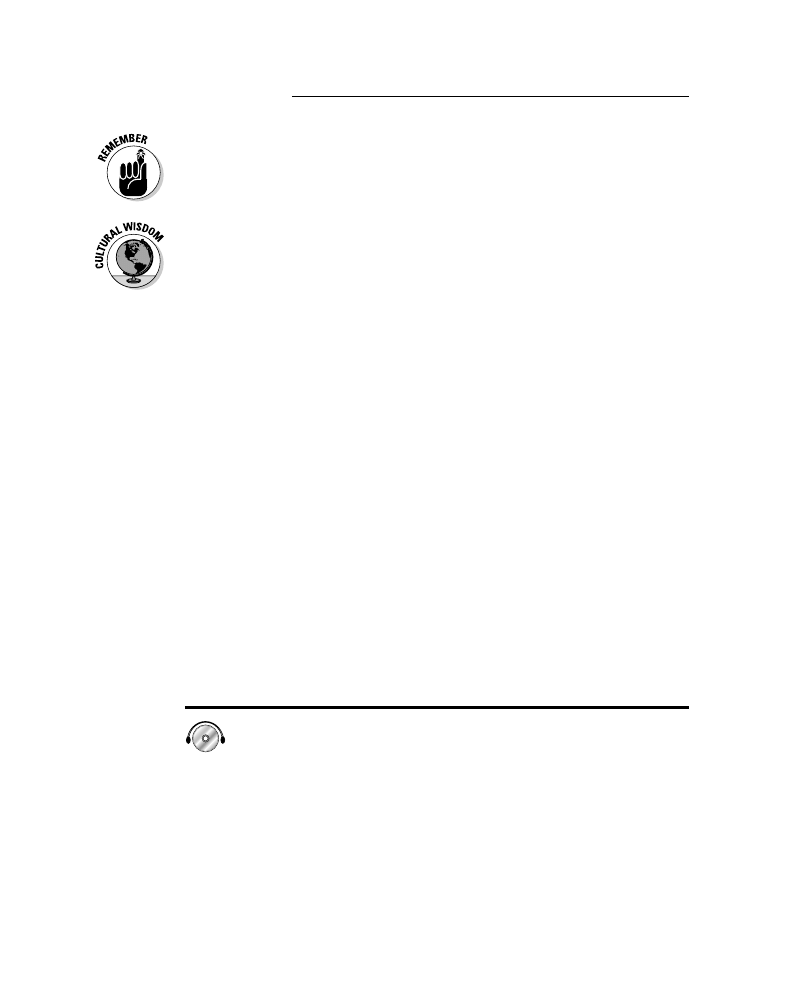
There are in fact two methods of transcribing months in Arabic. The one in
Table 15-2 is based on the Gregorian calendar, which is widely used in the
West. The second way of identifying months is based on the Islamic lunar
system. Flip to Chapter 4 to see the months listed according to the Islamic
calendar.
For travel purposes, the Gregorian calendar convention is most widely used,
so if you’re making a reservation, you can use the months listed in Table 15-2
to communicate the time of your riHla.
Dates and ordinal numbers
After you narrow down the shahr in which you want to take your riHla, you
must specify the dates of your riHla by using numbers. Arabic numbers fall
into two categories: cardinals and ordinals. Cardinals are regular counting
numbers, like “one,” “two,” or “three;” ordinals are the adjective forms of
numbers, like “first,” “second,” and “third.” Arabic ordinals differ from cardi-
nals in that every ordinal number has both a masculine and feminine form.
Because ordinals are treated as adjectives, they must be in gender agreement
with their corresponding nouns.
When you specify a date, you say “December fifth” or “January eighth.”
Because shahr is a masculine noun (the terms for months are masculine), you
must use masculine ordinals to identify specific dates. For example, you say
disambar al-khaamis (dee-sam-bar al-kah-mees; December fifth) or yanaayir
ath-thaamin (yah-nah-yeer ah-thah-meen; January eighth). In addition, because
the ordinal acts as a possessive adjective, you must include the possessive
prefix al-. For more on cardinals and ordinals, flip to Chapter 4. For a compre-
hensive list of ordinals, flip to Chapter 12.
Talkin’ the Talk
George and his wife Selma are trying to figure out when to visit
their favorite country, Morocco.
George:
mataa turiidiina ‘an nadhhab ‘ilaa al-maghrib
haadhihi as-sana?
mah-tah too-ree-dee-nah an naz-hab ee-lah
al-mag-reeb hah-zee-hee ah-sah-nah?
When would you like us to go to Morocco this year?
Selma:
fii nihaayat as-sana, kam al-’aada.
fee nee-hah-yat ah-sah-nah, kam al-ah-dah.
At the end of the year, as usual.
270
Part III: Arabic on the Go
21_772704 ch15.qxp 3/23/06 9:28 PM Page 270

George:
disambar? hal yumkin ‘an tadhhabii fii disambar
al-khaamis?
dee-sam-bar? hal yoom-keen an taz-hah-bee fee
dee-sam-bar al-kah-mees?
December? Can you go on December fifth?
Selma:
‘intaDHir daqiiqa. sa ‘araa taqwiimii.
een-tah-zeer dah-kee-kah. sah ah-rah tak-wee-mee.
Hold on one minute. I’ll check my calendar.
Selma checks her calendar.
Selma:
lisuu’i al-HaDH laa yumkin ‘an ‘adhhab disambar al-
khaamis. ‘indii ‘ijtimaa’ muhimm haadhaa al-yawm.
lee-soo-ee al-haz lah yoom-keen an az-hab
dee-sam-bar al-kah-mees. een-dee eej-tee-mah
moo-heem hah-zah al-yah-oum.
Unfortunately I’m not able to leave on December
fifth. I have an important meeting that day.
George:
hal yumkin ‘an tadhhabii fii disambar ath-thaamin?
hal yoom-keen an taz-hah-bee fee dee-sam-bar
ah-thah-meen?
Can you go on December eighth?
Selma:
na’am. disambar ath-thaamin tamaam!
nah-am. dee-sam-bar ah-thah-meen tah-mam!
Yes. December eighth is perfect!
George:
mumtaaz! wa hal narja’ fii disambar ‘ishriin?
moom-taz! wah hal nar-jah fee dee-sam-bar
eesh-reen?
Excellent! And should we come back on December
twentieth?
Selma:
na’am haadhaa mumkin. wa laakin ‘anaa ‘uriidu
‘an ‘abqaa waqt ‘akthar. hal yumkin ‘an nabqaa ‘ilaa
disambar raabi’ ‘ishriin?
nah-am hah-zah moom-keen. wah lah-keen
ah-nah oo-ree-doo an ab-kah wah-ket ak-thar.
hal yoom-keen an nab-kah ee-lah dee-sam-bar
rah-beeh eesh-reen?
Yes that’s possible. But I’d like to stay a bit longer.
Can we stay until December twenty-fourth?
271
Chapter 15: Planning a Trip
21_772704 ch15.qxp 3/23/06 9:28 PM Page 271

George:
Tayyib. nabqaa ‘ilaa raabi’ ‘ishriin.
tah-yeeb. nab-kah ee-lah rah-beeh eesh-reen.
Okay. Let’s stay until the twenty-fourth.
Selma:
shukran. sa takuun riHla mutamatti’a!
shook-ran. sah tah-koon reeh-lah
moo-tah-mah-tee-ah!
Thank you. It’s going to be an entertaining trip!
Words to Know
dhahaba
zah-hah-bah
to go
nadhhab
naz-hab
we go
shahr
shah-her
month
‘ashhaar
ash-har
months
nihaaya
nee-hah-yah
end
bidaaya
bee-dah-yah
beginning
waSat
wah-sat
middle
waqt
wah-ket
time
taraka
tah-rah-kah
to leave
raja’a
rah-jah-ah
to return/come back
‘amal
ah-mal
work
daqiiqa
dah-kee-kah
minute
taqwiim
tak-weem
calendar
‘ijtimaa’
eej-tee-mah
meeting
muhimm
moo-heem
important (M)
muhimma
moo-hee-mah
important (F)
tamaam
tah-mam
perfect
272
Part III: Arabic on the Go
21_772704 ch15.qxp 3/23/06 9:28 PM Page 272

Tackling Packing
Packing the right items for your riHla is a crucial step toward enjoying your
travel experience. First, you must gather the ‘amti’a (am-tee-ah; luggage) you
need. Here are some possibilities:
⻬ shanTa (shan-tah; suitcase)
⻬ shanTaat (shan-tat; suitcases)
⻬ miHfaDHa (meeh-fah-dah; briefcase)
⻬ miHfaDHaat (meeh-fah-dat; briefcases)
⻬ kiis (kees; bag)
⻬ ‘akyaas (ak-yas; bags)
⻬ kiis al-Hammamm (kees al-hah-mam; toiletry bag)
⻬ ‘akyaas al-Hammaam (ak-yas al-hah-mam; toiletry bags)
⻬ Haqiiba (hah-kee-bah; small bag)
⻬ Haqaa’ib (hah-kah-eeb; small bags)
With your ‘amti’a selected, it’s time to choose what to put in the ‘amti’a. Here
are some essential items you should carry with you regardless of your wujha:
⻬ malaabis (mah-lah-bees; clothes)
⻬ ‘aqmisa (ak-mee-sah; shirts)
⻬ sirwaal (seer-wal; pants)
⻬ mi’Taf (meeh-taf; coat)
⻬ ‘aHdiya (ah-dee-yah; shoes)
⻬ ‘aHzima (ah-zee-mah; belts)
⻬ jawaarib (jah-wah-reeb; socks)
⻬ naDHaraat (nah-zah-rat; glasses)
⻬ naDHaraat ash-shams (nah-zah-rat ah-shah-mes; sunglasses)
⻬ qubba’a (koo-bah-ah; hat)
In addition to clothing and accessories, you also need grooming items. Here
are some toiletries you may pack for your riHla:
⻬ shawkat al-‘asnaan (shaw-kat al-ass-nan; toothbrush)
⻬ ma’juun al-‘asnaan (mah-joon al-ass-nan; toothpaste)
⻬ mushT (moo-shet; comb)
273
Chapter 15: Planning a Trip
21_772704 ch15.qxp 3/23/06 9:28 PM Page 273

⻬ ghasuul as-sha’r (gah-sool ah-shah-er; shampoo)
⻬ Saabuun (sah-boon; soap)
⻬ muziil ar-rawaa’iH (moo-zeel ah-rah-wah-eeh; deodorant)
⻬ fuuTa (foo-tah; towel)
⻬ ‘aalat al-Hilaaqa (ah-lat al-hee-lah-kah; shaving razor)
⻬ ma’juun al-Hilaaqa (mah-joon al-hee-lah-kah; shaving cream)
Preparing Your Travel Documents
The logistics of travel can get pretty complicated, especially when you’re trav-
eling internationally. In recent years, travel restrictions have grown more strin-
gent due to growing concern over security. In this section, you can find all the
key terms you need to know in order to gather the appropriate wathaa’iq as-
safar (wah-thah-eek ah-sah-far; travel documents) to make your riHla go as
smoothly as possible.
Before you leave on a riHla, you need to have at least one biTaaqa shakhsiyya
(bee-tah-kah shak-see-yah; personal identification card); to be safe, you should
probably have two or more. In case you need further confirmation of your iden-
tity, carrying three forms of identification is ideal. Here are some biTaaqaat
shaksiyya (bee-tah-kat shak-see-yah; personal identification cards) you could
carry with you:
⻬ biTaaqat as-saa’iq (bee-tah-kat ah-sah-eek; driver’s license)
⻬ biTaaqa min al-Hukuuma (bee-tah-kah meen al-hoo-koo-mah; govern-
ment-issued ID)
⻬ biTaaqa min al-jaysh (bee-tah-kah meen al-jah-yesh; military-issued ID)
⻬ jawaaz as-safar (jah-waz ah-sah-far; passport)
⻬ biTaaqat al-‘amal (bee-tah-kat al-ah-mal; work permit)
The word biTaaqa (bee-tah-kah) literally means “card.” However, its meaning
may change depending on the context of the phrase in which it’s used. For
instance, in the terms just listed, the word, biTaaqa means “license” as well
as “permit.”
In addition to personal identification documents, if you’re traveling overseas,
many countries require that you also have a ta’shiira (tah-shee-rah; visa)
stamped on your jawaaz as-safar. Every dawla (daw-lah; country) has different
274
Part III: Arabic on the Go
21_772704 ch15.qxp 3/23/06 9:28 PM Page 274

procedures and requirements for obtaining ta’shiiraat (tah-shee-rat; visas), so
it’s your responsibility to find out whether the dawla you’re planning to visit
requires a ta’shiira and, if so, how to go about obtaining one. The categories of
ta’shiiraat include:
⻬ ta’shiirat aT-Taalib (tah-shee-rat ah-tah-leeb; student visa)
⻬ ta’shiirat al-‘amal (tah-shee-rat al-ah-mal; work visa)
⻬ ta’shiirat as-saa’iH (tah-shee-rat ah-sah-eeh; tourist visa)
⻬ ta’shiirat al-‘usra (tah-shee-rat al-oos-rah; family visa)
In order to determine which naw’ (nah-weh; type) of ta’shiira you need and
how to go about getting one, you should contact the qunSuliiyya (kon-soh-
lee-yah; consulate) of your sifaaraat (see-fah-rat; embassy). If possible,
arrange to speak with a muwDHaf al-qunSulliiyya (moo-wah-daf al-kon-soh-
lee-yah; consular officer); he or she should be able to provide you with all the
ma’lumaat (mah-loo-mat; information) you need about ta’shiiraat.
Talkin’ the Talk
Alan stops by the American consulate and speaks to a consular offi-
cer to get information about traveling to the Middle East.
Alan:
sa ‘usaafir ‘ilaa ash-sharq al-’awSaT wa ‘aHtaaju ‘ilaa
ma’luumaat ‘an as-safar.
sah oo-sah-feer ee-lah ah-shah-rek al-aw-sat wah
ah-tah-joo ee-lah mah-loo-mat an ah-sah-far.
I’m going to be traveling to the Middle East, and I
need some travel information.
Officer:
Tayyib. yumkin ‘an ‘usaa’iduka. mataa sa-tadhhab?
tah-yeeb. yoom-keen an oo-sah-ee-doo-kah. mah-tah
sah-taz-hab?
Okay. I’m able to help you. When will you be going?
Alan:
‘uriidu ‘an ‘adhhab fii nihaayat as-sana.
oo-ree-doo an az-hab fee nee-hah-yat ah-sah-nah.
I would like to go at the end of the year.
Officer:
wa li kam waqt?
wah lee kam wah-ket?
And for how long?
275
Chapter 15: Planning a Trip
21_772704 ch15.qxp 3/23/06 9:28 PM Page 275

Alan:
thalaath ‘asaabii’.
thah-lath ah-sah-beeh.
Three weeks.
Officer:
‘ay balad sa-tazuur?
ay bah-lad sah-tah-zoor?
Which country will you be visiting?
Alan:
‘uriidu ‘an ‘azuur maSr wa lubnaan.
oo-ree-doo an ah-zoor mah-ser wah loob-nan.
I want to visit Egypt and Lebanon.
Officer:
Tayyib. laysa Daruurii ‘an taHSul ‘alaa ta’shiira li maSr.
tah-yeeb. lay-sah dah-roo-ree an tah-sool ah-lah
tah-shee-rah lee mah-ser.
Okay. It’s not necessary to obtain a visa for Egypt.
Alan:
wa li lubnaan?
wah lee loob-nan?
And for Lebanon?
Officer:
‘idhaa satazuur lubnaan li ‘akthar min ‘usbuu’
Daruurii ‘an taHSul ‘alaa ta’shiira.
ee-zah sah-tah-zoor loob-nan lee ak-that meen
oos-booh dah-roo-ree an tah-sool ah-lah
tah-shee-rah.
If you’re going to visit Lebanon for more than two
weeks, then it’s necessary for you to obtain a visa.
Alan:
‘ayna yumkin ‘an ‘aHSul ‘alaa ta’shiira li lubnaan?
ay-nah yoom-keen ah ah-sool ah-lah tah-shee-rah lee
loob-nan?
Where can I obtain a visa for Lebanon?
Officer:
fii al-qunSuliiyya al-lubnaaniiya. hiya fii waSat
al-madiina.
fee al-kon-soo-lee-yah ah-loob-nah-nee-yah. hee-yah
fee wah-sat al-mah-dee-nah.
At the Lebanese consulate. It’s located at the center
of the city.
Alan:
shukran li musaa’adatuka.
shook-ran lee moo-sah-ah-dah-too-kah.
Thank you for your help.
Officer:
‘afwan.
af-wan.
You’re welcome.
276
Part III: Arabic on the Go
21_772704 ch15.qxp 3/23/06 9:28 PM Page 276
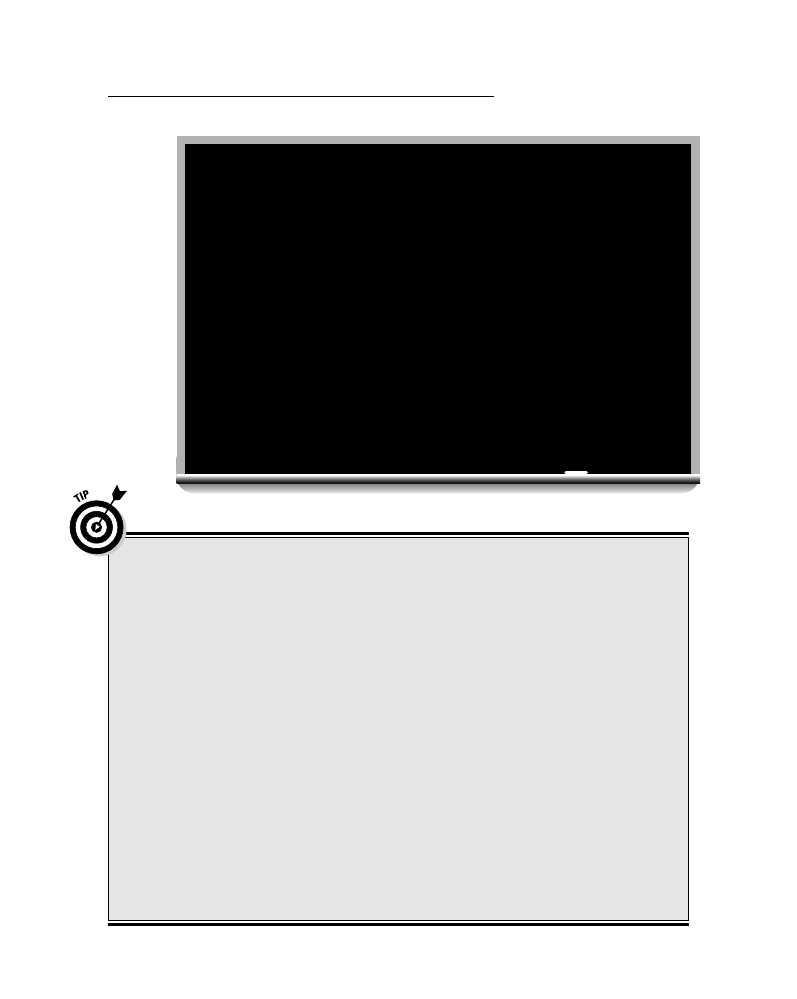
Words to Know
‘aHtaaj
ah-taj
I need
balad
bah-lad
country
buldaan
bool-dan
countries
Daruurii
dah-roo-ree
necessary
Hasala
hah-sah-lah
to obtain
‘akthar
ak-thar
more than
‘aqqall
ah-kal
less than
ma’luumaat
mah-loo-mat
information
musaa’ada
moo-sah-ah-dah
help
277
Chapter 15: Planning a Trip
What’s the difference between
an embassy and a consulate?
The
consulate and the embassy are foreign gov-
ernment outposts located in a host or target
country. For example, the United States has both
embassies and consulates in many countries
around the world. A consulate is generally
located in a busy tourist destination, and its offi-
cials and employees take care of minor diplo-
matic tasks such as issuing visas and
sponsoring educational seminars. An embassy
is usually located in a nation’s capital and has a
more policy-oriented approach. It’s slightly less
bureaucratic than a consulate, and it usually
represents its country’s official diplomatic
stance in the host country.
A consulate is headed by a
consul, the person in
charge of issuing visas and promoting better
relations with the people of a host country; in
contrast, an embassy is run by an ambassador
whose general responsibility is to make sure
that diplomatic ties — on a government-to-
government basis — remain strong and healthy.
If you’re in a foreign country and need to ask a
quick bureaucratic question (such as, “How can
I extend my visa?”), you should head to the con-
sulate. However, if something serious happens
(you’re put in jail, for instance), then contacting
the embassy is more appropriate.
If you’re an American citizen traveling abroad,
to find answers to any questions you have
regarding preparing your wathaa’iq as-safar
prior to your riHla, visit the State Department’s
Bureau of Consular Affairs Web site at
travel.state.gov
.
21_772704 ch15.qxp 3/23/06 9:28 PM Page 277

Using a Travel Agency
Although you can turn to a number of different sources for ma’luumaat on
organizing your riHla, few can provide you with the degree of top-notch
service and personal attention that a wakiil as-safariyaat (wah-keel ah-sah-
fah-ree-yat; travel agent) can provide.
A good wakiil as-safariyaat can recommend the most suitable places for
your riHla and provide you with logistical information and assistance to
make your riHla a success. A wakiil as-safariyaat can provide you with
ma’luumaat concerning:
⻬ fanaadiq (fah-nah-deek; hotels)
⻬ ‘amwaal an-naql (am-wal ah-nah-kel; modes of transportation)
⻬ Taa’iraat (tah-ee-rat; airplanes)
⻬ Sayyaaraat (sah-yah-rat; cars)
⻬ Haafilaat (hah-fee-lat; buses)
⻬ ‘ijaazaat (ee-jah-zat; plans)
⻬ Hujuuzaat (hoo-joo-zat; reservations)
⻬ tanziilaat (tan-zee-lat; discounts)
⻬ tanziilaat al-majmoo’a (tan-zee-lat al-maj-moo-ah; group discounts)
For example, the wakiil as-safariyaat can tell you about tanziilaat that you’re
eligible for if you’re traveling in a majmoo’a (maj-moo-ah; group) or special
rates you can obtain on transportation.
Many wakiil as-safariyaat provide special rates and packages that include
not only airfare but also hotel Hujuuzaat. Here are some travel packages you
should ask about:
⻬ layla wa yawmayn (lay-lah wah yaw-mayn; one night and two days)
⻬ laylatayn wa thalaath ‘ayyaam (lay-lah-tayn wah thah-lath ah-yam; two
nights and three days)
⻬ sittat layla wa sab’at ‘ayyaam (see-tat lay-lah wah sab-at ah-yam; six
nights and seven days)
278
Part III: Arabic on the Go
21_772704 ch15.qxp 3/23/06 9:28 PM Page 278

When reviewing information from your wakiil as-safariyaat, keep a lookout
for the following deals:
⻬ al-funduq maDmuun. (al-foon-dook mad-moon; Hotel is included.)
⻬ ziyaara fii al-madiina maDmuuna. (zee-yah-rah fee al-mah-dee-nah mad-
moo-nah; Sightseeing around the city is included.)
⻬ al-fuTuur wa al-ghidaa’ maDmuuniin. (al-foo-toor wah al-gee-dah mad-
moo-neen; Breakfast and lunch are included.)
⻬ al-funduq wa aT-Taa’ira maDmuuniin. (al-foon-dook wah ah-tah-ee-rah
mad-moo-neen; Hotel and airfare are included.)
279
Chapter 15: Planning a Trip
21_772704 ch15.qxp 3/23/06 9:28 PM Page 279
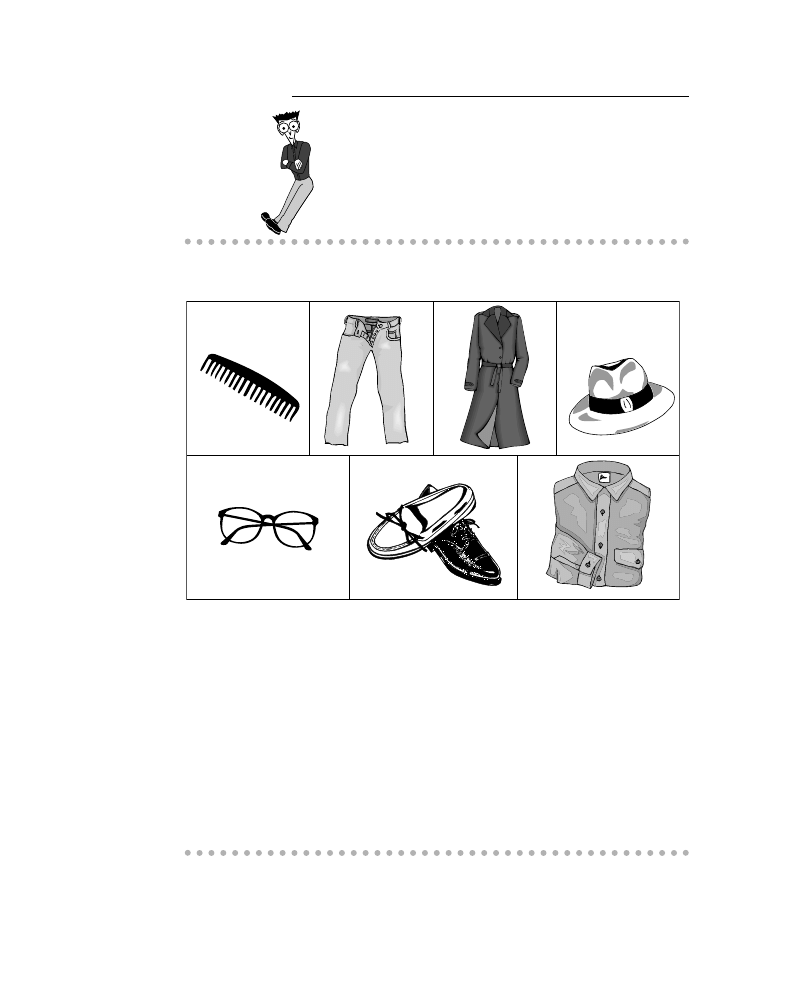
Fun & Games
Name the items in Arabic.
A. ________________
B. ________________
C. ________________
D. ________________
E. ________________
F. ________________
G. ________________
The answers are in Appendix C.
A
B
C
D
E
F
G
280
Part III: Arabic on the Go
21_772704 ch15.qxp 3/23/06 9:28 PM Page 280

Chapter 16
Handling an Emergency
In This Chapter
䊳
Finding help when you need it
䊳
Talking with a doctor
䊳
Getting legal help
N
o one can deny the power of positive thinking. However, there are
times when negative situations arise, and you must be able to rise
to the occasion and help not only yourself but those around you if neces-
sary. So even though remaining positive is always a good thing, you should
also know how to handle negative situations if you find yourself faced with
them.
Handling an emergency in your native tongue can be quite hard to begin
with, given the adrenaline rush and possible feelings of panic, so dealing
with a situation in a foreign language such as Arabic may seem daunting.
But don’t panic! In this chapter, I give you the right words, phrases, and
procedures to help you overcome any emergency situation — whether
medical, legal, or political — just like a native speaker.
Shouting Out for Help
When you’re witnessing or experiencing an emergency such as a theft, a fire,
or even someone having a heart attack, your first instinct is to start yelling
and shouting. That’s the right instinct. But you also need to be able to com-
municate coherently so that you can get musaa’ada (moo-sah-ah-dah; help).
This section tells you which words to use to express your sense of emergency
verbally in order to get the right kind of musaa’ada.
22_772704 ch16.qxp 3/23/06 9:28 PM Page 281

Essentially, Arabic has two words that mean “help”: musaa’ada (moo-sah-ah-
dah) and mu’aawana (moo-ah-wah-nah). Both words are used interchange-
ably to ask for help in an emergency. You can attract help by shouting
musaa’ada or mu’aawana once, but you attract more attention when you
shout the words consecutively:
⻬ musaa’ada musaa’ada! (moo-sah-ah-dah moo-sah-ah-dah; Help help!)
⻬ mu’aawana mu’aawana! (moo-ah-wah-nah moo-ah-wah-nah; Help help!)
Arabic actually has a third word that means “help”: najda (nah-jeh-dah). You
can use najda to call for help, but be aware that screaming najda means that
someone is in a severe, extremely dangerous, life-and-death situation. (If
there were degrees to words for “help” — where level 3 is high and level 5 is
extreme — musaa’ada and mu’aawana would be level 3s and najda would be
a level 5.)
It may be difficult to understand this classification of “help” because when
you’re in an emergency, you tend not to think about your situation on a scale
of seriousness. Your reaction is usually, “I’m in trouble, and I need help now.”
The Arabic vocabulary for emergencies is structured in such a way as to
differentiate between life-and-death emergencies and non–life-and-death
situations.
The basic rule for expressing that you need help is that if you’re involved in
a life-and-death situation, you should scream out najda. Think of najda as
the code red of distress signals, only to be used if your life or the life of
others is in danger. For example, screaming najda isn’t appropriate if you
sprain your ankle while playing soccer. However, if you’re witnessing or
experiencing a drowning, a heart attack, or a suicide attempt, you should
scream najda like this:
an-najda an-najda! (ahn-nah-jeh-dah ahn-nah-jeh-dah; Help help!)
Here are some other important words and phrases to help you cope with an
emergency:
⻬ saa’iduunii! (sah-ee-doo-nee; Help me!)
⻬ ‘aawinuunii! (ah-wee-noo-nee; Help me!)
⻬ shurTa! (shoo-reh-tah; Police!)
⻬ ‘uriidu Tabiib! (oo-ree-doo tah-beeb; I need a doctor!)
⻬ liSS! (lehs; Thief!)
⻬ naar! (nahr; Fire!)
Part III: Arabic on the Go
282
22_772704 ch16.qxp 3/23/06 9:28 PM Page 282

A little help with the verb “to help”
The word musaa’ada is derived from the verb saa’ada (sah-ah-dah), which
means “to help.” Although screaming musaa’ada is an important first step to
attract attention to an emergency, you also need to be able to coherently
formulate a sentence in order to get the right kind of help. Use the form
saa’ada to conjugate the verb “to help” in the maaDii (mah-dee; past tense)
and yusaa’idu (yoo-sah-ee-doo) to conjugate it in the muDaari’ (moo-dah-reeh;
present tense). (Check out Chapter 2 for a quick reminder of the maaDii and
muDaari’ forms.)
Here’s the verb saa’ada conjugated in the maaDii form:
Form
Pronunciation
Meaning
‘anaa saa’adtu
ah-nah sah-ahd-too
I helped
‘anta saa’adta
ahn-tah sah-ahd-tah
You helped (MS)
‘anti saa’adti
ahn-tee sah-ahd-tee
You helped (FS)
huwa saa’ada
hoo-wah sah-ah-dah
He helped
hiya saa’adat
hee-yah sah-ah-daht
She helped
naHnu saa’adnaa
nah-noo sah-ahd-naa
We helped
‘antum saa’adtum
ahn-toom sah-ahd-toom
You helped (MP)
‘antunna saa’adtunna
ahn-too-nah sah-ahd-too-nah
You helped (FP)
hum saa’aduu
hoom sah-ah-doo
They helped (MP)
hunna saa’adna
hoo-nah sah-ahd-nah
They helped (FP)
antumaa saa’adtumaa
ahn-too-mah sah-ahd-too-mah
You helped
(dual/MP/FP)
humaa saa’adaa
hoo-mah sah-ah-dah
They helped
(dual/MP)
humaa saa’adataa
hoo-mah sah-ah-dah-tah
They helped
(dual/FP)
Use the form yusaa’idu to conjugate “to help” in the muDaari’. Recall that
the present tense in Arabic describes both a habitual action, such as “I help,”
and an ongoing action, such as “I am helping.”
283
Chapter 16: Handling an Emergency
22_772704 ch16.qxp 3/23/06 9:28 PM Page 283

Form
Pronunciation
Meaning
‘anaa ‘usaa’idu
ah-nah oo-sah-ee-doo
I am helping
‘anta tusaa’idu
ahn-tah too-sah-ee-doo
You are helping (MS)
‘anti tusaa’idiina
ahn-tee too-sah-ee-dee-nah
You are helping (FS)
huwa yusaa’idu
hoo-wah yoo-sah-ee-doo
He is helping
hiya tusaa’idu
hee-yah too-sah-ee-doo
She is helping
naHnu nusaa’idu
nah-noo noo-sah-ee-doo
We are helping
‘antum tusaa’iduuna
ahn-toom too-sah-ee-doo-nah
You are helping (MP)
‘antunna tusaa’idna
ahn-too-nah too-sah-eed-nah
You are helping (FP)
hum yusaa’iduuna
hoom yoo-sah-ee-doo-nah
They are helping (MP)
hunna yusaa’idna
hoo-nah yoo-sah-eed-nah
They are helping (FP)
antumaa tusaa’idaani
ahn-too-mah
You are helping
too-sah-ee-dah-nee
(dual/MP/FP)
humaa yusaa’idaani
hoo-mah yoo-sah-ee-dah-nee
They are helping
(dual/MP)
humaa tusaa’idaani
hoo-mah too-sah-ee-dah-nee
They are helping
(dual/FP)
Although Arabic has more than one word for “help,” only musaa’ada is the
most conjugated verb form. mu’aawana may also be conjugated using the
form ‘aawana in the maaDii and yu’aawinu in the muDaari’, but it’s more of
an archaic and arcane verb that isn’t widely used in everyday Arabic.
Because najda is more of a code word for distress, it doesn’t have a verb
equivalent form.
Lending a hand
Being in an emergency doesn’t always mean that you’re the one who needs
help. You may be faced with a situation where you’re actually the person
who’s in a position to offer help. In this case, you need to know words and
phrases of an altogether different nature. The words and phrases in this sec-
tion help you better respond to a situation in which you’re the helper and not
the one being helped.
The first thing you do in such a situation is ask questions to assess the
damage and determine what course of action to take:
⻬ maadhaa waqa’a? (mah-zah wah-kah-ah; What happened?)
⻬ hal kul shay’ bikhayr? (hal kool shah-yeh bee-kayr; Is everything alright?)
Part III: Arabic on the Go
284
22_772704 ch16.qxp 3/23/06 9:28 PM Page 284
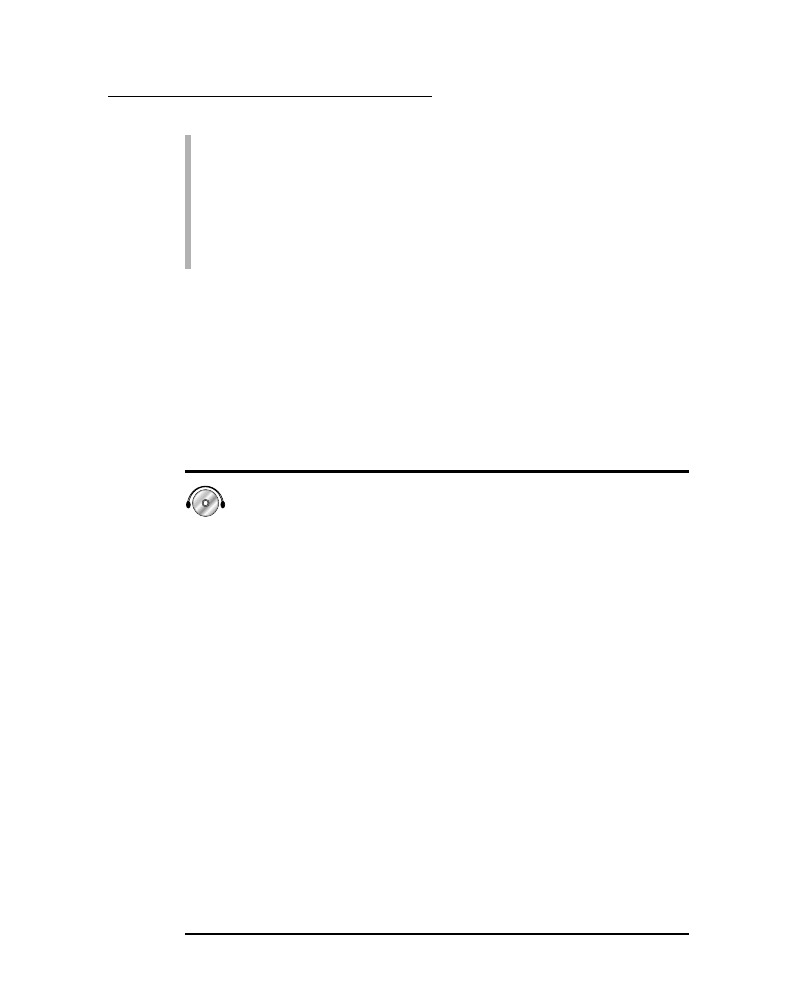
⻬ hal turiidu musaa’ada? (hal too-ree-doo moo-sah-ah-dah; Do you need
help?)
⻬ ‘ay naw’ min musaa’ada turiidu? (ay nah-weh meen moo-sah-ah-dah too-
ree-doo; What kind of help do you need?)
⻬ hal yajibu ‘an tadhhab ‘ilaa al-mustashfaa? (hal yah-jee-boo ann taz-hab
ee-laa al-moos-tash-fah; Do you need to go to the hospital?)
⻬ hal turiidu Tabiib? (hal too-ree-doo tah-beeb; Do you need a doctor?)
If you’re in a situation in which injuries are serious and the person appears to
be disoriented, then you must take further steps, such as contacting the
shurTa (shoo-reh-tah; police) or other first responders.
If you’re ever in a situation where you need to call the police, you may say
the following on the phone: ‘aHtaaju bi musaa’ada fawran (ah-tah-joo bee
moo-sah-ah-dah faw-ran; I need help right away).
Talkin’ the Talk
Lamia is walking down the street when, all of a sudden, the
woman walking in front of her falls on the ground. Lamia
approaches the woman to see how she can be of help.
Lamia:
‘afwan. hal kul shay’ bikhayr?
ah-feh-wan. hal kool shah-yeh bee-kayr?
Excuse me. Is everything alright?
Woman:
na’am. kul shay’ bikhayr.
nah-am. kool shah-yeh bee-kayr.
Yes. Everything is alright.
Lamia:
maadhaa waqa’a?
mah-zah wah-kah-ah?
What happened?
Woman:
laa shay’. laqad saqaTtu.
lah shah-yeh. lah-kad sah-kah-too.
Nothing. I fell.
Lamia:
hal turiidiina musaa’ada?
hal too-ree-dee-nah moo-sah-ah-dah?
Do you need help?
Woman:
laa shukran. kul shay’ sayakun bikhayr.
lah shook-ran. kool shah-yeh sah-yah-koon bee-kayr.
No thank you. I will be alright.
285
Chapter 16: Handling an Emergency
22_772704 ch16.qxp 3/23/06 9:28 PM Page 285

Getting Medical Help
If you’re like me, you may find that even though going to the doctor’s office is
necessary and important, it isn’t always the most fun part of your day. But
visiting the doctor is essential for each and every one of us. This section
introduces you to important medical terms to help you interact effectively
with medical staff.
Locating the appropriate doctor
In case of a medical urgency, your first stop should be the mustashfaa
(moos-tash-fah; hospital) to see a Tabiib (tah-beeb; doctor). If you simply
need a checkup, go see a Tabiib ‘aam (tah-beeb ahm; general doctor). If your
needs are more specific, look for one of these specialist doctors:
⻬ Tabiib ‘asnaan (tah-beeb ahs-nan; dentist)
⻬ Tabiib ‘aynayn (tah-beeb ah-yeh-nayn; ophthalmologist)
⻬ Tabiib rijl (tah-beeb ree-jel; orthopedist)
⻬ Tabiib ‘aTfaal (tah-beeb aht-fal; pediatrician)
Talking about your body
Locating the right doctor is only the first step toward getting treatment. In
order to interact with the Tabiib, you need to be able to identify your differ-
ent body parts in Arabic, explaining which parts hurt and which are fine.
Table 16-1 lists all your major body parts.
Table 16-1
Body Parts
Arabic
Pronunciation
Translation
jasad
jah-sad
body
ra’s
rahs
head
fam
fahm
mouth
lisaan
lee-sahn
tongue
‘asnaan
ass-nahn
teeth
wajh
wah-jeh
face
Part III: Arabic on the Go
286
22_772704 ch16.qxp 3/23/06 9:28 PM Page 286

Arabic
Pronunciation
Translation
jild
jee-led
skin
‘anf
ah-nef
nose
‘udhunayn
oo-zoo-nayn
ears
‘aynayn
ah-yeh-nayn
eyes
dimaagh
dee-mag
brain
qalb
kah-leb
heart
ri’a
ree-ah
lung
katef
kah-tef
shoulder
Sadr
sah-der
chest
ma’iida
mah-ee-dah
stomach
diraa’
dee-rah
arm
yad
yahd
hand
‘aSaabi’
ah-sah-beh
fingers
rijl
ree-jel
leg
qadam
kah-dam
foot
‘aSaabi’ al-qadam
ah-sah-beh al-kah-dam
toes
rukba
roo-keh-bah
knee
‘aDHm
ah-zem
bone
damm
deh-m
blood
Dhahr
zah-her
back
Explaining your symptoms
The Tabiib can’t provide you with the proper treatment unless you communi-
cate the kind of pain you’re experiencing. How mariiD (mah-reed; sick) do
you feel? Do you have a SuDaa’ (soo-dah; headache)? Or perhaps a Haraara
(hah-rah-rah; fever)? Table 16-2 lists common symptoms.
287
Chapter 16: Handling an Emergency
22_772704 ch16.qxp 3/23/06 9:28 PM Page 287

Table 16-2
Common Symptoms
Arabic
Pronunciation
Translation
maraD
mah-rad
sickness
waja’
wah-jah
ache/ailment
su’aal
soo-ahl
cough
bard
bah-red
cold
Harq
hah-rek
burn
raDDa
rah-dah
bruise
waja’ ‘aDHahr
wah-jah ah-zah-her
backache
maraD al-Hasaasiya
mah-rad al-hah-sah-see-yah
allergy
When you go to the Tabiib, he or she may ask you, maadha yu’limuka?
(mah-zah yoo-lee-moo-kah; What hurts you?). The most common way to
respond to this question is to name the body part that hurts followed by
yu’limunii (yoo-lee-moo-nee; hurts me). So when the Tabiib asks maadha
yu’limuka?, you may say:
⻬ ra’sii yu’limunii. (rah-see yoo-lee-moo-nee; My head hurts me.)
⻬ ‘udhunayn tu’limunii. (oo-zoo-nay-nee too-lee-moo-nee; My ears hurt me.)
⻬ Sadrii yu’limunii. (sah-der-ee yoo-lee-moo-nee; My chest hurts me.)
⻬ diraa’ii yu’imunii. (dee-rah-ee yoo-lee-moo-nee; My arm hurts me.)
Getting treatment
After the Tabiib analyzes your symptoms, he or she is able to offer you
‘ilaaj (ee-laj; treatment). Following the Tabiib’s orders is important for both
getting and remaining saliim (sah-leem; healthy), so pay attention. Here are
treatment-related words you may encounter:
⻬ dawaa’ (dah-wah; medicine)
⻬ SayDaliiyya (sah-yeh-dah-lee-yah; pharmacy)
⻬ ‘iyaada (ee-yah-dah; clinic)
Part III: Arabic on the Go
288
22_772704 ch16.qxp 3/23/06 9:28 PM Page 288

Talkin’ the Talk
Omar has been feeling nauseous all day long, so he decides to go
see his doctor in the afternoon.
Doctor:
maadha yu’limuka?
mah-zah yoo-lee-moo-kah?
What hurts you?
Omar:
ra’sii yu’limunii.
rah-see yoo-lee-moo-nee.
My head hurts.
Doctor:
shay’ ‘aakhar?
shah-y ah-kar?
Anything else?
Omar:
na’am. ‘indii Haraara.
nah-am. een-dee hah-rah-rah.
Yes. I have a fever.
Doctor:
khudh haadhaa ‘asbiriin wa satakuun bikhayr.
kooz hah-zah ass-pee-reen wah sah-tah-koon
bee-kah-yer.
Take this aspirin, and you will be alright.
Words to Know
sharaab su’aal
shah-rahb soo-all
cough medicine
Suurat ‘ashi’a
soo-rat ah-shee-ah
X-ray
‘asbiriin
ass-pee-reen
aspirin
289
Chapter 16: Handling an Emergency
22_772704 ch16.qxp 3/23/06 9:28 PM Page 289

Acquiring Legal Help
Let’s hope it’s never the case, but you may have a run-in with the law and
need the services of a muHaamiiy (moo-hah-mee; lawyer). The muHaamiiy
has a good understanding of the qaanuun (kah-noon; law) and is in a position
to help you if you’re ever charged with committing a mujrima (mooj-ree-mah;
crime).
If you happen to be in a foreign country and need legal representation, the
best route is to contact your country’s qunSuliyya (koon-soo-lee-yah; con-
sulate) and ask to speak to the qunSul (koon-sool; consul). Because consular
officers have a very good understanding of the laws of their host countries,
you may be better off getting help directly from them rather than finding your
own muHaamiiy. Especially if it looks like you have to go to maHkama (mah-
kah-mah; court) and face a qaadiiy (kah-dee; judge), the help a qunSuliyya
can provide is invaluable.
You may also want to call your country’s sifaara (see-fah-rah; embassy) if
you’re in a really serious situation. Even if you’re unable to talk to the safiir
(sah-feer; ambassador) directly, your sifaara may take the appropriate steps
to provide you with assistance.
Part III: Arabic on the Go
290
22_772704 ch16.qxp 3/23/06 9:28 PM Page 290
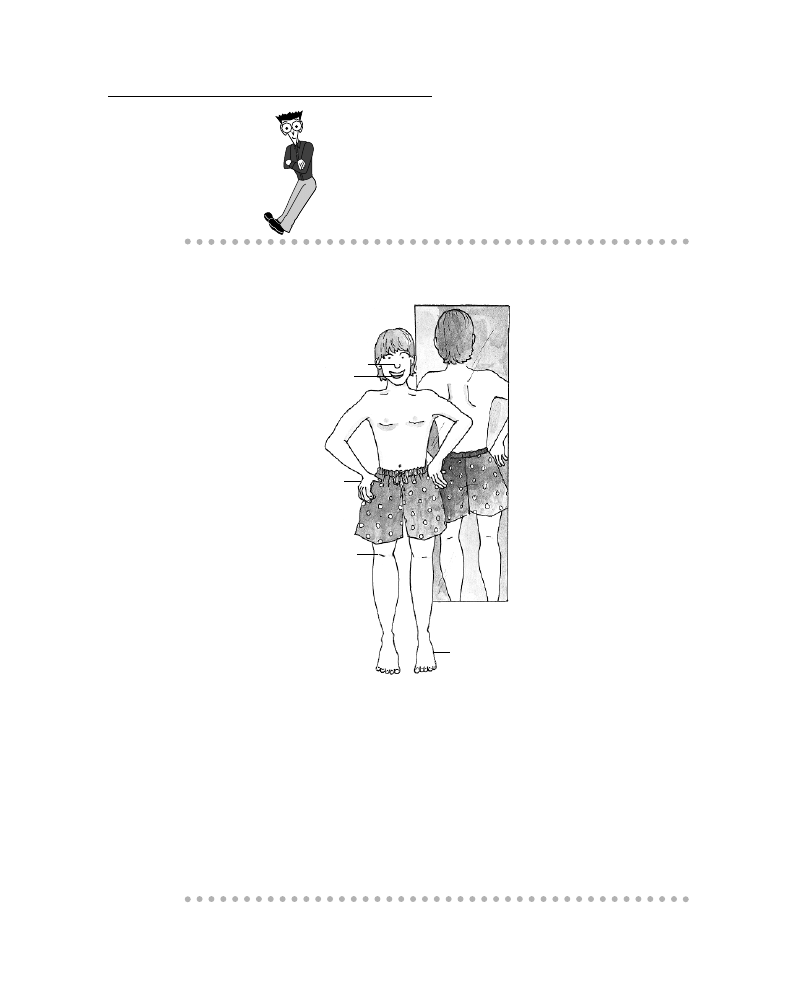
Fun & Games
Identify the following body parts in Arabic:
A. ________________
B. ________________
C. ________________
D. ________________
E. ________________
F. ________________
Answers are in Appendix C.
A
B
F
D
E
C
291
Chapter 16: Handling an Emergency
22_772704 ch16.qxp 3/23/06 9:28 PM Page 291

Part III: Arabic on the Go
292
22_772704 ch16.qxp 3/23/06 9:28 PM Page 292

Part IV
The Part of Tens
23_772704 pt04.qxp 3/23/06 9:31 PM Page 293

In this part . . .
Y
ou discover ten of the greatest Arabic proverbs, and
you find out proper ways to interact with people if
you’re in an Arabic-speaking country. I also share my
recommendations on the best ways to acquire Arabic as
quickly as possible.
23_772704 pt04.qxp 3/23/06 9:31 PM Page 294

Chapter 17
Ten Ways to Pick Up Arabic
Quickly
In This Chapter
䊳
Explore Arabic media offerings online and in print
䊳
Practice on Arabic speakers
䊳
Get musical
A
rabic is a language that needs to be constantly spoken, heard, and
practiced. Even many native speakers try to read an Arabic newspaper
every day or watch a majalla ‘ikhbaariya (mah-jah-lah eek-bah-ree-yah; news
broadcast) in order to maintain their level of fluency. So to get the best grasp
of the language, you should try to immerse yourself in an environment where
Arabic is the prevalent language. This chapter has recommendations on
some key ways to help you not only pick up Arabic but also maintain a good
degree of understanding of the language after you’re comfortable with it.
Watch Arabic Television
Since the late 1990s, the Arabic audiovisual landscape has experienced a seis-
mic shift. With the advent of satellite TV across the Arab world and the Middle
East, Arab TV stations have spread across the world. Besides the well-known
satellite news outlets al-jaziira (al-jah-zee-rah; the island) and al-’arabiyya
(al-ah-rah-bee-ya; the Arabic), there are a number of other TV stations you can
watch to help you fine-tune your accent and intonation. The news channels
offer valuable exposure to spoken Modern Standard Arabic, which is the
Arabic used in this book. Because this version’s more formal than others,
watching Arabic news channels will give you a better grasp of the grammatical
rules — and your Arabic will be greatly improved as a result.
24_772704 ch17.qxp 3/23/06 9:33 PM Page 295

Another option for Arabic TV is MBC (Middle East Broadcast Corporation),
which airs movies, soap operas, and talk shows that showcase some of the
local spoken dialects such as Lebanese and Egyptian. If you’re in the United
States, you can order Arabic channels from your local cable provider or satel-
lite TV operator; these channels have subtitles in English so you can follow
along. Believe it or not, watching TV is one of the best ways to pick up a lan-
guage. Personally, I didn’t start speaking English until I was 10 years old, and
one of the most effective tools that helped me grasp the language was watch-
ing sitcoms like The Simpsons.
Use the Dictionary
The qaamoos (kah-moos; dictionary) contains a wealth of information about
Arabic words, phrases, and expressions. Simply picking up the dictionary
once a day and memorizing a single word can have a huge effect on your
Arabic vocabulary. Once you reach fluency in reading and writing Arabic,
you’ll realize that vowels aren’t included in most of the Arabic texts you read,
such as newspapers, books, and magazines. At first, trying to read without
the vocalizations takes practice, but with the help of the qaamoos, you
should be able to overcome this hurdle.
If reading the qaamoos is simply too low-tech for your taste, go online and
find a word-a-day generating program that sends you an e-mail every morning
with a new Arabic word; its pronunciation, meaning, and origins; and the con-
text in which you use it. What a great way for you to build your vocabulary
without actually opening the qaamoos! The Web site
www.ectaco.com
offers
such a service.
Read Arabic Newspapers
The Arabic SaHaafa (sah-hah-fah; press) is very vibrant and offers many dif-
ferent publications covering a wide array of perspectives. Newspapers across
the Arab world cater to all sorts of points-of-view, from the ultraliberal to the
ultra-conservative. Reading Arabic newspapers is a good way to not only
practice reading the language but also become more familiar with the issues
concerning the Arab world.
You can purchase Arabic newspapers at most major newsstands in major met-
ropolitan areas, such as New York City. Also, many Arabic newspapers now
have online editions that you can access anytime, from anywhere. For more
on Arabic newspapers and where to locate them, visit
www.al-baab.com
.
Part IV: The Part of Tens
296
24_772704 ch17.qxp 3/23/06 9:33 PM Page 296

Surf the Internet
I believe that the Internet is one of the greatest inventions of all time — you
have practically all the world’s information at your fingertips! Plus, it’s an
amazing tool that can help you master Arabic quickly and efficiently. Simply
visit any search engine — such as Google or Yahoo! — type the search word
“Arabic,” and start surfing. Or you can browse media Web sites, such as
www.aljazeera.net
or
www.arabicworldnews.com
. Most media sites have
a Links section where you generally find a list of other Web sites that are sim-
ilar in nature. Perusing these sites in Arabic should greatly improve your
reading comprehension.
Use a Language Tape or CD
If you’re a person who picks up a language by hearing it over and over, then
you can’t afford not to buy a few instructional Arabic CDs. Start by listening
to the CD that came with this book; you’ll find that the conversations are
extremely helpful in helping you identify the speed, intonation, and pronunci-
ation that makes you sound more like a native speaker. For more resources,
investigate Arabic libraries in your city that offer instructional tapes and CDs,
or check out your regular library to see what Arabic audio tools it offers —
you may be surprised at what’s available.
Listen to Arabic Music
Arabic music is one of the liveliest, most melodic, and fun types of music in
the world. Because Arabic music is so energetic and fun, you’ll pick up new
phrases and words without even realizing it! You can choose from a lot of
popular Arabic musicians, including:
⻬ Sheb Khaled from Algeria, who plays Rai music. Rai music is the equiva-
lent of Arabic hip-hop. The singer freestyles over a musical beat or
rhythm.
⻬ Farid Al-atrache, a master of the ‘uud. The ‘uud is a musical instrument
that’s similar to the guitar; but unlike a regular guitar, it has a wide,
hollow body.
⻬ Najat ‘atabou, a popular folk singer from Morocco.
Check out any of these artists online, or go to your local music store and
browse through the Middle East section for even more possiblities.
297
Chapter 17: Ten Ways to Pick Up Arabic Quickly
24_772704 ch17.qxp 3/23/06 9:33 PM Page 297

Make Arabic-Speaking Friends
It’s really hard to find a substitute for human contact and human interactions.
Making friends who are native or fluent Arabic speakers and carrying on con-
versations with them in Arabic dramatically improves your speaking and com-
prehension skills. After all, your friends are in a position to correct you gently
and help you use the right expressions, phrases, and sentences in the appro-
priate contexts. Part of the challenge of picking up a language, especially
one like Arabic, lies in the fact that you need to put your language skills —
especially vocabulary and expressions — in the right context. Speaking with
friends is the best way to do that!
Watch Arabic Movies
Watching Arabic movies can be a lot more fun than watching TV because you
aren’t interrupted by commercials and you generally have subtitles to follow.
Most local movie stores and libraries carry popular Arabic movies on DVD or
VHS tape, so you’re sure to find something that interests you. Just be sure to
get a movie with English subtitles so that you can follow along!
A movie that’s worth watching is the Arabic version of Lawrence of Arabia.
Another classic movie is The Messenger (ar-risaala).
Eat at a Middle Eastern Restaurant
Almost every city in the world has at least one Middle Eastern maT’am (mat-
ham; restaurant), so let your fingers do the walking and find one in your area.
Eating at a Middle Eastern restaurant provides you with a safe, fun, and
engaging atmosphere in which to practice your language skills by interacting
with the waitstaff in Arabic. Order drinks, food, and ask questions about the
food preparation in Arabic, and you’ll be amazed at how much you’ll improve
your Arabic reading and comprehension skills. And the restaurant staff are
sure to be impressed with both your skill and interest in the language!
Sing Arabic Songs
Singing an ‘ughniiya (oog-nee-yah; song) is a fun, interactive, and effective
way to pick up Arabic. Arabic songs tend to be extremely melodic and soul-
ful, so not only will you enjoy singing an ‘ughniiya, but you’ll also encounter
new vocabulary and identify some of the intonations and beats that make
Arabic such a unique language.
Part IV: The Part of Tens
298
24_772704 ch17.qxp 3/23/06 9:33 PM Page 298

Chapter 18
Ten Things You Should Never Do
in an Arab Country
In This Chapter
䊳
Following proper greeting etiquette
䊳
Respecting places that are off-limits
䊳
Displaying appropriate behavior during the holy month of Ramadan
䊳
Being a good guest
C
ross-cultural dialogue isn’t only spoken; nonlanguage signs are equally
important in communicating and building bridges between cultures. By
definition, a culture has a different set of values, principles, and social customs
than other cultures. This chapter covers the unspoken rules to follow to help
you avoid making faux-pas with native Arabic speakers or peoples from Arab
countries.
Don’t Shake Hands with a Firm Grip
In the United States, Europe, and throughout most of the Western world,
people are encouraged to shake hands with a firm grip. Having a good, solid
grip conveys a healthy dose of confidence in the West. In the Middle East,
however, shaking hands with a tight or firm grip is considered impolite.
Sometimes, it may even be interpreted as an openly hostile act! The logic
behind this social custom is as follows: You use force and strength against
your enemies, so shaking someone’s hand with extreme force or strength
may be interpreted as considering that person an enemy. The best way
to shake hands if you’re traveling in the Arab world is to present a
friendly, not-too-firm grip — that way you’re sure not to make any
unnecessary foes!
25_772704 ch18.qxp 3/23/06 9:33 PM Page 299

Don’t Enter a Room Full of People
Without Saying “‘as-salaamu ‘alaykum”
As a general rule, you should get into the habit of saying ‘as-salaamu
‘alaykum (ah-sah-lah-moo ah-lay-koom) whenever you enter a room, regard-
less of whether the people in the room are acquaintances or strangers. The
phrase literally means “May peace be upon you” but is the equivalent of
saying “Hello” in English.
Many people believe this saying has special significance because of religious
and historical connotations. More than just a simple greeting, the phrase is
used to convey a sense of respect and camaraderie; it’s the equivalent of
saying “I come in peace.” Saying ‘as-salaamu ‘alaykum signals to all that your
intentions are honorable and pure. Rather than direct this greeting at a single
person, ‘as-salaamu ‘alaykum should be directed at everyone in the room.
After you say it, you will hear a reply in unison: wa ‘alaykum as-salaam (wah
ah-lay-koom ah-sah-lam; and upon you peace).
Don’t Start Eating Before Saying
“bismi allah”
If you’re invited to eat at a friend’s house for dinner or lunch, or if you’re sit-
ting with co-workers at the cafeteria, make sure that you say bismi allah
(bees-mee ah-lah; In the name of Allah [God]) before you start eating. Arabs
and Muslims believe that before you eat, you should give thanks to God for
the food you’re about to put in your mouth. It doesn’t matter whether you’re
Muslim or non-Muslim; bismi allah is an important phrase to use. (You don’t
have to say bismi allah before every bite, just before you begin the meal.)
Keep in mind that this phrase isn’t used exclusively to bless food; you may
hear someone say bismi allah before drinking water, starting a car, getting on
a plane, and even before beginning to speak.
If You’re Not Muslim, Don’t Enter a
Mosque Without Explicit Authorization
For Muslims, the masjid (mas-jeed; mosque) is one of the holiest places
on earth. It’s where Muslims go to pray, both individually and communally,
Part IV: The Part of Tens
300
25_772704 ch18.qxp 3/23/06 9:33 PM Page 300

301
Chapter 18: Ten Things You Should Never Do in an Arab Country
and where most Muslims feel the closest bond to allah. Therefore, if you’re
non-Muslim, entering a mosque — any mosque — is strictly prohibited.
There are exceptions to this rigidly enforced rule, but they’re few and far
between. For example, the Hassan II mosque in Casablanca, Morocco, has
a special section for non-Muslims who are interested in discovering the
beautiful architecture of the masjid. Visitors are allowed to walk through
parts of the masjid — excluding the main prayer room, which is reserved
for Muslims only — with a properly certified guide. Even in these exceptions,
however, strict rules must be followed, such as removing your shoes (see
the next section) and performing absolution before entering parts of the
masjid.
Don’t Enter a Mosque
with Your Shoes On
Whereas non-Muslims are generally restricted from entering the masjid,
Muslims aren’t allowed to enter the masjid with their shoes on. Muslims
strongly believe the masjid is a holy place that must be treated with consider-
able respect and cleanliness. If you’re Muslim and want to go to the masjid for
prayer, it’s absolutely necessary you remove your Hidaa’ (hee-dah; shoes).
Similarly, if you’re non-Muslim but are granted permission to visit parts of the
masjid, you must remove your shoes as well.
Don’t Eat or Drink During Ramadan
The holy month of Ramadan is the most sacred time for Muslims around the
world. During this month, Muslims fast from sunrise to sunset in an attempt
to cleanse themselves from the impurities of the world. The fasting is usually
very strict — no food, no drink (including water), and no smoking. If you’re
non-Muslim and happen to visit an Islamic country during the month of
Ramadan, it’s really important that you don’t eat or drink while the rest of the
population is fasting. If you want to eat, you may do so within the confines of
your own lodging. But under no circumstances should you go out and have a
cigarette on the street corner while Ramadan is taking place. However, after
sunset, when the fast is over and people are allowed to eat, smoke, and drink
(nonalcoholic beverages), feel free to partake in these activities with every-
one else.
25_772704 ch18.qxp 3/23/06 9:33 PM Page 301

Don’t Drink Alcohol During Ramadan
Although you may drink water, soda, or juice in public after the breaking of the
fast during Ramadan, you may not under any circumstances drink alcoholic
beverages in public during the holy month of Ramadan. In most Islamic coun-
tries, if you’re non-Muslim, you can have alcohol in designated public areas,
such as a hotel bar or restaurant. However, during Ramadan, the sale and
consumption of alcohol is prohibited. To be safe, you’re advised to avoid any
alcoholic drinks during the whole month of Ramadan, whether publicly or
privately.
Don’t Drink Alcohol in Public
Legally speaking, alcohol use by Muslims is prohibited in most, if not all, Arab
and Islamic countries. Although enforcement of these laws isn’t always consis-
tent, you probably should err on the side of caution and not attract any nega-
tive attention to yourself if you’re a non-Muslim visiting a Muslim country.
If you’re a Muslim, most bars, restaurants, and hotels offer alcoholic bever-
ages. If you’re inside your hotel room or visiting friends at their house, you
should feel free to enjoy an alcoholic drink (in moderation, of course). If
you’re out in public, then possession and consumption of alcoholic bever-
ages is strictly prohibited. Make sure you keep this in mind before deciding
to open a can of beer out on the beach or in another public space.
Don’t Engage in Public Displays
of Affection
Most Arab and Muslim countries follow strict Islamic social guidelines. These
guidelines change from country to country, but it’s smart to be aware of them
in order to avoid any potentially troubling situations. As a general rule, public
displays of affection are frowned upon in most Islamic countries. In countries
such as Saudi Arabia and Indonesia, most women wear the Hijaab (hee-jab;
veil) and must limit their interactions with the opposite sex. It’s therefore not
a good idea to kiss your girlfriend, boyfriend, fiancé, or even your spouse out
in public. Keep outward affection for your significant other in the comforts of
your own home. If you “accidentally” engage in public displays of affection,
don’t be surprised to receive some disapproving looks.
Part IV: The Part of Tens
302
25_772704 ch18.qxp 3/23/06 9:33 PM Page 302

Don’t Refuse a Gift If One
Is Offered to You
People in the Middle East are known around the world for their incredible
hospitality. If you ever get a chance to visit the region, you’ll be surprised at
how welcoming people are. An incredible social fabric encourages hospital-
ity, and as a result, people love to share their food and their homes with
others. If you’re invited to a Middle Eastern home and are offered a gift — a
piece of jewelry, clothes, food, or other item — it’s considered impolite to
refuse such a gift, no matter how extravagant you may think it is. However,
when you accept a gift, you enter into a social contract: It’s accepted and
understood that you reciprocate by offering another gift in response. But
don’t worry, you don’t have to match gifts in value. As the saying goes, it’s
the thought that counts.
303
Chapter 18: Ten Things You Should Never Do in an Arab Country
25_772704 ch18.qxp 3/23/06 9:33 PM Page 303

Part IV: The Part of Tens
304
25_772704 ch18.qxp 3/23/06 9:33 PM Page 304

Chapter 19
Ten Favorite Arabic Expressions
In This Chapter
䊳
Welcoming someone with open arms
䊳
Using religious expressions appropriately
䊳
Sending your regards
A
rabic uses a lot of very colorful expressions and words, which is to be
expected because Arabic is in fact a very poetic language. Arabic speak-
ers speak Arabic with a burning passion because the words, phrases, and
expressions are so descriptive and conjure up strong visual images.
Linguists have studied the language in order to figure out why Arabic tends
to be much more flowery and descriptive than most languages. One theory
explains this phenomenon by examining the structure of the language itself;
unlike in English and most Romance languages, adjectives in Arabic always
come after the noun. This simple linguistic construct encourages speakers to
use adjectives — some would argue they’re the main ingredients of poetic
sentences — which in turn creates very descriptive sentences. In English,
because adjectives come before the noun, you’re forced to use a limited
number of adjectives before you have to get to the point, the noun.
Whatever the explanation, the passion with which speakers speak Arabic is
sometimes hard to translate. However, if you familiarize yourself with some
common expressions that make Arabic one of the most poetic languages in
the world, you can come close to capturing that spirit! The expressions I
cover in this chapter help you get acquainted with popular phrases in Arabic.
marHaba bikum!
mahr-hah-bah bee-koom; Welcome to all of you!
26_772704 ch19.qxp 3/23/06 9:34 PM Page 305

This term of welcoming is extremely popular with Arabic speakers. It’s usu-
ally said with a lot of zest and enthusiasm and is often accompanied by very
animated hand gestures. It’s not uncommon for someone to say marHaba
bikum and then proceed to hug you or give you a kiss on the cheek! This
expression is a very affectionate form of greeting someone, such as an old
friend, a very special guest, or a close family relative. But the relationship
doesn’t necessarily have to be a close one — if you’re ever invited into a
Middle Eastern home for a dinner or a lunch, don’t be surprised if the host
jovially shouts marHaba bikum and gives you a great big bear hug!
The shortened form of marHaba bikum is to simply say marHaba, which
literally means “welcome.” You may also say marHaba bika (mahr-hah-bah
bee-kah), which is the masculine singular form of marHaba bikum. (So you
use marHaba bika when greeting a male friend and marHaba biki (mahr-
hah-bah bee-kee) to greet a female friend because biki is the feminine singu-
lar form of bikum.) Finally, if you have a very close relationship with the
person you’re greeting, you may even use a variation of the following expres-
sion: marHaba ya habibi (mahr-hah-bah yah hah-bee-bee; Welcome my dar-
ling [M]) or marHaba ya Habibtii (mahr-hah-bah yah hah-bee-beh-tee;
Welcome my darling [F]).
mumtaaz!
moom-tahz; Excellent!
This expression is used much like “excellent” is used in English: It’s a way to
note that something is going very well. For instance, a teacher may tell her
students mumtaaz if they conjugate a difficult Arabic verb in the past tense,
or a fan may yell mumtaaz if his hometown team scores a goal against an
opponent. mumtaaz is used during joyous events or as a sign of encourage-
ment. It’s a very positive word that Arabic speakers like to use because it
connotes a positive attitude. If you’re having a conversation with a native
speaker, it’s very likely that he or she will use the word mumtaaz a lot for the
duration of the conversation. You should do the same!
al-Hamdu li-llah
al-hahm-doo lee-lah; Praise to God
A number of expressions in the Arabic language make reference to allah for a
very simple reason: As a spoken language, Arabic evolved from the writings
Part IV: The Part of Tens ____________________________________________
306
26_772704 ch19.qxp 3/23/06 9:34 PM Page 306

of the Koran — Islam’s Holy Book — which was recorded soon after the death
of the Prophet Muhammad. Muslims believe that the Koran is actually God’s
words transmitted by the Angel Gabriel to the Prophet Muhammad.
According to Muslim tradition and belief, the Koran is literally God’s message
to His followers. Therefore, a lot of references to allah come directly from the
Koran. Although spoken Arabic evolved from a religious language based on
the Koran toward one with a more secular and everyday usage, it neverthe-
less retained many of its references to allah. Although they’re based on a
direct reference to allah, many of these phrases are actually used quite casu-
ally nowadays.
al-Hamdu li-llah, which has very wide usage, is a part of everyday Arabic.
Arabic speakers say al-Hamdu li-llah after performing almost any single task,
including finishing a meal, drinking water, finishing a project at work, and run-
ning an errand. The expression’s extensive application goes beyond complet-
ing tasks; for example, if someone asks you, kayf al-Haal? (kah-yef al-hal; How
are you doing?) you may reply, al-Hamdu li-llah and mean “Praise to God; I’m
doing well.” Because of its versatility, it’s customary to hear al-Hamdu
li-llah quite often when native speakers are talking to each other.
inshaa’ allah
een-shah-ah ah-lah; If God wishes it
If you’ve ever watched Arabic speakers on Arabic TV, you’ve probably heard
them use the expression inshaa’ allah. This expression, which literally means
“If God wishes it” or “If God wills it,” is very popular among Arabic speakers
when discussing future events. It’s almost a rule that whenever someone
brings up an event that will take place in the future, the expression inshaa’
allah follows soon after. For example, when someone asks you how you think
you’re going to do on your next exam, you say, ‘atamannaa ‘an ‘anjaH
inshaa’ allah (ah-tah-mah-nah ann an-jaheen-shah-ah ah-lah; I hope I do well, if
God wishes it). Or if someone asks you if your sister is going to start working
soon, you say, sa-tabda’u al-‘ithnayn inshaa’ allah (sa-tab-dah-oo al-eeth-nah-
yen een-shah-ah ah-lah; she starts on Monday, if God wishes it). Politicians in
particular like to use this expression when someone asks them when they’re
going to hold elections. They say, waqt qariib inshaa’ allah (wah-ket kah-reeb
een-shah-ah ah-lah; Sometime soon, if God wishes it).
307
______________________________ Chapter 19: Ten Favorite Arabic Expressions
26_772704 ch19.qxp 3/23/06 9:34 PM Page 307

mabruk!
mahb-rook; Blessing upon you!
The root of the word mabruk is the noun baraka (bah-rah-kah), which
means “blessing.” mabruk is used at joyous occasions, such as the birth of
a baby, a wedding, a graduation ceremony, or another festive event. Though
its strict interpretation is “Blessing upon you,” mabruk is just like saying
“Congratulations.” When you say mabruk, make sure you say it with a lot of
energy and enthusiasm!
bi ‘idni allah
bee eed-nee ah-lah; With God’s guidance
This expression is meant to motivate and offer support and guidance, and
although this expression contains a reference to God, it’s actually a lot less
common than expressions such as inshaa’ allah or al-Hamdu li-llah. bii ‘idni
allah is used only during very special occasions, when one is facing serious
challenges or is having difficulty in life, marriage, work, or school. Whenever
someone’s facing hardship, it’s common for him or her to say sa-‘uwaajihu
haadhihi as-su’uubu bi ‘idni allah (sah-oo-wah-jee-hoo hah-zee-hee ah-so-oo-
bah bee eed-nee ah-lah; I will face this difficulty, with God’s guidance). You
can also use bii ‘idni allah to encourage a friend who’s having troubles. You
may tell her, kul shay’ sa-yakun ki-khayr bi‘idniallah (kool shah-yeh sah-yah-
koon kee-kah-yer bee eed-nee ah-lah; All will go well, with God’s guidance).
bi SaHHa
bee sah-hah; With strength
Even though this expression literally means “with strength,” it’s not necessar-
ily used in a context of encouragement or support like bi ‘idni allah is (see
the preceding section). Rather, bi SaHHa is an appropriate thing to say after
someone has finished a difficult task and can relax and enjoy himself. For
example, if a friend has wrapped up writing a book, closed a big deal, or
ended a difficult case, you may say to him bi SaHHa, which signifies that
your friend will be stronger as a result of accomplishing what he’s accom-
plished and now can rest a bit.
Part IV: The Part of Tens ____________________________________________
308
26_772704 ch19.qxp 3/23/06 9:34 PM Page 308

taHiyyaat
tah-hee-yat; Regards
taHiyyaat is a religious term that Muslims use when they’re praying. After a
Muslim finishes praying, he performs the taHiyyaat by turning once to the
right and once to the left, acknowledging the two angels that Muslims believe
guard each person.
In addition to its religious affiliation, Arabic speakers commonly use taHiyyaat
to send their regards. For instance, a friend may say to you, salaam ‘an
‘abuuka (sah-lam ann ah-boo-kah; Say hello to your father for me.) Similarly, to
send your regards to a friend, you say, taHiyyaat.
muballagh
moo-bah-lag; Equally
muballagh is an expression that’s similar to taHiyyaat in that you use it to
send regards. However, unlike taHiyyaat, muballagh is a response; that is,
you use it after someone sends their regards to you. So if someone says to
you, salaam ‘an ‘ukhtuk (sah-lam ann ook-took; Say hello to your sister
for me), you respond, muballagh. Responding with this expression means
that you acknowledge the message and thank the person for it on behalf of
your sister. So make sure to only say muballagh after someone sends their
regards — not before!
tabaaraka allah
tah-bah-rah-kah ah-lah; With God’s blessing
This expression is the equivalent of “God bless you” in English; it’s most com-
monly used among close friends or family members to congratulate each other
on accomplishments, achievements, or other happy events. For instance, if a
son or daughter receives a good grade on an exam, the parents would say,
tabaaraka allah. Another very popular use for this expression is to express
warmth and joy toward kids.
309
______________________________ Chapter 19: Ten Favorite Arabic Expressions
26_772704 ch19.qxp 3/23/06 9:34 PM Page 309

Part IV: The Part of Tens ____________________________________________
310
26_772704 ch19.qxp 3/23/06 9:34 PM Page 310

Chapter 20
Ten Great Arabic Proverbs
In This Chapter
䊳
Illuminating the meaning of modesty
䊳
Seeking knowledge
䊳
Expressing the importance of teamwork
E
ven if you’ve read only a few chapters of this book, you’ve probably fig-
ured out that Arabic is a very poetic language. One aspect of the lan-
guage that reinforces its poetic nature is the use of ‘amthila (am-thee-lah;
proverbs). Proverbs play an important role in the Arabic language. If you’re
having a conversation with an Arabic speaker or listening to Arabic speakers
converse among themselves, don’t be surprised to hear proverbs peppered
throughout the conversation. This chapter introduces you to some of the
more common and flowery proverbs of the Arabic language.
al-’amthaal noor al-kalaam.
al-am-thal noor al-kah-lam; Proverbs are the light of speech.
The role of proverbs in Arabic is so important that there’s a proverb on the
importance of proverbs!
‘a’mal khayr wa ‘ilqahu fii al-baHr.
ah-mal kah-yer wah eel-kah-hoo fee al-bah-her; Do good and cast it into the sea.
Arab culture emphasizes humility and modesty. This proverb means that
when you commit a charitable act, you shouldn’t go around boasting about it;
rather, you should “cast it into the sea” where no one can find out about it.
27_772704 ch20.qxp 3/23/06 9:34 PM Page 311

‘uTlubuu al-’ilm min al-mahd ‘ilaa al-laHd.
oot-loo-boo al-ee-lem meen al-mahd ee-lah al-lah-hed; Seek knowledge from the
cradle to the grave.
al-’ilm (al-ee-lem; knowledge) is an important virtue in Arabic culture. Arabs
have produced some of the greatest legal, medical, and scientific minds in
history, in no small part because Arabs like to instill in their children a life-
long desire to learn and continue learning every single day of one’s existence.
yad waaHida maa tusaffiq.
yad wah-hee-dah mah too-sah-feek; A hand by itself cannot clap.
This proverb, which is common in the West but originates in Arab culture,
underscores the importance of teamwork, cooperation, and collaboration.
al-Harbaa’ laa Yughaadir shajaratuh
hattaa yakun mu’akkid ‘an shajara
‘ukhraa.
al-har-bah lah yoo-gah-deer shah-jah-rah-tooh hah-tah yah-koon moo-ah-keed
ann shah-jah-rah ook-rah; The chameleon does not leave his tree until he is
sure of another.
This proverb stresses the importance of foresight, planning, and looking
ahead. A chameleon that is mindful of predators won’t change trees until it
knows that it’ll be safe in the next tree it goes to.
khaTa’ ma’roof ‘aHsan min Haqiiqa
ghayr ma’roofa.
kah-tah mah-roof ah-san meen hah-kee-kah gah-yer mah-roo-fah; A known mis-
take is better than an unknown truth.
Part IV: The Part of Tens ____________________________________________
312
27_772704 ch20.qxp 3/23/06 9:34 PM Page 312

This metaphysical proverb has a deep meaning: It’s better for you to identify
and learn from a mistake than to not know a truth at all. In the debate of
known versus unknown knowledge, this proverb indicates that knowing is
better than not knowing, even if what you know is not an absolute truth.
as-sirr mithel al-Hamaama: ‘indamaa
yughaadir yadii yaTiir.
ah-seer mee-thel al-hah-mah-mah: een-dah-mah yoo-gah-deer yah-dee yah-teer; A
secret is like a dove: When it leaves my hand, it flies away.
A secret is meant to be kept close to your chest — in other words, you
shouldn’t divulge a secret. As soon as you let a secret out of your “hand,” it
flies away and spreads around. Just as a dove won’t leave unless you release
it, a secret won’t become known unless you divulge it.
al-’aql li an-niDHaar wa al-kalb
li as-simaa’.
al-ah-kel lee ah-nee-zar wah al-kah-leb lee ah-see-mah; The mind is for seeing,
and the heart is for hearing.
The mind is to be used for analytical purposes: observation and analysis. The
heart, on the other hand, is for emotions; you should listen and feel with your
heart.
kul yawm min Hayaatuk SafHa
min taariikhuk.
kool yah-oum meen hah-yah-took saf-hah meen tah-ree-kook; Every day of your
life is a page of your history.
You only live one life, so you should enjoy every single day. At the end, each
day’s experiences are what make up your history.
313
__________________________________ Chapter 20: Ten Great Arabic Proverbs
27_772704 ch20.qxp 3/23/06 9:34 PM Page 313

li faatik bi liila faatik bi Hiila.
lee fah-tek bee lee-lah fah-tek bee hee-lah; He who surpasses (is older than)
you by one night surpasses you by one idea.
In Arabic culture and society, maturity and respect for elders is a highly
regarded virtue. This proverb reinforces the idea that elders are respected,
and their counsel is sought often.
Part IV: The Part of Tens ____________________________________________
314
27_772704 ch20.qxp 3/23/06 9:34 PM Page 314

Part V
Appendixes
28_772704 pt05.qxp 3/23/06 9:31 PM Page 315

In this part . . .
A
ppendix A lists regular and irregular verbs to help
you conjugate verbs in the past, present, and
future tenses. Appendix B offers two mini-dictionaries —
Arabic–English and English–Arabic — for quick reference.
Appendix C provides the answers to all of the Fun &
Games quizzes throughout the book, and Appendix D
guides you through the audio tracks on the CD.
28_772704 pt05.qxp 3/23/06 9:31 PM Page 316
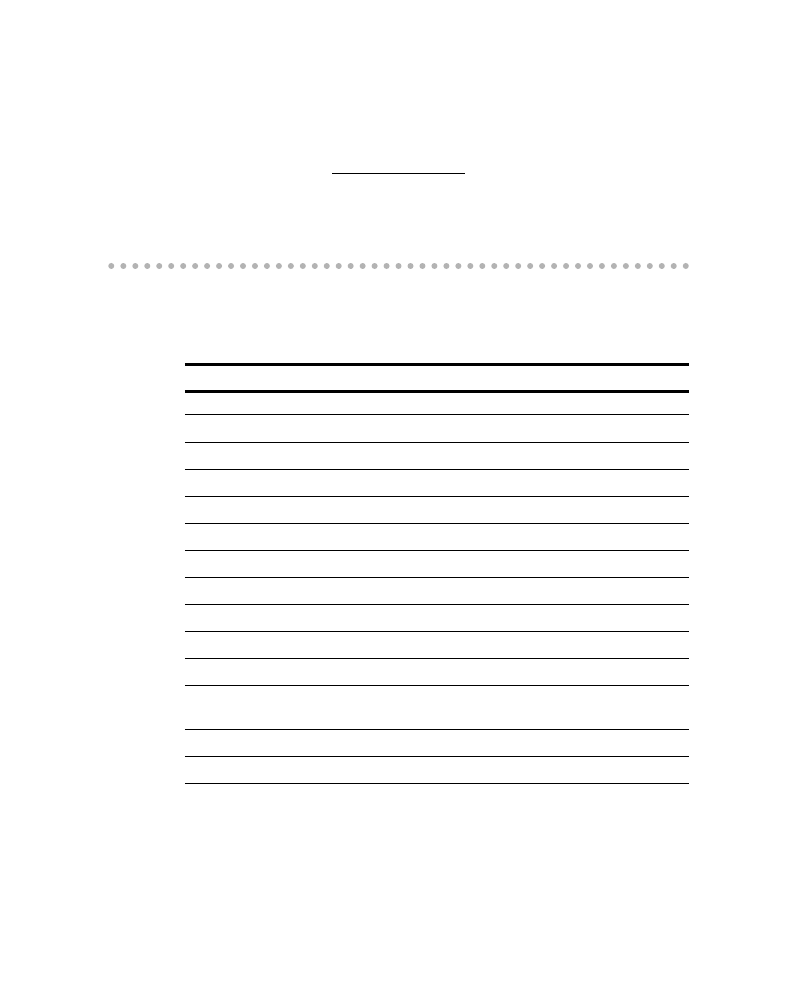
Appendix A
Verb Tables
Regular Arabic Verbs in the Past Tense
kataba (
kah-tah-bah; wrote)
Form
Pronunciation
Translation
‘anaa katabtu
ah-nah kah-tab-too
I wrote
‘anta katabta
an-tah kah-tab-tah
You wrote (M)
‘anti katabtii
an-tee kah-tab-tee
You wrote (F)
huwa kataba
hoo-wah kah-tah-bah
He wrote
hiya katabat
hee-yah kah-tah-bat
She wrote
naHnu katabnaa
nah-noo kah-tab-nah
We wrote
‘antum katabtum
an-toom kah-tab-toom
You wrote (MP)
‘antunna katabtunna
an-too-nah kah-tab-too-nah
You wrote (FP)
hum katabuu
hoom kah-tah-boo
They wrote (MP)
hunna katabna
hoo-nah kah-tab-nah
They wrote (FP)
antumaa katabtumaa
an-too-mah kah-tab-too-mah
You wrote (dual/
MP/FP)
humaa katabaa
hoo-mah kah-tah-bah
They wrote (dual/MP)
humaa katabataa
hoo-mah kah-tah-bah-tah
They wrote (dual/FP)
29_772704 appa.qxp 3/23/06 9:29 PM Page 317

darasa (
dah-rah-sah; studied)
Form
Pronunciation
Translation
‘anaa darastu
ah-nah dah-ras-too
I studied
‘anta darasta
an-tah dah-ras-tah
You studied (M)
‘anti darastii
an-tee dah-ras-tee
You studied (F)
huwa darasa
hoo-wah dah-rah-sah
He studied
hiya darasat
hee-yah dah-rah-sat
She studied
naHnu darasnaa
nah-noo dah-ras-nah
We studied
‘antum darastum
an-toom dah-ras-toom
You studied (MP)
‘antunna darastunna
an-too-nah dah-ras-too-nah
You studied (FP)
hum darasuu
hoom dah-rah-soo
They studied (MP)
hunna darasna
hoo-nah dah-ras-nah
They studied (FP)
antumaa darastumaa
an-too-mah dah-ras-too-mah
You studied (dual/
MP/FP)
humaa darasaa
hoo-mah dah-rah-sah
They studied (dual/MP)
humaa darasataa
hoo-mah dah-rah-sah-tah
They studied (dual/FP)
‘akala (
ah-kah-lah; ate)
Form
Pronunciation
Translation
‘anaa ‘akaltu
ah-nah ah-kal-too
I ate
‘anta ‘akalta
ahn-tah ah-kal-tah
You ate (M)
‘anti ‘akalti
ahn-tee ah-kal-tee
You ate (F)
huwa ‘akala
hoo-wah ah-kah-lah
He ate
hiya ‘akalat
hee-yah ah-kah-lat
She ate
naHnu ‘akalnaa
nah-noo ah-kal-nah
We ate
‘antum ‘akaltum
ahn-toom ah-kal-toom
You ate (MP)
‘antunna ‘akaltunna
ahn-too-nah ah-kal-too-nah
You ate (FP)
Part V: Appendixes ________________________________________________
318
29_772704 appa.qxp 3/23/06 9:29 PM Page 318
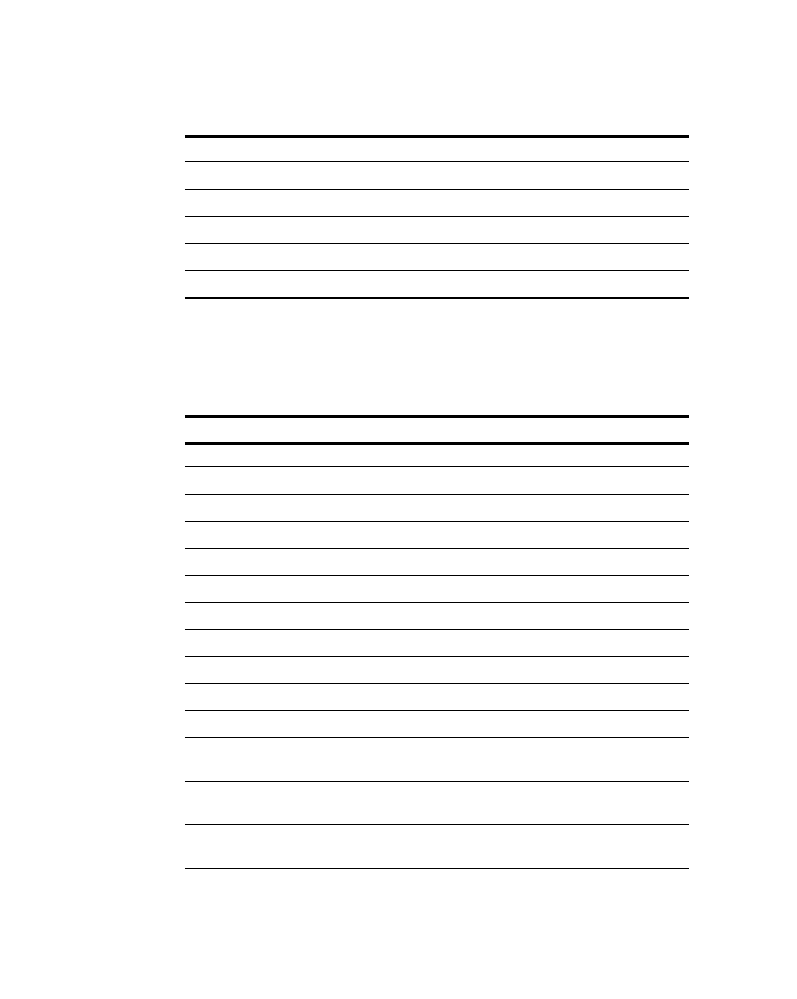
Form
Pronunciation
Translation
hum ‘akaluu
hoom ah-kah-loo
They ate (MP)
hunna ‘akalna
hoo-nah ah-kal-nah
They ate (FP)
antumaa ‘akaltumaa
ahn-too-mah ah-kal-too-mah
You ate (dual/MP/FP)
humaa ‘akalaa
hoo-mah ah-kah-lah
They ate (dual/MP)
humaa ‘akalataa
hoo-mah ah-kah-lah-tah
They ate (dual/FP)
Regular Arabic Verbs in the Present Tense
yaktubu (
yak-too-boo; to write)
Form
Pronunciation
Translation
‘anaa ‘aktubu
ah-nah ak-too-boo
I am writing
‘anta taktubu
an-tah tak-too-boo
You are writing (M)
‘anti taktubiina
an-tee tak-too-bee-nah
You are writing (F)
huwa yaktubu
hoo-wah yak-too-boo
He is writing
hiya taktubu
hee-yah tak-too-boo
She is writing
naHnu naktubu
nah-noo nak-too-boo
We are writing
‘antum taktubuuna
an-toom tak-too-boo-nah
You are writing (MP)
‘antunna taktubna
an-too-nah tak-toob-nah
You are writing (FP)
hum yaktubuuna
hoom yak-too-boo-nah
They are writing (MP)
hunna yaktubna
hoo-nah yak-toob-nah
They are writing (FP)
antumaa taktubaani
an-too-mah tak-too-bah-nee
You are writing (dual/
MP/FP)
humaa yaktubaani
hoo-mah yak-too-bah-nee
They are writing (dual/
MP)
humaa taktubaani
hoo-mah tak-too-bah-nee
They are writing (dual/
FP)
319
______________________________________________ Appendix A: Verb Tables
29_772704 appa.qxp 3/23/06 9:29 PM Page 319

yadrusu (
yad-roo-soo; to study)
Form
Pronunciation
Translation
‘anaa ‘adrusu
ah-nah ad-roo-soo
I am studying
‘anta tadrusu
an-tah tad-roo-soo
You are studying (M)
‘anti tadrusiina
an-tee tad-roo-see-nah
You are studying (F)
huwa yadrusu
hoo-wah yad-roo-soo
He is studying
hiya tadrusu
hee-yah tad-roo-soo
She is studying
naHnu nadrusu
nah-noo nad-roo-soo
We are studying
‘antum tadrusuuna
an-toom tad-roo-soo-nah
You are studying (MP)
‘antunna tadrusna
an-too-nah tad-roos-nah
You are studying (FP)
hum yadrusuuna
hoom yad-roo-soo-nah
They are studying (MP)
hunna yadrusna
hoo-nah yad-roos-nah
They are studying (FP)
antumaa tadrusaani
an-too-mah tad-roo-sah-nee
You are studying (dual/
MP/FP)
humaa yadrusaani
hoo-mah yad-roo-sah-nee
They are studying
(dual/MP)
humaa tadrusaani
hoo-mah tad-roo-sah-nee
They are studying
(dual/FP)
ya’kulu (
yah-koo-loo; to eat)
Form
Pronunciation
Translation
‘anaa ‘a’kulu
ah-nah ah-koo-loo
I am eating
‘anta ta’kulu
ahn-tah tah-koo-loo
You are eating (M)
‘anti ta’kuliina
ahn-tee tah-koo-lee-nah
You are eating (F)
huwa ya’kulu
hoo-wah yah-koo-loo
He is eating
hiya ta’kulu
hee-yah tah-koo-loo
She is eating
naHnu na’kulu
nah-noo nah-koo-loo
We are eating
‘antum ta’kuluuna
ahn-toom tah-koo-loo-nah
You are eating (MP)
‘antunna ta’kulna
ahn-too-nah tah-kool-nah
You are eating (FP)
Part V: Appendixes ________________________________________________
320
29_772704 appa.qxp 3/23/06 9:29 PM Page 320

Form
Pronunciation
Translation
hum ya’kuluuna
hoom yah-koo-loo-nah
They are eating (MP)
hunna ya’kulna
hoo-nah yah-kool-nah
They are eating (FP)
antumaa ta’kulaani
ahn-too-mah tah-koo-lah-nee
You are eating (dual/
MP/FP)
humaa ya’kulaani
hoo-mah yah-koo-lah-nee
They are eating (dual/
MP)
humaa ta’kulaani
hoo-mah tah-koo-lah-nee
They are eating (dual/
FP)
Regular Arabic Verbs in the Future Tense
sa-yaktubu (
sah-yak-too-boo; will write)
Form
Pronunciation
Translation
‘anaa sa-’aktubu
ah-nah sah-ak-too-boo
I will write
‘anta sa-taktubu
an-tah sah-tak-too-boo
You will write (M)
‘anti sa-taktubiina
an-tee sah-tak-too-bee-nah
You will write (F)
huwa sa-yaktubu
hoo-wah sah-yak-too-boo
He will write
hiya sa-taktubu
hee-yah sah-tak-too-boo
She will write
naHnu sa-naktubu
nah-noo sah-nak-too-boo
We will write
‘antum sa-taktubuuna
an-toom sah-tak-too-boo-nah
You will write (MP)
‘antunna sa-taktubna
an-too-nah sah-tak-toob-nah
You will write (FP)
hum sa-yaktubuuna
hoom sah-yak-too-boo-nah
They will write (MP)
hunna sa-yaktubna
hoo-nah sah-yak-toob-nah
They will write (FP)
antumaa sa-taktubaani
an-too-mah sah-tak-too-
You will write (dual/
bah-nee
MP/FP)
humaa sa-yaktubaani
hoo-mah sah-yak-too-bah-nee They will write (dual/
MP)
humaa sa-taktubaani
hoo-mah sah-tak-too-bah-nee
They will write (dual/FP)
321
______________________________________________ Appendix A: Verb Tables
29_772704 appa.qxp 3/23/06 9:29 PM Page 321

sa-yadrusu (
sah-yad-roo-soo; will study)
Form
Pronunciation
Translation
‘anaa sa-’adrusu
ah-nah sah-ad-roo-soo
I will study
‘anta sa-tadrusu
an-tah sah-tad-roo-soo
You will study (M)
‘anti sa-tadrusiina
an-tee sah-tad-roo-see-nah
You will study (F)
huwa sa-yadrusu
hoo-wah sah-yad-roo-soo
He will study
hiya sa-tadrusu
hee-yah sah-tad-roo-soo
She will study
naHnu sa-nadrusu
nah-noo sah-nad-roo-soo
We will study
‘antum sa-tadrusuuna
an-toom sah-tad-roo-soo-nah
You will study (MP)
‘antunna sa-tadrusna
an-too-nah sah-tad-roos-nah
You will study (FP)
hum sa-yadrusuuna
hoom sah-yad-roo-soo-nah
They will study (MP)
hunna sa-yadrusna
hoo-nah sah-yad-roos-nah
They will study (FP)
antumaa sa-tadrusaani
an-too-mah sah-tad-roo-sah-nee You will study (dual/
MP/FP)
humaa sa-yadrusaani
hoo-mah sah-yad-roo-sah-nee They will study (dual/
MP)
humaa sa-tadrusaani
hoo-mah sah-tad-roo-sah-nee They will study (dual/
FP)
sa-ya’kulu (
sah-yah-koo-loo; will eat)
Form
Pronunciation
Translation
‘anaa sa-’a’kulu
ah-nah sah-ah-koo-loo
I will eat
‘anta sa-ta’kulu
ahn-tah sah-tah-koo-loo
You will eat (M)
‘anti sa-ta’kuliina
ahn-tee sah-tah-koo-lee-nah
You will eat (F)
huwa sa-ya’kulu
hoo-wah sah-yah-koo-loo
He will eat
hiya sa-ta’kulu
hee-yah sah-tah-koo-loo
She will eat
naHnu sa-na’kulu
nah-noo sah-nah-koo-loo
We will eat
‘antum sa-ta’kuluuna
ahn-toom sah-tah-koo-loo-nah You will eat (MP)
‘antunna sa-ta’kulna
ahn-too-nah sah-tah-kool-nah You will eat (FP)
Part V: Appendixes ________________________________________________
322
29_772704 appa.qxp 3/23/06 9:29 PM Page 322
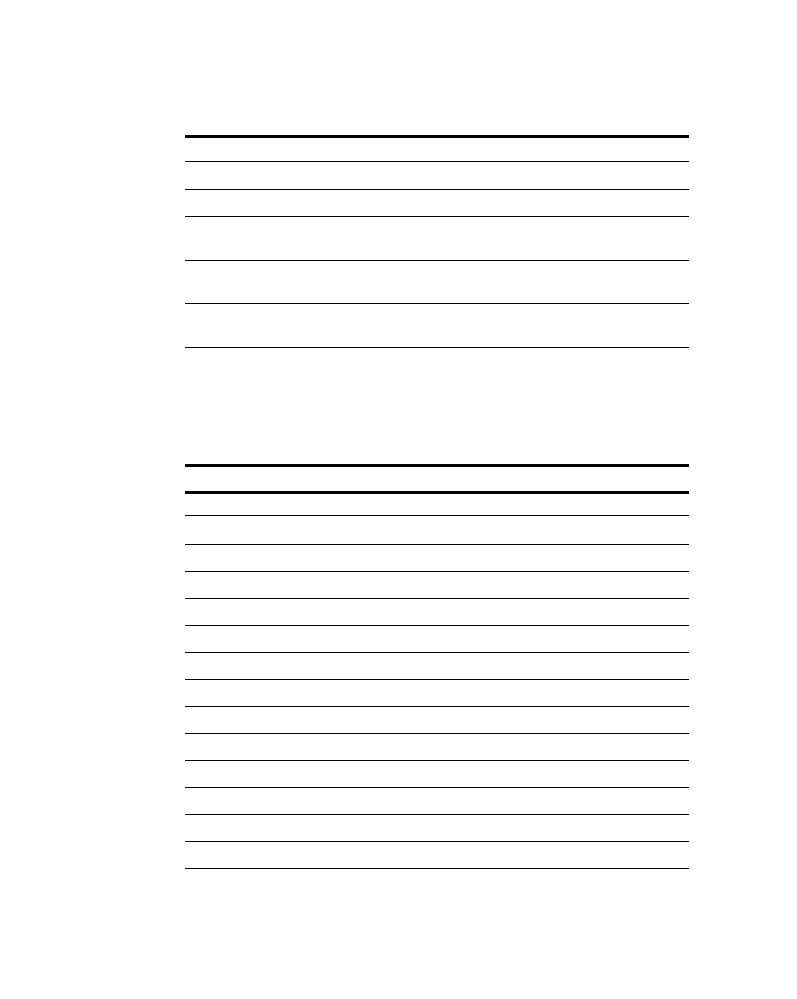
Form
Pronunciation
Translation
hum sa-ya’kuluuna
hoom sah-yah-koo-loo-nah
They will eat (MP)
hunna sa-ya’kulna
hoo-nah sah-yah-kool-nah
They will eat (FP)
antumaa sa-ta’kulaani
ahn-too-mah sah-tah-
You will eat (dual/
koo-lah-nee
MP/FP)
humaa sa-ya’kulaani
hoo-mah sah-yah-koo-
They will eat (dual/MP)
lah-nee
humaa sa-ta’kulaani
hoo-mah sah-tah-koo-
They will eat (dual/FP)
lah-nee
Irregular Arabic Verbs in the Past Tense
baa’a (
bah-ah; sold)
Form
Pronunciation
Translation
‘anaa bi’tu
ah-nah beeh-too
I sold
‘anta bi’ta
ahn-tah beeh-tah
You sold (M)
‘anti bi’tii
ahn-tee beeh-tee
You sold (F)
huwa baa’a
hoo-wah bah-hah
He sold
hiya baa’at
hee-yah bah-at
She sold
naHnu bi’naa
nah-noo beeh-nah
We sold
‘antum bi’tum
ahn-toom beeh-toom
You sold (MP)
‘antunna bi’tunna
ahn-too-nah beeh-too-nah
You sold (FP)
hum baa’uu
hoom bah-ooh
They sold (MP)
hunna bi’na
hoo-nah beeh-nah
They sold (FP)
antumaa bi’tumaa
ahn-too-mah beeh-too-mah
You sold (dual/MP/FP)
humaa baa’aa
hoo-mah bah-ah
They sold (dual/MP)
humaa baa’ataa
hoo-mah bah-ah-tah
They sold (dual/FP)
323
______________________________________________ Appendix A: Verb Tables
29_772704 appa.qxp 3/23/06 9:29 PM Page 323

‘ishtaraa (
eesh-tah-rah; bought)
Form
Pronunciation
Translation
‘anaa ‘ishtaraytu
ah-nah eesh-tah-ray-too
I bought
‘anta ‘ishtarayta
ahn-tah eesh-tah-ray-tah
You bought (M)
‘anti ‘ishtarayti
ahn-tee eesh-tah-ray-tee
You bought (F)
huwa ‘ishtaraa
hoo-wah eesh-tah-rah
He bought
hiya ‘ishtarat
hee-yah eesh-tah-rat
She bought
naHnu ‘ishtaraynaa
nah-noo eesh-tah-ray-nah
We bought
‘antum ‘ishtaraytum
ahn-toom eesh-tah-ray-toom
You bought (MP)
‘antunna ‘ishtaraytunna
ahn-too-nah eesh-tah-
You bought (FP)
ray-too-nah
hum ‘ishtaraw
hoom eesh-tah-raw
They bought (MP)
hunna ‘ishtarayna
hoo-nah eesh-tah-ray-nah
They bought (FP)
antumaa ‘ishtaraytumaa
ahn-too-mah eesh-tah-ray-
You bought (dual/
too-mah
MP/FP)
humaa ‘ishtarayaa
hoo-mah eesh-tah-rah-yah
They bought (dual/MP)
humaa ‘ishtarayataa
hoo-mah eesh-tah-rah-
They bought (dual/FP)
yah-tah
zaara (
zah-rah; visited)
Form
Pronunciation
Translation
‘anaa zurtu
ah-nah zoor-too
I visited
‘anta zurta
ahn-tah zoor-tah
You visited (M)
‘anti zurtii
ahn-tee zoor-tee
You visited (F)
huwa zaara
hoo-wah zah-rah
He visited
hiya zaarat
hee-yah zah-rat
She visited
naHnu zurnaa
nah-noo zoor-nah
We visited
‘antum zurtum
ahn-toom zoor-toom
You visited (FP)
Part V: Appendixes ________________________________________________
324
29_772704 appa.qxp 3/23/06 9:29 PM Page 324
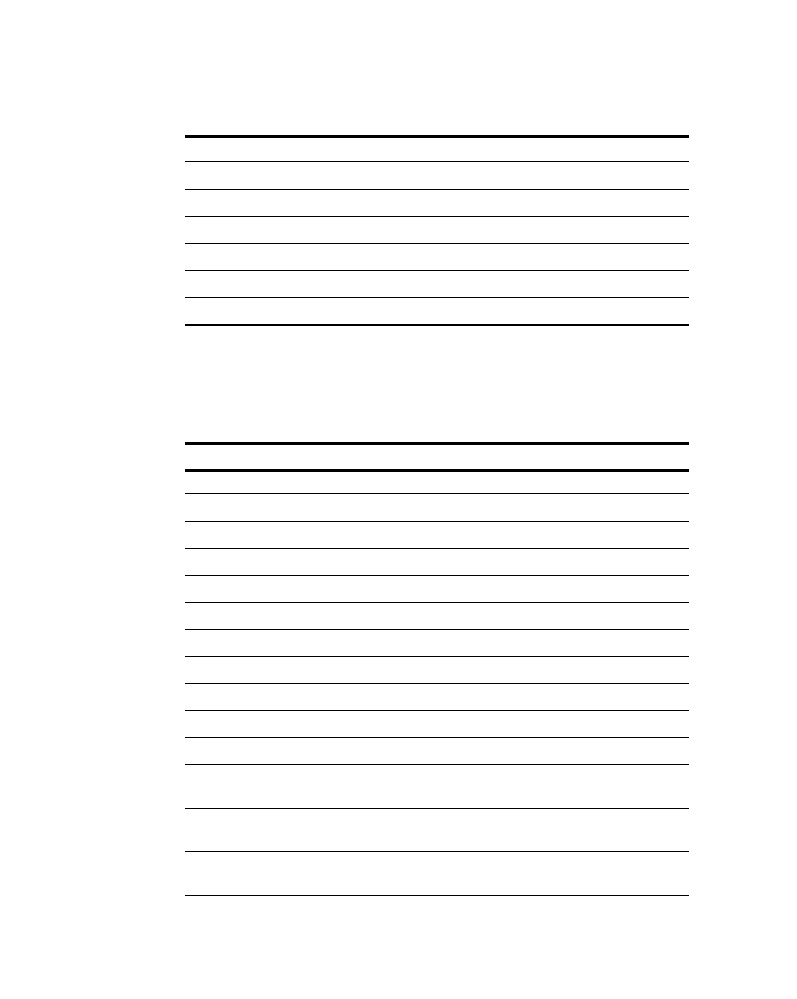
Form
Pronunciation
Translation
‘antunna zurtunna
ahn-too-nah zoor-too-nah
You visited (MP)
hum zaaruu
hoom zah-roo
They visited (MP)
hunna zurna
hoo-nah zoor-nah
They visited (FP)
antumaa zurtumaa
ahn-too-mah zoor-too-mah
You visited (dual/MP/FP)
humaa zaaraa
hoo-mah zah-rah
They visited (dual/MP)
humaa zaarataa
hoo-mah zah-rah-tah
They visited (dual/FP)
Irregular Arabic Verbs in the Present Tense
yabii’u (
yah-bee-oo; to sell)
Form
Pronunciation
Translation
‘anaa ‘abii’u
ah-nah ah-bee-oo
I am selling
‘anta tabii’u
ahn-tah tah-bee-oo
You are selling (M)
‘anti tabii’iina
ahn-tee tah-bee-ee-nah
You are selling (F)
huwa yabii’u
hoo-wah yah-bee-oo
He is selling
hiya tabii’u
hee-yah tah-bee-oo
She is selling
naHnu nabii’u
nah-noo nah-bee-oo
We are selling
‘antum tabii’uuna
ahn-toom tah-bee-oo-nah
You are selling (MP)
‘antunna tabi’na
ahn-too-nah tah-beeh-nah
You are selling (FP)
hum yabii’uuna
hoom yah-bee-oo-nah
They are selling (MP)
hunna yabi’na
hoo-nah yah-beeh-nah
They are selling (FP)
antumaa tabii’aani
ahn-too-mah tah-bee-ah-nee
You are selling (dual/
MP/FP)
humaa yabii’aani
hoo-mah yah-bee-ah-nee
They are selling (dual/
MP)
humaa tabii’aani
hoo-mah tah-bee-ah-nee
They are selling (dual/
FP)
325
______________________________________________ Appendix A: Verb Tables
29_772704 appa.qxp 3/23/06 9:29 PM Page 325

yashtarii (
yash-tah-ree; to buy)
Form
Pronunciation
Translation
‘anaa ‘ashtarii
ah-nah ash-tah-ree
I am buying
‘anta tashtarii
ahn-tah tash-tah-ree
You are buying (M)
‘anti tashtariina
ahn-tee tash-tah-ree-nah
You are buying (F)
huwa yashtarii
hoo-wah yash-tah-ree
He is buying
hiya tashtarii
hee-yah tash-tah-ree
She is buying
naHnu nashtarii
nah-noo nash-tah-ree
We are buying
‘antum tashtaruuna
ahn-toom tash-tah-roo-nah
You are buying (MP)
‘antunna tashtariina
ahn-too-nah tash-tah-ree-nah
You are buying (FP)
hum yashtaruuna
hoom yash-tah-roo-nah
They are buying (MP)
hunna yashtariina
hoo-nah yash-tah-ree-nah
They are buying (FP)
antumaa tashtariyaani
ahn-too-mah tash-tah-
You are buying (dual/
ree-yah-nee
MP/FP)
humaa yashtariyaani
hoo-mah yash-tah-ree-
They are buying
yah-nee
(dual/MP)
humaa tashtariyaani
hoo-mah tash-tah-ree-
They are buying
yah-nee
(dual/FP)
yazuuru (
yah-zoo-roo; to visit)
Form
Pronunciation
Translation
‘anaa ‘azuuru
ah-nah ah-zoo-roo
I am visiting
‘anta tazuuru
ahn-tah tah-zoo-roo
You are visiting (M)
‘anti tazuuriina
ahn-tee tah-zoo-ree-nah
You are visiting (F)
huwa yazuuru
hoo-wah yah-zoo-roo
He is visiting
hiya tazuuru
hee-yah tah-zoo-roo
She is visiting
naHnu nazuuru
nah-noo nah-zoo-roo
We are visiting
‘antum tazuuruuna
ahn-toom tah-zoo-roo-nah
You are visiting (MP)
Part V: Appendixes ________________________________________________
326
29_772704 appa.qxp 3/23/06 9:29 PM Page 326
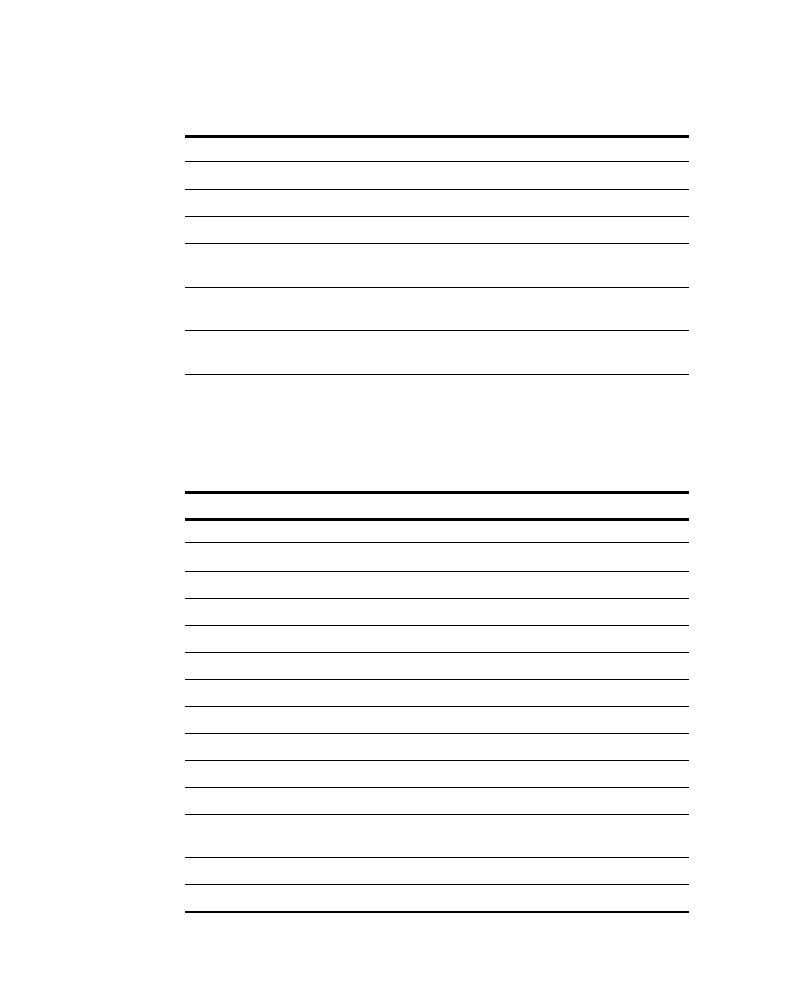
Form
Pronunciation
Translation
‘antunna tazurna
ahn-too-nah tah-zoor-nah
You are visiting (FP)
hum yazuuruuna
hoom yah-zoo-roo-nah
They are visiting (MP)
hunna yazurna
hoo-nah yah-zoor-nah
They are visiting (FP)
antumaa tazuuraani
ahn-too-mah tah-zoo-rah-nee
You are visiting
(dual/MP/FP)
humaa yazuuraani
hoo-mah yah-zoo-rah-nee
They are visiting
(dual/MP)
humaa tazuuraani
hoo-mah taz-zoo-rah-nee
They are visiting
(dual/FP)
Irregular Arabic Verbs in the Future Tense
sa-yabii’u (
sah-yah-bee-oo; will sell)
Form
Pronunciation
Translation
‘anaa sa-’abii’u
ah-nah sah-ah-bee-oo
I will sell
‘anta sa-tabii’u
ahn-tah sah-tah-bee-oo
You will sell (M)
‘anti sa-tabii’iina
ahn-tee sah-tah-bee-ee-nah
You will sell (F)
huwa sa-yabii’u
hoo-wah sah-yah-bee-oo
He will sell
hiya sa-tabii’u
hee-yah sah-tah-bee-oo
She will sell
naHnu sa-nabii’u
nah-noo sah-nah-bee-oo
We will sell
‘antum sa-tabii’uuna
ahn-toom sah-tah-bee-oo-nah You will sell (MP)
‘antunna sa-tabi’na
ahn-too-nah sah-tah-beeh-nah You will sell (FP)
hum sa-yabii’uuna
hoom sah-yah-bee-oo-nah
They will sell (MP)
hunna sa-yabi’na
hoo-nah sah-yah-beeh-nah
They will sell (FP)
antumaa sa-tabii’aani
ahn-too-mah sah-tah-bee-
You will sell (dual/
ah-nee
MP/FP)
humaa sa-yabii’aani
hoo-mah sah-yah-bee-ah-nee They will sell (dual/MP)
humaa sa-tabii’aani
hoo-mah sah-tah-bee-ah-nee
They will sell (dual/FP)
327
______________________________________________ Appendix A: Verb Tables
29_772704 appa.qxp 3/23/06 9:29 PM Page 327

sa-yashtarii (
sah-yash-tah-ree; will buy)
Form
Pronunciation
Translation
‘anaa sa-’ashtarii
ah-nah sah-ash-tah-ree
I will buy
‘anta sa-tashtarii
ahn-tah sah-tash-tah-ree
You will buy (M)
‘anti sa-tashtariina
ahn-tee sah-tash-tah-ree-nah
You will buy (F)
huwa sa-yashtarii
hoo-wah sah-yash-tah-ree
He will buy
hiya sa-tashtarii
hee-yah sah-tash-tah-ree
She will buy
naHnu sa-nashtarii
nah-noo sah-nash-tah-ree
We will buy
‘antum sa-tashtaruuna
ahn-toom sah-tash-tah-
You will buy (MP)
roo-nah
‘antunna sa-tashtariina
ahn-too-nah sah-tash-tah-
You will buy (FP)
ree-nah
hum sa-yashtaruuna
hoom sah-yash-tah-roo-nah
They will buy (MP)
hunna sa-yashtariina
hoo-nah sah-yash-tah-
They will buy (FP)
ree-nah
antumaa sa-
ahn-too-mah sah-tash-tah-
You will buy (dual/
tashtariyaani
ree-yah-nee
MP/FP)
humaa sa-yashtariyaani hoo-mah sah-yash-tah-ree-
They will buy (dual/MP)
yah-nee
humaa sa-tashtariyaani hoo-mah sah-tash-tah-ree-
They will buy (dual/FP)
yah-nee
sa-yazuuru (
sah-yah-zoo-roo; will visit)
Form
Pronunciation
Translation
‘anaa sa-’azuuru
ah-nah sah-ah-zoo-roo
I will visit
‘anta sa-tazuuru
ahn-tah sah-tah-zoo-roo
You will visit (M)
‘anti sa-tazuuriina
ahn-tee sah-tah-zoo-ree-nah
You will visit (F)
huwa sa-yazuuru
hoo-wah sah-yah-zoo-roo
He will visit
hiya sa-tazuuru
hee-yah sah-tah-zoo-roo
She will visit
Part V: Appendixes ________________________________________________
328
29_772704 appa.qxp 3/23/06 9:29 PM Page 328
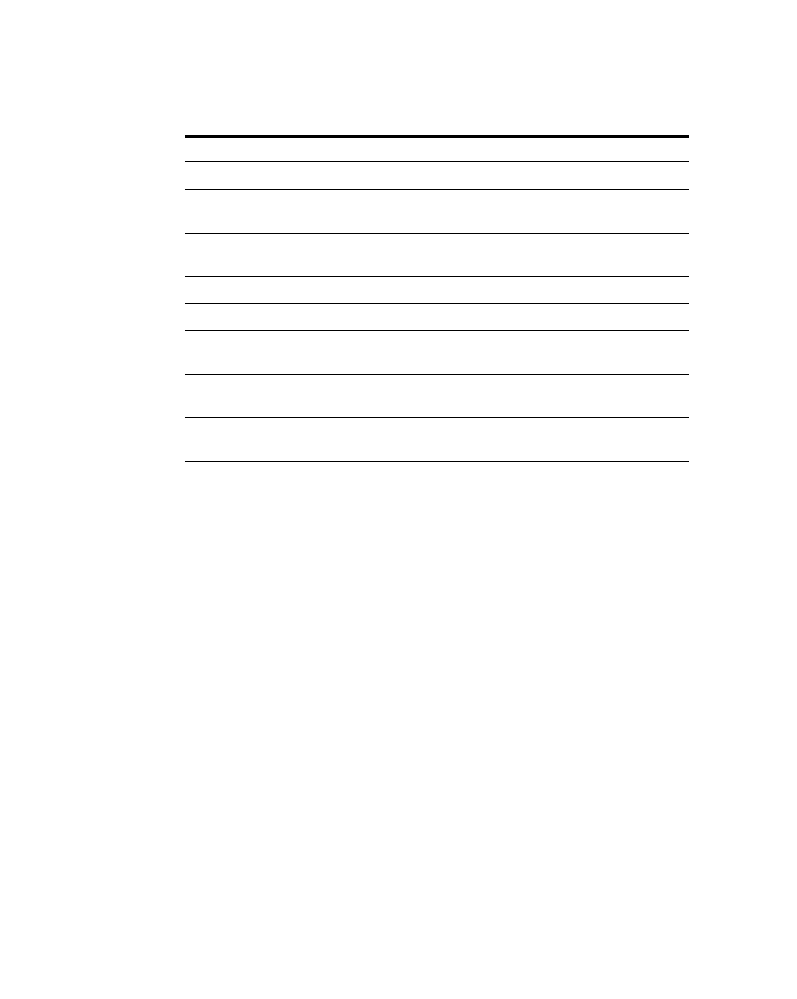
Form
Pronunciation
Translation
naHnu sa-nazuuru
nah-noo sah-nah-zoo-roo
We will visit
‘antum sa-tazuuruuna
ahn-toom sah-tah-zoo-
You will visit (MP)
roo-nah
‘antunna sa-tazurna
ahn-too-nah sah-tah-
You will visit (FP)
zoor-nah
hum sa-yazuuruuna
hoom sah-yah-zoo-roo-nah
They will visit (MP)
hunna sa-yazurna
hoo-nah sah-yah-zoor-nah
They will visit (FP)
antumaa sa-tazuuraani
ahn-too-mah sah-tah-zoo-
You will visit (dual/
rah-nee
MP/FP)
humaa sa-yazuuraani
hoo-mah sah-yah-zoo-
They will visit (dual/MP)
rah-nee
humaa sa-tazuuraani
hoo-mah sah-tah-zoo-
They will visit (dual/FP)
rah-nee
329
______________________________________________ Appendix A: Verb Tables
29_772704 appa.qxp 3/23/06 9:29 PM Page 329

Part V: Appendixes ________________________________________________
330
29_772704 appa.qxp 3/23/06 9:29 PM Page 330

A
‘aala (ah-lah) F: machine
‘aalat al-faks (ah-lat al-fah-kes) F: fax
machine
‘aalat al-Hisaab (ah-lat al-hee-sab) F:
computer
‘aalat al-Tibaa’ (ah-lat ah-tee-bah) F:
photocopy machine
‘aaSifa (ah-see-fah) F: storm
‘abriil (ah-beh-reel): April
‘adas (ah-das) M: lentils
aDH-DHuhr (ah-zoo-her): noon
‘afookaat (ah-foo-kat) M: avocado
‘aghusTus (ah-goo-seh-toos): August
‘ajiib (ah-jeeb): amazing
‘akala (ah-kah-lah): ate
al-’aHad (al-ah-had): Sunday
al-anbaj (al-ann-baj): mango
al-’arbi’aa’ (al-ah-reh-bee-ah): Wednesday
al-’asr (al-ah-ser): late afternoon
al-ghuulf (al-goo-lef) M: golf
al-’ithnayn (al-eeth-nah-yen): Monday
al-jubun (al-joo-boon) M: cheese
al-jumu’a (al-joo-moo-ah): Friday
al-khamiis (al-khah-mees): Thursday
al-maal (al-mal) M: money
al-masaa’ (al-mah-sah) M: evening
al-mustakhdim (al-moos-tak-deem):
employer
‘amal (ah-mal) M: work, job
‘amti’a (am-tee-ah) F: luggage
‘anf (ah-nef) M: nose
‘ariiD (ah-reed): wide
‘arqaam (ah-reh-kam) M: numbers
‘asal (ah-sal) M: honey
‘aSdiqaa’ (ass-dee-kah): friends
‘ashaa’ (ah-shah) M: dinner
‘asnaan (ass-nahn) M: teeth
aS-SabaaH (ah-sah-bah) M: morning
as-sabt (ass-sah-bet): Saturday
ath-thulathaa’ (ah-thoo-lah-thah): Tuesday
‘awaan fiDDiyya (ah-wan fee-dee-yah):
silverware
‘ayn (ah-yen) F: eye
‘ayna (eh-yeh-nah): where
‘aynayn (ah-yeh-nayn) M: eyes
‘ayshu al-ghuraab (ay-shoo al-goo-rab) M:
mushrooms
‘aziima (ah-zee-mah) F: determination
B
baab (bahb) F: door
baadhinjaan (bah-zeen-jan) F: eggplant
ba’da (bah-dah): after
ba’da aDH-DHuhr (bah-dah ah-zoo-her):
afternoon
balcoon (bal-koon) M: balcony
bard (bah-red): cold
barq (bah-rek) M: lightning
baSla (bass-lah) F: onions
baTaaTa (bah-tah-tah) F: potato
Arabic-English
Mini-Dictionary
30_772704 appb.qxd 3/23/06 9:31 PM Page 331

332
Part V: Appendixes
baTTiikh (bah-teek) M: cantaloupe
bayD (bah-yed) M: eggs
bayt (bah-yet) M: house
baziilya (bah-zee-lee-yah) F: peas
biiyaano (bee-yah-noo) M: piano
bikam (bee-kam): how much
bint (bee-neht) F: girl
biTaaqat as-saa’iq (bee-tah-kat ah-sah-
eek) F: driver’s license
buuq (book) M: trumpet
D
daftar (daf-tar) M: notebook
dajaaj (dah-jaj) M: chicken
dallaaHa (dah-lah-hah) F: watermelon
Dammat ‘awraaq (dah-mat aw-rak) F:
stapler
daqiiqa (da-kee-kah) F: minute
daraaja/darraaja (dah-rah-jah) F: cycling
daraja (dah-rah-jah) F: degrees
darasa (dah-rah-sah): studied
darraaja (dah-rah-jah) F: bicycle
darraaja naariyya (dah-rah-jah nah-ree-
yah) F: motorcycle
dawaa’ (dah-wah) M: medicine
dhaalika (zah-lee-kah) M: that
dhahaba (zah-hah-bah): went
Dhahr (zah-her) M: back
DHuhr (do-her): noon
dhurra (zoo-rah): corn
diraa’ (dee-rah) M: arm
Disambar (dee-sahm-bar): December
dukkaan (doo-kan) M: store
duush (doosh) F: shower
F
fa’ala (fah-ah-lah): did
fakhaar (fah-kar) M: pottery
fam (fahm) M: mouth
farraan (fah-ran) M: oven
fawz (fah-wez) M: win
fibraayir (feeb-rah-yeer): February
fluut (feh-loot) M: flute
fulful (fool-fool) M: pepper
funduq (foon-dook) M: hotel
furusiiyya (foo-roo-see-yah) F: horseback
riding
fuTuur (foo-toor) M: breakfast
fuul (fool): beans
G
ghadan (rah-dan): tomorrow
ghaDbaan (rad-bahn): angry
ghasuul as-sha’r (gah-sool ah-shah-er) M:
shampoo
ghidaa’ (gee-dah) M: lunch
ghinaa’ (ree-nah): singing
ghurfa (roor-fah) F: room
ghuul (roohl) M: ghost
H
haadhaa (hah-zah) M: this
haadhihi (hah-zee-hee) F: this
Haafila (hah-fee-lah) F: bus
haatif (haa-teef) M: telephone
haa’ulaa’i (hah-oo-lah-ee) MP/FP: these
Hajzu (haj-zoo): reservation
Hakam (hah-kam) M: referee
Haliib (hah-leeb) M: milk
Hallaaq (hah-lak) M: barber, hairdresser
Halwa al-jaliidiiya (hal-wah al-jah-lee-dee-
yah) F: ice cream
Harara (hah-rah-rah) F: temperature
Hariira (hah-ree-rah) F: Middle Eastern
soup
Hasaa’ (hah-sah) F: soup
30_772704 appb.qxd 3/23/06 9:31 PM Page 332

Appendix B: Mini-Dictionary
333
Haziin (hah-zeen): sad
Hidaa’ (hee-dah): shoe
hilyoon (heel-yoon) M: asparagus
Hiwaar (hee-war) M: conversation
hiwaaya (hee-waa-yah) F: hobby
Hiyaaka (hee-yah-kah) F: knitting
Hizaam (hee-zam) M: belt
Hubuub al-fuTuur (hoo-boob al-foo-toor)
M: breakfast cereal
I
‘iiwaa’ (ee-wah) F: accommodations
‘ijaaSa (ee-jah-sah) F: pear
‘ilaaj (ee-laj) M: treatment
‘inab (ee-nab) M: grapes
‘insiHaab (een-see-hab) M: withdrawal
‘isfaanaakh (ees-fah-nak) M: spinach
‘islaam (ees-lahm): Islam
‘asm ‘aa’ilii (ah-sem ah-ee-lee) M: last
name, family name
‘ism shakhsii (ee-sem shak-see) M: first
name
‘istiqbaal (ees-teek-bal) M: reception
‘iyaada (ee-yah-dah) F: clinic
J
jallaaba (jah-lah-bah) F: Arab dress
jam’iyya (jam-ee-yah) F: university
jariida (jah-ree-dah) F: newspaper
jasad (jah-sad) M: body
jawaarib (jah-wah-reeb) F: socks
jawaaz as-safar (jah-waz ah-sah-far) M:
passport
jawharii (jaw-hah-ree) M: jeweler
jumbaaz (joo-meh-baz) M: gymnastics
jumla (joom-lah) F: sentence
K
ka’k (kahk) M: cake
ka’k ash-shuukuulaat (kahk ah-shoo-koo-
lat) M: chocolate cake
ka’s (kahs) M: glass
kabiir (kah-beer): big
kalb (kah-leb) M: dog
kalima (kah-lee-mah) F: word
kam min (kam meen): how many
kam’a (kam-ah) F: truffles
kamanja (kah-mah-neh-jah) F: violin
kaswa (kass-wah) F: dress
kataba (kah-tah-bah): wrote
kayfa (keh-yeh-fah): how
khariif (kah-reef): fall
khasar (kah-sar) F: loss
khass (kass) M: lettuce
khata’ (kah-tah) M: foul
khawkha (kaw-kah) F: peach
khiyaar (kee-yar) M: cucumber
khizaana (kee-zah-nah) F: cupboard
khurshuuf (koor-shoof) M: artichokes
kitaab (kee-tab) M: book
kura (koo-rah) F: ball
kurat al-miDrab (koo-rat al-meed-rab) F:
tennis
kurat al-qadam (koo-raht al-kah-dam) F:
soccer
kurat as-salla (koo-rat ah-sah-lah) F:
basketball
kurat aT-Taa’ira (koo-rat ah-tah-ee-rah) F:
volleyball
kursiiy (koor-see) M: chair
kuub (koob) M: tumbler
ku’uus (koo-oos): glasses
30_772704 appb.qxd 3/23/06 9:31 PM Page 333

334
Part V: Appendixes
L
laa’ib (lah-eeb) M: player
laa’iba (lah-ee-bah) F: player
laHam (lah-ham) M: meat
laHam al-’ajal (lah-ham al-ah-jel) M: veal
laHam al-baqar (lah-ham al-bah-kar) M:
beef
laHam al-ghanam (lah-ham al-gah-nam)
M: lamb
layla (lah-ye-lah) F: night
laymoon (lay-moon) M: lemon
laymoon hindii (lay-moon heen-dee) M:
grapefruit
laymoon maaliH (lay-moon mah-leeh) M:
lime
lii maadhaa (lee maah-zaah): why
lisaan (lee-sahn) M: tongue
liSaaq (lee-sak) M: glue
lougha (loo-rah) F: language
M
maadhaa (maah-zaah): what
maaris (mah-rees): March
maayuu (mah-yoo): May
madiina (mah-dee-nah) F: city
maDmuun (mad-moon): included
madrasa (mad-rah-sah) F: school
maghsal (mag-sal) M: sink
maghsala (mag-sah-lah) F: sink
maHkama (mah-kah-mah) F: court
ma’iida (mah-ee-dah) F: stomach
makaan al-miilaad (mah-kan al-mee-lad)
M: place of birth
makhbaza (mak-bah-zah) F: bakery
maktab as-siyaaHa (mak-tab ah-see-yah-
hah) M: travel agency
maktaba (mak-tah-bah) F: bookstore,
library
malaabis (mah-lah-bees) M: clothes
malaabis riyaaDiyya (mah-lah-bees ree-
yah-dee-yah) M: uniforms
mal’ab (mah-lab) M: stadium
ma’luuma (mah-loo-mah) F: classified ads
ma’mal (mah-mal) M: factory
man (meh-n): who
manzil (man-zeel) M: house
maraafiq (mah-rah-feek) M: amenities
mariiD (mah-reed): sick
masaa’ (mah-sah) M: evening
masbaH (mas-bah) M: swimming pool
masjid (mas-jeed) M: mosque
maSraf (mas-raf) M: bank
maSrafii (mas-rah-fee) M: banker
mataa (mah-taah): when
maT’am (mat-ham) M: restaurant
maTar (mah-tar): rain
maTba’a (mat-bah-ah) F: printer
matHaf (mat-haf) M: museum
miftaH (meef-tah) M: key
miHfaDHa (meeh-fah-dah) F: briefcase
mihna (meeh-nah) F: job, profession
mil’aqa (meel-ah-kah): spoon
milH (mee-leh) M: salt
mimHaat (meem-hat) F: eraser
mindiil (meen-deel) M: napkin
mir’aat (meer-at) F: mirror
mirHaaD (meer-had) M: toilet
miS’ad (mees-ad) M: elevator
mishbak ‘awraaq (meesh-bak aw-rak) M:
paper clip
mi’Taf (meeh-taf) M: coat
mu’ajjanaat (moo-ah-jah-nat) F: pastries
mubaara (moo-bah-rah) F: game
mudda (moo-dah) F: period
muHaamiiy (moo-hah-mee): lawyer
mujrima (mooj-ree-mah) F: crime
musaa’ada (moo-sah-ah-dah) F: help,
assistance
30_772704 appb.qxd 3/23/06 9:31 PM Page 334

Appendix B: Mini-Dictionary
335
N
naqd (nah-ked) M: coin
naql (nah-kel): transportation
natiija (nah-tee-jah) F: score
naw’ al-Hisaab (nah-weh al-hee-sab) M:
type of account
nawm (nah-oom): sleep
Nufambar (noo-fahm-bar): November
nuur (noohr) M: light
Q
qaadiiy (kah-dee) M: judge
qaamuus (kah-moos) M: dictionary
qabla (kab-lah): before
qahwa (kah-wah) F: coffee
qalam ar-rasaas (kah-lam ah-rah-sas) M:
pencil
qalam jaaf (kah-lam jaf) M: pen
qalb (kah-leb) M: heart
qamiis (kah-mees) M: shirt
qara’a (kah-rah-ah): read
qarnabiiT (kar-nah-beet) M: broccoli
qaws (kah-wes) M: bow
qawsu quzaH (kah-wuh-suh koo-zah) M:
rainbow
qif (kee-f): stop
qiithaar (kee-thar) F: guitar
qiraa’a (kee-rah-ah) F: reading
qird (kee-red) M: monkey
qiTaar (kee-tar) M: train
qubba’a (koo-bah-ah) F: hat
qunnabiiT (koo-nah-beet) M: cauliflower
R
raatib (rah-teeb) M: salary
rabii’ (rah-beeh): spring
ra’D (rah-ed) M: thunder
rajul al-’iTfaa’ (rah-jool al-eet-fah):
firefighter
raqm (rah-kem) M: number
raqm al-haatif (rah-kem al-hah-teef) M:
telephone number
raqs (rah-kes) M: dancing
ra’s (rahs) M: head
rasm (rah-sem) M: drawing
ri’a (ree-ah) F: lung
riHla (reeh-lah) F: vacation
riiH (ree-eh) M: wind
rijl (ree-jel) F: leg
rubyaan (roob-yan) M: shrimp
rukba (roo-keh-bah) F: knee
ruTuuba (roo-too-bah): humidity
ruz (rooz) M: rice
S
saa’a (sah-ah) F: hour
Saabuun (sah-boon) M: soap
saaksuufuun (sak-soo-foon) M: saxophone
SabaaH (sah-bah) M: morning
safar (sah-far) M: trip
safiina (sah-fee-nah) F: ship
Saghiir (sah-reer): small
saHaab (sah-hab) M: cloud
SaHen (sah-hen) M: plate
saliim (sah-leem): healthy
samak (sah-mak) M: fish
sariir (sah-reer) M: bed
Sawt (sah-oot): noise
SayDaliiyya (sah-yeh-dah-lee-yah) F:
pharmacy
Sayf (sah-yef): summer
shams (shah-mes): sun
shanTa (shan-tah) F: suitcase
30_772704 appb.qxd 3/23/06 9:31 PM Page 335

336
Part V: Appendixes
shariiT siinimaa’ii (sha-reet see-nee-mah-
ee) M: movie
sharika (shah-ree-kah) F: company
sharikat al-Hisaab (shah-ree-kat al-hee-
sab) F: accounting firm
sharikat al-qaanuun (shah-ree-kat al-kah-
noon) F: law firm
shaTranj (sha-teh-rah-nej) M: chess
shawka (shaw-kah) F: fork
shawkat al-’asnaan (shaw-kat al-ass-nan)
F: toothbrush
shefanj (sheh-fanj) M: donuts
shiik (sheek) M: check
shi’r (shee-ar) M: poetry
shitaa’ (shee-tah): winter
shurTa (shoor-tah): police officer
shuukuulaat (shoo-koo-lat) M: chocolate
sibaaHa (see-bah-hah) F: swimming
Sibtambar (see-beh-tam-bar): September
siiniimaa (see-nee-mah) F: movie theater
sikkiin (see-keen) M: knife
sirwaal (seer-wal) M: pants
siyaaqat aS-Sayaara (see-yah-kat ah-sah-
yah-rah) F: racecar driving
skhoun (suh-koon): hot
su’aal (soo-aahl) M: question
SubH (soo-beh): morning
suHub (soo-hoob) M: clouds
sukkar (soo-kar) M: sugar
T
Ta’aam (tah-am): food
ta’aaqud (tah-ah-kood) M: pension
Taaksii (tak-see) M: taxi
taariikh al-’amal (tah-reek al-ah-mal) M:
work history
taariikh al-miilaad (tah-reek al-mee-lad)
M: date of birth
Tabaq (tah-bak): dish
Tabaq (tah-bak) M: floor
Tabl (tah-bel) M: drums
tafarraja (tah-fah-rah-jah): watched
takallama (tah-kah-lah-mah): spoke
TamaaTim (tah-mah-teem) F: tomatoes
Taqs (tah-kes) M: weather
tawaazun (tah-wah-zoon) M: balance
Tayyaarat waraq (tah-yah-raht wah-rak):
kite-flying
tazaHluq (tah-zah-look) M: skiing
tazalluj (tah-zah-looj) M: ice skating
thaaniya (tha-nee-yah) F: second
thalj (thah-lej) M: snow
thallaaja (thah-la-jah) F: refrigerator
thaman (tah-man) M: price
thuum muHammar (toom moo-hah-mar)
M: roasted garlic
tilifizyoon (tee-lee-feez-yoon) M:
television
tilka (teel-kah) F: that
tuuta (too-tah) F: strawberry
U
‘udhunayn (oo-zoo-nayn) M: ears
‘ujra (ooj-rah) F: fee
‘uktuubar (oo-key-too-bar): October
‘ulaa’ika (oo-lah-ee-kah) MP/FP: those
‘ummaal (ooh-mal) M: workers
‘usra (oos-rah) F: family
W
wadii’a (wah-dee-ah) F: deposit
walad (wah-lahd) M: boy
waraq al-la’ib (wah-rak ah-lah-eeb) F:
cards
waraq ‘ay-nab (wah-rak ay-nab) M:
stuffed vine leaves
30_772704 appb.qxd 3/23/06 9:31 PM Page 336

Appendix B: Mini-Dictionary
337
Y
yad (yahd) F: hand
yadhhabu (yaz-hah-boo): to go
yadrusu (yad-roo-soo): to study
yaf’alu (yaf-ah-loo): to do
yaftaHu (yaf-tah-hoo): to open
yaktubu (yak-too-boo): to write
ya’kulu (yah-koo-loo): to eat
yanaayir (yah-nah-yeer): January
yaqra’u (yak-rah-oo): to read
ya’rifu (yah-ree-foo): to know
yarji’u (yar-jee-oo): to return
yaskunu (yas-koo-noo): to live
yawm (yah-oom) M: day
yulyu (yoo-leh-yoo): July
yunyu (yoo-neh-yoo): June
Z
zayt (zah-yet) M: oil
zayt az-zaytuun (zah-yet ah-zay-toon) M:
olive oil
zaytuuna (zay-too-nah) F: olive
ziyaara (zee-yah-rah) F: visit
zubuun (zoo-boon): client
30_772704 appb.qxd 3/23/06 9:31 PM Page 337

A
accommodations: ‘iiwaa’ (ee-wah) F
accounting firm: sharikat al-Hisaab
(shah-ree-kat al-hee-sab) F
after: ba’da (bah-dah)
afternoon: ba’da aDH-DHuhr (bah-dah
ah-zoo-her)
amazing: ‘ajiib (ah-jeeb)
amenities: maraafiq (mah-rah-feek) M
angry: ghaDbaan (rad-bahn)
April: ‘abriil (ah-beh-reel)
Arab dress: jallaaba (jah-lah-bah) F
arm: diraa’ (dee-rah) M
artichokes: khurshuuf (koor-shoof) M
asparagus: hilyoon (heel-yoon) M
ate: ‘akala (ah-kah-lah)
August: ‘aghusTus (ah-goo-seh-toos)
avocado: ‘afookaat (ah-foo-kat) M
B
back: Dhahr (zah-her) M
bakery: makhbaza (mak-bah-zah) F
balance: tawaazun (tah-wah-zoon) M
balcony: balcoon (bal-koon) M
ball: kura (koo-rah) F
bank: maSraf (mas-raf) M
banker: maSrafii (mas-rah-fee) M
barber: Hallaaq (hah-lak) M
basketball: kurat as-salla (koo-rat
ah-sah-lah) F
beans: fuul (fool)
bed: sariir (sah-reer) M
beef: laHam al-baqar (lah-ham
al-bah-kar) M
before: qabla (kab-lah
belt: Hizaam (hee-zam) M
bicycle: darraaja (dah-rah-jah) F
big: kabiir (kah-beer)
body: jasad (jah-sad) M
book: kitaab (kee-tab) M
bow: qaws (kah-wes) M
boy: walad (wah-lahd) M
breakfast: fuTuur (foo-toor) M
breakfast cereal: Hubuub al-fuTuur
(hoo-boob al-foo-toor) M
briefcase: miHfaDHa (meeh-fah-dah) F
broccoli: qarnabiiT (kar-nah-beet) M
bus: Haafila (hah-fee-lah) F
C
cake: ka’k (kahk) M
cantaloupe: baTTiikh (bah-teek) M
cards: waraq al-la’ib (wah-rak
ah-lah-eeb) F
cauliflower: qunnabiiT (koo-nah-beet) M
chair: kursiiy (koor-see) M
check: shiik (sheek) M
cheese: al-jubun (al-joo-boon) M
chess: shaTranj (sha-teh-rah-nej) M
English-Arabic
Mini-Dictionary
30_772704 appb.qxd 3/23/06 9:31 PM Page 338

Appendix B: Mini-Dictionary
339
chicken: dajaaj (dah-jaj) M
chocolate: shuukuulaat (shoo-koo-lat) M
chocolate cake: ka’k ash-shuukuulaat
(kahk ah-shoo-koo-lat) M
city: madiina (mah-dee-nah) F
classified ads: ma’luuma (mah-loo-mah) F
client: zubuun (zoo-boon)
clinic: ‘iyaada (ee-yah-dah) F
clothes: malaabis (mah-lah-bees) M
cloud: saHaab (sah-hab) M
clouds: suHub (soo-hoob) M
coat: mi’Taf (meeh-taf) M
coffee: qahwa (kah-wah) F
coin: naqd (nah-ked) M
cold: bard (bah-red)
company: sharika (shah-ree-kah) F
computer: ‘aalat al-Hisaab (ah-lat
al-hee-sab) F
conversation: Hiwaar (hee-war) M
corn: dhurra (zoo-rah)
court: maHkama (mah-kah-mah) F
crime: mujrima (mooj-ree-mah) F
cucumber: khiyaar (kee-yar) M
cupboard: khizaana (kee-zah-nah) F
cycling: daraaja/darraaja (dah-rah-jah) F
D
dancing: raqs (rah-kes)
date of birth: taariikh al-miilaad (tah-reek
al-mee-lad) M
day: yawm (yah-oom) M
December: Disambar (dee-sahm-bar)
degrees: daraja (dah-rah-jah) F
deposit: wadii’a (wah-dee-ah) F
determination: ‘aziima (ah-zee-mah) F
dictionary: qaamuus (kah-moos) M
did: fa’ala (fah-ah-lah)
dinner: ‘ishaa’ (ee-shah) M
dish: Tabaq (tah-bak)
do: yaf’alu (yaf-ah-loo)
dog: kalb (kah-leb) M
donuts: shefanj (sheh-fanj) M
door: baab (bahb) F
drawing: rasm (rah-sem) M
dress: kaswa (kass-wah) F
driver’s license: biTaaqat as-saa’iq
(bee-tah-kat ah-sah-eek) F
drums: Tabl (tah-bel) M
E
ears: ‘udhunayn (oo-zoo-nayn) M
eat: ya’kulu (yah-koo-loo)
eggplant: baadhinjaan (bah-zeen-jan) F
eggs: bayD (bah-yed) M
elevator: miS’ad (mees-ad) M
employer: al-mustakhdim (al-moos-
tak-deem) M
eraser: mimHaat (meem-hat) F
evening: al-masaa’ (al-mah-sah) M
evening: masaa’ (mah-sah) M
eye: ‘ayn (ah-yen) F
eyes: ‘aynayn (ah-yeh-nayn) M
F
factory: ma’mal (mah-mal) M
fall: Khariif (kah-reef)
family: ‘usra (oos-rah) F
fax machine: ‘aalat al-faks (ah-lat
al-fah-kes) F
February: fibraayir (feeb-rah-yeer
fee: ‘ujra (ooj-rah) F
firefighter: rajul al-’iTfaa’ (rah-jool
al-eet-fah)
first name: ‘ism shakhsii (ee-sem
shak-see) M
fish: samak (sah-mak) M
30_772704 appb.qxd 3/23/06 9:31 PM Page 339

340
Part V: Appendixes
floor: Tabaq (tah-bak) M
flute: fluut (feh-loot) M
food: Ta’aam (tah-am)
fork: shawka (shaw-kah) F
foul: khata’ (kah-tah) M
Friday: al-jumu’a (al-joo-moo-ah)
friends: ‘aSdiqaa’ (ass-dee-kah)
G
game: mubaara (moo-bah-rah) F
ghost: ghoul (roohl) M
girl: bint (bee-neht) F
glass: ka’s (kahs) M
glasses: ku’uus (koo-oos)
glue: liSaaq (lee-sak) M
go: yadhhabu (yaz-hah-boo)
golf: al-ghuulf (al-goo-lef) M
grapefruit: laymoon hindii (lay-moon
heen-dee) M
grapes: ‘inab (ee-nab) M
guitar: qiithaar (kee-thar) F
gymnastics: jumbaaz (joo-meh-baz) M
H
hand: yad (yahd) F
hat: qubba’a (koo-bah-ah) F
head: ra’s (rahs) M
healthy: saliim (sah-leem)
heart: qalb (kah-leb) M
help: musaa’ada (moo-sah-ah-dah) F
hobby: hiwaaya (hee-waa-yah) F
honey: ‘asal (ah-sal) M
horseback riding: furusiiyya
(foo-roo-see-yah) F
hot: skhoun (suh-koon)
hotel: funduq (foon-dook) M
hour: saa’a (sah-ah) F
house: bayt (bah-yet) M
house: manzil (man-zeel) M
how: kayfa (keh-yeh-fah)
how many: kam min (kam meen)
how much: bikam (bee-kam)
humidity: ruTuuba (roo-too-bah)
I
ice cream: Halwa al-jaliidiiya (hal-wah
al-jah-lee-dee-yah) F
ice skating: tazalluj (tah-zah-looj) M
included: maDmuun (mad-moon)
Islam: ‘islaam (ees-lahm)
J
January: yanaayir (yah-nah-yeer)
jeweler: jawharii (jaw-hah-ree) M
job: mihna (meeh-nah) F
judge: qaadiiy (kah-dee) M
July: yulyu (yoo-leh-yoo)
June: yunyu (yoo-neh-yoo)
K
key: miftaH (meef-tah) M
kite-flying: Tayyaarat waraq (tah-yah-raht
wah-rak)
knee: rukba (roo-keh-bah) F
knife: sikkiin (see-keen) M
knitting: Hiyaaka (hee-yah-kah) F
know: ya’rifu (yah-ree-foo)
L
lamb: laHam al-ghanam (lah-ham
al-gah-nam) M
language: lougha (loo-rah) F
30_772704 appb.qxd 3/23/06 9:31 PM Page 340

Appendix B: Mini-Dictionary
341
last name: ‘ism ‘aa’ilii (ee-sem ah-ee-lee) M
late afternoon: al-’asr (al-ah-ser)
law firm: sharikat al-qaanuun
(shah-ree-kat al-kah-noon) F
lawyer: muHaamiiy (moo-hah-mee)
leg: rijl (ree-jel) F
lemon: laymoon (lay-moon) M
lentils: ‘adas (ah-das) M
lettuce: kass (khass) M
library: maktaba (mak-tah-bah) F
light: nuur (noohr) M
lightning: barq (bah-rek) M
lime: laymoon maaliH (lay-moon
mah-leeh) M
live: yaskunu (yas-koo-noo)
loss: khasar (kah-sar) F
luggage: ‘amti’a (am-tee-ah) F
lunch: ghidaa’ (gee-dah) M
lung: ri’a (ree-ah) F
M
machine: ‘aala (ah-lah) F
mango: al-anbaj (al-ann-baj)
March: maaris (mah-rees)
May: maayuu (mah-yoo)
meat: laHam (lah-ham) M
medicine: dawaa’ (dah-wah) M
Middle Eastern soup: Hariira
(hah-ree-rah) F
milk: Haliib (hah-leeb) M
minute: daqiiqa (da-kee-kah) F
mirror: mir’aat (meer-at) F
Monday: al-’ithnayn (al-eeth-nah-yen)
money: al-maal (al-mal) M
monkey: qird (kee-red) M
morning: aS-SabaaH (ah-sah-bah) M
mosque: masjid (mas-jeed) M
motorcycle: darraaja naariyya
(dah-rah-jah nah-ree-yah) F
mouth: fam (fahm) M
movie: shariiT siinimaa’ii (sha-reet
see-nee-mah-ee) M
movie theater: siiniimaa (see-nee-mah) F
museum: matHaf (mat-haf) M
mushrooms: ‘ayshu al-ghuraab (ay-shoo
al-goo-rab) M
N
napkin: mindiil (meen-deel) M
newspaper: jariida (jah-ree-dah) F
night: layla (lah-ye-lah) F
noise: Sawt (sah-oot)
noon: aDH-DHuhr (ah-zoo-her)
noon: DHuhr (do-her)
nose: ‘anf (ah-nef) M
notebook: daftar (daf-tar) M
November: Nufambar (noo-fahm-bar)
number: raqm (rah-kem) M
numbers: ‘arqaam (ah-reh-kam) M
O
October: ‘uktuubar (oo-key-too-bar)
oil: zayt (zah-yet) M
olive: zaytuuna (zay-too-nah) F
olive oil: zayt az-zaytuun (zah-yet
ah-zay-toon) M
onions: baSla (bass-lah) F
open: yaftaHu (yaf-tah-hoo)
oven: farraan (fah-ran) M
P
pants: sirwaal (seer-wal) M
paper clip: mishbak ‘awraaq (meesh-bak
aw-rak) M
30_772704 appb.qxd 3/23/06 9:31 PM Page 341

342
Part V: Appendixes
passport: jawaaz as-safar (jah-waz
ah-sah-far) M
pastries: mu’ajjanaat (moo-ah-jah-nat) F
peach: khawkha (kaw-kah) F
pear: ‘ijaaSa (ee-jah-sah) F
peas: baziilya (bah-zee-lee-yah) F
pen: qalam jaaf (kah-lam jaf) M
pencil: qalam ar-rasaas (kah-lam
ah-rah-sas) M
pension: ta’aaqud (tah-ah-kood) M
pepper: fulful (fool-fool) M
period: mudda (moo-dah) F
pharmacy: SayDaliiyya (sah-yeh-dah-
lee-yah) F
photocopy machine: ‘aalat al-Tibaa’
(ah-lat ah-tee-bah) F
piano: biiyaano (bee-yah-noo) M
place of birth: makaan al-miilaad
(mah-kan al-mee-lad) M
plate: SaHen (sah-hen) M
player: laa’ib (lah-eeb) M
player: laa’iba (lah-ee-bah) F
poetry: shi’r (shee-ar) M
police officer: shurTa (shoor-tah)
potato: baTaaTa (bah-tah-tah) F
pottery: fakhaar (fah-kar) M
price: thaman (tah-man) M
printer: maTba’a (mat-bah-ah) F
profession: mihna (meeh-nah) F
Q
question: su’aal (soo-aahl) M
R
racecar driving: siyaaqat aS-Sayaara
(see-yah-kat ah-sah-yah-rah) F
rain: maTar (mah-tar
rainbow: qawsu quzaH (kah-wuh-suh
koo-zah) M
read: yaqra’u (yak-rah-oo)
reading: qiraa’a (kee-rah-ah) F
reception: ‘istiqbaal (ees-teek-bal) M
referee: Hakam (hah-kam) M
refrigerator: thallaaja (thah-la-jah) F
reservation: Hajzu (haj-zoo)
restaurant: maT’am (mat-ham) M
return: yarji’u (yar-jee-oo)
rice: ruz (rooz) M
roasted garlic: thuum muHammar (toom
moo-hah-mar) M
room: ghurfa (roor-fah) F
S
sad: Haziin (hah-zeen
salary: raatib (rah-teeb) M
salt: milH (mee-leh) M
Saturday: as-sabt (ass-sah-bet)
saxophone: saaksuufuun (sak-soo-foon) M
school: madrasa (mad-rah-sah) F
score: natiija (nah-tee-jah) F
second: thaaniya (tha-nee-yah) F
sentence: jumla (joom-lah) F
September: Sibtambar (see-beh-tam-bar)
shampoo: ghasuul as-sha’r (gah-sool
ah-shah-er) M
ship: safiina (sah-fee-nah) F
shirt: qamiis (kah-mees) M
shoe: Hidaa’ (hee-dah) M
shower: duush (doosh) F
shrimp: rubyaan (roob-yan) M
sick: mariiD (mah-reed)
silverware: ‘awaan fiDDiyya (ah-wan
fee-dee-yah)
singing: ghinaa’ (ree-nah)
sink: maghsala (mag-sah-lah) F
30_772704 appb.qxd 3/23/06 9:31 PM Page 342

Appendix B: Mini-Dictionary
343
sink: maghsal (mag-sal) M
skiing: tazaHluq (tah-zah-look) M
sleep: nawm (nah-oom)
small: Saghiir (sah-reer)
snow: thalj (thah-lef) M
soap: Saabuun (sah-boon) M
soccer: kurat al-qadam (koo-raht
al-kah-dam) F
socks: jawaarib (jah-wah-reeb) F
soup: Hasaa’ (hah-sah) F
spinach: ‘isfaanaakh (ees-fah-nak) M
spoke: takallama (tah-kah-lah-mah)
spoon: mil’aqa (meel-ah-kah)
spring: rabii’ (rah-bee)
stadium: mal’ab (mah-lab) M
stapler: Dammat ‘awraaq (dah-mat
aw-rak) F
stomach: ma’iida (mah-ee-dah) F
stop: qif (kee-f)
store: dukkaan (doo-kan) M
storm: ‘aaTifa (ah-tee-fah) F
strawberry: tuuta (too-tah) F
studied: darasa (dah-rah-sah)
study: yadrusu (yad-roo-soo)
stuffed vine leaves: waraq ‘ay-nab
(wah-rak ay-nab) M
sugar: sukkar (soo-kar) M
suitcase: shanTa (shan-tah) F
summer: Sayf (sah-yef)
sun: shams (shah-mes)
Sunday: al-’aHad (al-ah-had)
swimming: sibaaHa (see-bah-hah) F
swimming pool: masbaH (mas-bah) M
T
taxi: Taaksii (tak-see) M
teeth: ‘asnaan (ass-nahn) M
telephone: haatif (haa-teef) M
telephone number: raqm al-haatif
(rah-kem al-hah-teef) M
television: tilifizyoon (tee-lee-feez-yoon) M
temperature: Harara (hah-rah-rah) F
tennis: kurat al-miDrab (koo-rat
al-meed-rab) F
that: tilka (teel-kah) F
that: dhaalika (zah-lee-kah) M
these: haa’ulaa’I (hah-oo-lah-ee) MP/FP
this: haadhaa (hah-zah) M
this: haadhihi (hah-zee-hee) F
those: ‘ulaa’ika (oo-lah-ee-kah) MP/FP
thunder: ra’D (rah-ed) M
Thursday: al-khamiis (al-khah-mees)
toilet: mirHaaD (meer-had) M
tomatoes: TamaaTim (tah-mah-teem) F
tomorrow: ghadan (rah-dan)
tongue: lisaan (lee-sahn) M
toothbrush: shawkat al-’asnaan (shaw-kat
al-ass-nan
) F
train: qiTaar (kee-tar) M
transportation: naql (nah-kel)
travel agency: maktab as-siyaaHa
(mak-tab ah-see-yah-hah) M
treatment: ‘ilaaj (ee-laj) M
trip: safar (sah-far) M
truffles: kam’a (kam-ah) F
trumpet: buuq (book) M
Tuesday: ath-thulathaa’ (ah-thoo-lah-thah)
tumbler: kuub (koob) M
type of account: naw’ al-Hisaab (nah-weh
al-hee-sab) M
U
uniforms: malaabis riyaaDiyya (mah-lah-
bees ree-yah-dee-yah) M
university: jam’iyya (jam-ee-yah) F
30_772704 appb.qxd 3/23/06 9:31 PM Page 343

344
Part V: Appendixes
V
vacation: riHla (reeh-lah) F
veal: laHam al-’ajal (lah-ham al-ah-jel) M
violin: kamanja (kah-mah-neh-jah) F
visit: ziyaara (zee-yah-rah) F
volleyball: kurat aT-Taa’ira (koo-rat
ah-tah-ee-rah) F
W
watched: tafarraja (tah-fah-rah-jah)
watermelon: dallaaHa (dah-lah-hah) F
weather: Taqs (tah-kes) M
Wednesday: al-’arbi’aa’ (al-ah-reh-bee-ah)
went: dhahaba (zah-hah-bah)
what: maadhaa (maah-zaah)
when: mataa (mah-taah)
where: ‘ayna (eh-yeh-nah)
who: man (meh-n)
why: lii maadhaa (lee maah-zaah)
wide: ‘ariiD (ah-reed)
win: fawz (fah-wez) M
wind: riiH (ree-eh) M
winter: shitaa’ (shee-tah)
withdrawal: ‘insiHaab (een-see-hab) M
word: kalima (kah-lee-mah) F
work: ‘amal (ah-mal) M
work history: taariikh al-’amal
(tah-reek al-ah-mal) M
workers: ‘ummaal (ooh-mal) M
write: yaktubu (yak-too-boo)
wrote: kataba (kah-tah-bah)
30_772704 appb.qxd 3/23/06 9:31 PM Page 344

Appendix C
Answer Key
H
ere are all the answers to the Fun & Games quizzes.
Chapter 2
you (M): ‘anta
we: naHnu
they (F): hunna
you (F): ‘anti
he: huwa
I: ‘anaa
Chapter 3
‘alaykum as-salaam
al-Haal
‘anta kayf al-Haal
‘ismuka
‘ismii
‘ismuki
‘ismii
tasharrafnaa
31_772704 appc.qxp 3/23/06 9:34 PM Page 345

‘ayna
min
min
al-ghad
Chapter 4
A. shitaa’
B. Sayf
C. rabii’
D. Khariif
Chapter 5
1. lettuce: khass
2. tomatoes: TamaaTim
3. potatoes: baTaaTis
4. broccoli: qarnabiiT
5. corn: dhurra
6. cucumber: khiyaar
7. mushrooms: ‘ayshu al-ghuraab
Chapter 6
1. D (muSawwira)
2. A (‘attdiya)
3. E (saa’a)
4. C (kaswa)
5. D (Khaatim)
Part V: Appendixes ________________________________________________
346
31_772704 appc.qxp 3/23/06 9:34 PM Page 346

Chapter 7
5:30: as-saa’a al-khaamisa wa an-niSf
7:45: as-saa’a ath-thaamina ‘ilaa ar-rubu’
9:00 a.m.: as-saa’a at-taasi’a fii aS-SabaaH
2:30 p.m.: as-saa’a ath-thaaniya wa an-niSf fii ba’da aDH-DHuhr
6:15 a.m.: as-saa’a as-saadisa wa ar-rubu’ fii aS-SabaaH
Chapter 8
shaTranj: chess
rasm: drawing
shi’r: poetry
kurat al-miDrab: tennis
sibaaHa: swimming
kurat as-salla: basketball
qiithaar: guitar
Chapter 9
1. E (sa-tarju’ ba’da saa’a.)
2. B (laa. ‘anaa mashghuul.)
3. A (na’am. daqiiqa min faDlik.)
4. D (al-Hamdu li-llah, shukran.)
5. C (‘ismii Souad.)
347
______________________________________________ Appendix C: Answer Key
31_772704 appc.qxp 3/23/06 9:34 PM Page 347

Chapter 10
1. Hammaam
2. ghurfat an-nawm
3. maTbakh
4. ghurfat al-ma’iisha
Chapter 11
Across
1. duulaar
2. shiik
Down
1. maSraf
2. naqd
3. maktab
Chapter 12
1. D (Turn right.)
2. A (Please repeat that.)
3. E (Go west.)
4. B (The hotel is close.)
5. C (It’s the tenth building.)
Chapter 13
1. C (Telephone bill)
2. A (Are there any messages for me?)
3. D (Reception desk)
4. E (Amenities)
5. B (When is the checkout time?)
Part V: Appendixes ________________________________________________
348
31_772704 appc.qxp 3/23/06 9:34 PM Page 348

Chapter 14
1. Sayyaara
2. qiTaar
3. Haafila
4. Taa’ira
Chapter 15
A. mushT
B. sirwaal
C. mi’Taf
D. qubba’a
E. naDHaraat
F. attdiya
G. qamiis
Chapter 16
A. ra’s (head)
B. yad (hand)
C. qadam (foot)
D. ‘anf (nose)
E. fam (mouth)
F. rukba (knee)
349
______________________________________________ Appendix C: Answer Key
31_772704 appc.qxp 3/23/06 9:34 PM Page 349

Part V: Appendixes ________________________________________________
350
31_772704 appc.qxp 3/23/06 9:34 PM Page 350

Appendix D
About the CD
T
he following is a list of tracks that appear on the book’s audio CD.
Track 1: Introduction
Track 2: Pronunciation Guide (Chapter 1)
Track 3: Greetings at school (Chapter 3)
Track 4: Meeting at the coffee shop (Chapter 3)
Track 5: A conversation in the cafeteria (Chapter 4)
Track 6: Chatting about the weather (Chapter 4)
Track 7: Ordering breakfast (Chapter 5)
Track 8: Picking up a sandwich (Chapter 5)
Track 9: Finding the clothing section of a store (Chapter 6)
Track 10: Shopping for a camera (Chapter 6)
Track 11: Planning to see a movie (Chapter 7)
Track 12: Figuring out the bus schedule (Chapter 7)
Track 13: Scheduling a soccer game (Chapter 8)
Track 14: Going to the beach (Chapter 8)
Track 15: Making dinner plans over the phone (Chapter 9)
Track 16: Leaving a message (Chapter 9)
Track 17: A job interview (Chapter 10)
32_772704 appd.qxp 3/23/06 9:33 PM Page 351

Track 18: Borrowing an eraser (Chapter 10)
Track 19: Filling out a bank account application (Chapter 11)
Track 20: Exchanging currency (Chapter 11)
Track 21: Asking for directions (Chapter 12)
Track 22: Getting directions to a hotel (Chapter 12)
Track 23: Inquiring about hotel facilities (Chapter 13)
Track 24: Making a hotel reservation (Chapter 13)
Track 25: Making an airline reservation (Chapter 14)
Track 26: Speaking to an immigration agent (Chapter 14)
Track 27: Making plans to visit Morocco (Chapter 15)
Track 28: Speaking to a consular officer (Chapter 15)
Track 29: Helping someone who’s fallen (Chapter 16)
Track 30: Describing symptoms to a doctor (Chapter 16)
Part V: Appendixes ________________________________________________
352
32_772704 appd.qxp 3/23/06 9:33 PM Page 352

• A •
a- prefix, 25
‘aalaat (machines), 179
‘aalat al-Hisaab (computer), 178
aawinuunii! (Help me!), 282
‘ab (father), 64
‘abnaa’ (children), 65
‘abriil (April), 77, 269
accounts, bank, 190–197
‘aDHm (bone), 287
adjectives
comparative form, 109–110
defined, 20
definite, 27–28
feminine forms, 23
identifying, 21–24
indefinite, 26–27
irregular, 23
masculine forms, 23
multiple, with subject/object nouns, 32
nature, changing, 29
noun interactions, 24, 26–28
position, 24, 26
‘af’aal. See verbs
affection, public displays, 302
‘afghanisTaan (Afghanistan), 263
‘afham (understand), 211
‘afwan. hal yumkin ‘an ‘as’alaka su’aalan?
(Excuse me. May I ask you a
question?), 208
‘aghusTus (August), 77, 269
aHdiya (shoes), 273
‘ahlan wa sahlan (hi), 50, 54, 57, 156
‘aHtaaju bi musaa’ada fawran. (I need help
right away.), 285
‘a’id/’a’idii (repeat), 212
airport. See also flying; transportation
exchange desk, 199
registering at, 244–246
‘ajiib/’ajiiba (amazing), 22
‘akala, 90–91
‘akala (ate), 318–319
‘akh (brother), 65, 173
al- prefix, 22, 24, 25–26, 27, 106
‘alaa (on), 31, 207
al-’aHad (Sunday), 76, 77
al-’amal (work), 167
al-’amthaal noor al-kalaam. (Proverbs are
the light of speech.), 311
al-’aql li an-niDHaar wa al-kalb li as-simaa’.
(The mind is for seeing, and the heart
is for hearing.), 313
al-’arabiyya (the Arabic), 295
al-’arbi’aa’ (Wednesday), 76, 77
al-’azaq (the blue (one)), 26
al-baariHa (yesterday), 122
al-bint (the girl), 26
alcohol, not drinking, 302
al-ghad (tomorrow), 122
al-ghuulf (golf), 145
al-Hajem (size), 117
al-Hamdu li-llah. (Praise to God./I’m doing
well.), 51–52, 57, 306–307
al-Harbaa’ laa Yughaadir shajaratuh hattaa
yakun mu’akkid ‘an shajara ‘ukhraa.
(The chameleon does not leave his
tree until he is sure of another.), 312
‘alif, 13, 14
al-’imra’a (the woman), 26
al-’iraaq (Iraq), 56
al-’ithnayn (Monday), 76
al-jazaa’ir (Algeria), 56, 261
al-jaziira (the island), 295
al-jumu’a (Friday), 76
al-kabiir (the big (one)), 26
al-khamiis (Thursday), 76, 77
al-kitaab (the book), 25, 29
al-ladhiidh (the delicious (one)), 26
‘almaaniyaa (Germany), 263
al-maal (money), 189
al-madrasa (the school), 25
al-maghrib (Morocco), 56, 261
alphabet, 11–17
Index
33_772704 bindex.qxp 3/23/06 9:31 PM Page 353

354
Arabic For Dummies
al-qamar (the moon), 26
‘alwaan (colors), 23, 117–118
al-walad (the boy), 25
al-yawm (today), 122
al-yooro (euro), 200
‘amaama (in front of), 31, 207
‘amal (work/job), 171, 272
‘a’mal khayr wa ‘ilqahu fii al-baHr. (Do
good and cast it into the sea), 311
‘amm/’amma (uncle/aunt), 65
‘amriikaa (America/USA), 56, 262
‘amthila (proverbs), 311
‘amti’a (luggage), 233, 246, 273
‘anaa (I am/me), 34, 57, 156, 223
‘anf (nose), 287
‘annaii (my/mine), 223
answer key, Fun & Games quizzes, 345–349
‘anta (you), 34, 57, 177, 223
‘anti (you), 34, 57, 177, 223
‘antumaa (you dual), 35, 177, 224
‘antum (you MP), 34, 177, 224
‘antunna (you FP), 34, 177, 224
appetizers, 93
appointments, business, 160–161
Arabic
English word origins, 10–11
expressions, 305–309
historical significance, 10
Koranic, 2
learning, quickly, 295–298
Modern Standard (MSA), 1, 2
movies, 298
music, 297
newspapers, 296
proverbs, 311–314
regional dialects, 2
scholars, 129
songs, 298
speaking, 18
television, 295–296
transcription, 18
Arabic SaHaafa (press), 296
Arabic-English mini-dictionary, 331–337
‘arba’a (4), 75
‘arba’ata ‘ashar (14), 75
‘arba’iin (40), 76
‘arjentiinah (Argentina), 263
‘arqaam (numbers), 74–76
ar-rajul (the man), 26
articles
common, 25–26
defined, 24
definite, 24, 25–26
exceptions, 24–25
indefinite, 24
rule, 24
‘aSaabi’ (fingers), 287
‘aSaabi’ al-qadam (toes), 287
‘aSdiqaa’ (friends), 149
‘ashra (10), 75
ash-sham (the sun), 26
Asian currencies, 200
‘as’ila (questions), 101, 244
‘asnaan (teeth), 286
aS-SabaaH (the morning), 26
as-sabt (Saturday), 76
aS-Safraa’ (the yellow (one)), 26
aS-Saghiir (the small (one)), 26
‘as-salaamu ‘alaykum (hello), 50, 156, 300
aS-Samraa’ (the brown (one)), 26
as-sarii’ (the fast (one)), 26
as-sa’uudiiyya (Saudi Arabia), 56
as-sirr mithel al-Hamaama: ‘indamaa
yughaadir yadii yaTiir. (A secret is like
a dove: When it leaves my hand, it flies
away.), 313
ath-thulathaa’ (Tuesday), 76, 77
ATMs, using, 198–199
aT-Taqs (weather), 61
audience, assumptions, 3
auxiliary verbs, 231, 232
‘awlaad (boys), 20, 103
‘awraaq (money/paper currency), 189
‘awraaq (papers), 179
‘awwal (first), 64
‘ayna? (where?), 62, 205–207
‘ayn, 14, 16, 18
‘anyayn (eyes), 287
‘ayyam (days), 227
‘azuuru (I visit), 68
az-zarqaa’ (the blue (one)), 26
• B •
baa’, 14
baa’a (sold), 45, 46, 114, 323
baarid (cold), 268
baHatha (searched), 104
33_772704 bindex.qxp 3/23/06 9:31 PM Page 354

baHrayn (Bahrain), 262
baHth (search), 104
ba’iid min (far from), 31, 207
ba’iid/ba’iida (far), 211
balad (country), 277
banaat (girls), 20, 103
banks
accounts, opening, 190–197
ATMs, 198–199
contact info, 193–194
deposits, 198
forms, filling out, 194
identification, 193
terminology, 189–190
withdrawals, 198
banyoo (bathtub), 222
baqsheeh (tip), 97
baraaziil (Brazil), 263
bard (cold), 288
baTii’/baTii’a (slow), 22
baTTaniyya (blanket), 222
bawwaab/bawwaaba (concierge), 233
bayt (home), 14, 165, 181, 183
beach, 149–151, 268
beverages, 94–95
bi ‘idni allah (With God’s guidance), 308
bi SaHHa (with strength), 308
biisoo miksiikiiy (Mexican peso), 200
biiyaano (piano), 151
bijaanibi (next to), 31, 207
bikam? (How much?), 62
binaaya (building), 209
bint
Gregorian, 77
Islamic, 77
bint (daughter), 65
bint (girl), 12, 20
bismi allah (In the name of Allah), 300
biTaaqa (ticket), 242
biTaaqa al-’istilaaf (debit card), 190, 198
biTaaqa al-’i’timaad (credit card),
189, 198
biTaaqa shakhsiyya (personal
identification), 193
biTaaqaat (tickets), 256
biTaaqaat shaksiyya (identification cards),
274
biTaaqat as-saa’iq (driver’s license),
193, 274
body parts, 286–287
breakfast. See also meals
fruit, 86–87
at home, 82
items, 82
terminology, 84
buldaan (countries), 277
Bureau of Consular Affairs Web site, 277
buses. See also transportation
frequency, 256
taking, 255–256
talk, 256–257
terminology, 256
business appointments, 160–161
buuq (trumpet), 151
• C •
calendar
days of the week, 76
lunar, 77
speaking about, 76–78
CD, this book, 351–352
check-in, hotel. See also hotels
staff interaction phrases, 233
talk, 234–235
terminology, 233
check-out, hotel, 235–236
clothes
accessories, 117
colors, 117–118
shopping for, 116–118
sizes, 117
types of, 116–117
colors, 23, 117–118
command forms, 212
comparative adjectives, 109–110
comparative sentences
with demonstratives, 111
examples, 109
superlatives versus, 111
comparing merchandise, 109–113
consonants, 14–17
consulates, 275, 277, 290
contact info, 193–194
conventions, this book, 2
country names, 56
355
Index
33_772704 bindex.qxp 3/23/06 9:31 PM Page 355

currencies
Asian, 200
European, 200
exchange, 199–203
exchange, making, 200–201
Middle East, 199–200
North America, 200
types, 199–200
customs, 249–253
• D •
Daad, 16, 25
daafi’ (warm), 268
daal, 15, 25
daar aT-Talaba (youth hostel), 224
Da’iif/Da’iifa (weak), 21
dakiiy/dakiiya (smart), 22
damm (blood), 287
damma
common verbs, 43
defined, 12
double, 12
long vowel form, 13
daqiiqa (minute), 122, 272
daraaja (cycling), 146
darasa (studied), 39–40, 318
darraaja (bicycle), 71, 253
darraaja naariyya (motorcycle), 253
dates, 270–272
dawaa’ (medicine), 288
dawla (country), 199, 269, 274, 275
day, time of, 123
definite articles, 24, 25–26
definite phrases, 27–28
demonstratives
comparative sentences with, 111
defined, 32, 105
with definite noun/definite adjective, 34
with definite noun/indefinite
adjective, 33
list, 105
phrase meaning and, 33
plural, 33, 106
singular, 32, 106
using, 32–34
deposits, bank, 198
desserts, 94
destinations. See also trips
choosing, 261–268
countries, 261–263
terminology, 268
DHaa’, 16, 25
dhaal, 15, 25
dhaalika (that), 32, 105
dhahaba (to go), 135–136, 272
Dhahr (back), 287
dialects, 2
dictionary
Arabic-English, 331–337
English-Arabic, 338–344
using, 296
diinaar baHrainii (Bahraini dinar), 199
diinaar ‘iraaqii (Iraqi dinar), 199
diinaar jazaa’irii (Algerian dinar), 199
diinaar kwaytii (Kuwaiti dinar), 200
diinaar liibii (Libyan dinar), 200
diinaar tunsii (Tunisian dinar), 200
diinaar ‘urduniiy (Jordanian dinar), 199
dimaagh (brain), 287
diphthongs. See also vowels
defined, 13
examples, 14
sounds, 13
as vowel category, 11
diraa’ (arm), 287
directions
asking for, 205–215
repeating, 209–211
subject/object relationship, 207
“where” questions, 205–207
dirham al-’imaaraat (Emirate
dirham), 200
dirham maghribii (Moroccan
dirham), 200
disambar (December), 77, 269
diwaana (customs), 249–253
doctors
body terminology and, 286–287
locating, 286
symptoms, explaining to, 287–288
treatment, getting from, 288
dominant vowels. See also vowels
common verbs by, 43–44
defined, 43
double vowels, 11, 12
356
Arabic For Dummies
33_772704 bindex.qxp 3/23/06 9:31 PM Page 356

dukhuul (entrance), 134
dukkaan (store), 99–105, 165
dukkaan al-iliktroniyaat (electronics store),
99
dukkaan al-malaabis (clothing store), 99
duulaar ‘amriikiiy (American dollar), 200
duulaar kanadiiy (Canadian dollar), 200
duulaar ‘oosTraliiy (Australian
dollar), 200
duush (shower), 222
• E •
embassies, 209, 277, 290
emergencies
handling, 281–290
help, 281–285
legal, 290
medical help, 286–289
English-Arabic mini-dictionary, 338–344
entrees, 94
-est suffix, 109
European currencies, 200
exchange, currency, 199–203
expressions, favorite Arabic, 305–309
• F •
faa’, 16
faakiha (fruit), 86–87
fa’ala (did), 143–144, 153
faatuura (bill), 235, 236
fakhaar (pottery), 152
falastiin (Palestine), 262
fallaaH (farmer), 69
fam (mouth), 286
family
role, 66
speaking about, 64–66
words, 64–66
fannaan (artist), 69
faransaa (France), 262
faSl al-’uTla (holiday season), 228
fataHa (opened), 196–197
fatHa, 11
common verbs, 43
defined, 12
double, 12
long vowel form, 13
past tense and, 38
fawqa (above), 31, 207
fibraayir (February), 77, 269
fii (in), 31, 207
fi’l (verb), 228
finances. See money
fluut (flute), 151
flying. See also transportation
airport registration, 244–246
customs, 249–253
immigration, 249–253
plane boarding, 246–247
reservations, 239–242
formal greeting, 49
friends, Arabic-speaking, 298
fruit, 86–87
fuluus (cash), 189, 256
Fun & Games answer key, 345–349
funduq (hotel), 12, 209, 217–236
furusiiyya (horseback riding), 146
fuSuul (seasons), 72
future tense. See also past tense verbs;
present tense verbs; verbs
conjugation in, 44–45
defined, 44–45
irregular verbs, 327–329
regular verbs, 321–323
fuuTa (towel), 222
• G •
ghabiiy/ghabiiya (dumb), 22
gharb (west), 213, 268
ghayn, 16, 18
ghidaa’ (lunch), 81, 87–91
ghinaa’ (singing), 70
ghuraf (rooms), 181–182
ghurfa (room), 176, 217, 232
ghurfat al-ma’iisha (living room),
181, 183
gifts, excepting, 303
goodbye, 51
greetings, 49–52
Gregorian calendar, 77
357
Index
33_772704 bindex.qxp 3/23/06 9:31 PM Page 357

• H •
Haa’, 15, 17, 18
haadhaa/haadihi (this), 32, 33, 105
haafila (bus), 211, 253, 255
-haa suffix, 223
haatif (telephone), 178
haatif ‘aam (public phone), 155
haatif selulayr (cellphone), 155
haa’ulaa’i (these), 33, 105
haDHan sa’iidan (good luck), 49
Hafiid/Hafiida (grandson/
granddaughter), 65
Hajj, 139–140
Hajzu (reservation), 224, 225, 233, 239
hal (name) hunaa? (Is (name) here?), 157
Hallaaq (barber/hairdresser), 69, 100
Hammaal (baggage handler/porter), 252
Hammaam (bathroom), 182, 222
handshakes, 299
Haraara (fever), 287
Harq (burn), 288
Hay (neighborhood), 209
Hayaat (life), 167
hayyaa binaa. (Let’s go.), 147, 158
hello greeting, 50
help
getting, 281–290
legal, 290
levels of, 282
medical, 286–289
offering, 284–285
shouting out for, 281–285
terminology, 281–282
Hidaa’ (shoes), 301
Hijaab (veil), 249, 302
hijra (immigration), 249–253
hind (India), 263
Hisaab (bill), 97
Hisaab maSrafii (bank account), 190,
190–197
hiwaayaat (hobbies), 61, 152–153
hiya (she/it), 34, 157, 223
Hiyaaka (knitting), 152
hobbies, 70–71, 152–153
home
bathroom, 182
family life, 183
kitchen, 182
life at, 181–185
rooms, 181–182
talk, 183–185
hospitality, 303
hotels
bills, 235
checking into, 232–235
checking out of, 235–236
length of stay, 228–229
price, 224–227
reservations, 224–232
room details, 220–222
selecting, 217–224
staying at, 217–236
terminology, 217–218
-hu suffix, 223
Hujuuzaat (reservations), 278
hum (they MP), 34, 224
humaa (they dual), 35, 224
-humaa suffix, 224
-hum suffix, 224
hunaa (here), 211
hunaaka (there), 211
hunna (they FP), 35, 224
-hunna suffix, 224
Husub (accounts), 190
huwa (he), 34, 38, 157, 223
• I •
‘ibn (son), 65
icons, this book, 4–5
Identification, 193
‘idhhab/’idhhabii (go), 212
iHdaa ‘ashar (11), 75
‘iid (holidays), 183
-ii suffix, 54, 223
-iin suffix, 76
‘iiSaala (receipt), 236
‘iiwaa’ (accommodations), 217
‘ijtimaa’ (meeting), 160
‘ilaa (to), 31, 124, 125, 207
‘ilaa al-ghad (see you tomorrow), 51
‘ilaa al-liqaa’ (until next time), 51, 57
‘ilaaj (treatment), 288
‘i’laan (declare), 253
‘imaaraat (United Arab Emirates), 262
‘imdaa’ (signature), 194
immigration, 249–253
358
Arabic For Dummies
33_772704 bindex.qxp 3/23/06 9:31 PM Page 358

imperative verbs, 177
‘imra’a (woman), 20
‘imshii (walk), 212
‘inda (possession), 179
indefinite phrases, 26–27
informal greeting, 49
‘injlaTirra (England), 262
inshaa’ allah. (If God wishes it.), 307
Internet, surfing, 297
‘inTilaaq (departure), 247
introductions
“It’s a pleasure to meet you,” 54
speaking, 54–55
“What’s your name?,” 53
‘iraan (Iran), 262
‘iraaq (Iraq), 262
irregular adjectives, 23
irregular verbs
common, 47
conjugation, 45–47
in future tense, 327–329
in past tense, 323–325
in present tense, 325–327
‘isbaaniya (Spain), 262
‘ishaa’ (dinner), 81, 92
‘ishriin (20), 75, 76
‘ishtaraa (bought), 115, 324
Islamic calendar, 78
‘ismii (my name), 54, 57
‘ism (name), 54, 57, 162, 163
‘isra’iil (Israel), 262
‘istimaarat aT-Talab (application
form), 194
‘iTaaliyaa (Italy), 262
‘iTfaa’ii (fireman), 69
‘ithnaa ‘ashar (12), 75
‘ithnayn (2), 74
‘ittijaahaat (directions), 205–215
‘iyaada (clinic), 288
• J •
jaahiz/jaahiza (ready), 176
jaai’ (hungry), 81
jaami’a (university), 20, 64
jabal (mountain), 268
jadd/jadda (grandfather/grandmother), 65
jamiil/jamiila (beautiful), 21
janoub (south), 213, 268
jariidaat (newspapers), 168
jasad (body), 286
jawaaz as-safar (passport), 193, 244, 274
jiim, 15
jinsiyya (nationality), 251
jobs
finding, 167–170
gender distinction, 68
types of, 68–69
jumbaaz (gymnastics), 146
jumla (sentence), 29
junya briiTaaniiyya (British pound), 200
junya maSriiyya (Egyptian pound), 199
• K •
kaaf, 17
kaana (was/were), 37–38
kaatib (writer), 68
kabiir/kabiira (big), 21, 29
kadhaalika (same/similar), 68
-ka suffix, 223
kalaam khafiif. See small talk
kalimaat (words), 9
kam as-saa’a? (What time is it?), 121, 123
kam min? (How many?), 62
kamanja (violin), 151
kanaadaa (Canada), 262
kasra, 11
common verbs, 44
double, 12
long vowel form, 13
kataba (write)
conjugation with personal pronouns,
38–39
imperative, 177–178
past tense (wrote), 38, 317
katef (shoulder), 287
kayf al-Haal, 51
kayfa? (How?), 62
khaa’, 15
khaadim/khaadima al-maT’am (waiter/
waitress), 95
khabaran (message), 162, 163
khafiif/khafiifa (light), 22
khamsa (5), 75
khamsata ‘ashar (15), 75
khamsiin (50), 76
359
Index
33_772704 bindex.qxp 3/23/06 9:31 PM Page 359

khaTa’ ma’roof ‘aHsan min Haqiiqa ghayr
ma’roofa. (A known mistake is better
than an unknown truth.), 312–313
khudh/khudii (take), 212
khuruuj (exit), 134
kiis (bag), 273
-ki suffix, 223
kitaab (book), 21, 179
kooryaa (Korea), 263
Koranic Arabic, 2
kouratoun (ball), 12
kul yawm min Hayaatuk SafHa min
taariikhuk. (Every day of your life is a
page of your history.), 313
kulliyya (college), 20, 64
-kumaa suffix, 224
-kum suffix, 224
-kunna suffix, 224
kura (ball), 149
kurat al-miDrab (tennis), 146
kurat al-qadam (soccer), 71, 145
kurat as-salla (basketball), 146
kurat aT-Taa’ira (volleyball), 146
kuuwayt (Kuwait), 262
• L •
la’aba (play), 146–147, 152
laam, 17
ladhiidh/ladhiida (delicious), 22
language tapes/CDs, 297
laTiif/laTiifa (nice/kind), 22
lawn (color), 117
layla (night), 14
laysa (“to be”), 36
legal help, 290
length of stay, 228–229
li faatik bi liila faatik bi Hiila. (He who
surpasses you by one night surpasses
you by one idea.), 314
lii maadhaa? (Why?), 62
liibiya (Libya), 262
liira lubnaaniiya (Lebanese pound), 200
liira suuriiya (Syrian pound), 200
lisaan (tongue), 286
liSS! (Thief!), 282
long vowels, 11, 12–13
lougha (language), 9
lubnaan (Lebanon), 262
lunar calendar, 77
lunch. See also meals
items, 87–88
time for, 87
• M •
ma’a (with), 31
ma’a as-salaama (go with peace), 51
maa ‘ismuk (What’s your name?), 53
maa? (What?), 62
maadhaa? (What?), 62
maaDii (past), 177
maa’ida (dining table) items, 92–93
maaris (March), 77, 269
maayuu (May), 77, 269
mabruk! (Blessing upon you!), 308
madiina (city), 209, 268
madrasa (school), 20, 209
maghsala (sink), 222
maHaTTa (station), 211
ma’iida (stomach), 287
majalla ‘ikhbaariya (news
broadcast), 295
makaatib (offices), 170, 171
makhbaza (bakery), 99, 209
maktab as-sarf (exchange desk), 199
maktab as-siyaaHa (travel agency), 100
maktaba (bookstore), 99, 209
malaabis (clothes), 99, 116–117, 273
mal’ab (stadium), 149
ma’luuma/ma’luumaat (information), 170
ma’mal (factory), 171
man? (Who?), 62
manzil (house), 167, 181, 183
maou’id (appointment), 160
maq’ad (seat), 242
maraD (sickness), 288
maraD al-Hasaasiya (allergy), 288
marHaba (welcome), 9
marHaba bikum (Welcome to all of you.),
305–306
mariiD/mariiDa (sick), 22, 287
masaa’ al-khayr (good evening), 57
mashghuula/mashguul (busy), 230
mashruubaat (drinks), 94–95
masjid (mosque), 138–139, 209, 300–301
maSlaHaat (interests), 168
maSraf (bank), 189
360
Arabic For Dummies
33_772704 bindex.qxp 3/23/06 9:31 PM Page 360

maSrafii (banker), 68
masraH (theater), 209
mataa? (When?), 62
maTaar (airport), 199, 244–246
maT’am (restaurant), 93, 97, 158, 209
maTbakh (kitchen), 92, 182
matHaf (museum), 128–134, 158, 209
mawjooda (availability), 233
mawjuuda/mawjuud (available), 230
MBC (Middle East Broadcast Corporation),
296
meals
appetizers, 93–94
basic, 81
breakfast, 81, 82–87
desserts, 94
dining out, 93–95
dinner, 81, 92
drinks, 94–95
entrees, 94
at home, 92–93
lunch, 81, 87–91
medical help
body terminology, 286–287
doctor, locating, 286
symptoms, explaining, 287–288
treatment, 288
merchandise. See also stores
asking for, 105–108
best, choosing, 111–112
browsing, 100–101
comparing, 109–113
messages, phone
leaving, 162–164
with person, 163–164
with voice mail, 162–163
mi’a (100), 76
Middle East currencies, 199–200
Middle Eastern restaurants, 298
midyaa’ (radio), 222
miftaH (key), 233
miHfaDHa (briefcase), 233, 246, 273
mihna (profession), 61, 167, 171
miim, 17
miksiikuu (Mexico), 262
min (from), 31, 110
min ‘ayna ‘anta (Where are you
from?), 55
minutes. See also time
as fractions of the hour, 124–126
specifying, 124–127
spelling out, 126–127
mir’aat (mirror), 222
mirHaaD (toilet), 222
miSr (Egypt), 56, 262
Modern Standard Arabic (MSA), 1, 2
money
ATM for, 198–199
bank and, 189–198
exchange, 199–203
terminology, 189–190
months, 269–270
moosiiqaa (music), 151
mosques
not entering with shoes, 301
not entering without authorization,
300–301
movies
genres, 135
going to, 135–138
talk, 136–137
terminology, 138
movies, Arabic, 298
mu’aawana (help), 282, 284
muballagh (equally), 309
muDaari’ (present), 177
mudarris/mudarrisa (teacher), 20, 64
mudiir/mudiira (director), 172
mudun (cities), 268
mughannii (singer), 69
muhaajir/muhaajira (immigrant), 251
muHaamii (lawyer), 69, 290
muHaasib (accountant), 69
muhandis (architect), 69
muHiiT (ocean), 149, 151, 268
mujrima (crime), 290
mukaalama haatifiyya (phone
conversation), 155
mumarriD (nurse), 69
mumathil (actor), 69
mumtaaz (excellent), 306
muqabbilaat (appetizers), 93–94
musaa’ada (help), 277, 281, 283–284
musaafir/mussafira (traveler), 242
musaafiruun/musaafiraat (travelers), 242
museums
Middle Eastern, 128
rules, 129
361
Index
33_772704 bindex.qxp 3/23/06 9:31 PM Page 361

museums
(continued)
signs, 129
talk, 130
terminology, 131
visiting, 128–134
music, Arabic, 297
musical instruments, 151–152
mustakhdim (employer), 168
mustashfaa (hospital), 209
muTarjim (translator), 69
• N •
naafida (window), 222
-naa suffix, 224
naar! (Fire!), 282
naDHaraat (glasses), 273
nadhhab (we go), 272
nafaq ‘arDiiy (subway), 253
naHnu (we), 34, 224
najda (help), 282
naql (transportation), 239
nationalities, 56
nawm (sleep), 14
newspapers, Arabic, 296
nisaa’ (women), 20, 103
nonverbal signs, 53
North American currencies, 200
nouns
adjective interactions, 24, 26–28
common, 20–21
defined, 19
definite, 25–26, 27–28
indefinite, 26–27
position, 24, 26
nufambar (November), 77, 269
numbers
0-10, 74–75
11-20, 75
20-100, 76
ordinal, 214–215, 270–272
patterns, 75
nuquud (money/coins), 189
nuun, 17, 25
• O •
object pronouns, 223–224
offices
colleagues, interacting with, 172
departments, 171–172
environment, 170–181
lunch, 171
orders, giving, 177–178
professions, 171
schedule, 170
supplying, 178–180
talk, 174–175
terminology, 171
ordinal numbers
dates and, 270–272
defined, 214
as gender-defined, 214
list of, 214–215
for telling time, 122
use examples, 215
organization, this book, 3–4
• P •
paqisTaan (Pakistan), 263
past tense verbs. See also verbs
conjugation, 38–39, 40–41
consonants, more than three, 40
irregular, 323–325
personal pronoun suffixes, 40
regular, 317–319
structural form, 38
personal pronouns
defined, 34
list of, 34–35
position, 35
prefixes/suffixes for present tense verbs,
42–43
suffixes for past tense verbs, 40
use examples, 35
phone conversations
asking to speak to someone, 157
beginning, 156
business appointments, making, 160–161
messages, leaving, 162–164
plans, making, 158–161
social plans, making, 158–160
terminology, 155
362
Arabic For Dummies
33_772704 bindex.qxp 3/23/06 9:31 PM Page 362

phone numbers, 165
phrases
definite, 27–28
hotel staff interaction, 233
indefinite, 26–27
with prepositions, 31–32
planes. See also transportation
boarding, 246–247
reservations, making, 239–242
prefixes. See also suffixes
a-, 25
al-, 22, 24, 25–26, 27, 106
definite, pronouns, 106
sa-, 44, 228
sentence meaning and, 106
prepositions
building sentences with, 30–32
common, 31
defined, 30
use examples, 31–32
present tense verbs. See also verbs
conjugation, 42–43
dominant vowel and, 43–44
irregular, 325–327
past tense verb differences, 42
personal pronoun prefixes/suffixes, 42–43
regular, 319–321
professions, 68–69, 171
pronouns
definite prefix, 106
object, 223–224
personal, “to be” sentences with, 34–35
pronunciation, 18
proverbs, Arabic
al-’amthaal noor al-kalaam. (Proverbs are
the light of speech.), 311
al-’aql li an-niDHaar wa al-kalb li as-
simaa’. (The mind is for seeing, and
the heart is for hearing.), 313
al-Harbaa’ laa Yughaadir shajaratuh
hattaa yakun mu’akkid ‘an shajara
‘ukhraa. (The chameleon does not
leave his tree until he is sure of
another.), 312
‘a’mal khayr wa ‘ilqahu fii al-baHr. (Do
good and cast it into the sea), 311
as-sirr mithel al-Hamaama: ‘indamaa
yughaadir yadii yaTiir. (A secret is like
a dove: When it leaves my hand, it flies
away.), 313
khaTa’ ma’roof ‘aHsan min Haqiiqa ghayr
ma’roofa. (A known mistake is better
than an unknown truth.), 312–313
kul yawm min Hayaatuk SafHa min
taariikhuk. (Every day of your life is a
page of your history.), 313
li faatik bi liila faatik bi Hiila. (He who
surpasses you by one night surpasses
you by one idea.), 314
use of, 311
‘uTlubuu al-’ilm min al-mahd ‘ilaa al-laHd.
(Seek knowledge from the cradle to the
grave.), 312
yad waaHida maa tusaffiq. (A hand by
itself cannot clap.), 312
• Q •
qaaf, 16, 18
qaamuus (dictionary), 117, 296
qaanuun (law), 290
qabiiH/qabiiHa (cruel), 22
qadam (foot), 287
qahwa (coffee chop), 84
qalam ar-rasaas (pencil), 179
qalam jaaf (pen), 179
qalb (heart), 287
qariib min (close to), 31, 207
qariib/qariiba (close), 211
qarya (village), 209
qaSiir/qaSiira (short), 21
qaTar (Qatar), 262
qawaa’id (rules), 138–139
qawiiy/qawiiya (strong), 21
qif/qiffi (stop), 212
qiithaar (guitar), 151
qiraa’a (reading), 71, 152
qitaar (train), 211, 253, 257
questions
examples, 62–63
speaking, 63
“where,” 205–207
words, 62
qunSul (consul), 290
qunSuliiyya (consulate), 275, 290
363
Index
33_772704 bindex.qxp 3/23/06 9:31 PM Page 363

364
Arabic For Dummies
• R •
raa’, 15, 25
raaqis (dancer), 69
raDDa (bruise), 288
Rai, 152, 297
ra’iis/ra’iisa (president), 172
rain, 74
rajul (man), 20
rajul ‘a’maal (businessman), 69
Ramadan
defined, 301
fasting during, 301
no alcohol during, 302
ramla (sand), 149, 151
raqm al-haatif (phone number), 155, 162
raqs (dancing), 70, 152
ra’s (head), 286
rasm (drawing), 152
recreation
athletic sports, 145–149
beach, 149–151, 268
hobbies, 152–153
musical instruments, 151–152
verbs, 143–145
regional dialects, 2
regular verbs. See also verbs
defined, 45
in future tense, 321–323
in past tense, 317–319
in present tense, 319–321
religious sites
Hajj, 139–140
rules, 138–139
touring, 138–140
repeat, asking for, 209–210
reservations, hotel. See also hotels
length of stay, 228–229
price, 224–227
reservations, plane, 239–242
restaurants. See also meals
appetizers, 93–94
beverages, 94–95
bill, paying, 97
desserts, 94
drinks, 94–95
entrees, 94
menus, 93
orders, placing, 95
tip, 97
waiter/waitress, 95
ri’a (lung), 287
rijaal (men), 20, 103
rijl (leg), 287
riyaaDa (sports), 145
riyaal qaTarii (Qatari riyal), 200
riyaal sa’uudii (Saudi riyal), 200
riyaal ‘ummaanii (Omani dinar), 200
riyaal yamanii (Yemeni riyal), 200
rooms, hotel
details, discussing, 220–221
elements, 218, 222
rukba (knee), 287
rukkaab (passengers), 246, 247
rules
museum, 129
religious sites, 138–139
unspoken, 299, 303
• S •
sa- prefix, 44, 228
saa’a (hour), 122
Saad, 15, 25
saafara (to travel), 243
saa’iduunii! (Help me!), 282
saa’iH/saa’iHa (tourist), 251
saaksuufuun (saxophone), 151
sab’a (7), 75
SabaaH al-khayr (good morning), 57
sab’ata ‘ashar (17), 75
sab’iin (70), 76
Sa’b/Sa’ba (difficult), 22
Sadr (chest), 287
sa’eed (safe/happy), 68
Safar (trip), 68
SafHatin (page), 12
safiina (ship), 253
Saghiir/Saghiira (small), 21
SaHafii (journalist), 68
SaHiiH/SaHiiHa (healthy), 21
sahl/sahla (easy), 22
sana (year), 64, 230
sandwiish (sandwich), 87, 88
sariir (bed), 222, 232
sarii’/sarii’a (fast), 22
sa’uudiiya (Saudi Arabia), 262
Sawt (noise), 14
33_772704 bindex.qxp 3/23/06 9:31 PM Page 364

sa-yabii’u (will sell), 327
sa-yadrusu (will study), 322
sa-yaktubu (will write), 321
sa-ya’kulu (will eat), 322–323
sa-yashtarii (will buy), 328
sa-yazuuru (will visit), 328–329
SayDaliiyya (pharmacy), 288
Sayyaara (car), 21, 182, 253
Sayyaara ‘ijaariya (rental car), 253
scholars, Arabic, 129
search, 104–105
seasons, 72
sentences
with common prepositions, 30–32
comparative, 110
demonstratives and, 32–34
“is/are,” 29
prefixes and, 106
“to be,” 34–35
without verbs, 28–30
shaari’ (avenue), 209
shaaTi’ (beach), 149–151, 268
shahr (month), 269–270, 272
shamaal (north), 213, 268
shanTa (suitcase), 233, 246, 273
shariiT siinimaa’ii (movie), 135–138
sharika (company), 171
sharq (east), 213, 268
shaTranj (chess), 152
shiik (check), 190
shiin, 15, 25
shi’r (poetry), 152
shopping
buying/selling words, 114–116
clothes, 116–118
items, asking for, 105–108
merchandise, comparing, 109–113
stores, 99–105
terminology, 108
shukran (thank you), 51–52
shurTa (police), 282, 285
shurtii (police officer), 69
sibaaHa (swimming), 146, 149, 268
sibtambar (September), 77, 269
sifaara (embassy), 209, 290
Sifr (0), 74
siin, 15, 25
Siin (China), 263
siiniimaa (movie theater), 158
simsaar (broker), 69
sitta (6), 75
sittata ‘ashar (16), 75
sittiin (60), 76
siyaaqat aS-Sayaara (racecar driving), 146
small talk
calendar, 76–78
family, 64–67
hobbies, 70–71
importance, 61
jobs, 68–69
key questions, 62–63
numbers, 74–76
weather, 71–73
social plans, 158–160
songs, Arabic, 298
soomaal (Somalia), 262
speaking Arabic, 18
sports
sentence structure, 147
soccer, 145–146
talk, 148–149
terms, 145–146
types of, 146
verb, 146–147
stores. See also merchandise
bakeries, 99
clothing, 99
directions, 101
electronics, 99
getting around, 101–103
information desk, 101
items, asking for, 105–108
searching in, 104–105
service-oriented, 100
specialty, 100
terminology, 103
su’aal (cough), 288
subjunctive verbs
conjugation, 230–231
defined, 230
endings, 231, 232
examples, 231
rules, 231
SuDaa’ (headache), 287
suffixes
-est, 109
-haa, 223
-hu, 223
365
Index
33_772704 bindex.qxp 3/23/06 9:31 PM Page 365

suffixes
(continued)
-hum, 224
-humaa, 224
-hunna, 224
-ii, 54, 223
-iin, 76
-ka, 223
-ki, 223
-kum, 224
-kumaa, 224
-kunna, 224
-naa, 224
object pronouns, 223–224
past tense verbs, 40
personal pronoun, 42–43
possessive, 223–224
present tense verbs, 42–43
suHub (clouds), 12
sukun, 13, 14
sun letters, 25
superlatives
comparatives versus, 111
defined, 111
sentence examples, 111
talk example, 112–113
word order and, 112
suudaan (Sudan), 262
suuq (market), 209
suuriya (Syria), 262
• T •
taa’, 14, 25
Taa’, 16, 25
Ta’aam (food), 81, 87
Ta’aam ra’iisii (entrees), 94
Taa’ira (airplane), 239
taajir (merchant), 69
taaksii (taxi), 253, 254–255
Taalib/Taaliba (college student),
20, 64, 224
Taawila (table), 21
tabaaraka allah (With God’s
blessing.), 309
Tabbaakh (cook), 69
Tabiib (doctor), 69, 286
Tabiib ‘asnaan (dentist), 286
Tabiib ‘aTfaal (pediatrician), 286
Tabiib ‘aynayn (ophthalmologist), 286
Tabiib rijl (orthopedist), 286
Tabl (drums), 151
Tabla, 152
tables, verb, 317–329
tadfa’ (to pay), 227
taHiyyaat (regards), 309
taHliya (dessert), 94
taHta, (underneath), 31, 207
takallama (speak)
imperative form, 178
past tense conjugation, 40–41
taksii (taxi), 211
ta’liimaat (instructions), 246
tamtii’ (entertainment), 134
tanwiin. See double vowels
tanziilaat (discounts), 225, 227, 278
Taqs (weather), 71, 72
taqwiim (calendar), 272
Tariiq (street), 209
tasbaH’alaa khayr (good night), 57
tasharrafnaa (It’s a pleasure to meet you.),
54
ta’shiira (visa), 246, 274
tasjiil (registration), 244
Tawiil/Tawiila (tall), 21
tawjiihaat (directions), 101
taxi
hailing, 254–255
licensing, 254
rates, 254
talk, 254–255
Tayyaarat waraq (kite flying), 71
tazaHluq (skiing), 146
tazalluj (ice skating), 146
television, Arabic, 295–296
temperature, 72, 73
thaa’, 14, 25
thaaniya (second), 122
thalaatha (3), 74
thalaathata ‘ashar (13), 75
thalaathiin (30), 76
thamaaniin (80), 76
thamaaniya (8), 75
thamaaniyata ‘ashar (18), 75
thaman (price), 224
thaman tadhkiira (fare), 255
thaqiil/thaqiila (heavy), 22
Tibaakha (cooking), 92
tilfaaz (TV), 222
366
Arabic For Dummies
33_772704 bindex.qxp 3/23/06 9:31 PM Page 366

tilifizyuun (television), 11
tilka (that), 32, 105
tilmiidh/tilmiidha (student), 20, 64
time
Arabic ordinals, 122
asking for, 121–122
of day, 123
key words, 22
minutes, specifying, 124–127
telling, 121–128
tis’a (9), 75
tis’ata ‘ashar (19), 75
tis’iin (90), 76
“to be” sentences
forming, 34–35
negative, creating, 36
in past tense, 37–38
toiletries, 273–274
trains. See also transportation
boarding, 257
talk, 257–258
transcription, Arabic, 18
transportation
bus, 255–257
land, 253–258
plane, 239–253
taxi, 254–255
train, 257–258
travel agencies, 278–279
travel agents, 239–240, 278, 279
trips
destinations, 261–268
packing for, 273–274
picking time for, 269–272
planning, 261–279
travel agencies for, 278–279
travel documents, 274–277
Tuf/Tufii (turn), 212
tuunis (Tunisia), 56, 261
• U •
‘udhanayn (ears), 287
‘ughniiya (song), 298
‘ukht (sister), 65, 173
‘uktuubar (October), 77, 269
‘ulaa’ika (those), 33, 105
‘umla (currency), 199–203
‘ummaan (Oman), 262
‘um (mother), 64
unspoken rules, 299–303
‘unwaan (address), 194
‘urdun (Jordan), 262
‘uriidu Tabiib! (I need a doctor!), 282
‘usra (family), 61, 64–66, 149
‘ustaadh/’ustaadha (professor), 20, 64
‘uTlubuu al-’ilm min al-mahd ‘ilaa al-laHd.
(Seek knowledge from the cradle to the
grave.), 312
‘uud, 152, 297
‘uulaa (first), 64
• V •
verb-free sentences, 28–30
verbs
auxiliary, 231, 232
common, by dominant vowel, 43–44
consonants, 131
future tense, 44–45, 321–323, 327–329
imperative, 177
irregular, 45–47
irregular, in future tense, 327–329
irregular, in past tense, 323–325
irregular, in present tense, 325–327
past tense, 38–41, 317–319, 323–325
present tense, 41–44, 319–321, 325–327
regular, 45
regular, in future tense, 321–323
regular, in past tense, 317–319
regular, in present tense, 319–321
subjunctive, 230–232
tables, 317–329
“to search,” 104–105
working with, 38–47
voice mail messages, 162–163
vowels
characters, 13
damma, 12
derivatives, 11
diphthongs, 11, 12, 13–14
dominant, 43–44
double, 11, 12
fatHa, 11, 12
kasra, 12
long, 11, 12–13
main, 12
“silent,” 12
367
Index
33_772704 bindex.qxp 3/23/06 9:31 PM Page 367

• W •
wa ‘alaykum as-salaam (hello), 57
wa conjunction, 29
waaHid (1), 74
waalidayn (parents), 64
waaw, 13, 17
waja’ (ache/ailment), 288
waja’ ‘aDHahr (backache), 288
wajbaat (breakfast), 81–87
wajh (face), 286
wakiil safariyaat (travel agent), 239–240,
278, 279
walad (boy), 12, 20
waqt (time), 121
waqt faarigh (free time), 158
waraa’a (behind), 31, 207
waraq al-la’ib (cards), 152
waSala (to arrive), 247–248
wathaa’iq (documents), 193
wathaa’iq as-safar (travel documents),
274–277
weather
rain, 74
seasons, 72
talking about, 71–73
temperature, 72, 73
words, 72
“where” questions. See also questions
answering, 206–207
asking, 205–206
wisaada (pillow), 222
withdrawals, bank, 198
won al-koorii (Korean won), 200
wujha (destination), 261
wuSuul (arrival), 247
• Y •
yaa’, 13, 17
yabaan (Japan), 263
yabHathu (searching), 103, 104–105
yabii’u (to sell), 46, 114–115, 325
yad (hand), 287
yad waaHida maa tusaffiq. (A hand by itself
cannot clap.), 312
yadrusu (to study), 320
yaf’alu (to do/doing)
conjugation, 144–145
defined, 143
example use, 145
yajibu (have to), 230
yaktubu (to write), 42, 43, 44–45, 231, 232,
319
ya’kulu (to eat), 91, 320–321
yal’abu (to play), 147
yamaan (Yemen), 262
yamiin min (right of), 207
yanaayir (January), 77, 269
yashtarii (to buy), 326
yasiir min (left of), 207
yastaTii’u (able to), 230
yawm (day), 14, 227
yazuuru (to visit), 132, 326–327
yen yabanii (Japanese yen), 200
yooan Siiniiy (Chinese yuan), 200
yuHibbu (like), 230
yulyu (July), 77, 269
yunyu (June), 77, 269
yuriidu, 230–231
• Z •
zaara (visit), 131–132, 324–325
zaay, 15
zabaa’in (clients), 171
zamiil/zamiila (colleague), 172
zawj (husband), 65, 268
zawja (wife), 65, 268
zay, 25
ziyaara (visit), 68, 268
368
Arabic For Dummies
33_772704 bindex.qxp 3/23/06 9:31 PM Page 368
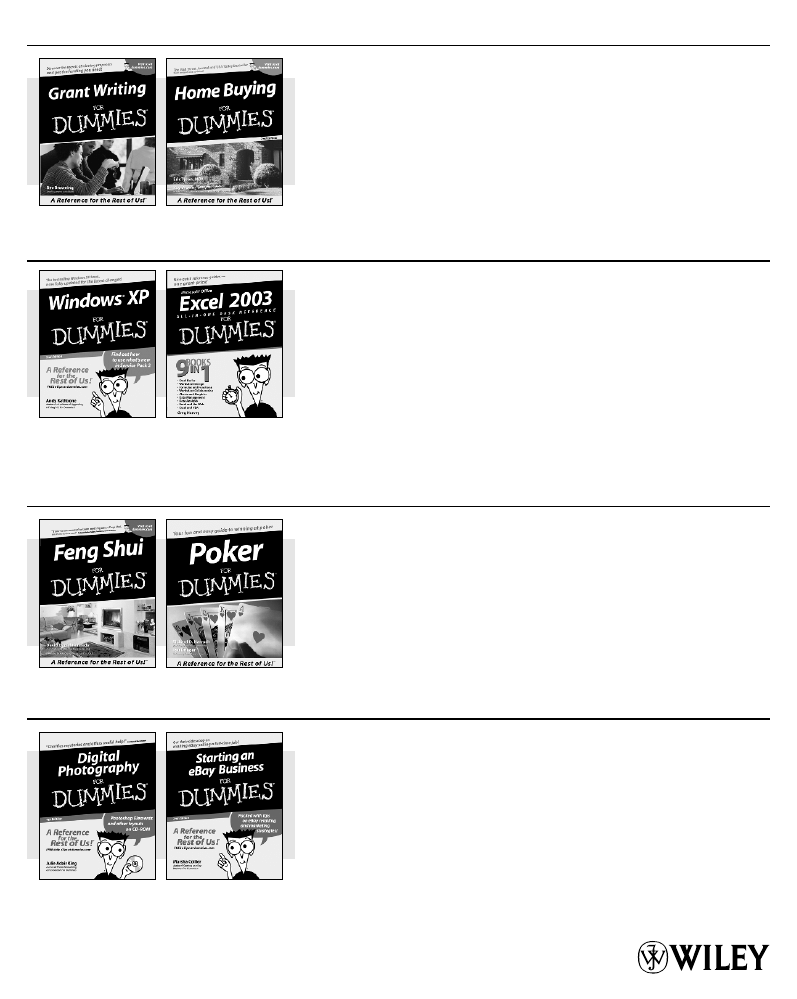
BUSINESS, CAREERS & PERSONAL FINANCE
Also available:
⻬
Accounting For Dummies
†
0-7645-5314-3
⻬
Business Plans Kit For Dummies
†
0-7645-5365-8
⻬
Cover Letters For Dummies
0-7645-5224-4
⻬
Frugal Living For Dummies
0-7645-5403-4
⻬
Leadership For Dummies
0-7645-5176-0
⻬
Managing For Dummies
0-7645-1771-6
⻬
Marketing For Dummies
0-7645-5600-2
⻬
Personal Finance For Dummies *
0-7645-2590-5
⻬
Project Management For Dummies
0-7645-5283-X
⻬
Resumes For Dummies
†
0-7645-5471-9
⻬
Selling For Dummies
0-7645-5363-1
⻬
Small Business Kit For Dummies *
†
0-7645-5093-4
Also available:
⻬
Bass Guitar For Dummies
0-7645-2487-9
⻬
Diabetes Cookbook For Dummies
0-7645-5230-9
⻬
Gardening For Dummies *
0-7645-5130-2
⻬
Guitar For Dummies
0-7645-5106-X
⻬
Holiday Decorating For Dummies
0-7645-2570-0
⻬
Home Improvement All-in-One
For Dummies
0-7645-5680-0
⻬
Knitting For Dummies
0-7645-5395-X
⻬
Piano For Dummies
0-7645-5105-1
⻬
Puppies For Dummies
0-7645-5255-4
⻬
Scrapbooking For Dummies
0-7645-7208-3
⻬
Senior Dogs For Dummies
0-7645-5818-8
⻬
Singing For Dummies
0-7645-2475-5
⻬
30-Minute Meals For Dummies
0-7645-2589-1
FOOD, HOME, GARDEN, HOBBIES, MUSIC & PETS
0-7645-5307-0
0-7645-5331-3 *
†
0-7645-5295-3
0-7645-5232-5
Available wherever books are sold. For more information or to order direct: U.S. customers visit www.dummies.com or call 1-877-762-2974.
U.K. customers visit www.wileyeurope.com or call 0800 243407. Canadian customers visit www.wiley.ca or call 1-800-567-4797.
HOME & BUSINESS COMPUTER BASICS
Also available:
⻬
ACT! 6 For Dummies
0-7645-2645-6
⻬
iLife ‘04 All-in-One Desk Reference
For Dummies
0-7645-7347-0
⻬
iPAQ For Dummies
0-7645-6769-1
⻬
Mac OS X Panther Timesaving
Techniques For Dummies
0-7645-5812-9
⻬
Macs For Dummies
0-7645-5656-8
⻬
Microsoft Money 2004 For Dummies
0-7645-4195-1
⻬
Office 2003 All-in-One Desk Reference
For Dummies
0-7645-3883-7
⻬
Outlook 2003 For Dummies
0-7645-3759-8
⻬
PCs For Dummies
0-7645-4074-2
⻬
TiVo For Dummies
0-7645-6923-6
⻬
Upgrading and Fixing PCs For Dummies
0-7645-1665-5
⻬
Windows XP Timesaving Techniques
For Dummies
0-7645-3748-2
0-7645-4074-2
0-7645-3758-X
Also available:
⻬
2005 Online Shopping Directory
For Dummies
0-7645-7495-7
⻬
CD & DVD Recording For Dummies
0-7645-5956-7
⻬
eBay For Dummies
0-7645-5654-1
⻬
Fighting Spam For Dummies
0-7645-5965-6
⻬
Genealogy Online For Dummies
0-7645-5964-8
⻬
Google For Dummies
0-7645-4420-9
⻬
Home Recording For Musicians
For Dummies
0-7645-1634-5
⻬
The Internet For Dummies
0-7645-4173-0
⻬
iPod & iTunes For Dummies
0-7645-7772-7
⻬
Preventing Identity Theft For Dummies
0-7645-7336-5
⻬
Pro Tools All-in-One Desk Reference
For Dummies
0-7645-5714-9
⻬
Roxio Easy Media Creator For Dummies
0-7645-7131-1
INTERNET & DIGITAL MEDIA
0-7645-1664-7
0-7645-6924-4
* Separate Canadian edition also available
†
Separate U.K. edition also available
34_772704 bob.qxp 3/23/06 9:32 PM Page 369
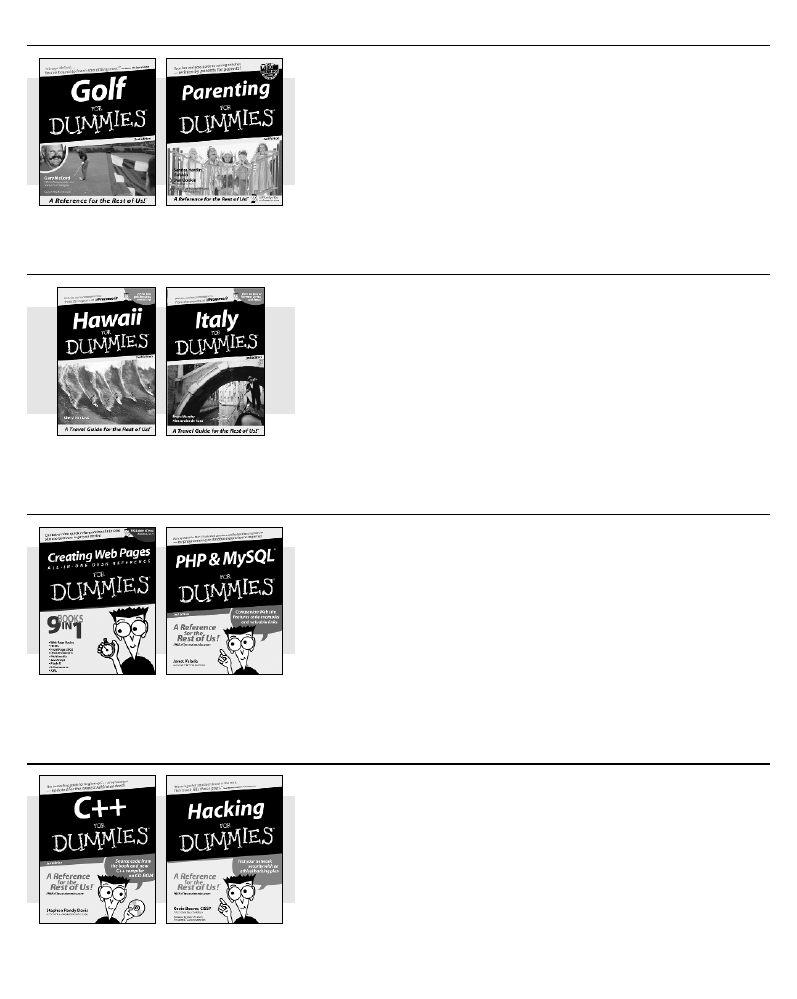
Also available:
⻬
Adobe Acrobat 6 PDF For Dummies
0-7645-3760-1
⻬
Building a Web Site For Dummies
0-7645-7144-3
⻬
Dreamweaver MX 2004 For Dummies
0-7645-4342-3
⻬
FrontPage 2003 For Dummies
0-7645-3882-9
⻬
HTML 4 For Dummies
0-7645-1995-6
⻬
Illustrator
CS
For Dummies
0-7645-4084-X
⻬
Macromedia Flash MX 2004 For Dummies
0-7645-4358-X
⻬
Photoshop 7 All-in-One Desk
Reference For Dummies
0-7645-1667-1
⻬
Photoshop
CS
Timesaving Techniques
For Dummies
0-7645-6782-9
⻬
PHP 5 For Dummies
0-7645-4166-8
⻬
PowerPoint 2003 For Dummies
0-7645-3908-6
⻬
QuarkXPress 6 For Dummies
0-7645-2593-X
SPORTS, FITNESS, PARENTING, RELIGION & SPIRITUALITY
Also available:
⻬
Adoption For Dummies
0-7645-5488-3
⻬
Basketball For Dummies
0-7645-5248-1
⻬
The Bible For Dummies
0-7645-5296-1
⻬
Buddhism For Dummies
0-7645-5359-3
⻬
Catholicism For Dummies
0-7645-5391-7
⻬
Hockey For Dummies
0-7645-5228-7
⻬
Judaism For Dummies
0-7645-5299-6
⻬
Martial Arts For Dummies
0-7645-5358-5
⻬
Pilates For Dummies
0-7645-5397-6
⻬
Religion For Dummies
0-7645-5264-3
⻬
Teaching Kids to Read For Dummies
0-7645-4043-2
⻬
Weight Training For Dummies
0-7645-5168-X
⻬
Yoga For Dummies
0-7645-5117-5
Also available:
⻬
Alaska For Dummies
0-7645-1761-9
⻬
Arizona For Dummies
0-7645-6938-4
⻬
Cancún and the Yucatán For Dummies
0-7645-2437-2
⻬
Cruise Vacations For Dummies
0-7645-6941-4
⻬
Europe For Dummies
0-7645-5456-5
⻬
Ireland For Dummies
0-7645-5455-7
⻬
Las Vegas For Dummies
0-7645-5448-4
⻬
London For Dummies
0-7645-4277-X
⻬
New York City For Dummies
0-7645-6945-7
⻬
Paris For Dummies
0-7645-5494-8
⻬
RV Vacations For Dummies
0-7645-5443-3
⻬
Walt Disney World & Orlando For Dummies
0-7645-6943-0
TRAVEL
GRAPHICS, DESIGN & WEB DEVELOPMENT
0-7645-5146-9
0-7645-5418-2
0-7645-5438-7
0-7645-5453-0
0-7645-4345-8
0-7645-5589-8
Also available:
⻬
A+ Certification For Dummies
0-7645-4187-0
⻬
Access 2003 All-in-One Desk
Reference For Dummies
0-7645-3988-4
⻬
Beginning Programming For Dummies
0-7645-4997-9
⻬
C For Dummies
0-7645-7068-4
⻬
Firewalls For Dummies
0-7645-4048-3
⻬
Home Networking For Dummies
0-7645-42796
⻬
Network Security For Dummies
0-7645-1679-5
⻬
Networking For Dummies
0-7645-1677-9
⻬
TCP/IP For Dummies
0-7645-1760-0
⻬
VBA For Dummies
0-7645-3989-2
⻬
Wireless All In-One Desk Reference
For Dummies
0-7645-7496-5
⻬
Wireless Home Networking For Dummies
0-7645-3910-8
NETWORKING, SECURITY, PROGRAMMING & DATABASES
0-7645-6852-3
0-7645-5784-X
34_772704 bob.qxp 3/23/06 9:32 PM Page 370
Document Outline
- 1..pdf
- 2..pdf
- 3..pdf
- 4..pdf
- 5..pdf
- 6..pdf
- 7..pdf
- 8..pdf
- 9..pdf
- 10..pdf
- 11..pdf
- 12..pdf
- 13..pdf
- 14..pdf
- 15..pdf
- 161120.pdf
- 161120_001.pdf
- 161120_002.pdf
- 161120_003.pdf
- 161120_004.pdf
- 161120_005.pdf
- 161120_006.pdf
- 161120_007.pdf
- 161120_008.pdf
- 161120_009.pdf
- 161120_010.pdf
- 161120_011.pdf
- 161120_012.pdf
- 161120_013.pdf
- 161120_014.pdf
- 161120_015.pdf
- 161120_016.pdf
- 161120_017.pdf
- 161120_018.pdf
- 161120_019.pdf
- 161120_020.pdf
- 161120_021.pdf
- 161120_022.pdf
- 161120_023.pdf
- 161120_024.pdf
- 161120_025.pdf
- 161120_026.pdf
- 161120_027.pdf
- 161120_028.pdf
- 161120_029.pdf
- 161120_030.pdf
- 161120_031.pdf
- 161120_032.pdf
- 161120_033.pdf
- 161120_034.pdf
- 161120_035.pdf
- 161120_036.pdf
- 161120_037.pdf
- 161120_038.pdf
- 161120_039.pdf
- 161120_040.pdf
- 161120_041.pdf
- 161120_042.pdf
- 161120_043.pdf
- 161120_044.pdf
- 161120_045.pdf
- 161120_046.pdf
- 161120_047.pdf
- 161120_048.pdf
- 161120_049.pdf
- 161120_050.pdf
- 161120_051.pdf
- 161120_052.pdf
- 161120_053.pdf
- 161120_054.pdf
- 161120_055.pdf
- 161120_056.pdf
- 161120_057.pdf
- 161120_058.pdf
- 161120_059.pdf
- 161120_060.pdf
- 161120_061.pdf
- 161120_062.pdf
- 161120_063.pdf
- 161120_064.pdf
- 161120_065.pdf
- 161120_066.pdf
- 161120_067.pdf
- 161120_068.pdf
- 161120_069.pdf
- 161120_070.pdf
- 161120_071.pdf
- 161120_072.pdf
- 161120_073.pdf
- 161120_074.pdf
- 161120_075.pdf
- 161120_076.pdf
- 161120_077.pdf
- 161120_078.pdf
- 161120_079.pdf
- 161120_080.pdf
- 161120_081.pdf
- 161120_082.pdf
- 161120_083.pdf
- 161120_084.pdf
- 161120_085.pdf
- 161120_086.pdf
- 161120_087.pdf
- 161120_088.pdf
- 161120_089.pdf
- 161120_090.pdf
- 161120_091.pdf
- 161120_092.pdf
- 161120_093.pdf
- 161120_094.pdf
- 161120_095.pdf
- 161120_096.pdf
- 161120_097.pdf
- 161120_098.pdf
- 161120_099.pdf
- 161120_100.pdf
- 161120_101.pdf
- 161120_102.pdf
- 161120_103.pdf
- 161120_104.pdf
- 161120_105.pdf
- 161120_106.pdf
- 161120_107.pdf
- 161120_108.pdf
- 161120_109.pdf
- 161120_110.pdf
- 161120_111.pdf
- 161120_112.pdf
- 161120_113.pdf
- 161120_114.pdf
- 161120_115.pdf
- 161120_116.pdf
- 161120_117.pdf
- 161120_118.pdf
- 161120_119.pdf
- 161120_120.pdf
- 161120_121.pdf
- 161120_122.pdf
- 161120_123.pdf
- 161120_124.pdf
- 161120_125.pdf
- 161120_126.pdf
- 161120_127.pdf
- 161120_128.pdf
- 161120_129.pdf
- 161120_130.pdf
- 161120_131.pdf
- 161120_132.pdf
- 161120_133.pdf
- 161120_134.pdf
- 161120_135.pdf
- 161120_136.pdf
- 161120_137.pdf
- 161120_138.pdf
- 161120_139.pdf
- 161120_140.pdf
- 161120_141.pdf
- 161120_142.pdf
- 161120_143.pdf
- 161120_144.pdf
- 161120_145.pdf
- 161120_146.pdf
- 161120_147.pdf
- 161120_148.pdf
- 161120_149.pdf
- 161120_150.pdf
- 161120_151.pdf
- 161120_152.pdf
- 161120_153.pdf
- 161120_154.pdf
- 161120_155.pdf
- 161120_156.pdf
- 161120_157.pdf
- 161120_158.pdf
- 161120_159.pdf
- 161120_160.pdf
- 161120_161.pdf
- 161120_162.pdf
- 161120_163.pdf
- 161120_164.pdf
- 161120_165.pdf
- 161120_166.pdf
- 161120_167.pdf
- 161120_168.pdf
- 161120_169.pdf
- 161120_170.pdf
- 161120_171.pdf
- 161120_172.pdf
- 161120_173.pdf
- 161120_174.pdf
- 161120_175.pdf
- 161120_176.pdf
- 161120_177.pdf
- 161120_178.pdf
- 161120_179.pdf
- 161120_180.pdf
- 161120_181.pdf
- 161120_182.pdf
- 161120_183.pdf
- 161120_184.pdf
- 161120_185.pdf
- 161120_186.pdf
- 161120_187.pdf
- 161120_188.pdf
- 161120_189.pdf
- 161120_190.pdf
- 161120_191.pdf
- 161120_192.pdf
- 161120_193.pdf
- 161120_194.pdf
- 161120_195.pdf
- 161120_196.pdf
- 161120_197.pdf
- 161120_198.pdf
- 161120_199.pdf
- 161120_200.pdf
- 161120_201.pdf
- 161120_202.pdf
- 161120_203.pdf
- 161120_204.pdf
- 161120_205.pdf
- 161120_206.pdf
- 161120_207.pdf
- 161120_208.pdf
- 161120_209.pdf
- 161120_210.pdf
- 161120_211.pdf
- 161120_212.pdf
- 161120_213.pdf
- 161120_214.pdf
- 161120_215.pdf
- 161120_216.pdf
- 161120_217.pdf
- 161120_218.pdf
- 161120_219.pdf
- 161120_220.pdf
- 161120_221.pdf
- 161120_222.pdf
- 161120_223.pdf
- 161120_224.pdf
- 161120_225.pdf
- 161120_226.pdf
- 161120_227.pdf
- 161120_228.pdf
- 161120_229.pdf
- 161120_230.pdf
- 161120_231.pdf
- 161120_232.pdf
- 161120_233.pdf
- 161120_234.pdf
- 161120_235.pdf
- 161120_236.pdf
- 161120_237.pdf
- 161120_238.pdf
- 161120_239.pdf
- 161120_240.pdf
- 161120_241.pdf
- 161120_242.pdf
- 161120_243.pdf
- 161120_244.pdf
- 161120_245.pdf
- 161120_246.pdf
- 161120_247.pdf
- 161120_248.pdf
- 161120_249.pdf
- 161120_250.pdf
- 161120_251.pdf
- 161120_252.pdf
- 161120_253.pdf
- 161120_254.pdf
- 161120_255.pdf
- 161120_256.pdf
- 161120_257.pdf
- 161120_258.pdf
- 161120_259.pdf
- 161120_260.pdf
- 161120_261.pdf
- 161120_262.pdf
- 161120_263.pdf
- 161120_264.pdf
- 161120_265.pdf
- 161120_266.pdf
- 161120_267.pdf
- 161120_268.pdf
- 161120_269.pdf
- 161120_270.pdf
- 161120_271.pdf
- 161120_272.pdf
- 161120_273.pdf
- 161120_274.pdf
- 161120_275.pdf
- 161120_276.pdf
- 161120_277.pdf
- 161120_278.pdf
- 161120_279.pdf
- 161120_280.pdf
- 161120_281.pdf
- 161120_282.pdf
- 161120_283.pdf
- 161120_284.pdf
- 161120_285.pdf
- 161120_286.pdf
- 161120_287.pdf
- 161120_288.pdf
- 161120_289.pdf
- 161120_290.pdf
- 161120_291.pdf
- 161120_292.pdf
- 161120_293.pdf
- 161120_294.pdf
- 161120_295.pdf
- 161120_296.pdf
- 161120_297.pdf
- 161120_298.pdf
- 161120_299.pdf
- 161120_300.pdf
- 161120_301.pdf
- 161120_302.pdf
- 161120_303.pdf
- 161120_304.pdf
- 161120_305.pdf
- 161120_306.pdf
- 161120_307.pdf
- 161120_308.pdf
- 161120_309.pdf
- 161120_310.pdf
- 161120_311.pdf
- 161120_312.pdf
- 161120_313.pdf
- 161120_314.pdf
- 161120_315.pdf
- 161120_316.pdf
- 161120_317.pdf
- 161120_318.pdf
- 161120_319.pdf
- 161120_320.pdf
- 161120_321.pdf
- 161120_322.pdf
- 161120_323.pdf
- 161120_324.pdf
- 161120_325.pdf
- 161120_326.pdf
- 161120_327.pdf
- 161120_328.pdf
- 161120_329.pdf
- 161120_330.pdf
- 161120_331.pdf
- 161120_332.pdf
- 161120_333.pdf
- 161120_334.pdf
- 161120_335.pdf
- 161120_336.pdf
- 161120_337.pdf
- 161120_338.pdf
- 161120_339.pdf
- 161120_340.pdf
- 161120_341.pdf
- 161120_342.pdf
- 161120_343.pdf
- 161120_344.pdf
- 161120_345.pdf
- 161120_346.pdf
- 161120_347.pdf
- 161120_348.pdf
- 161120_349.pdf
- 161120_350.pdf
- 161120_351.pdf
- 161120_352.pdf
- 161120_353.pdf
- 161120_354.pdf
- 161120_355.pdf
- 161120_356.pdf
- 161120_357.pdf
- 161120_358.pdf
- 161120_359.pdf
- 161120_360.pdf
- 161120_361.pdf
- 161120_362.pdf
- 161120_363.pdf
- 161120_364.pdf
- 161120_365.pdf
- 161120_366.pdf
- 161120_367.pdf
- 161120_368.pdf
- 161120_369.pdf
Wyszukiwarka
Podobne podstrony:
Arabic For Dummies
Guitar For Dummies
CCNA for Dummies (2000)
Making Money For Dummies
Chronic Pain for Dummies
Making Money Online For Dummies
hacking for dummies [ EN ] Hacking For Dummies
Korean for Dummies Cheat Sheet
For Dummies Visual Studio NET C++ for Dummies Quick Reference Guide
Intermediate Spanish for Dummies
ps2 burning for dummies 3TRMSPJUUQW6CG2JVYD224CEHQ7EMMLDS7QIEPI
SQL FOR DUMMIES
Guitar For Dummies
Hacking For Dummies
Tcp Ip For Dummies
Ten Study Tips for Dummies
(2008) Trading Futures For Dummies (Isbn 0470287225)
Dating And Seduction For Dummies
więcej podobnych podstron